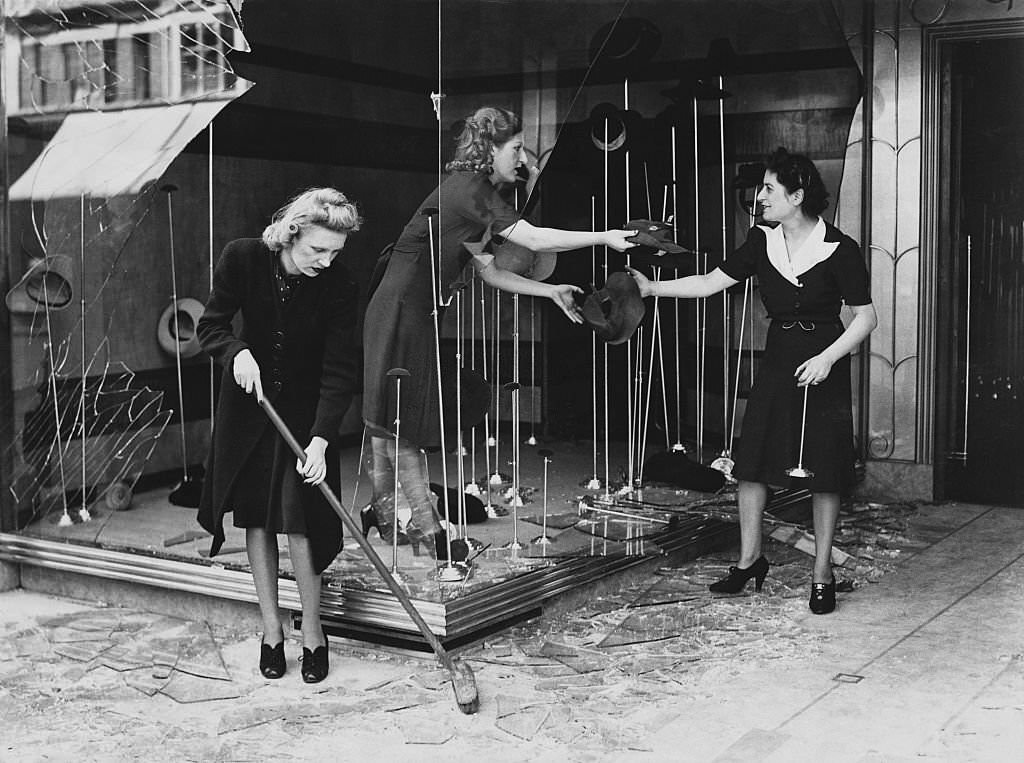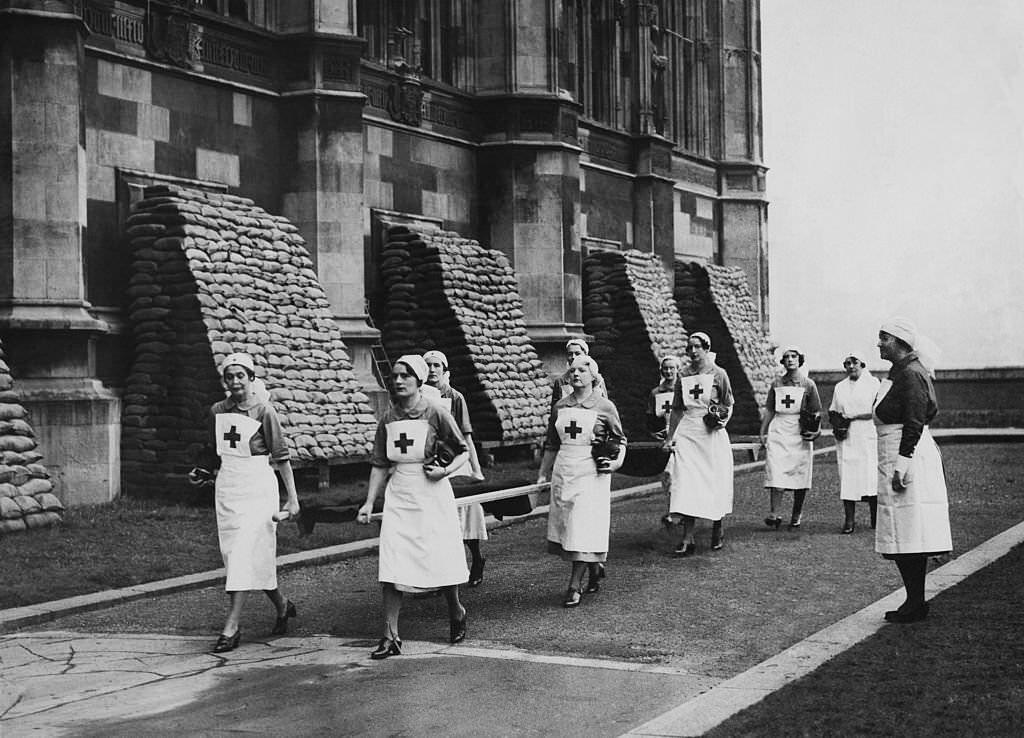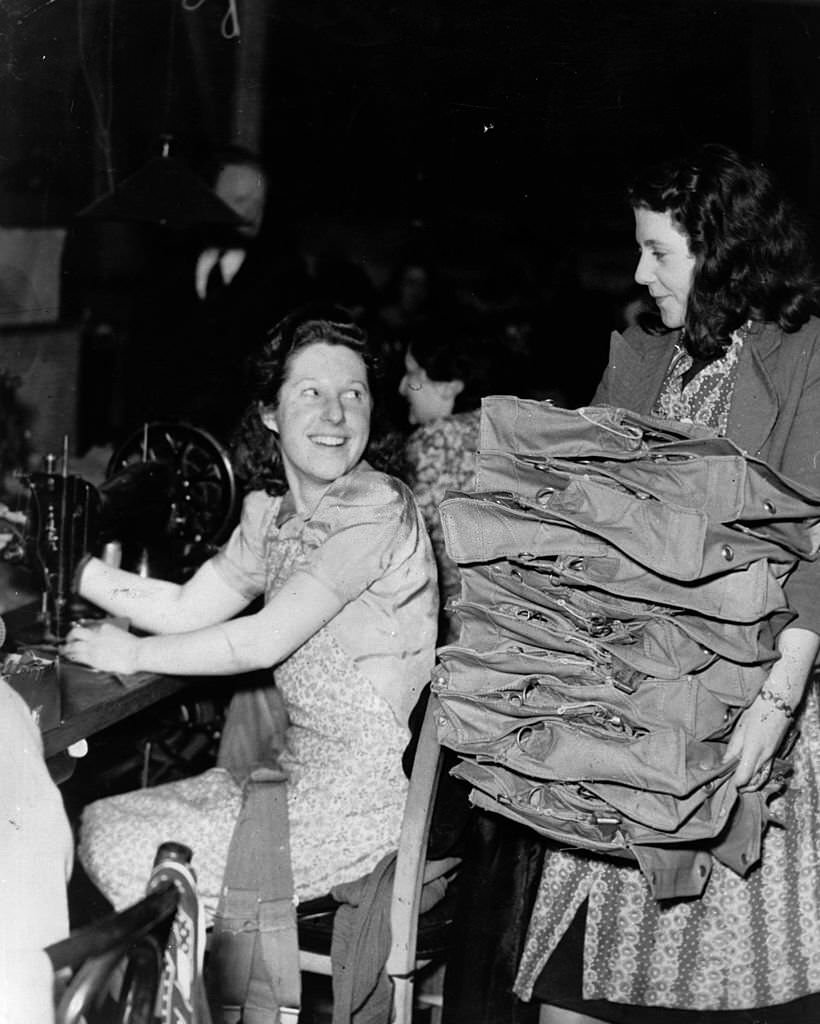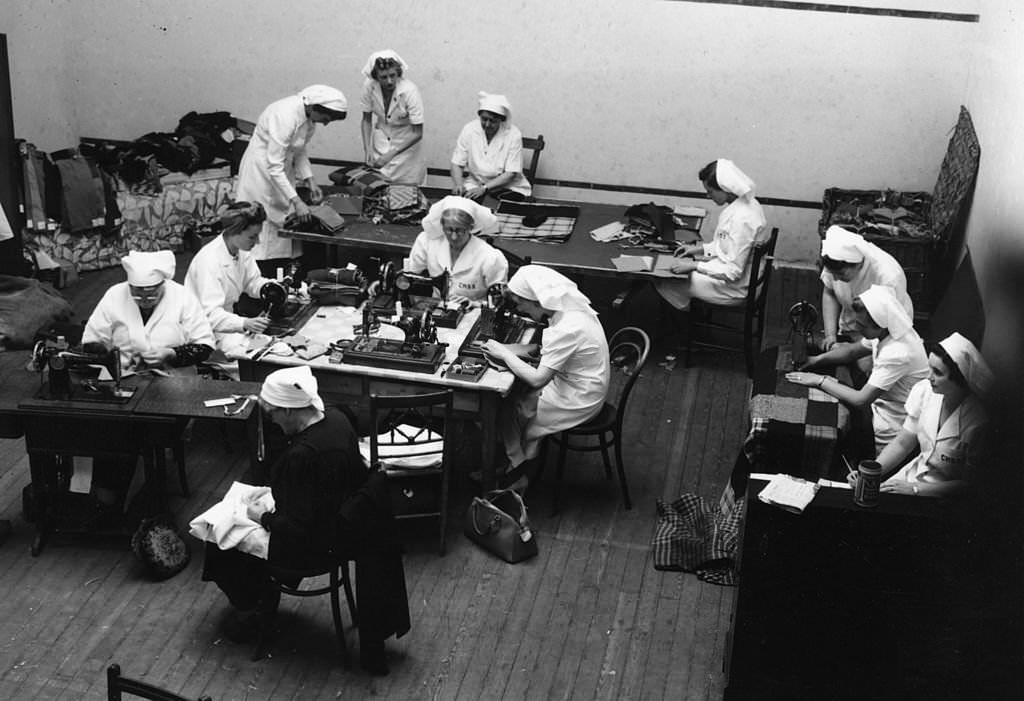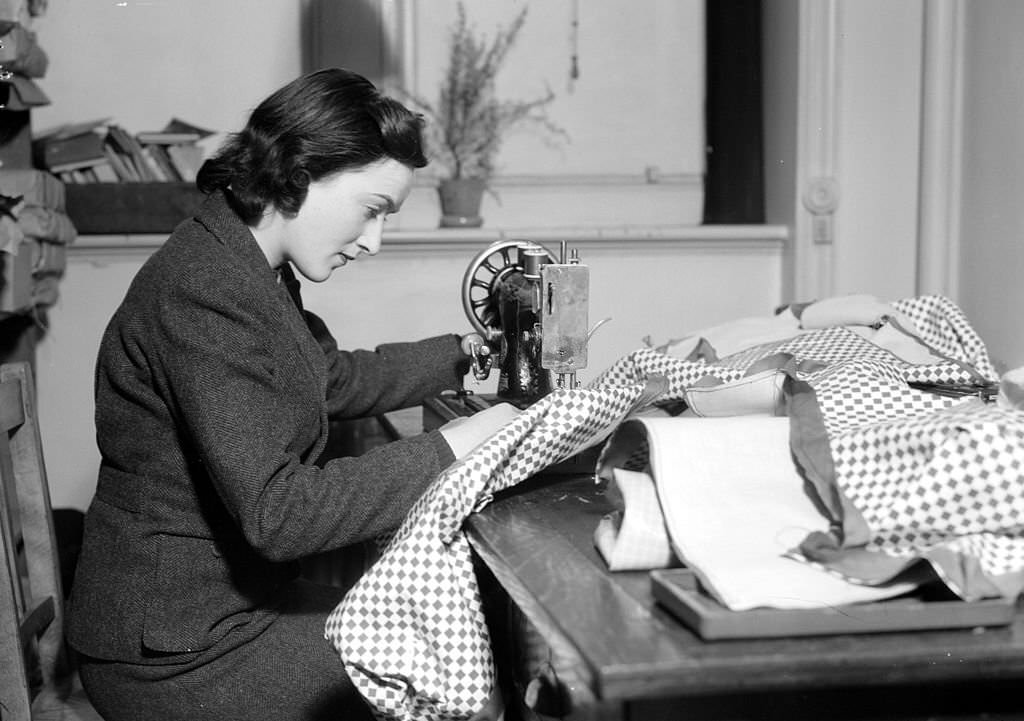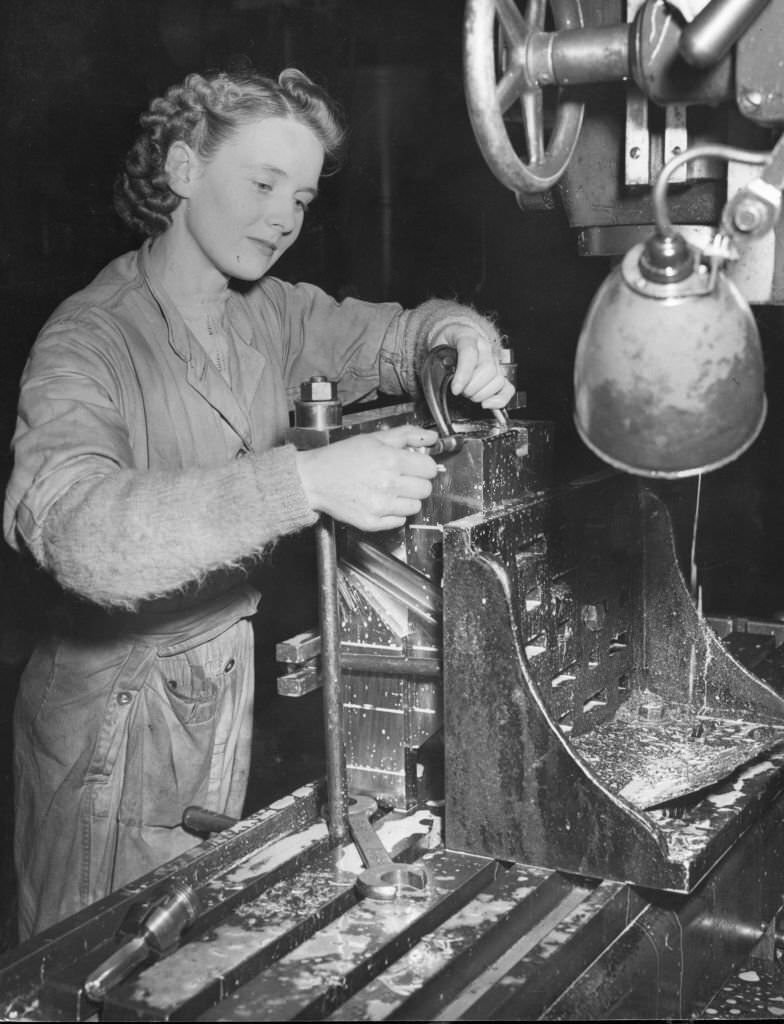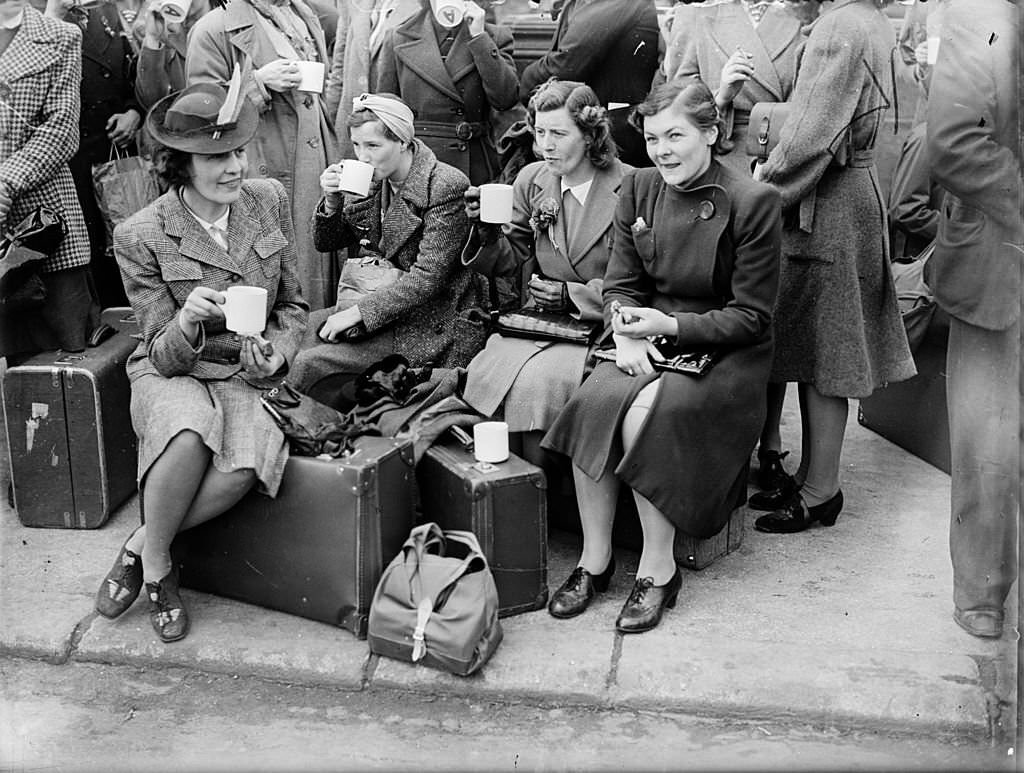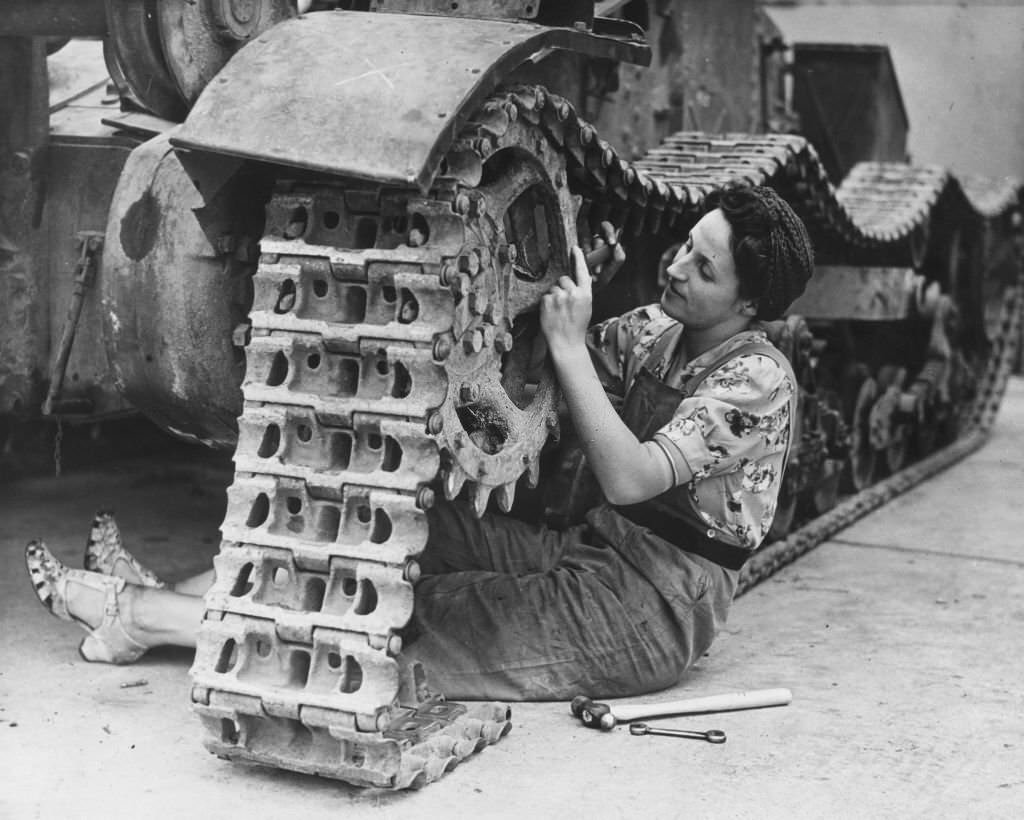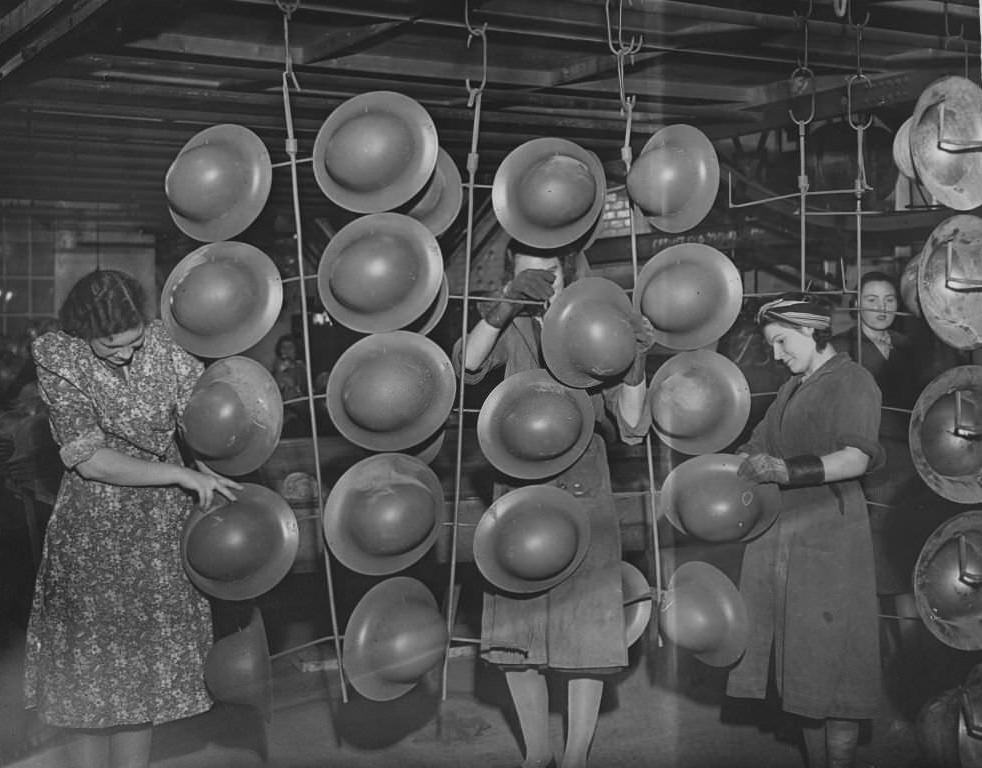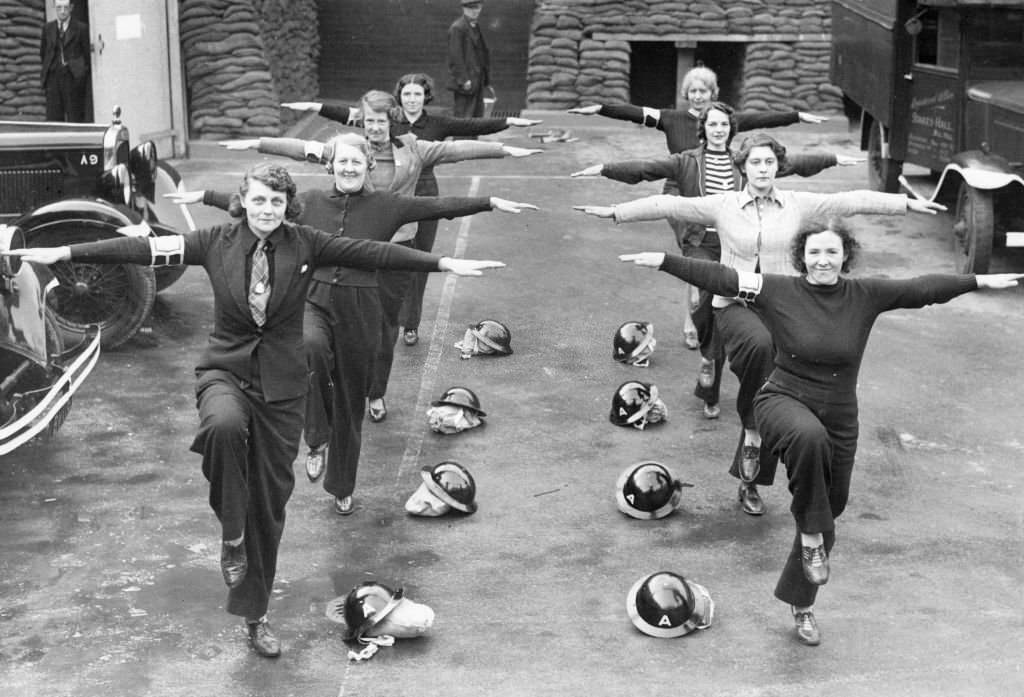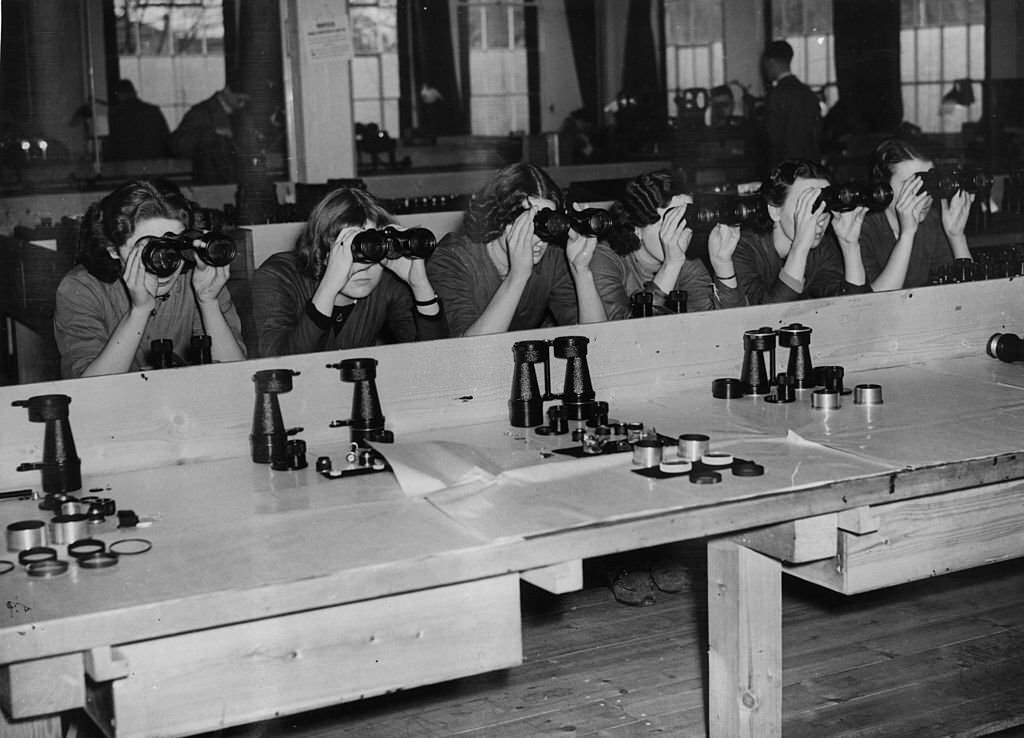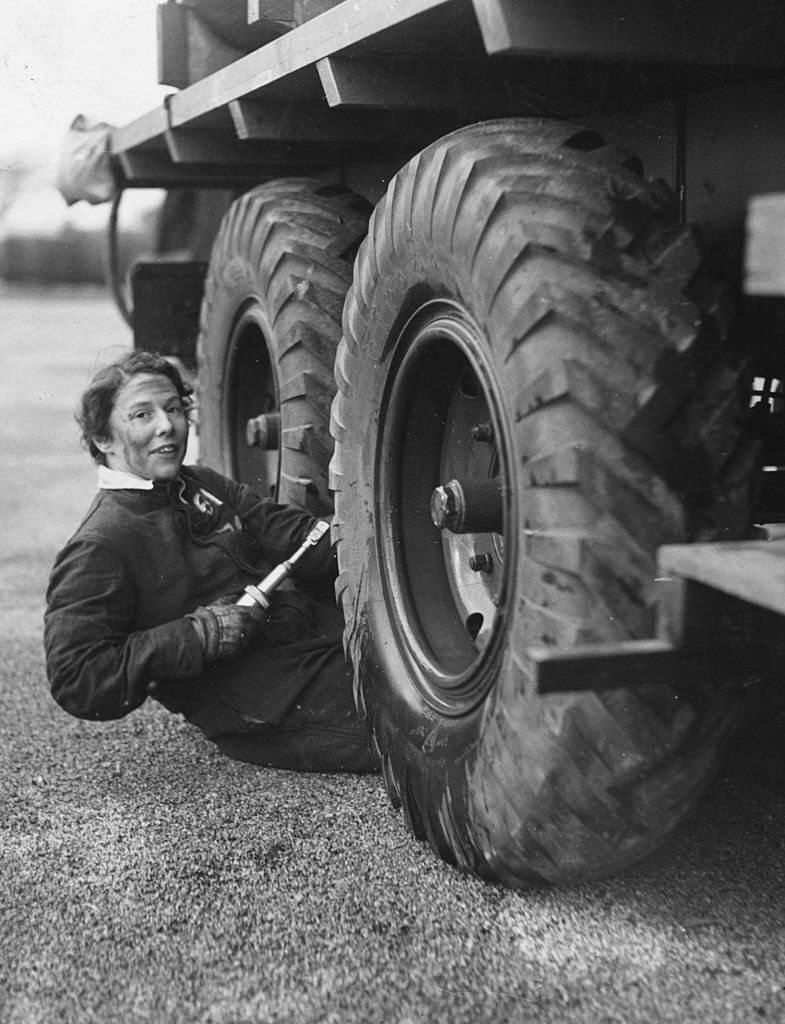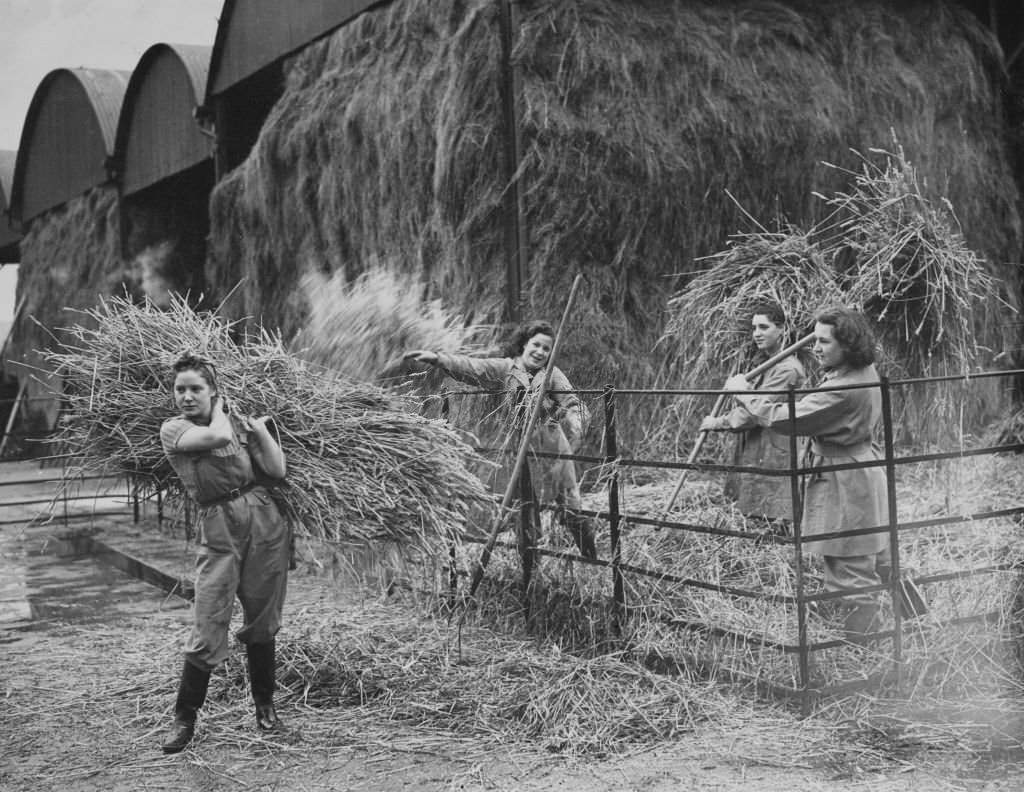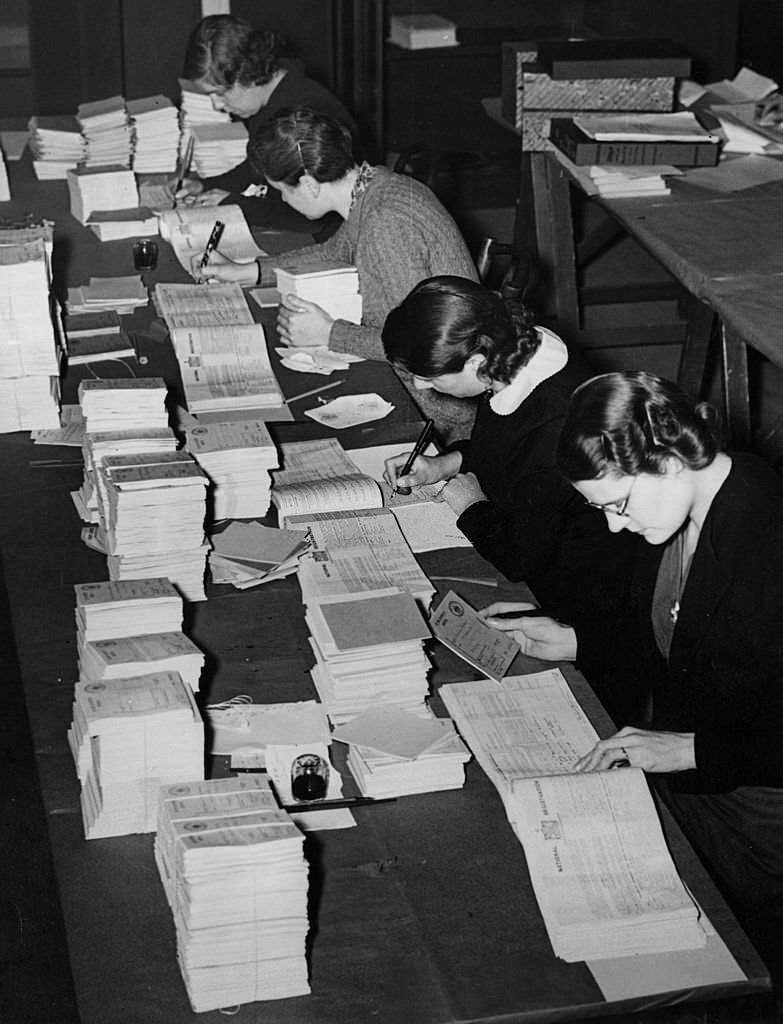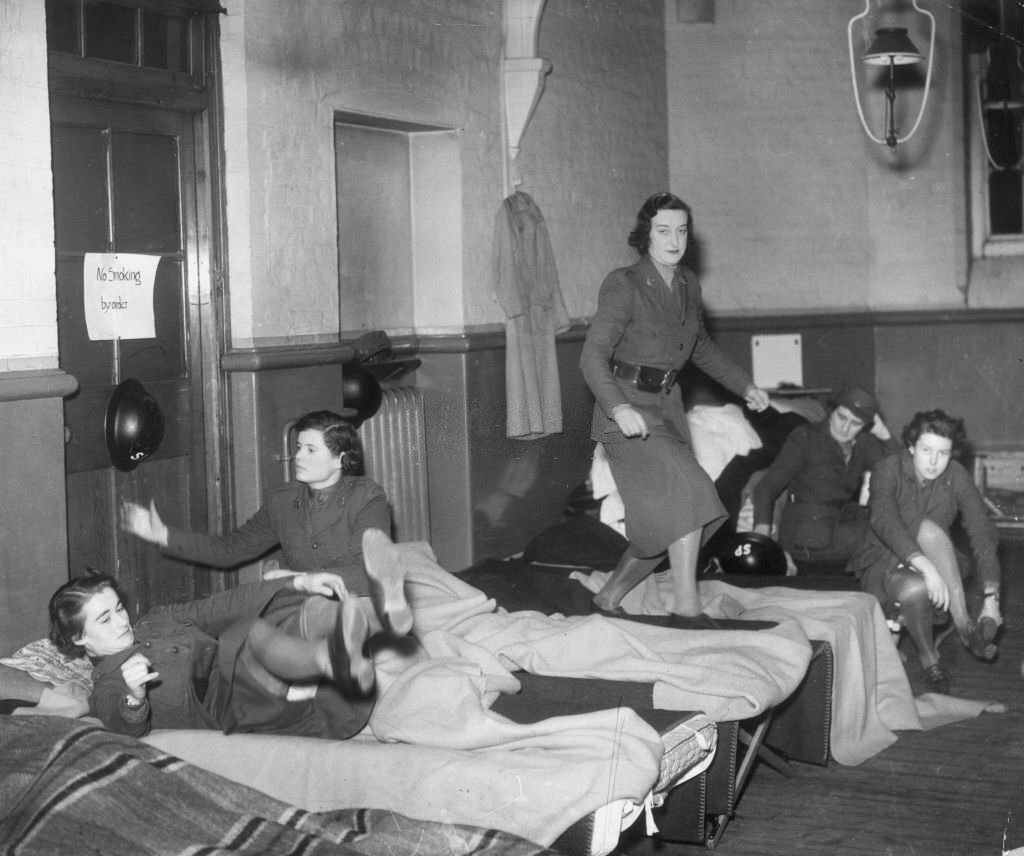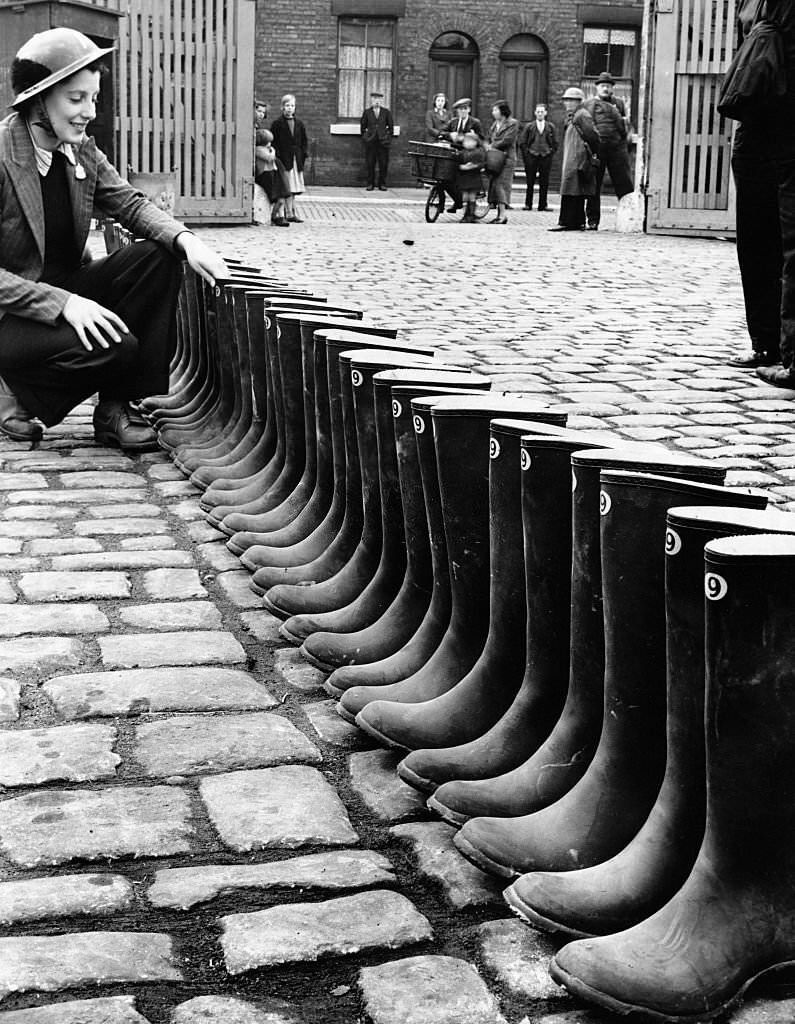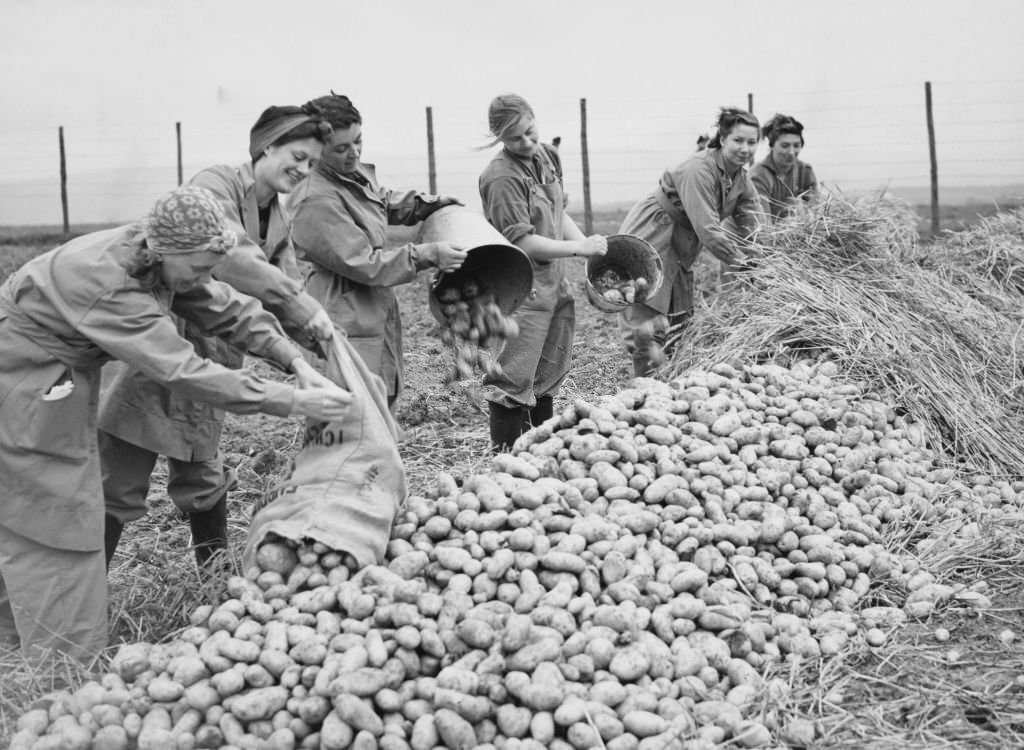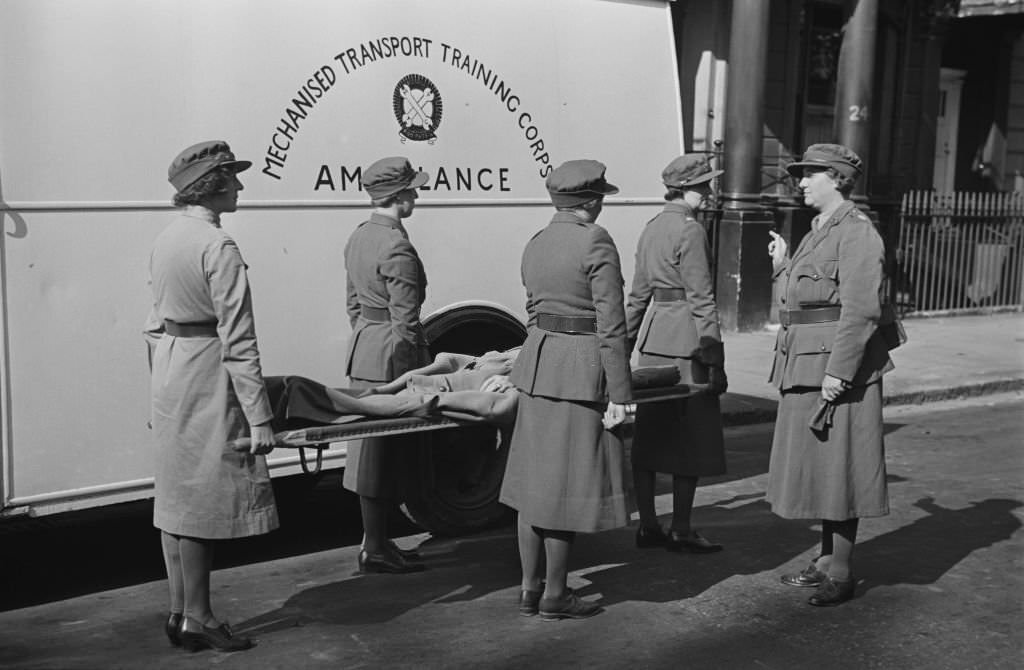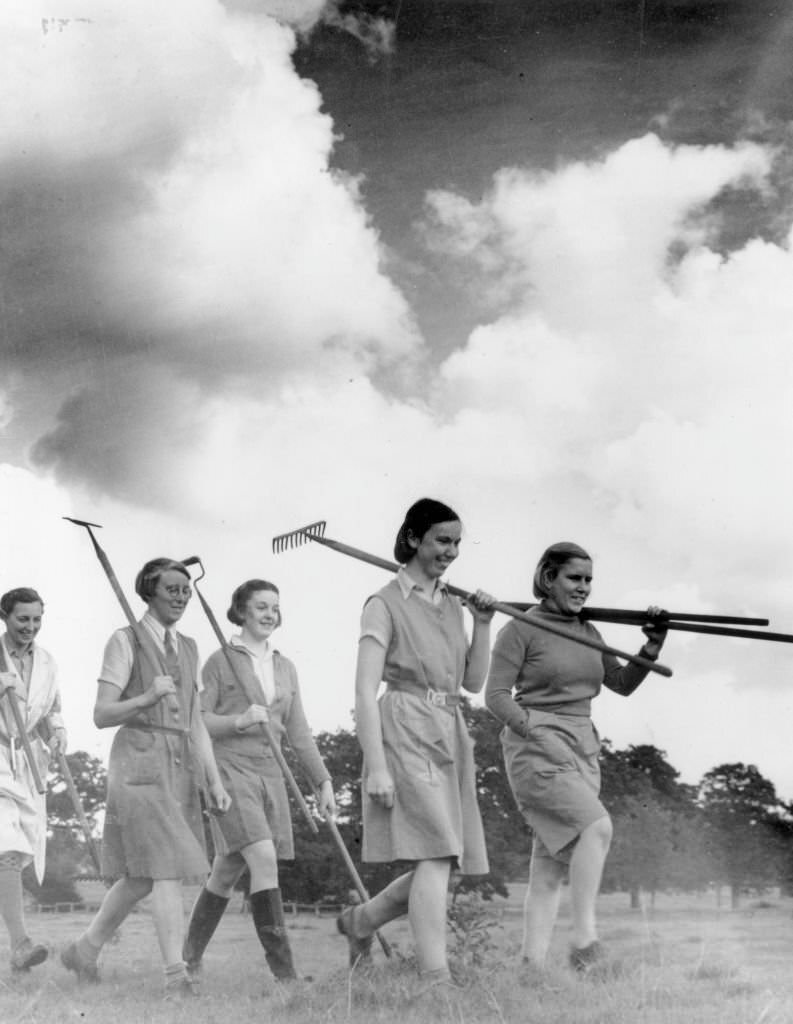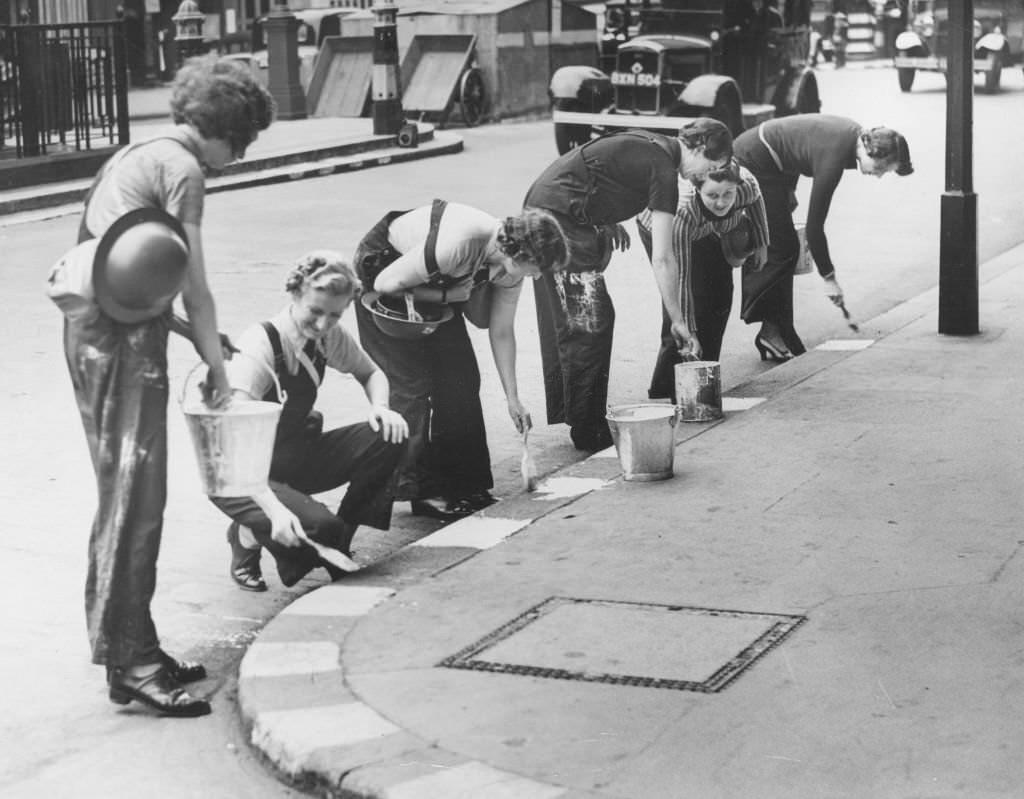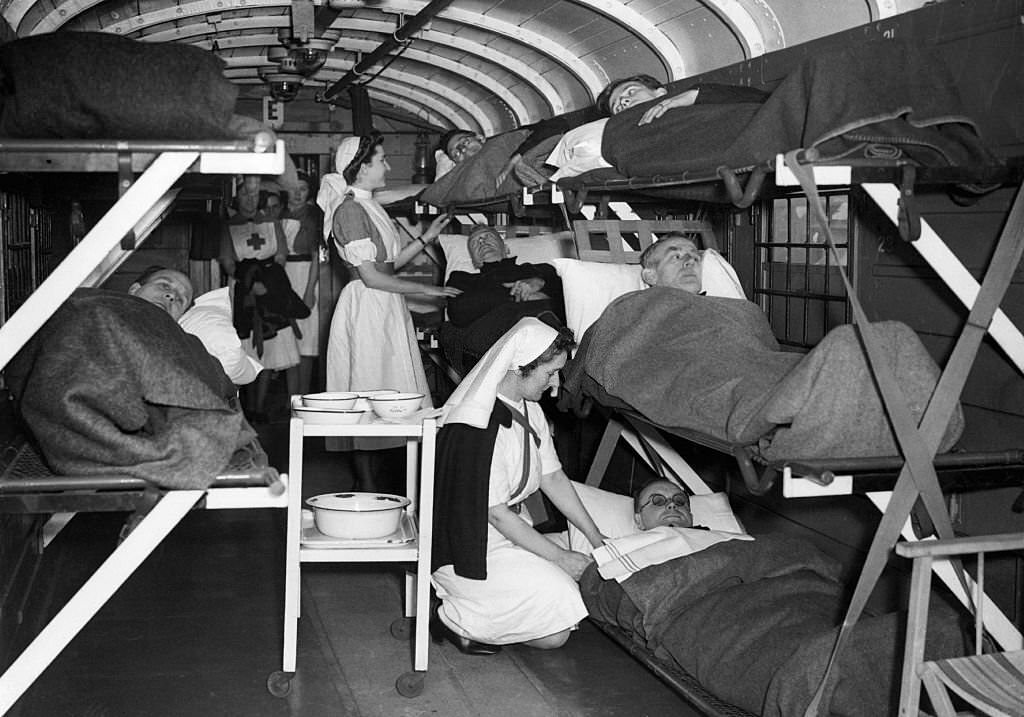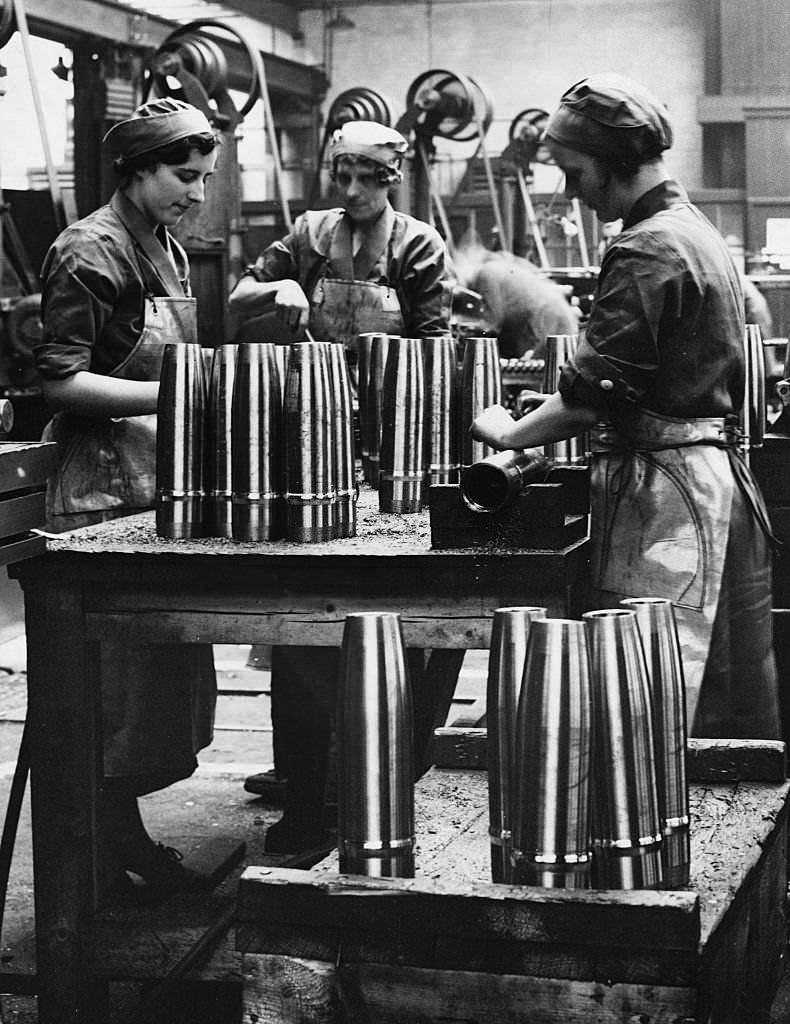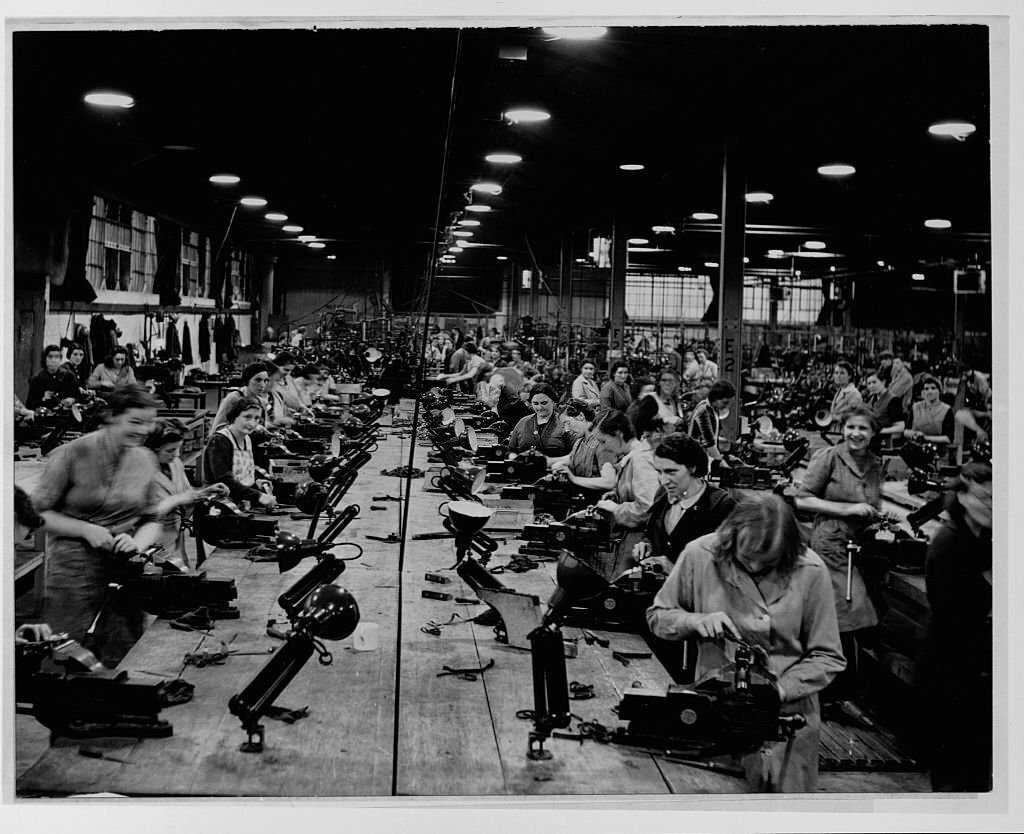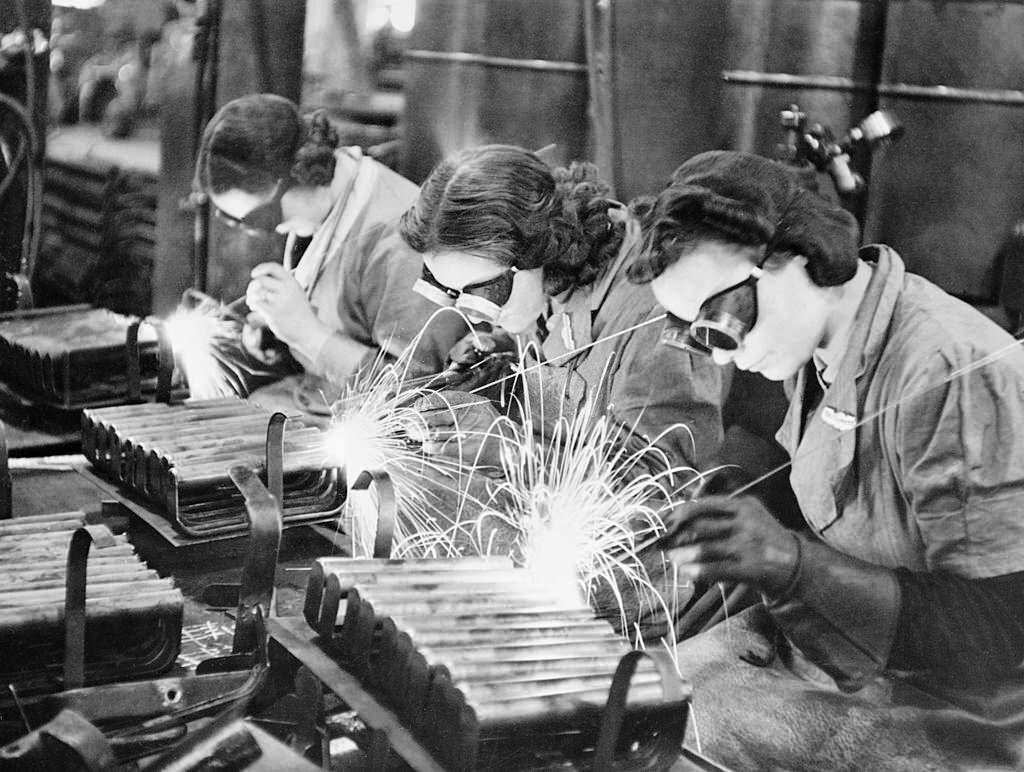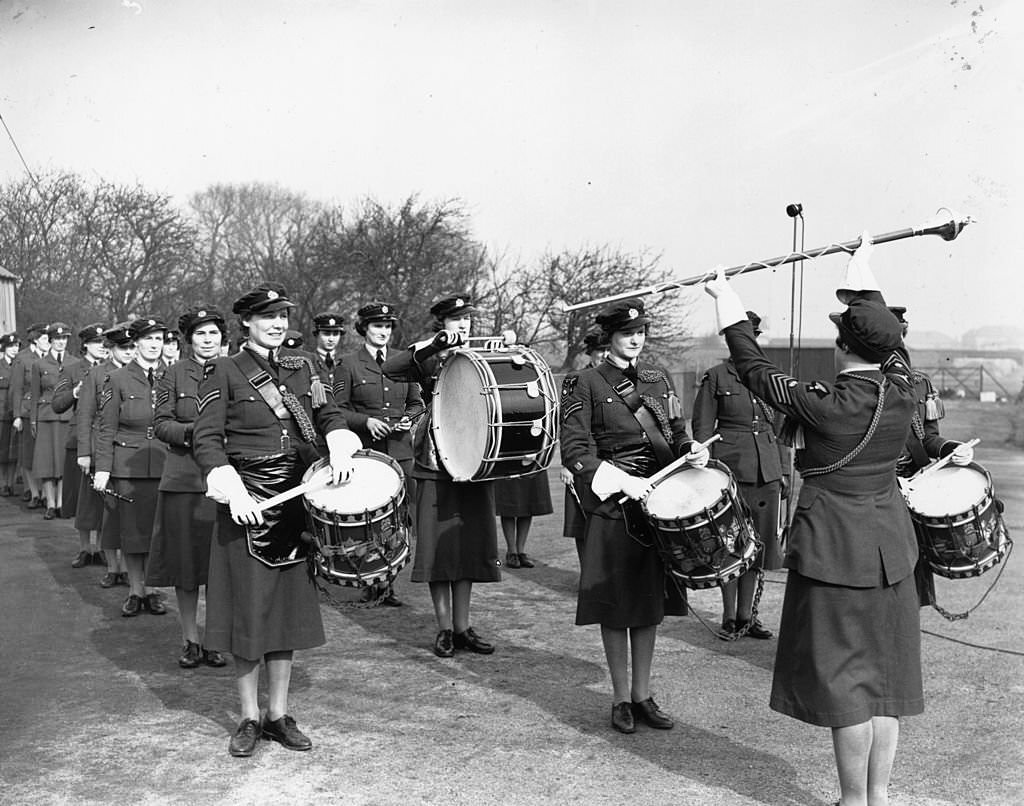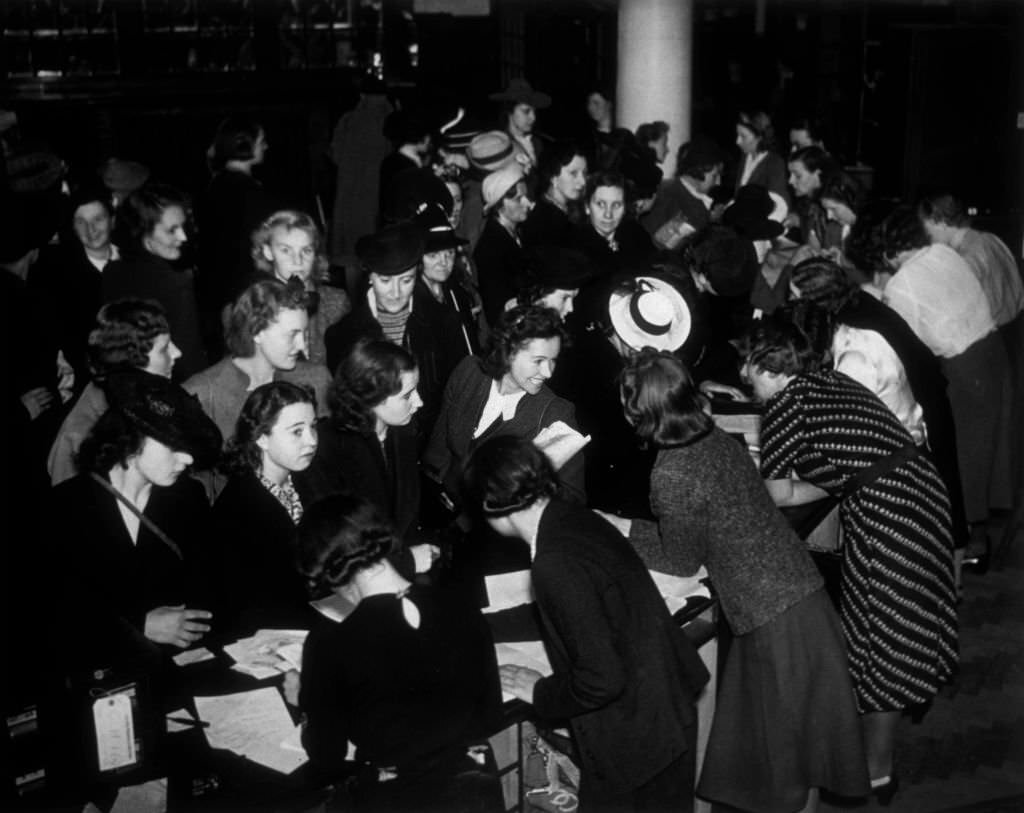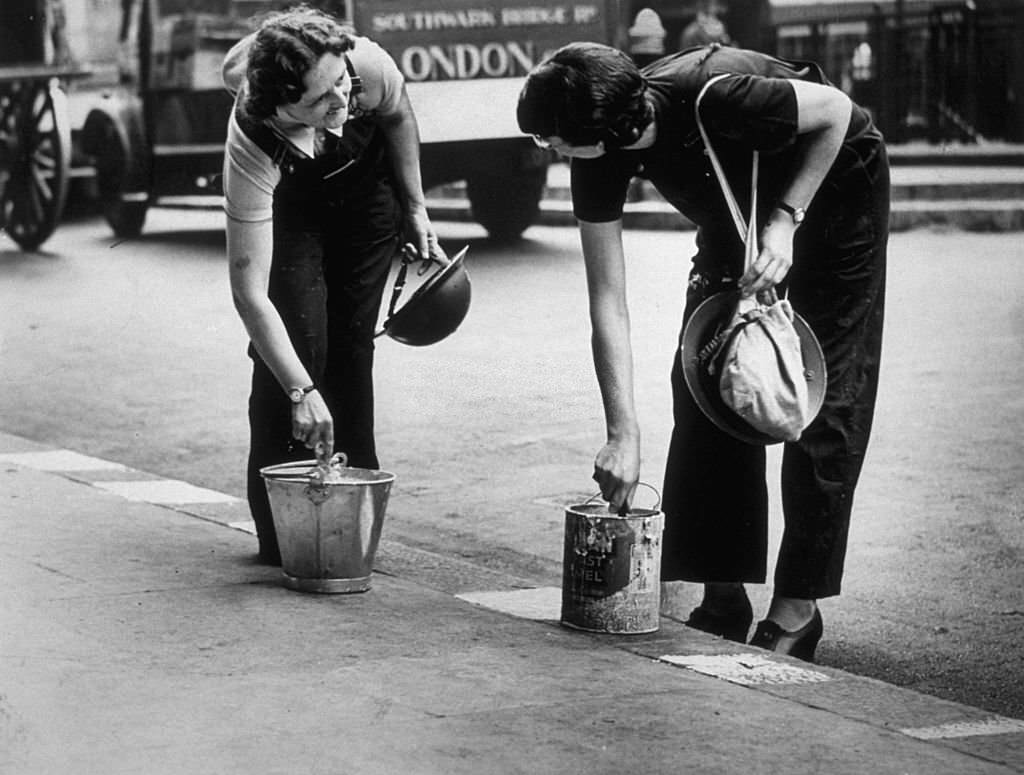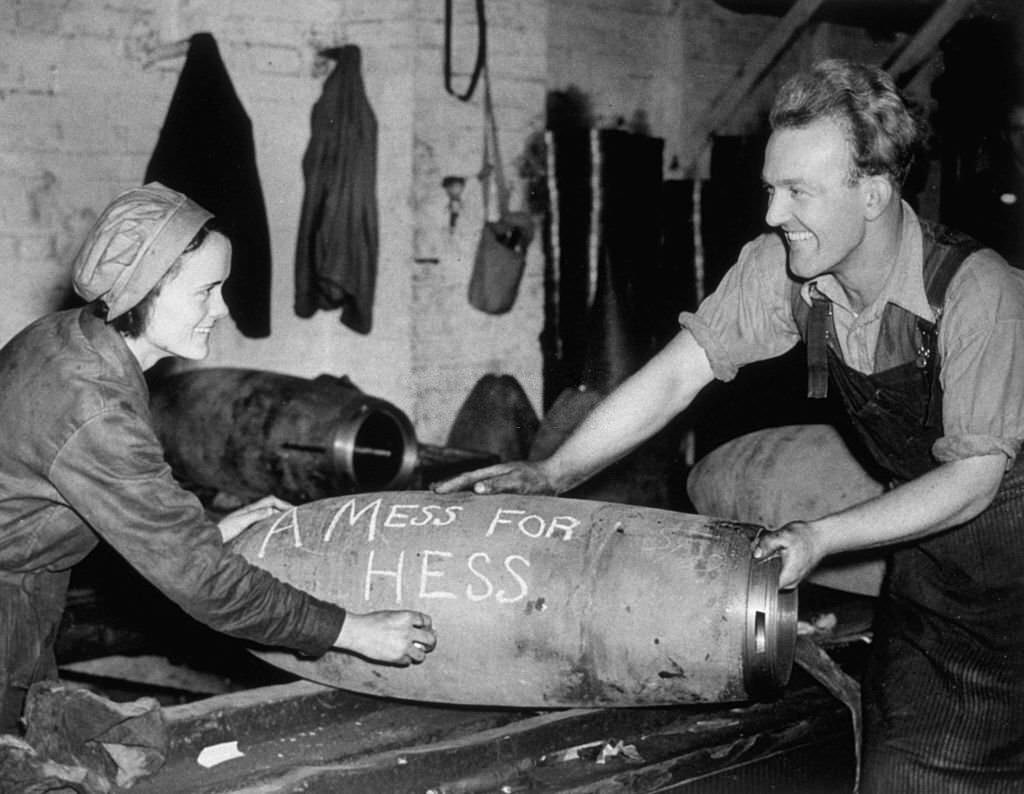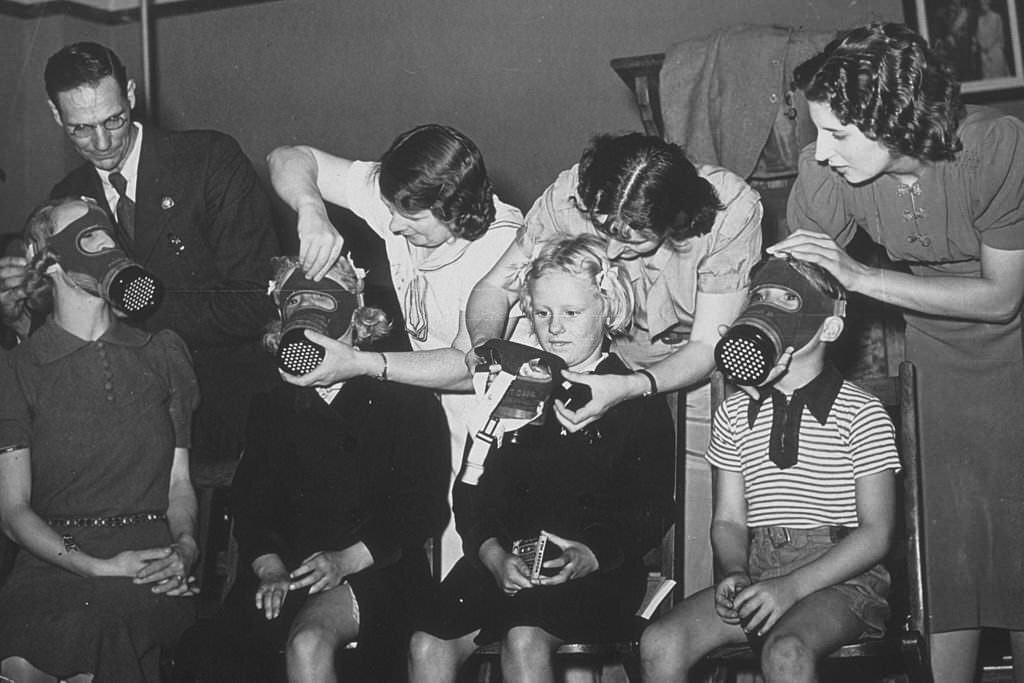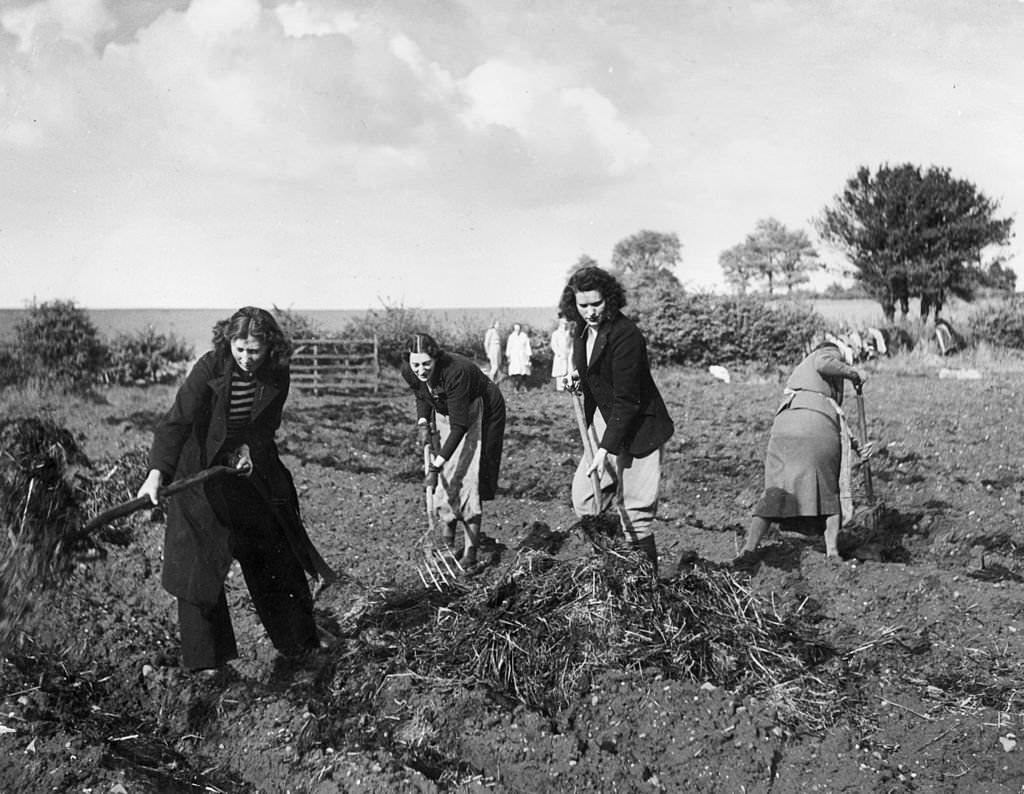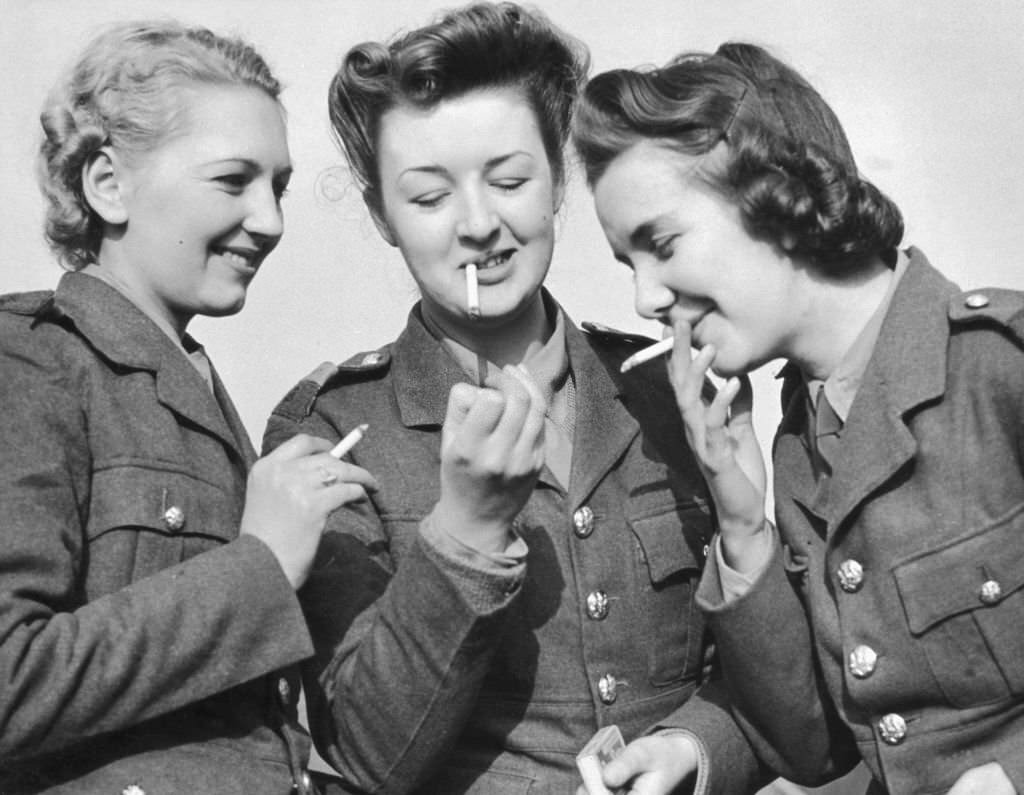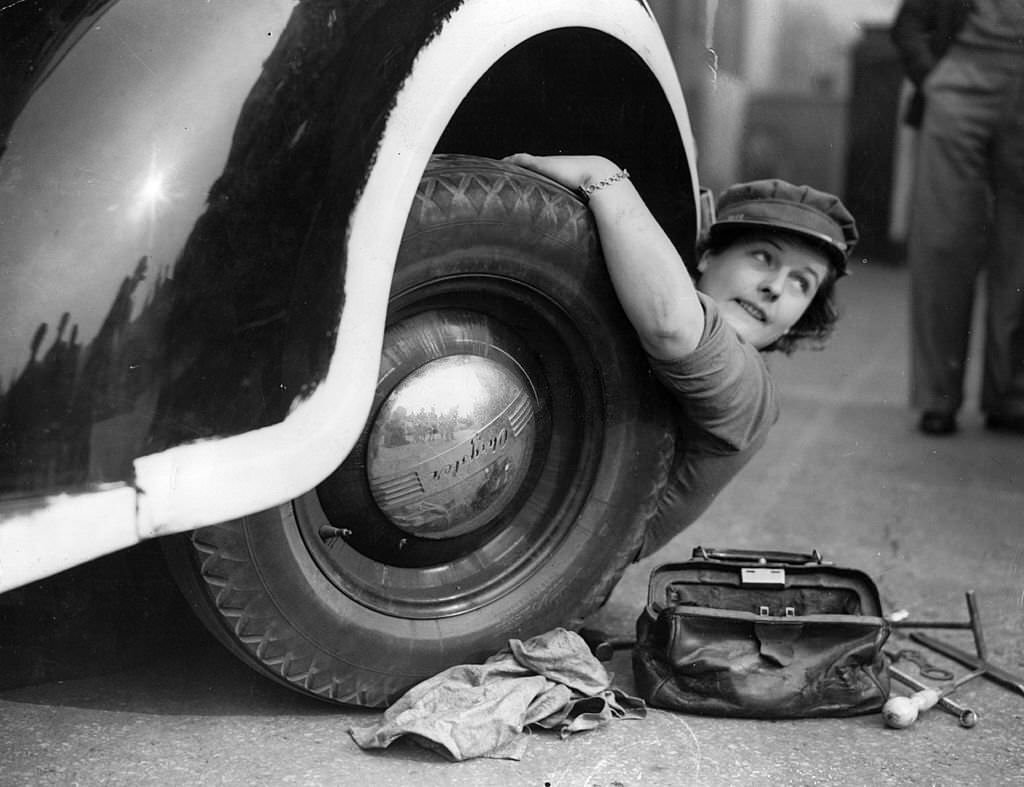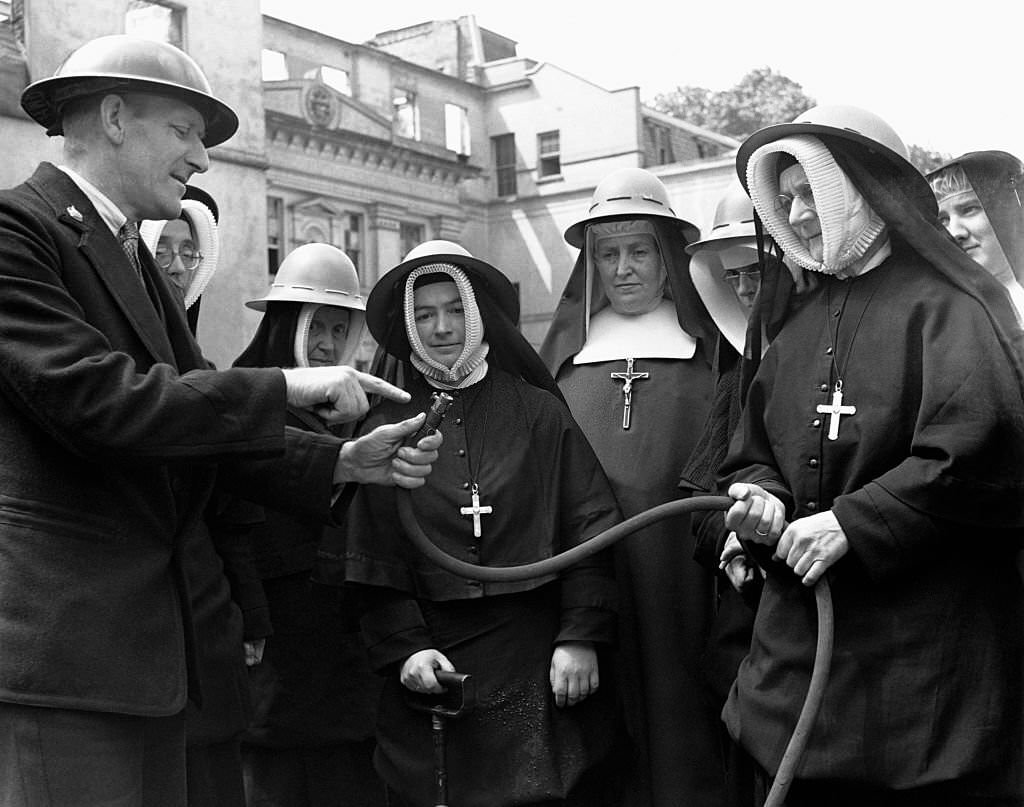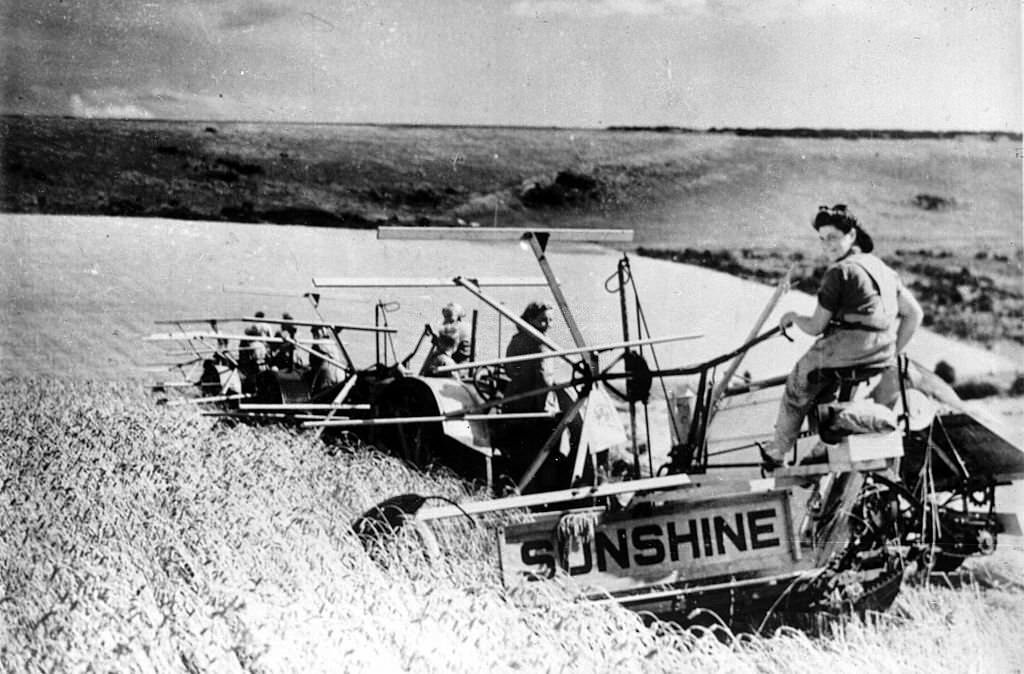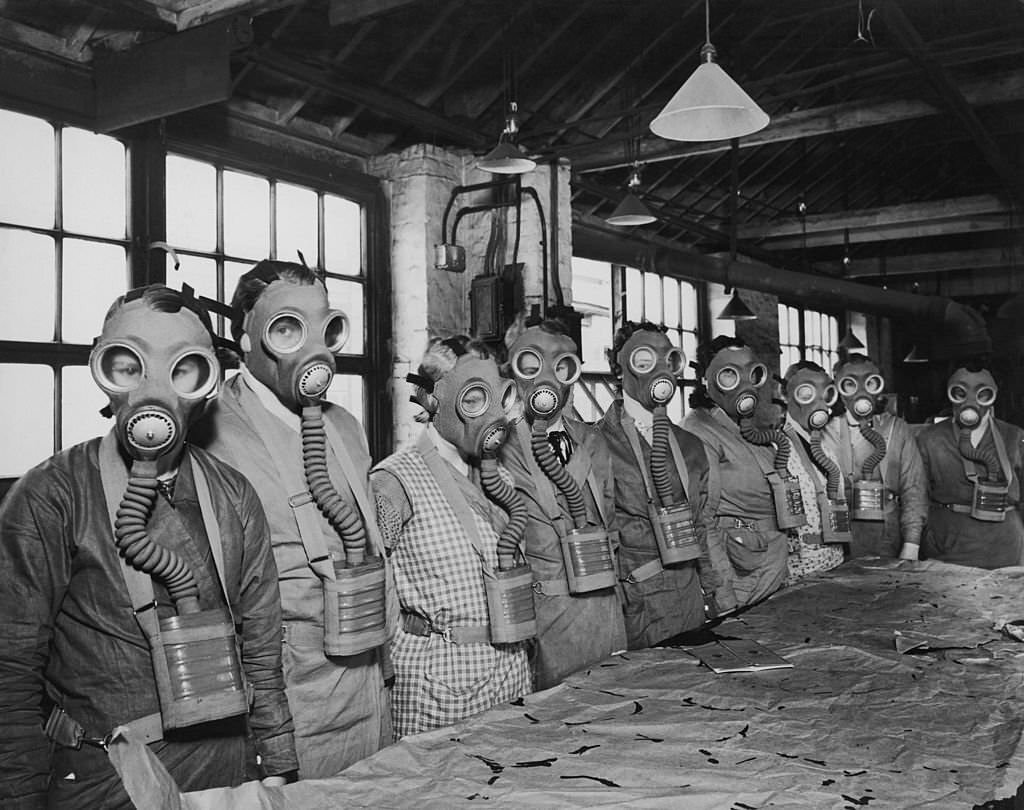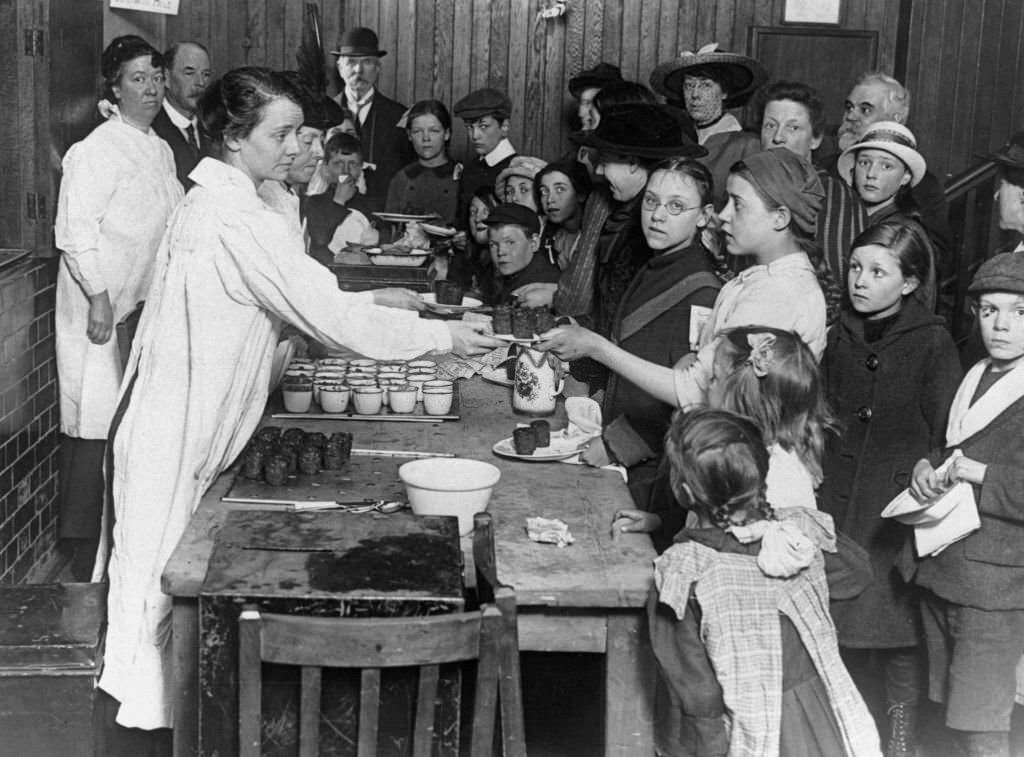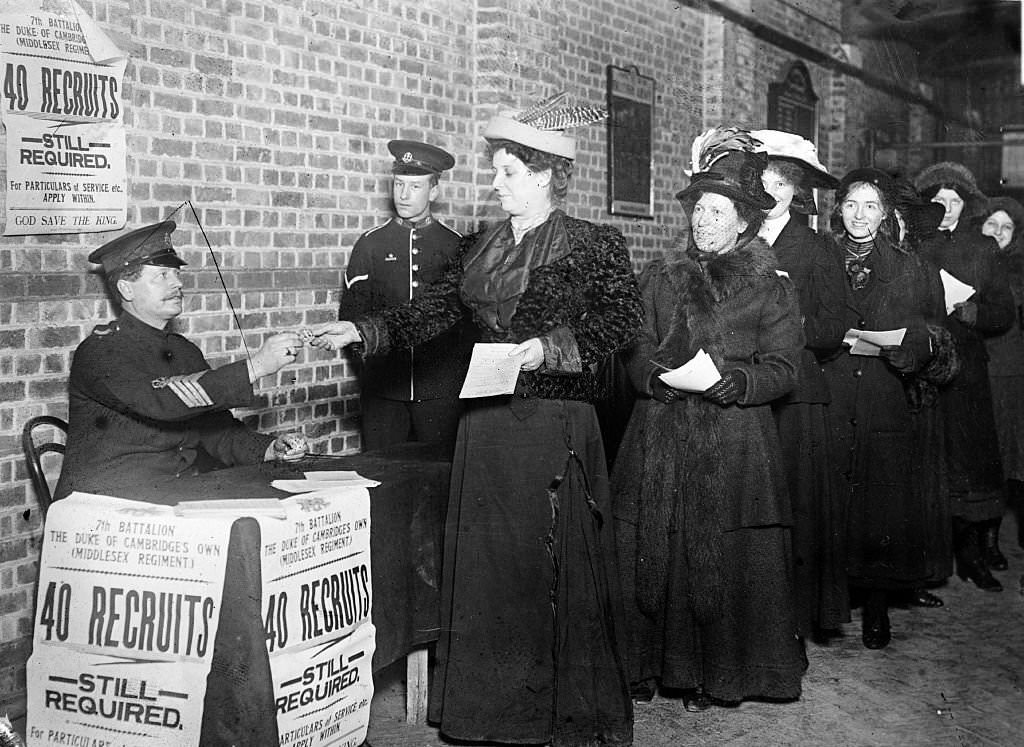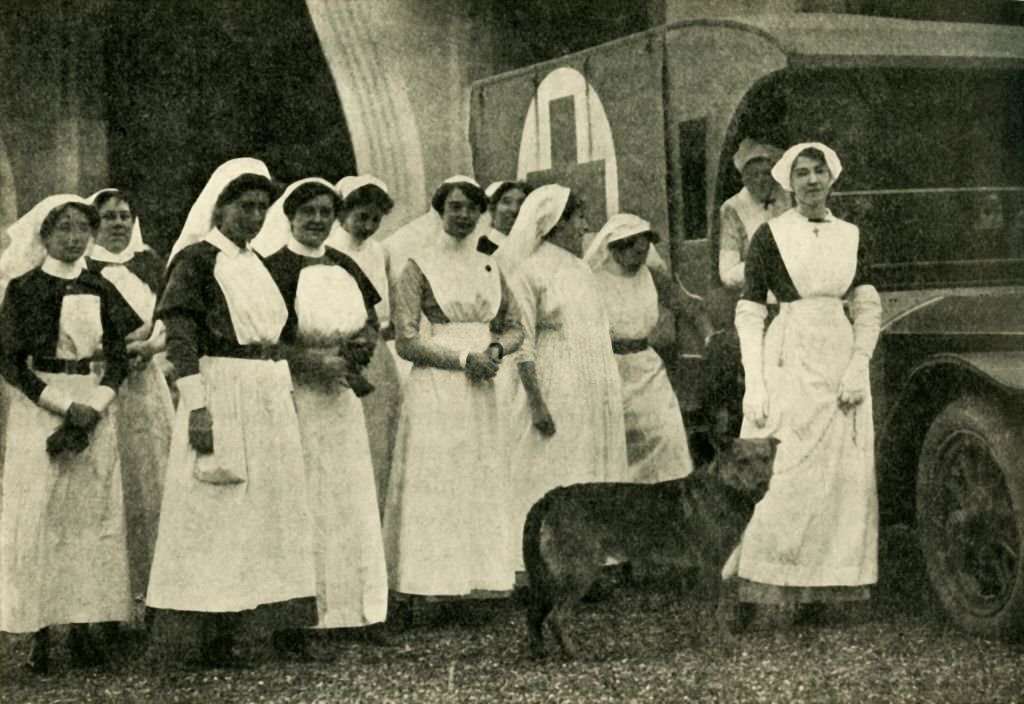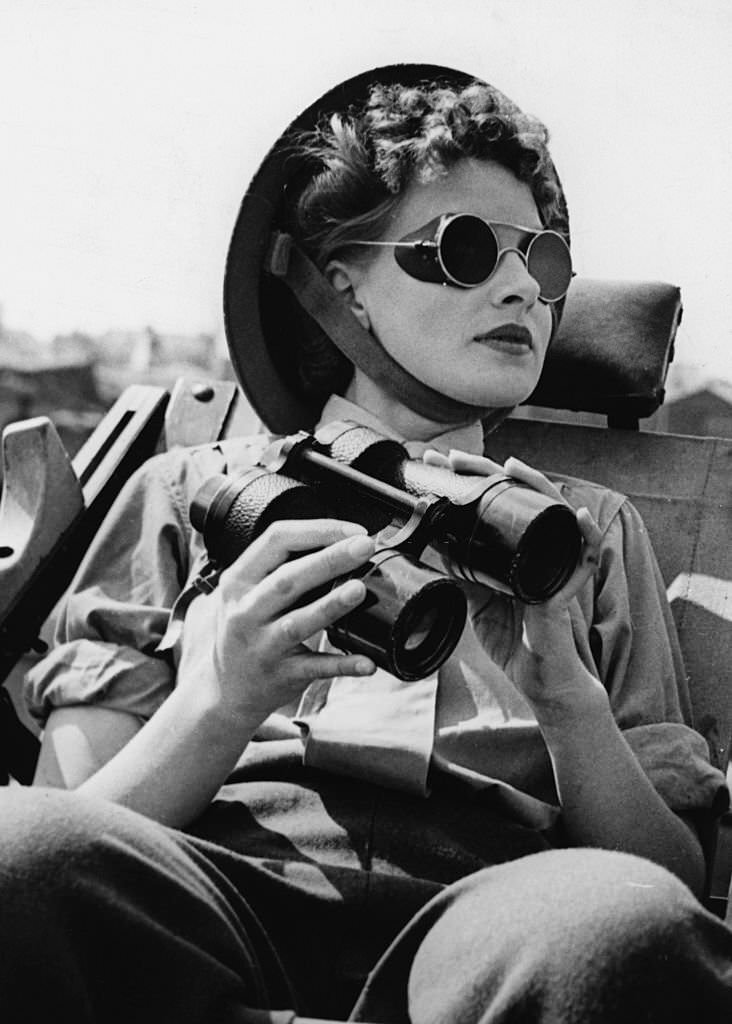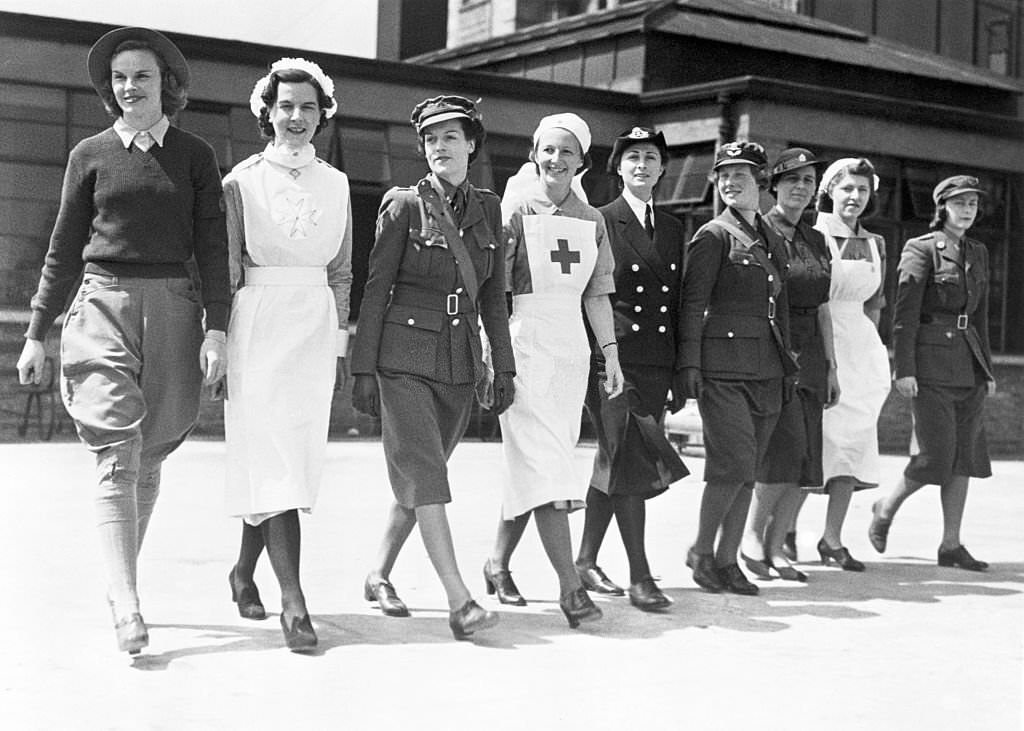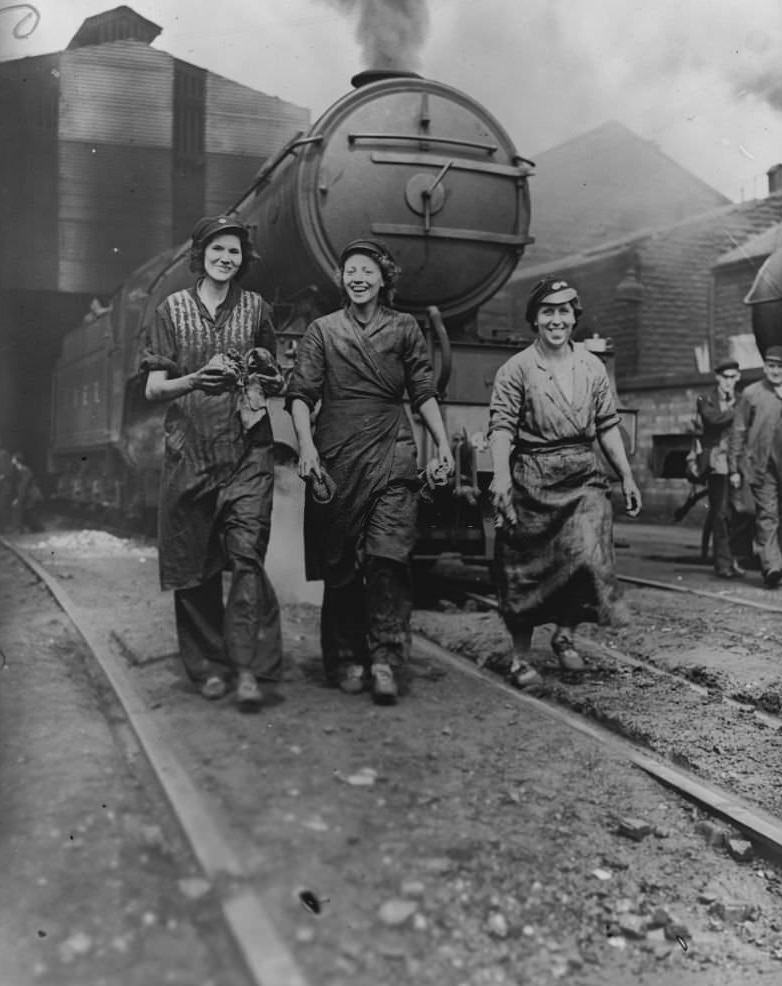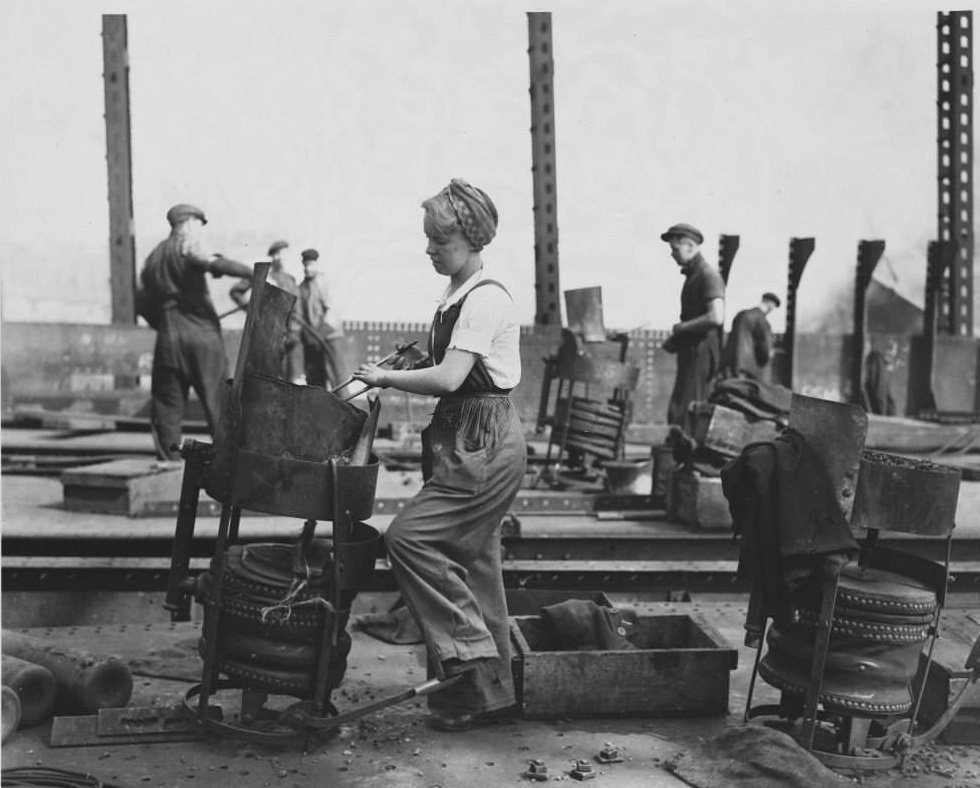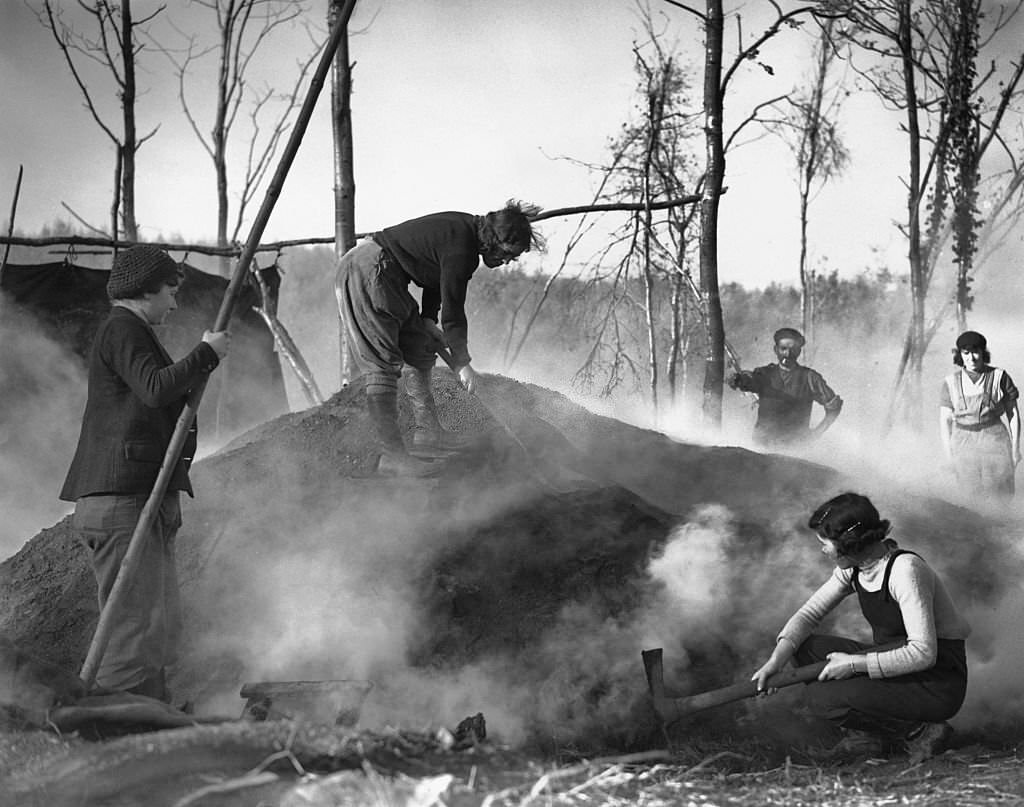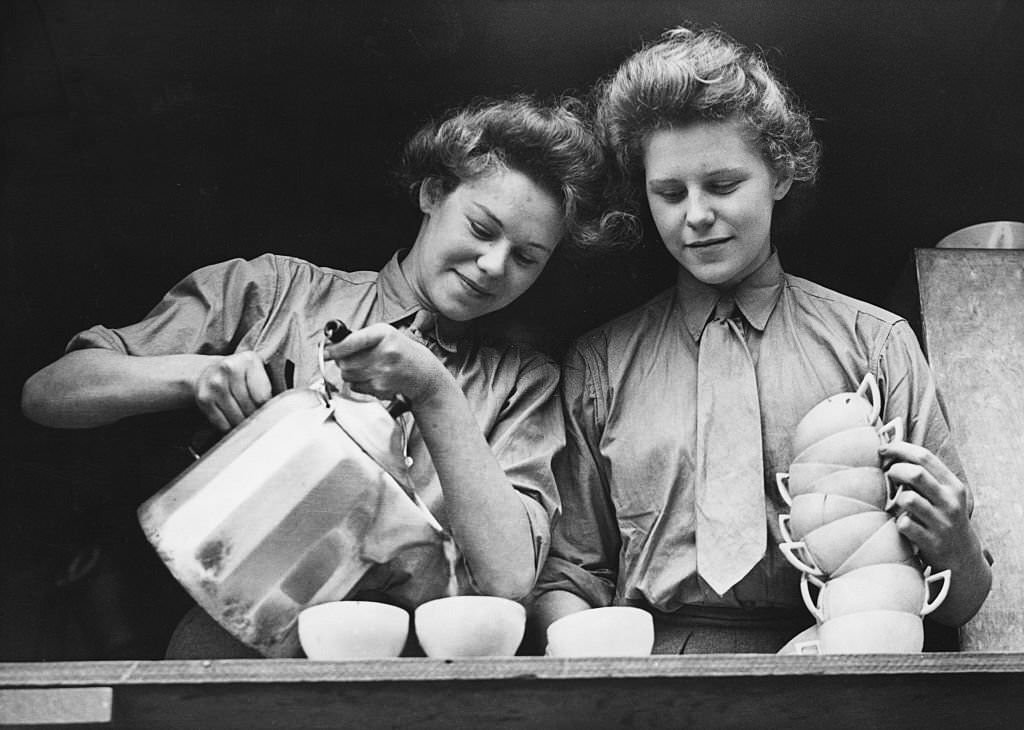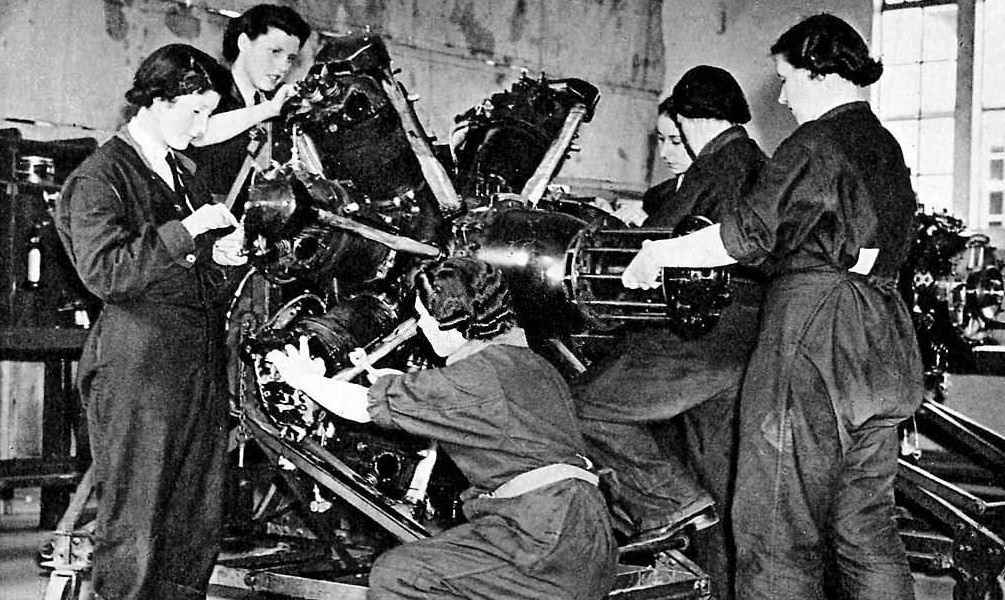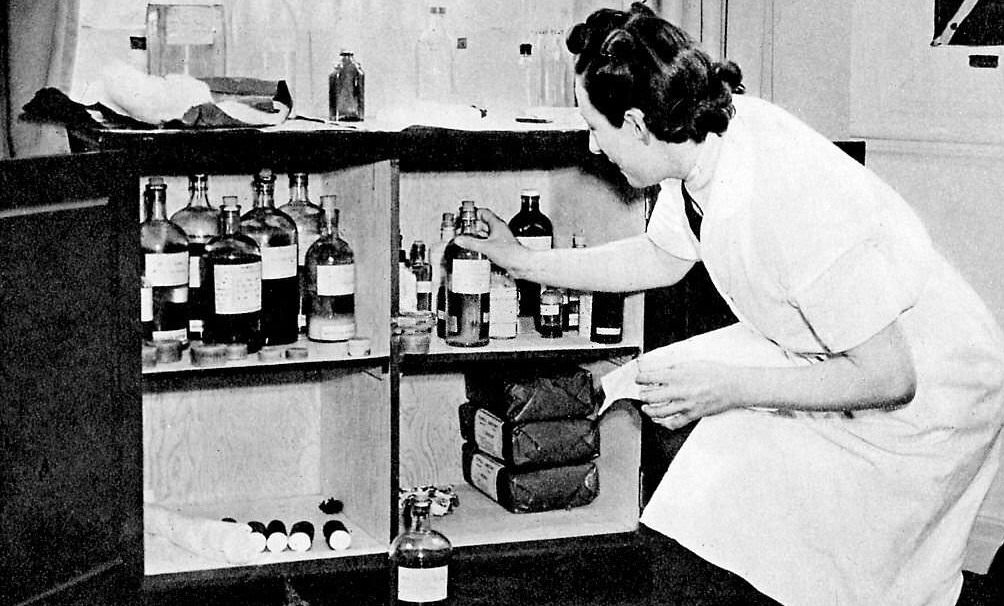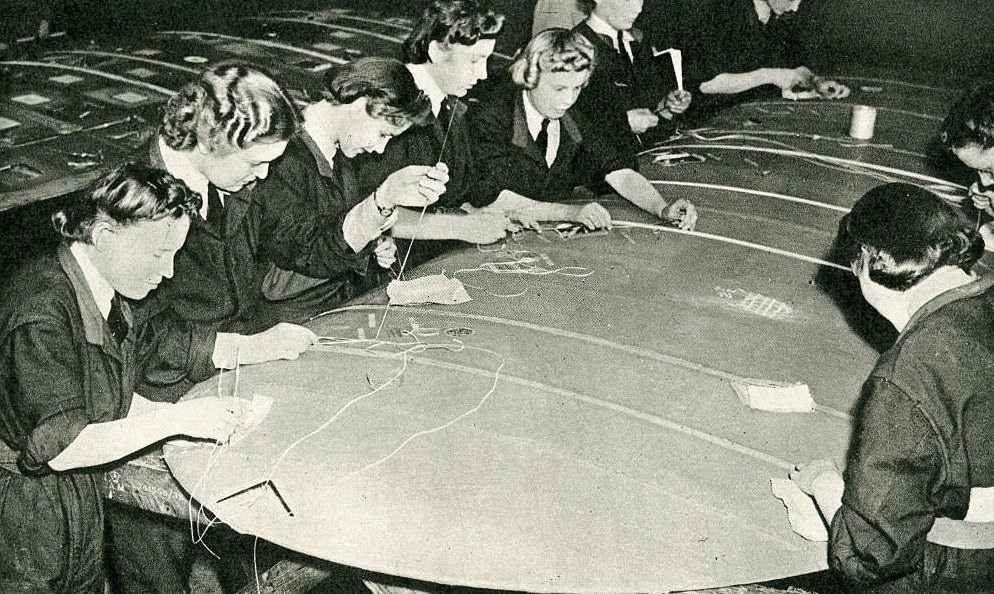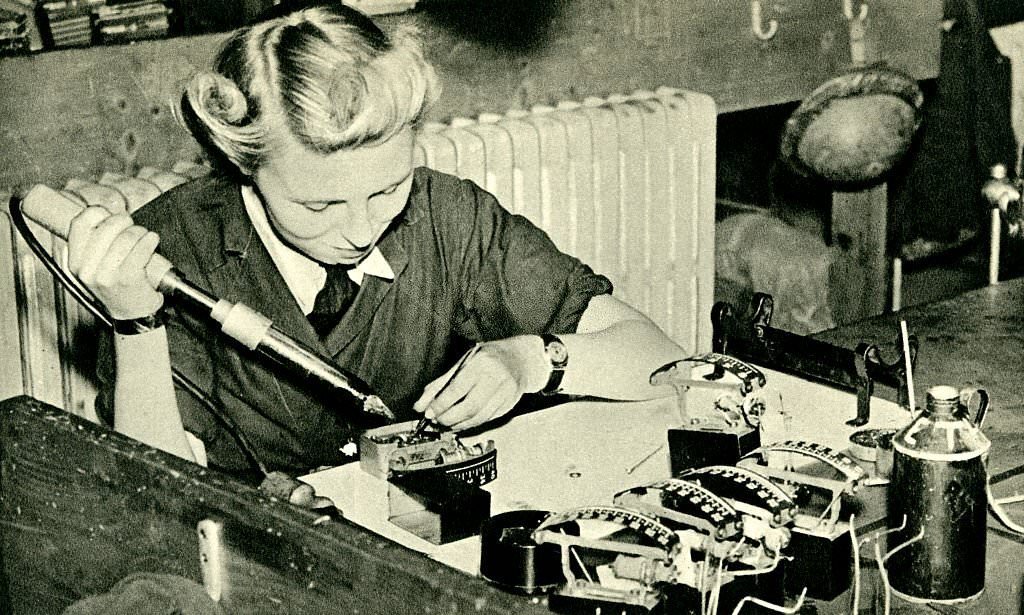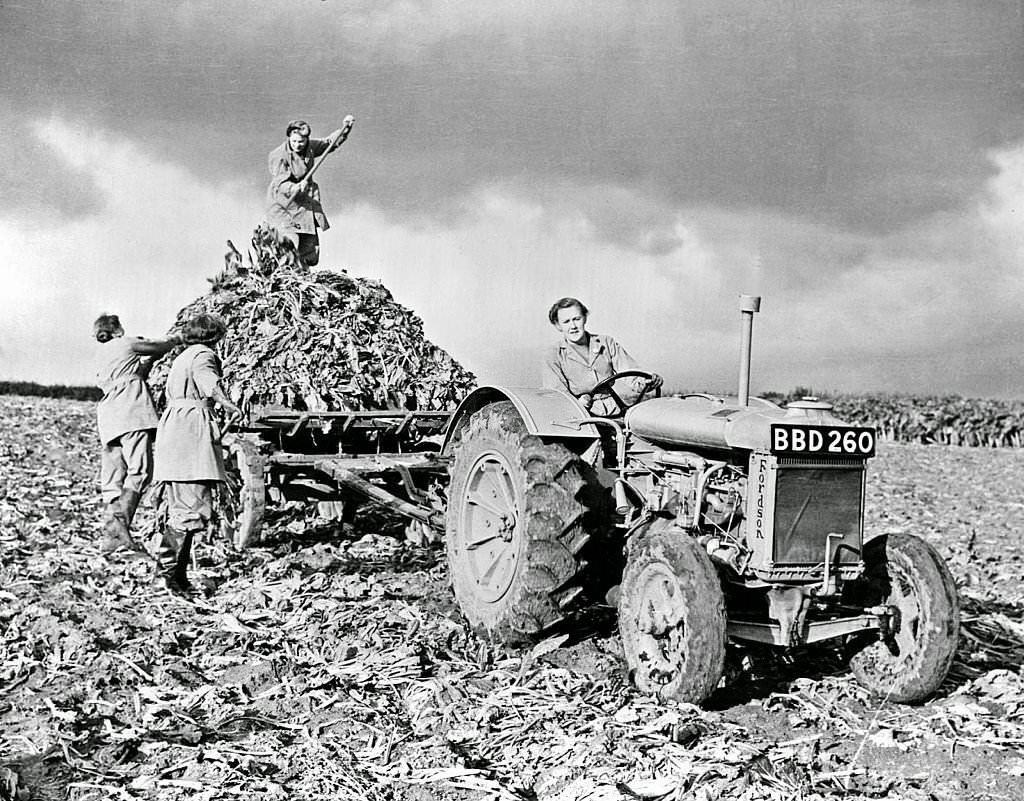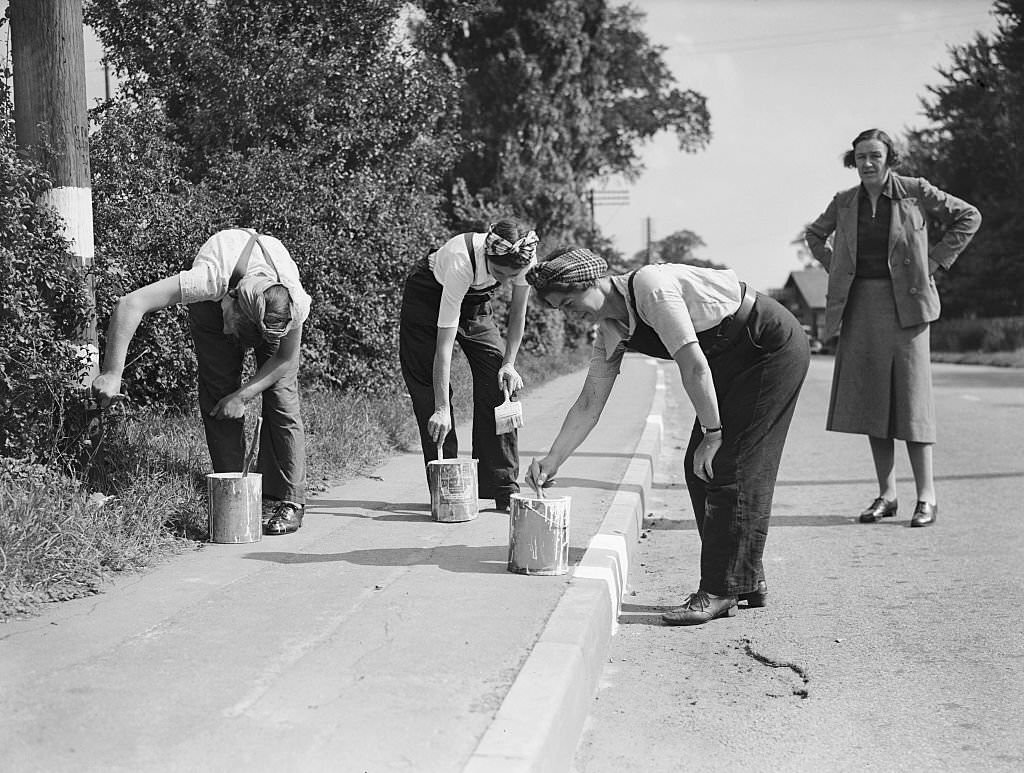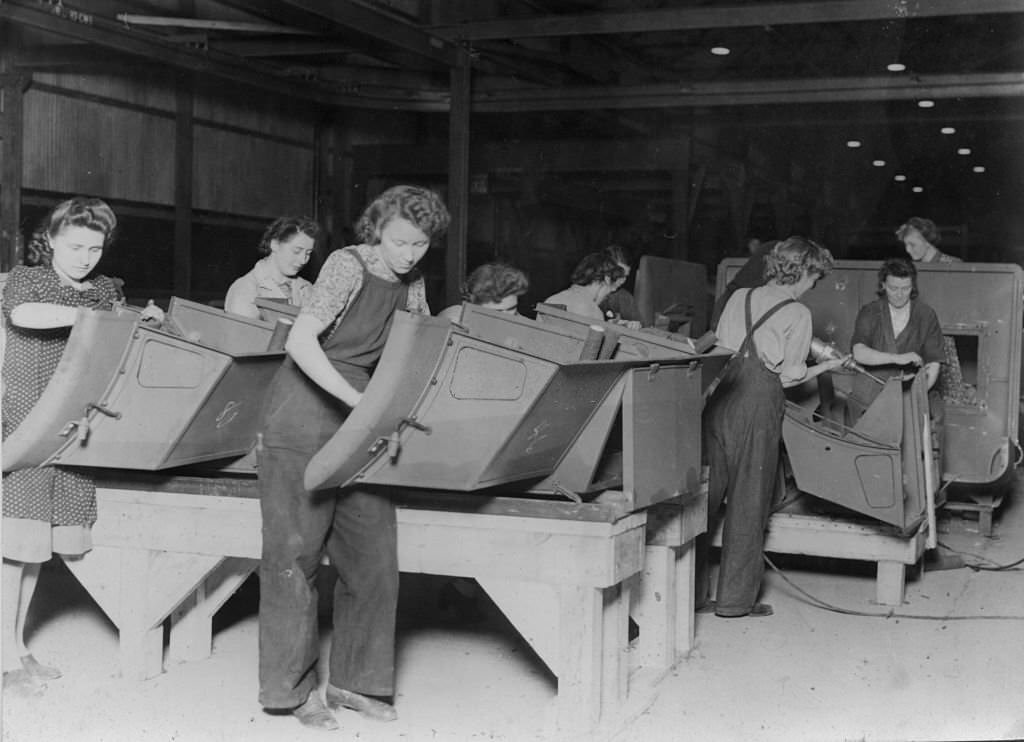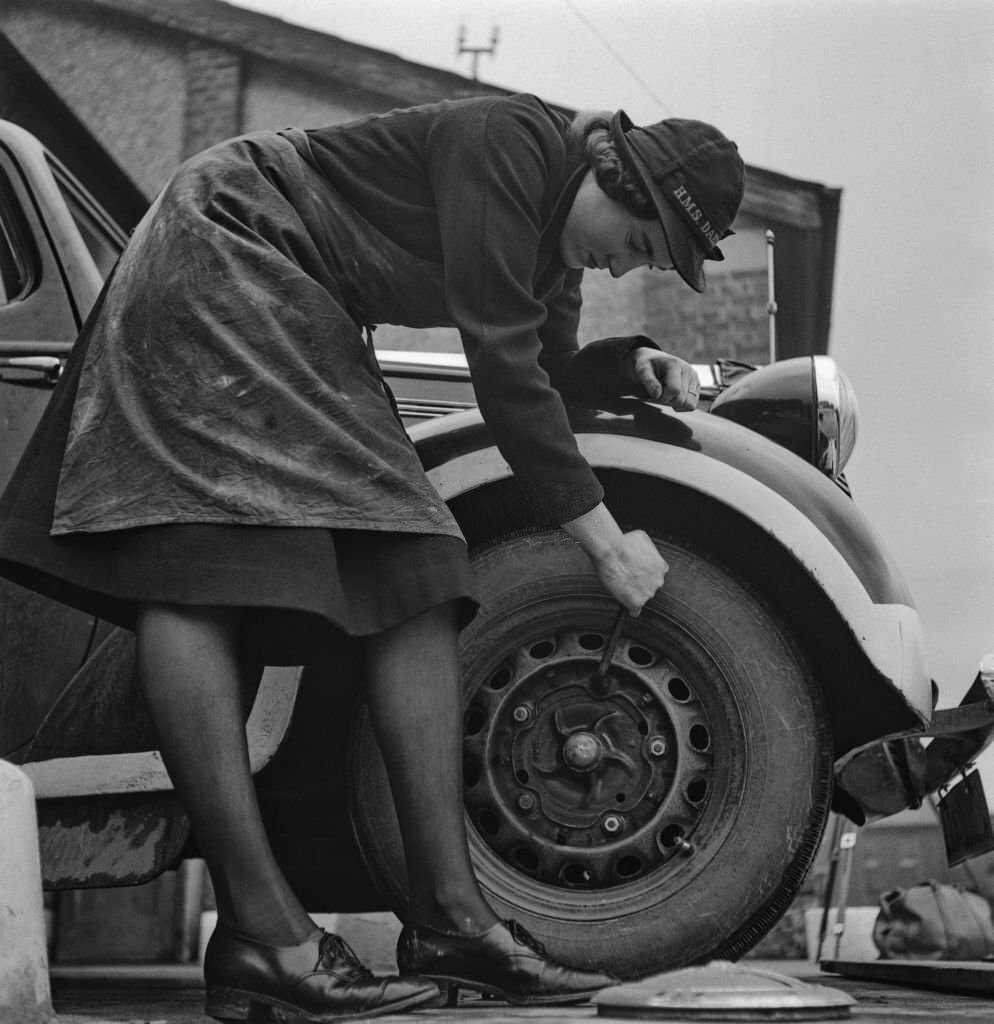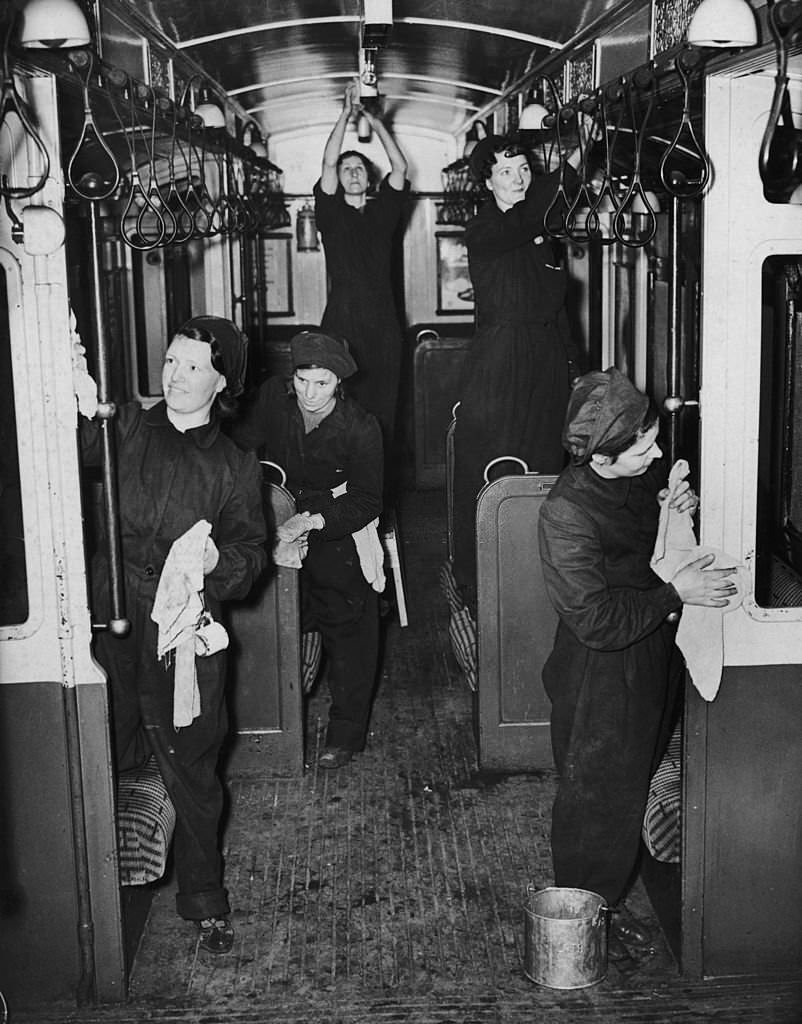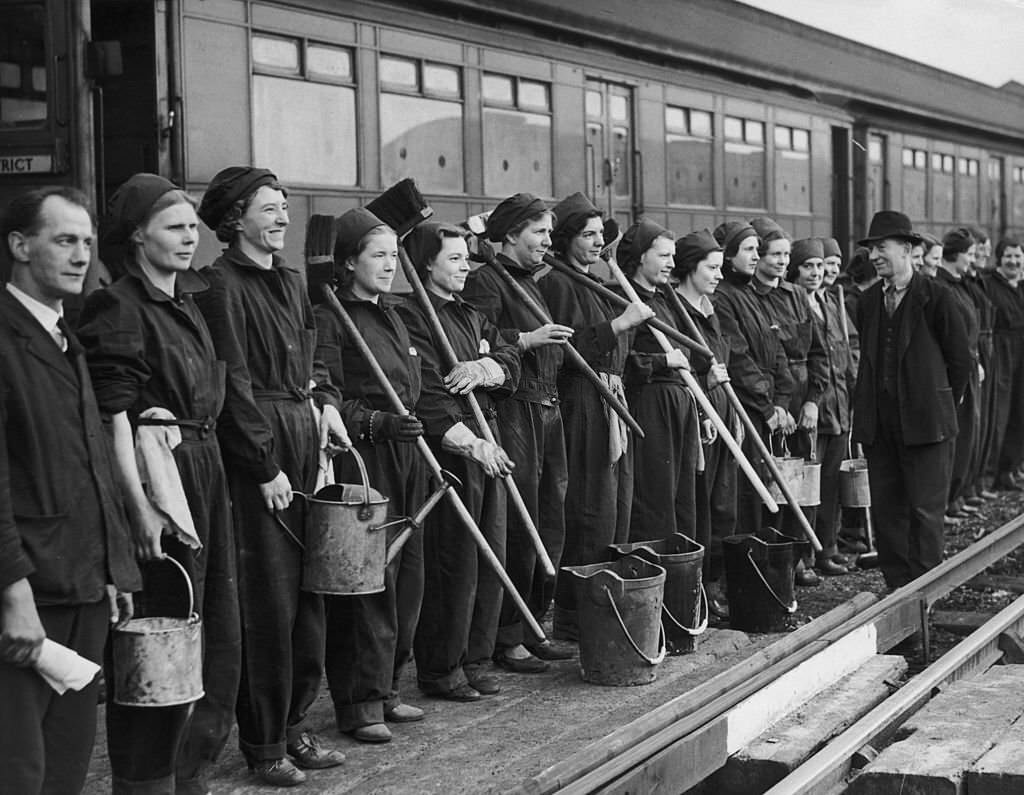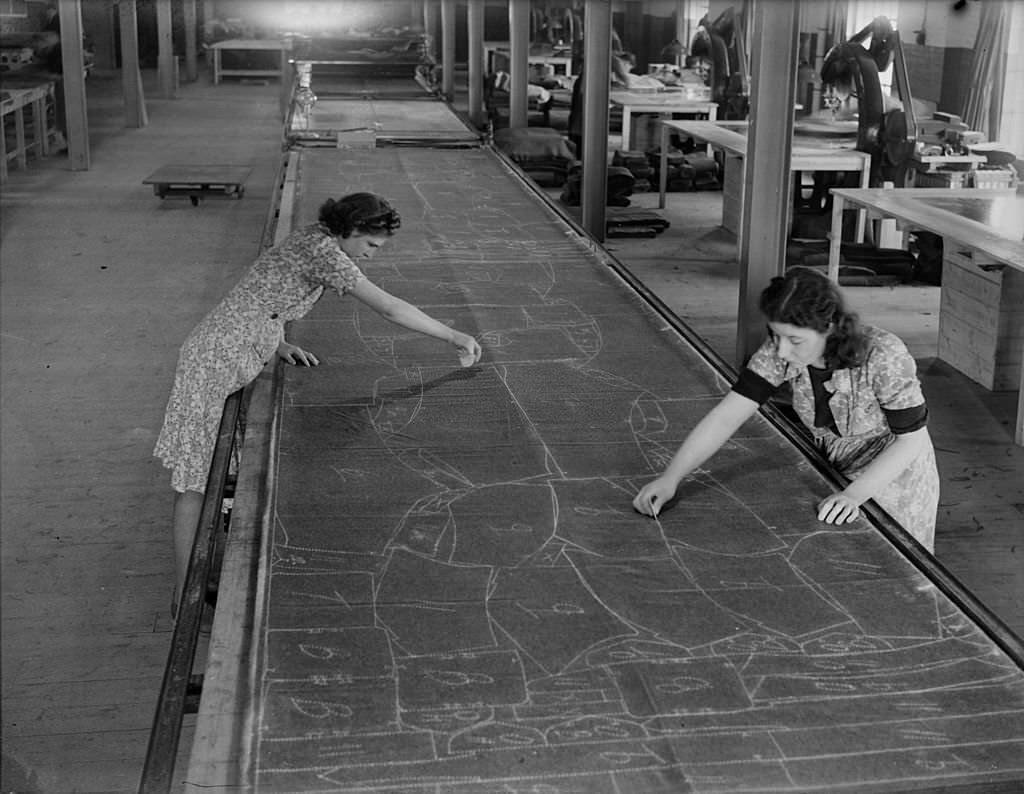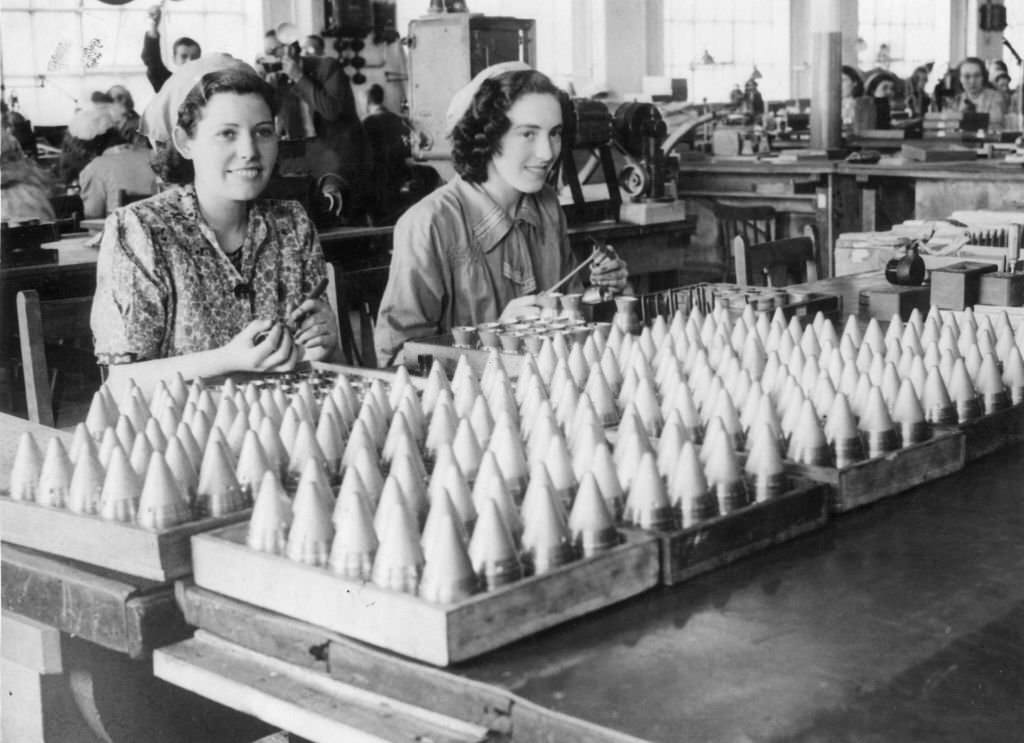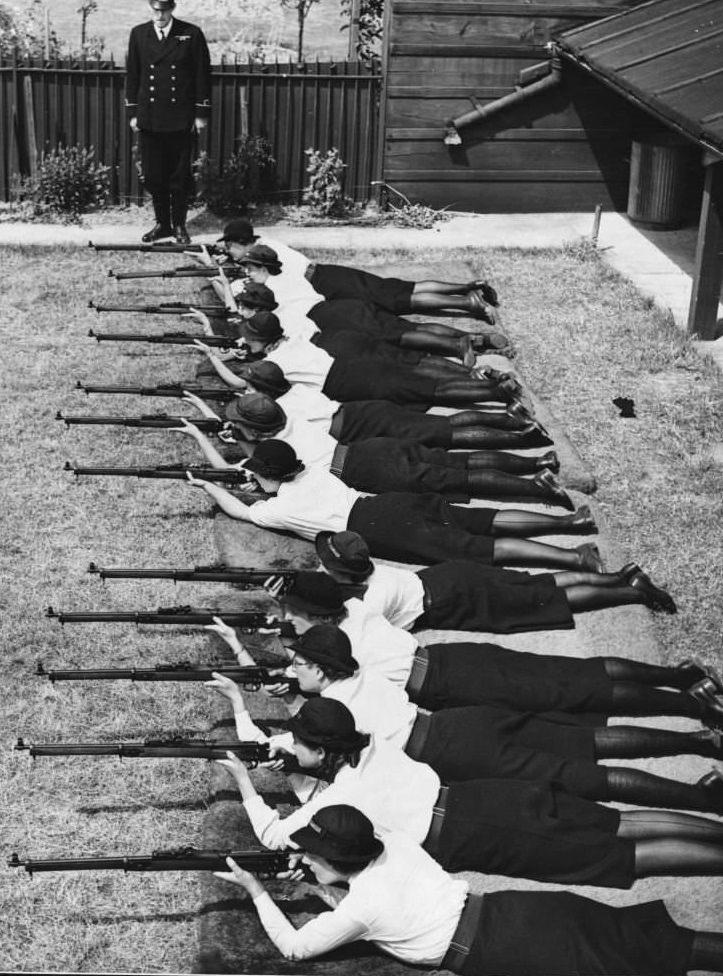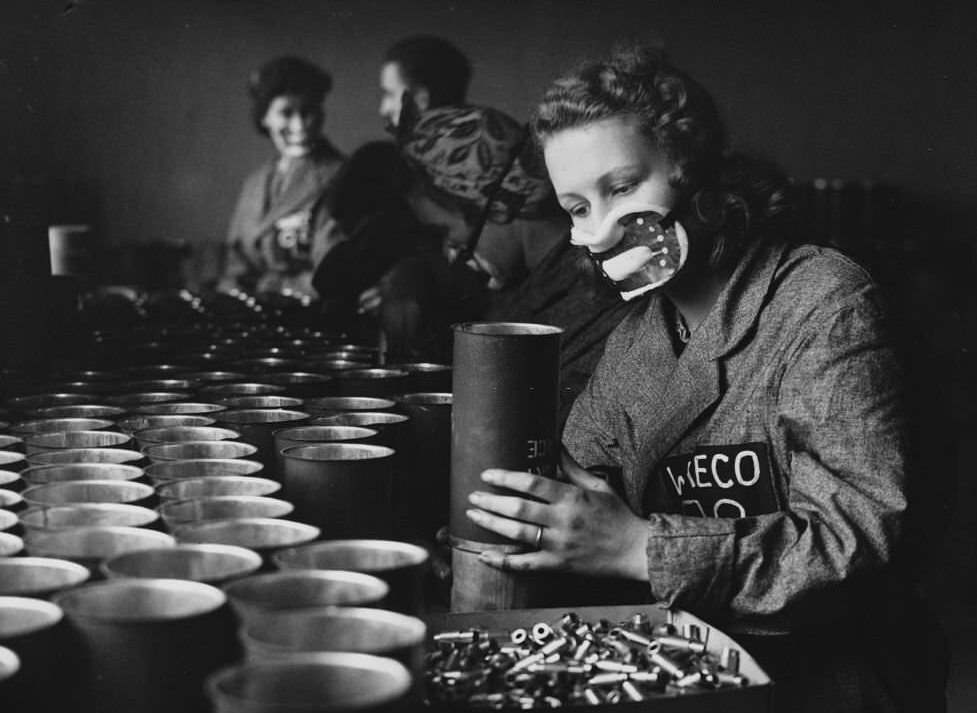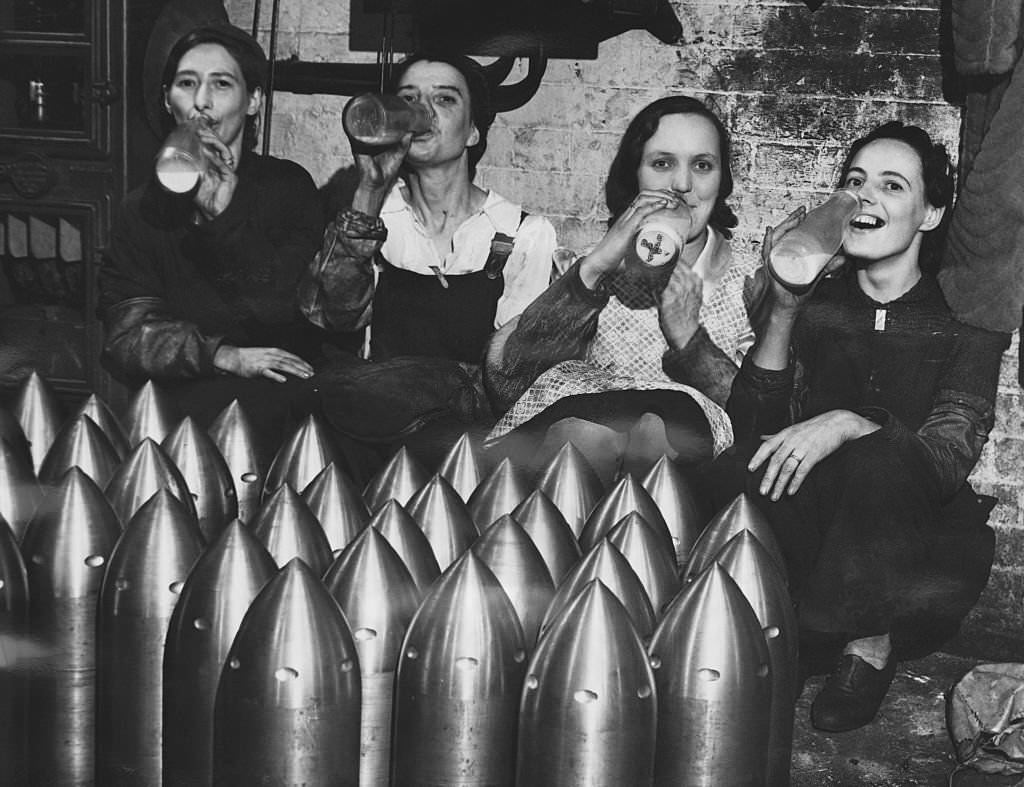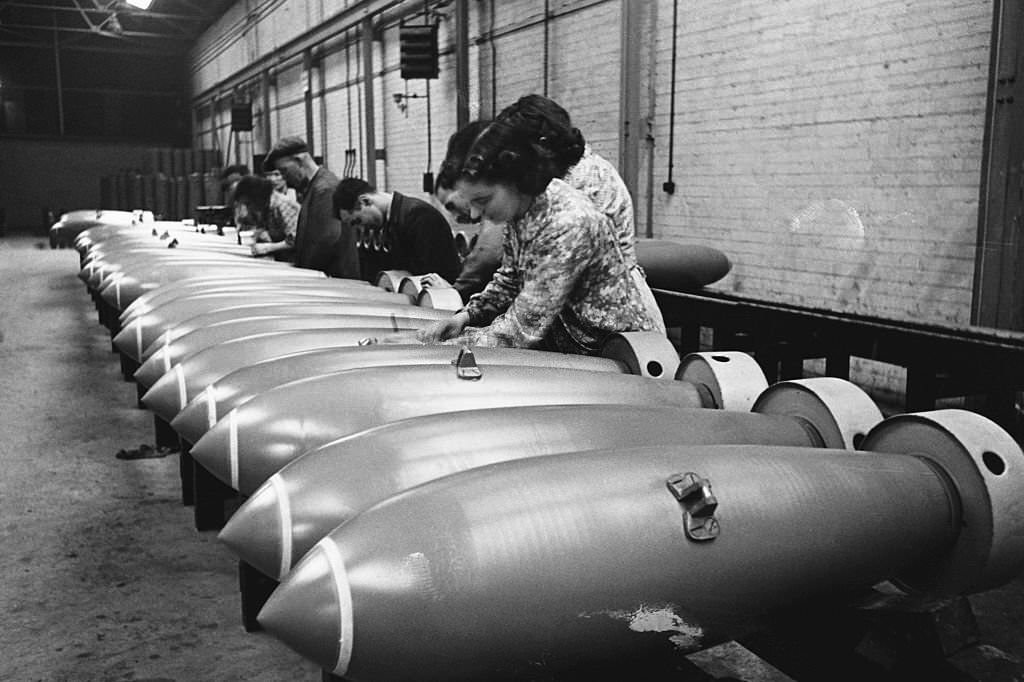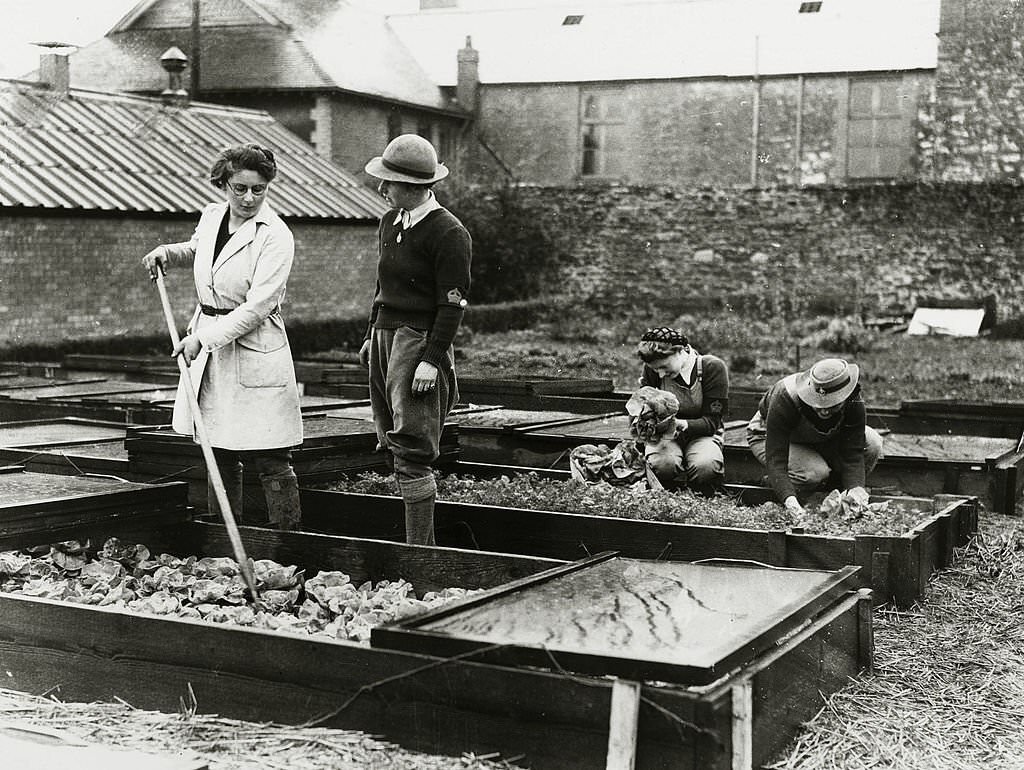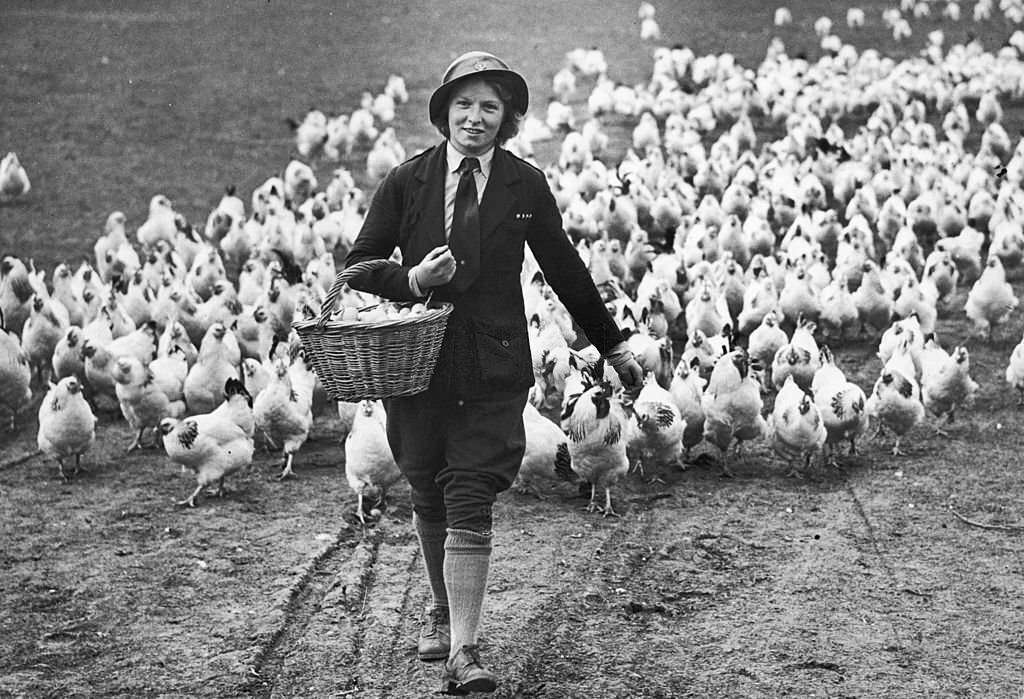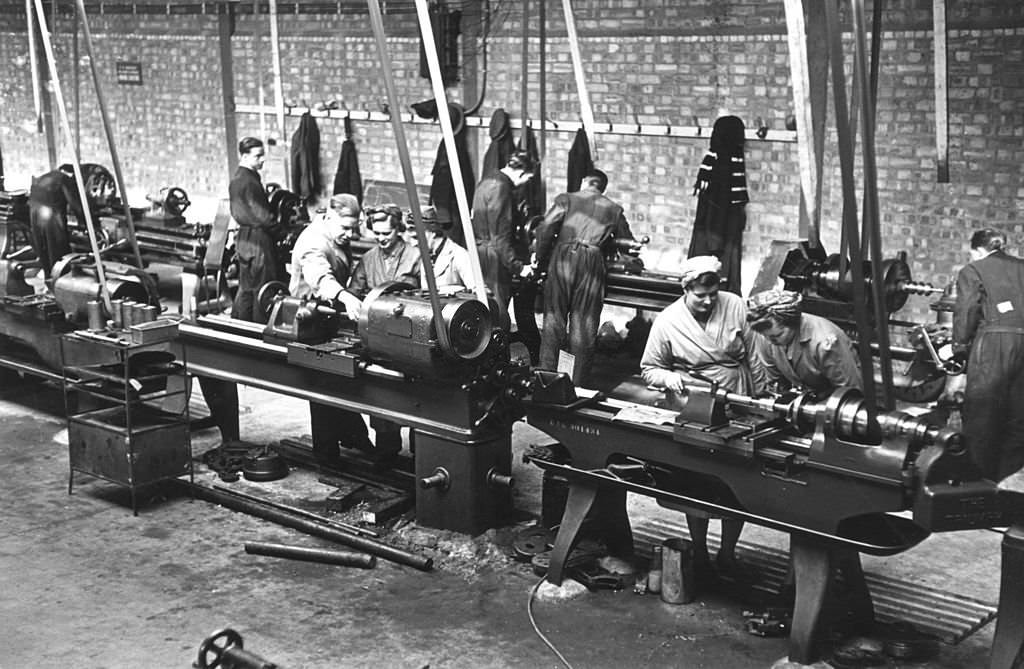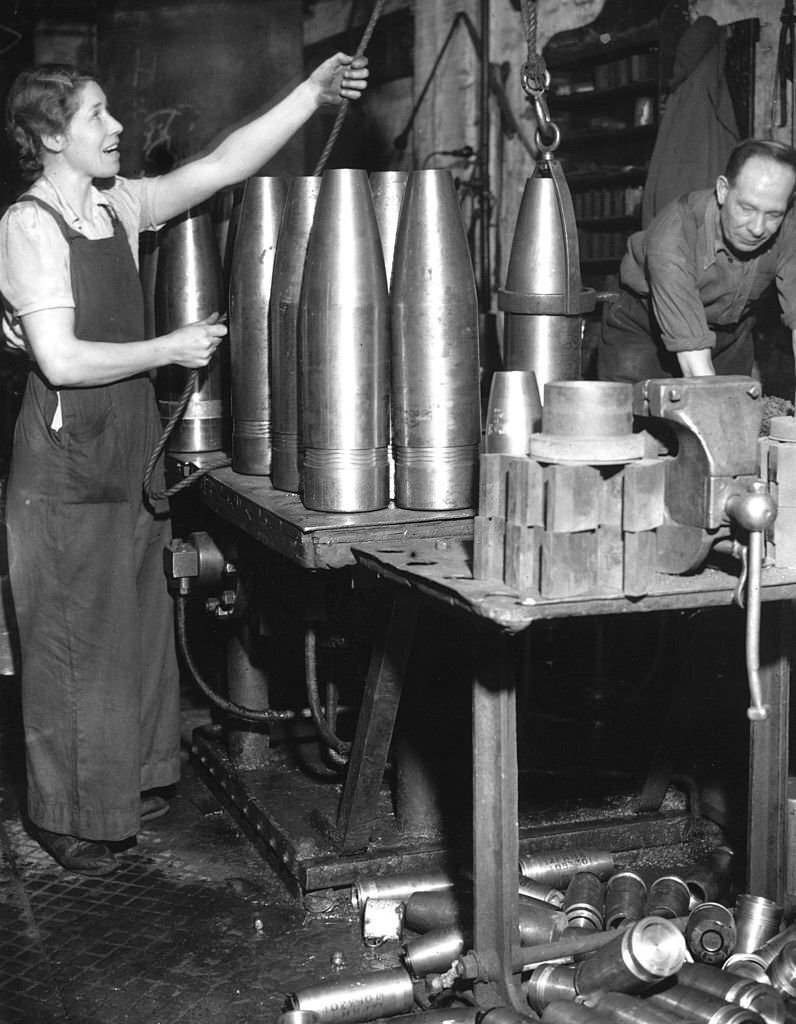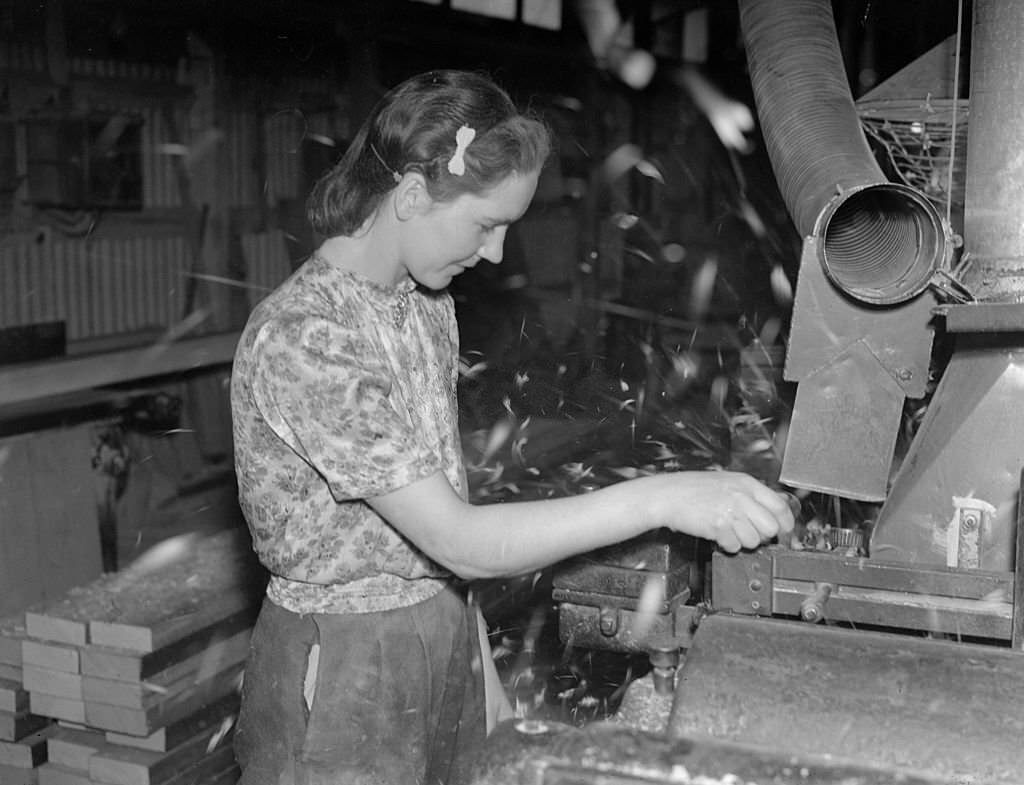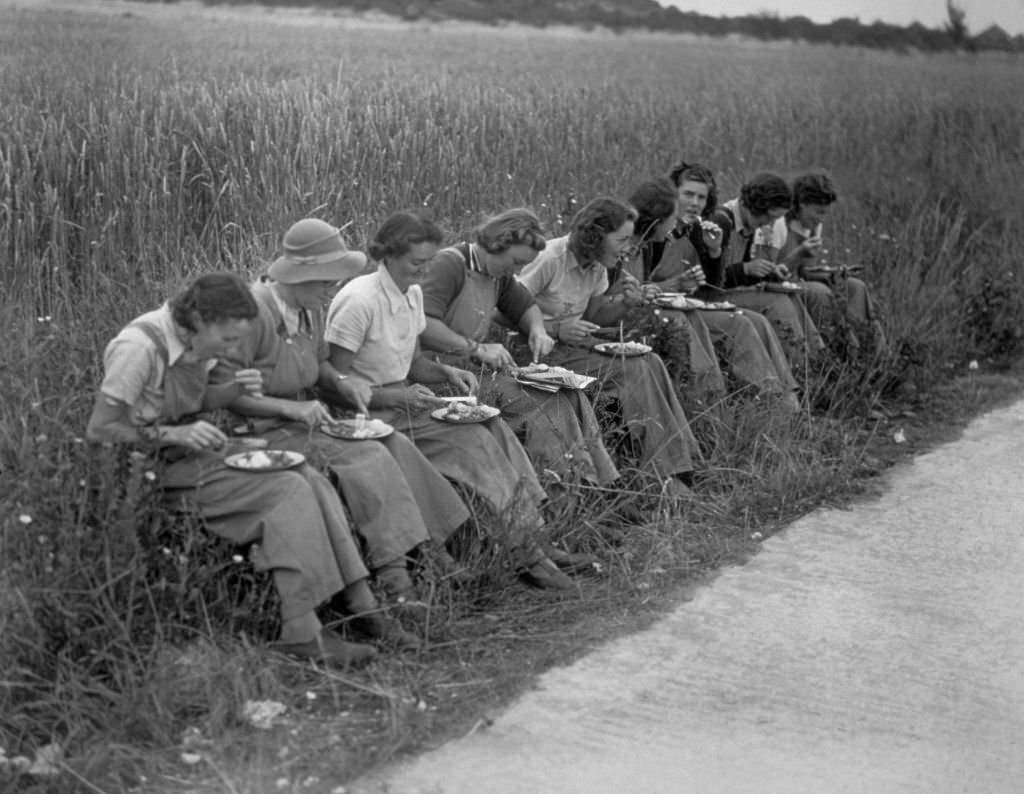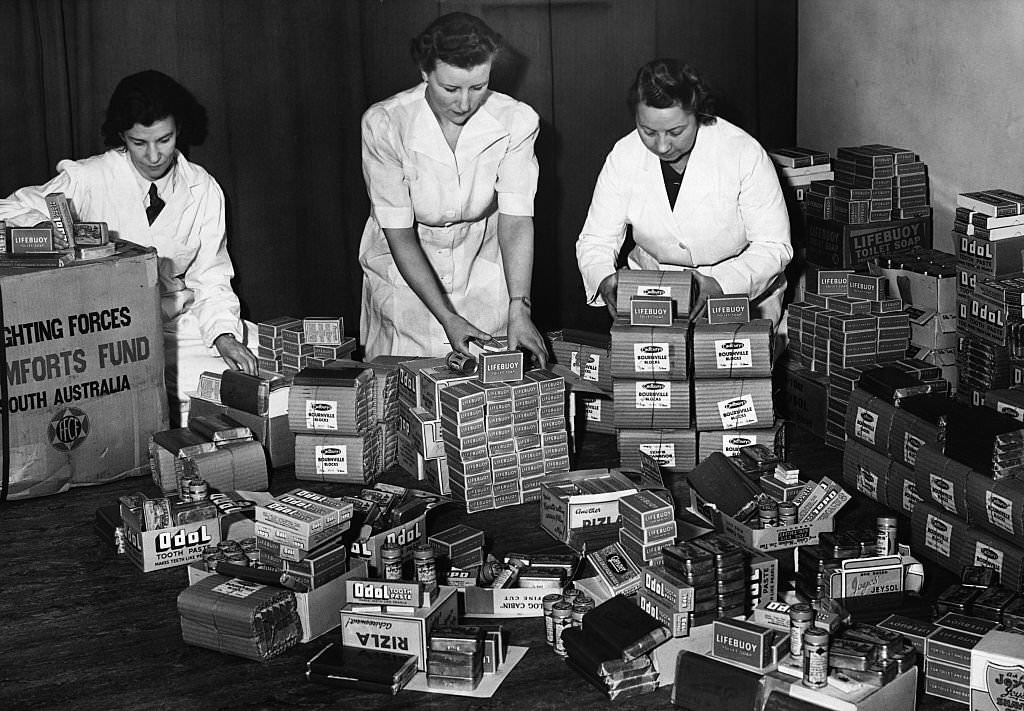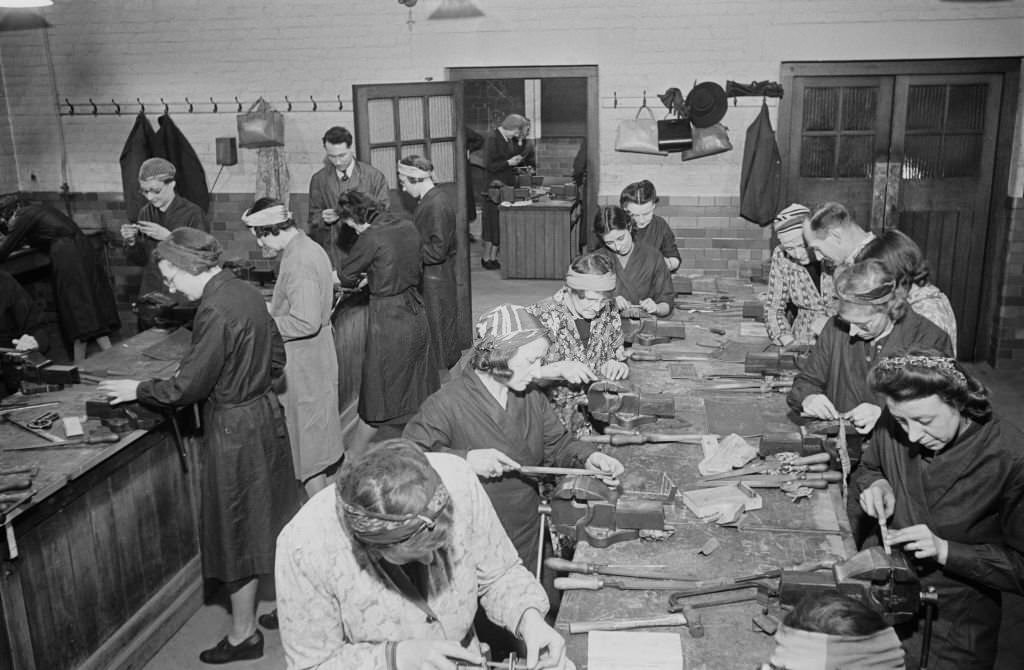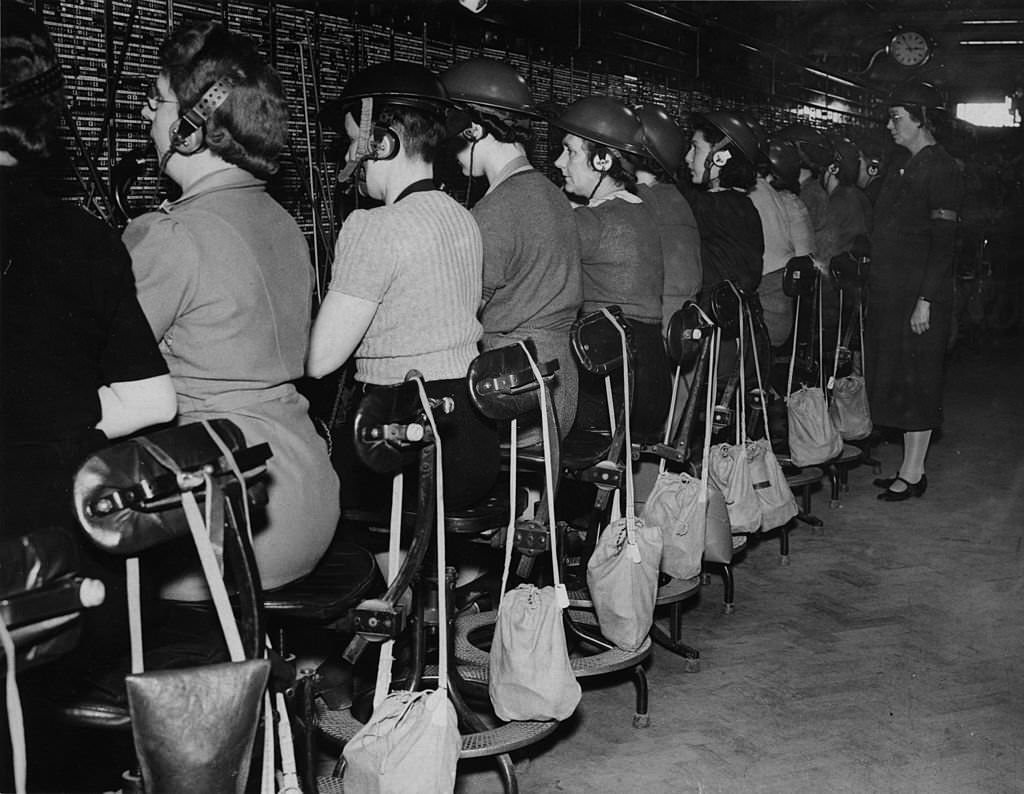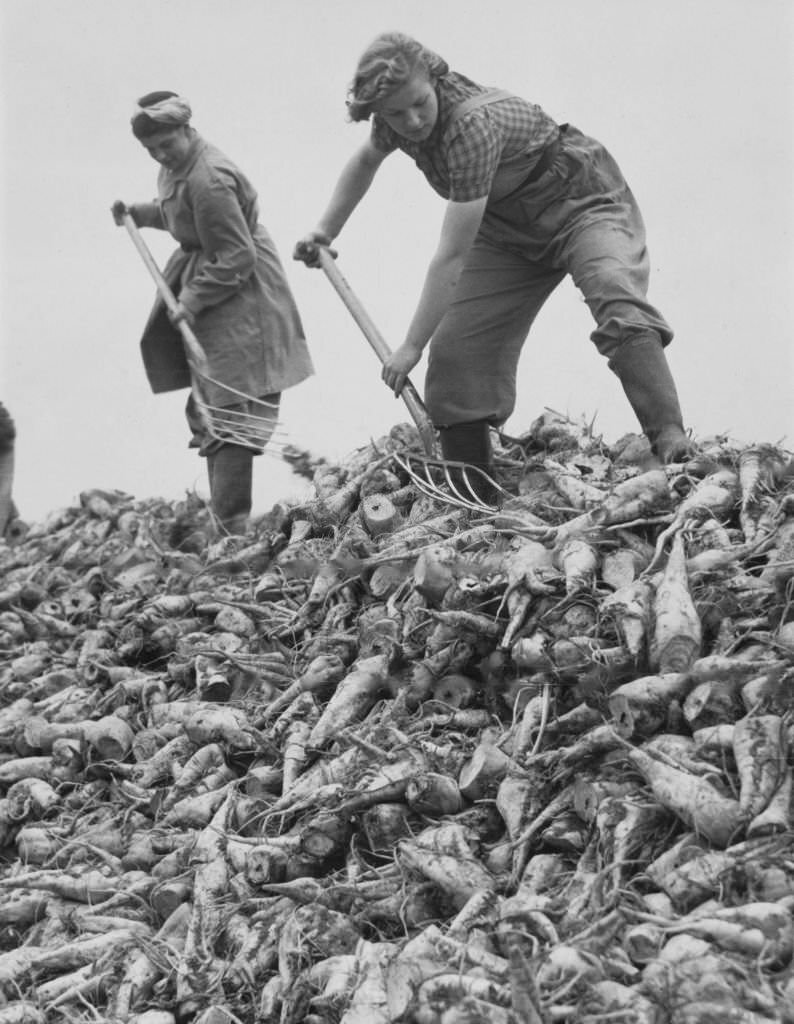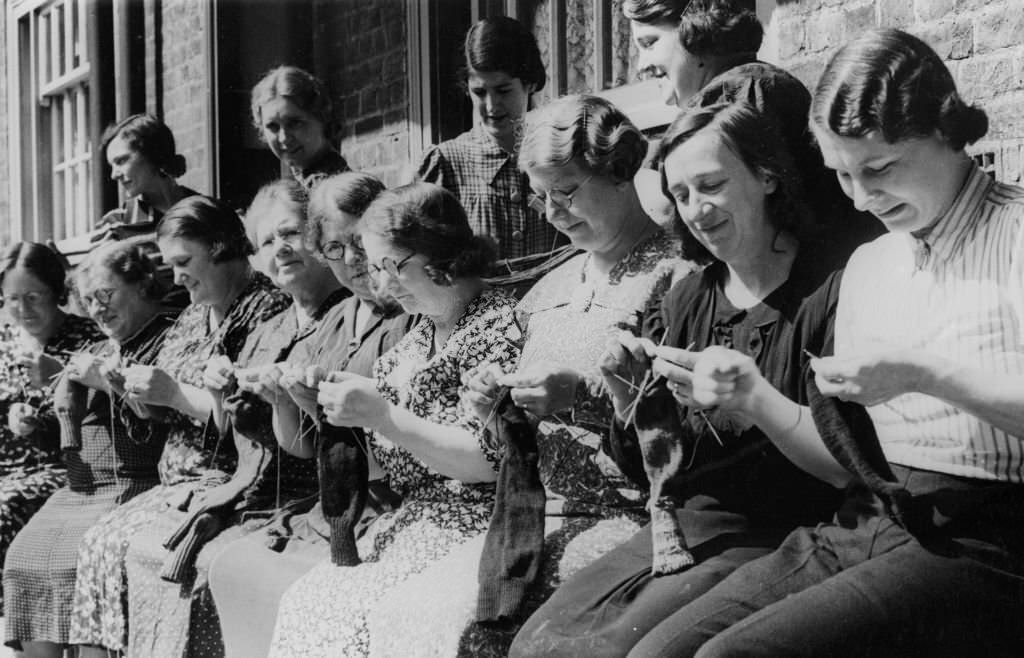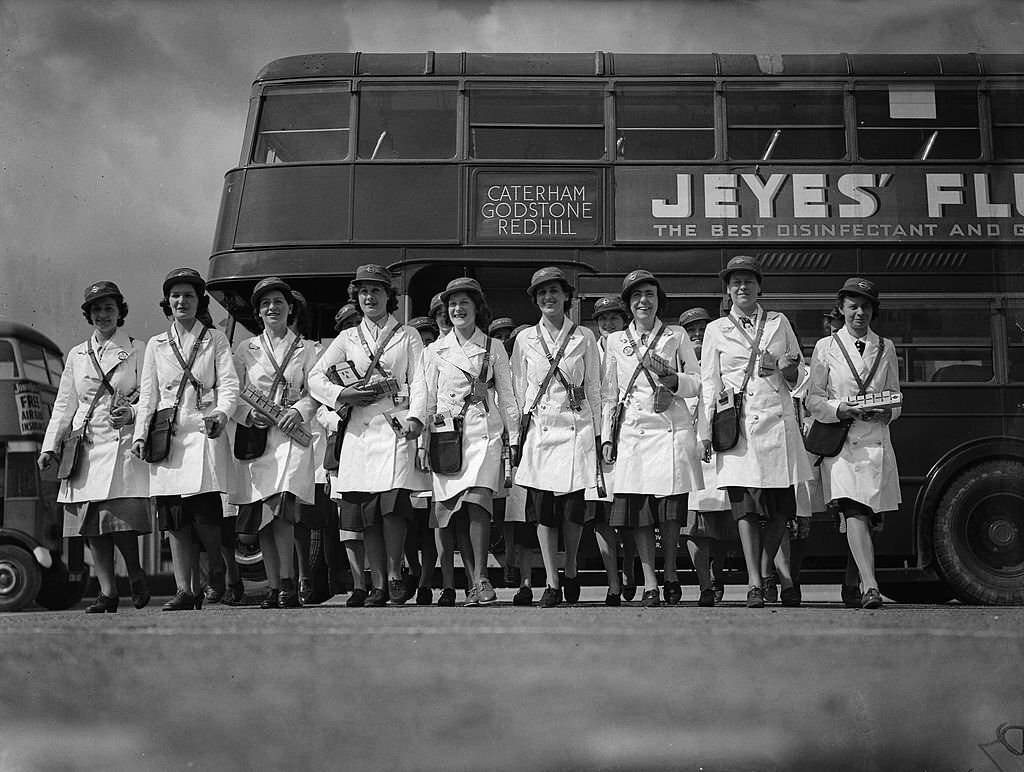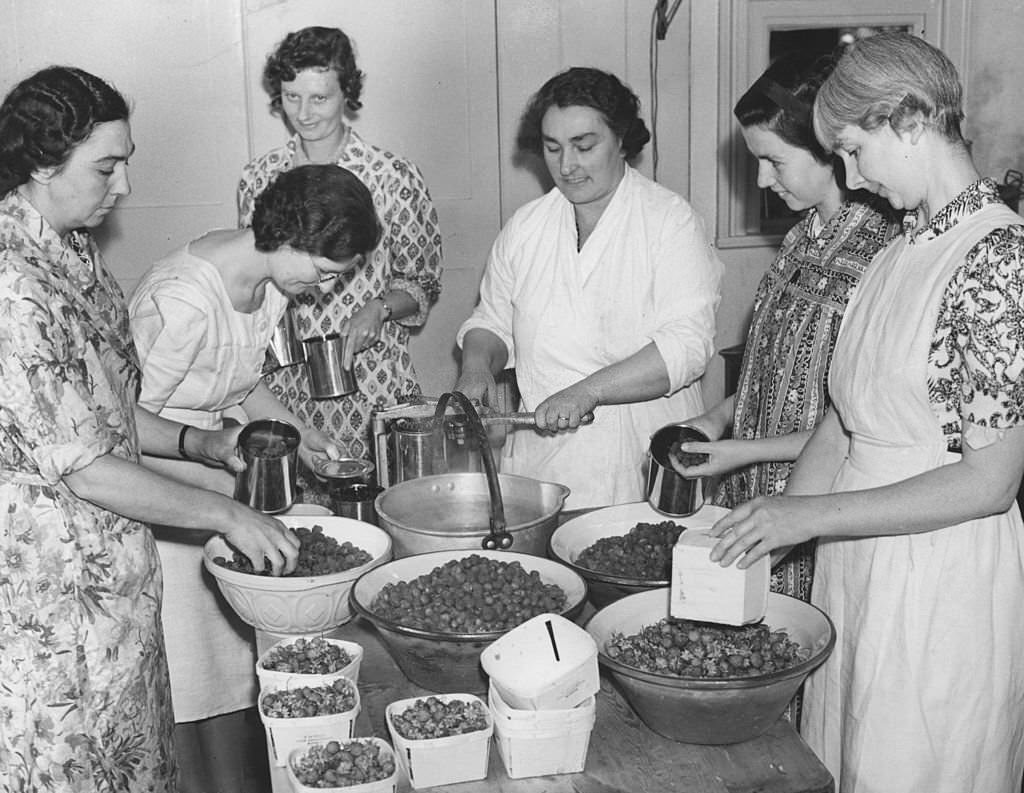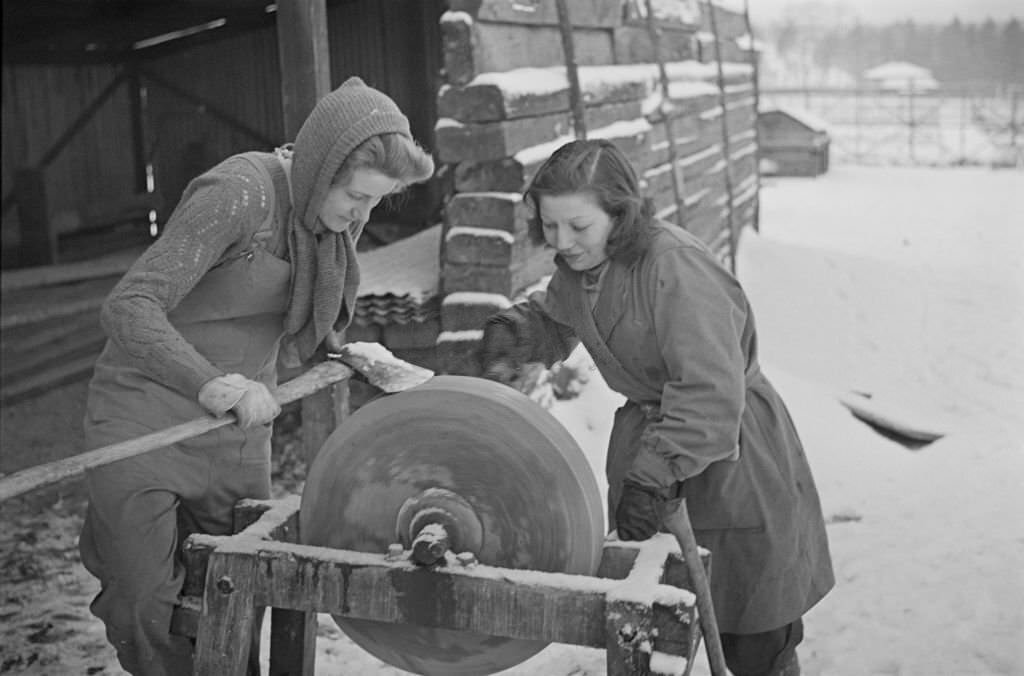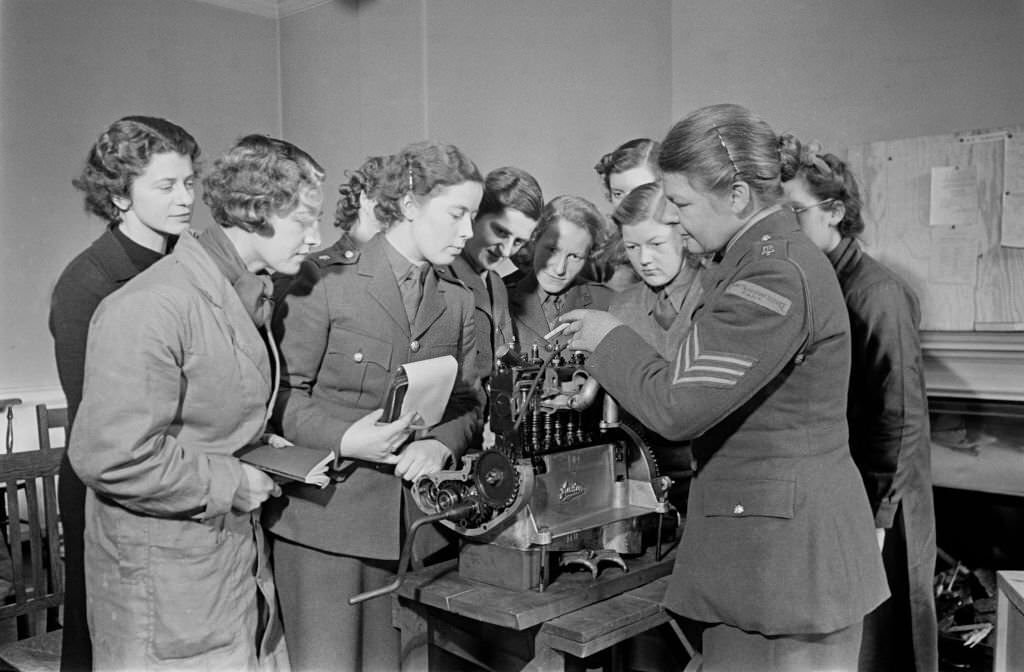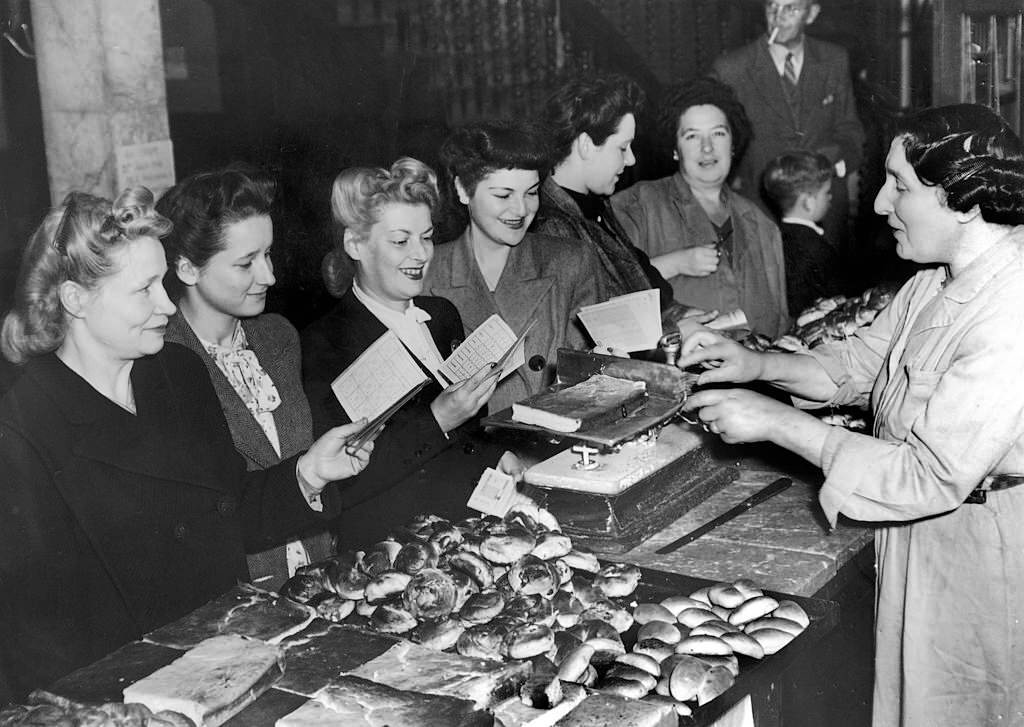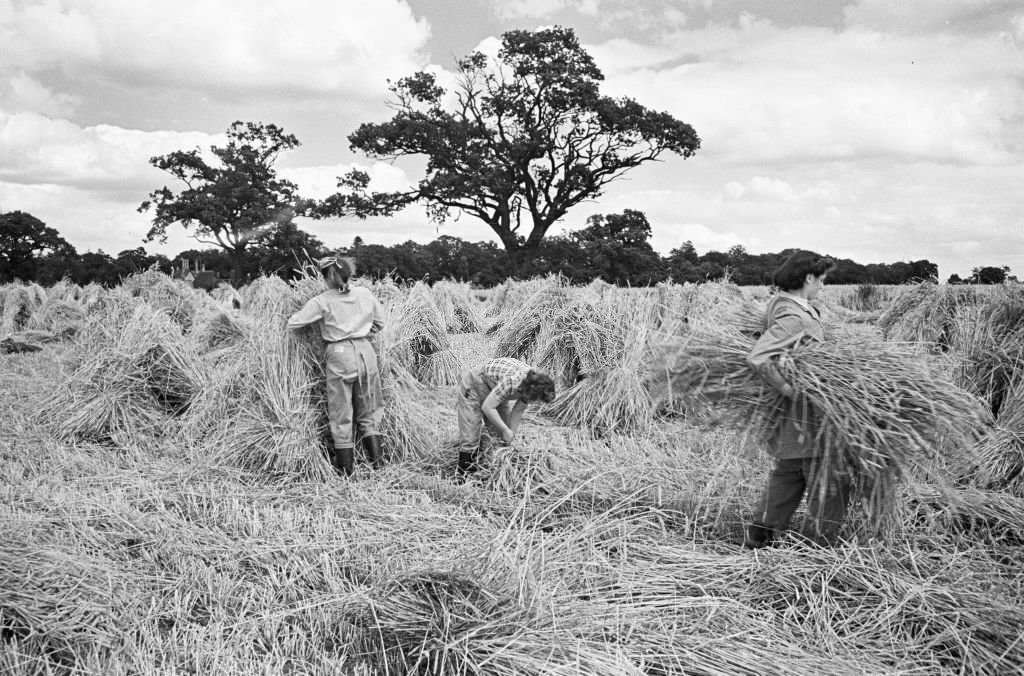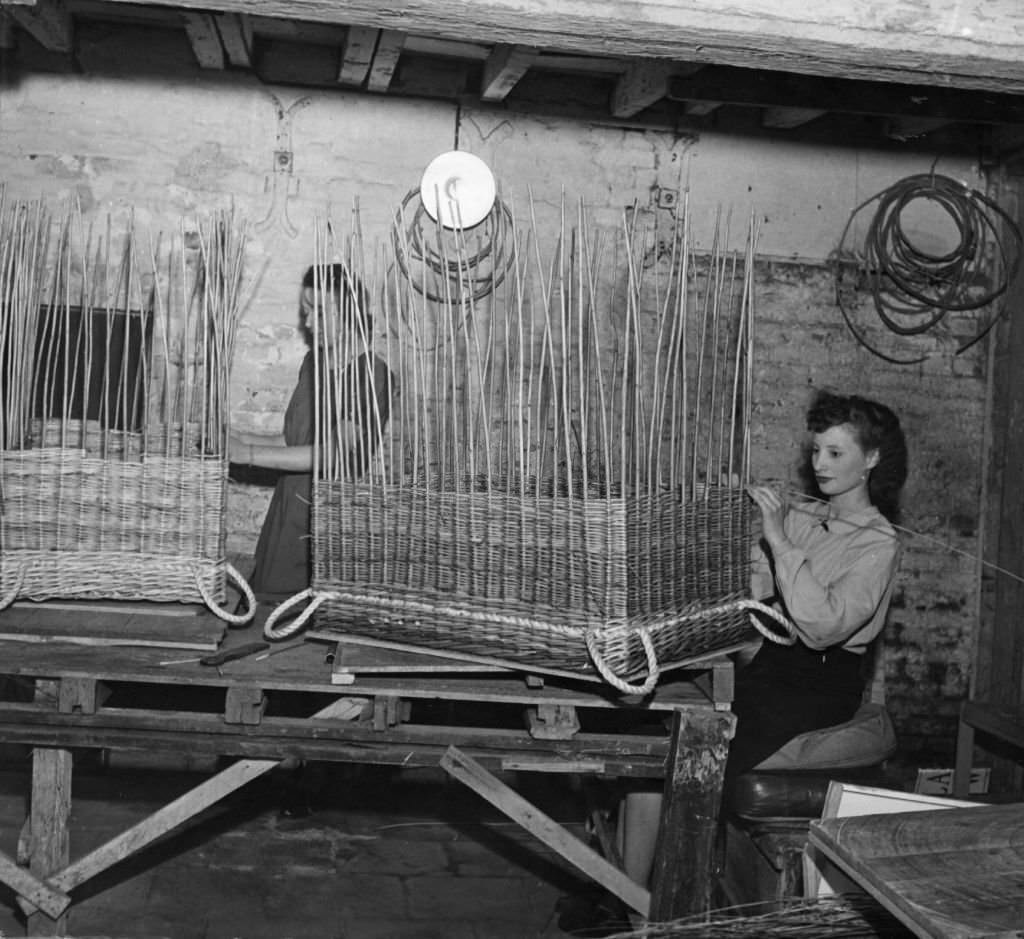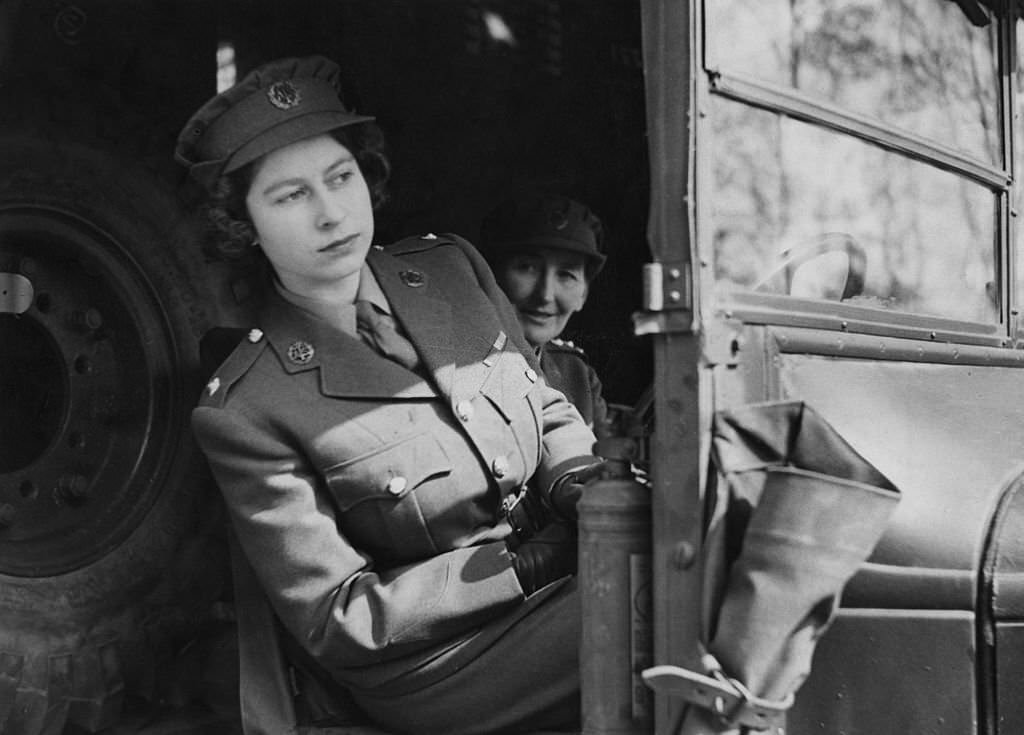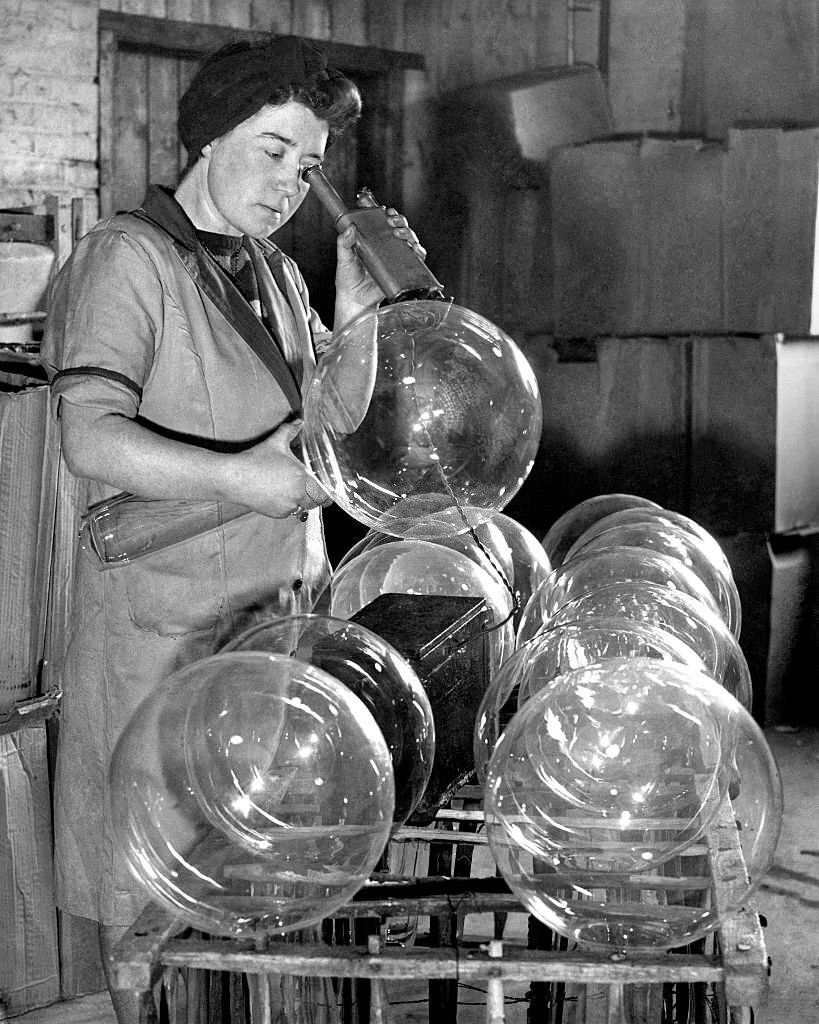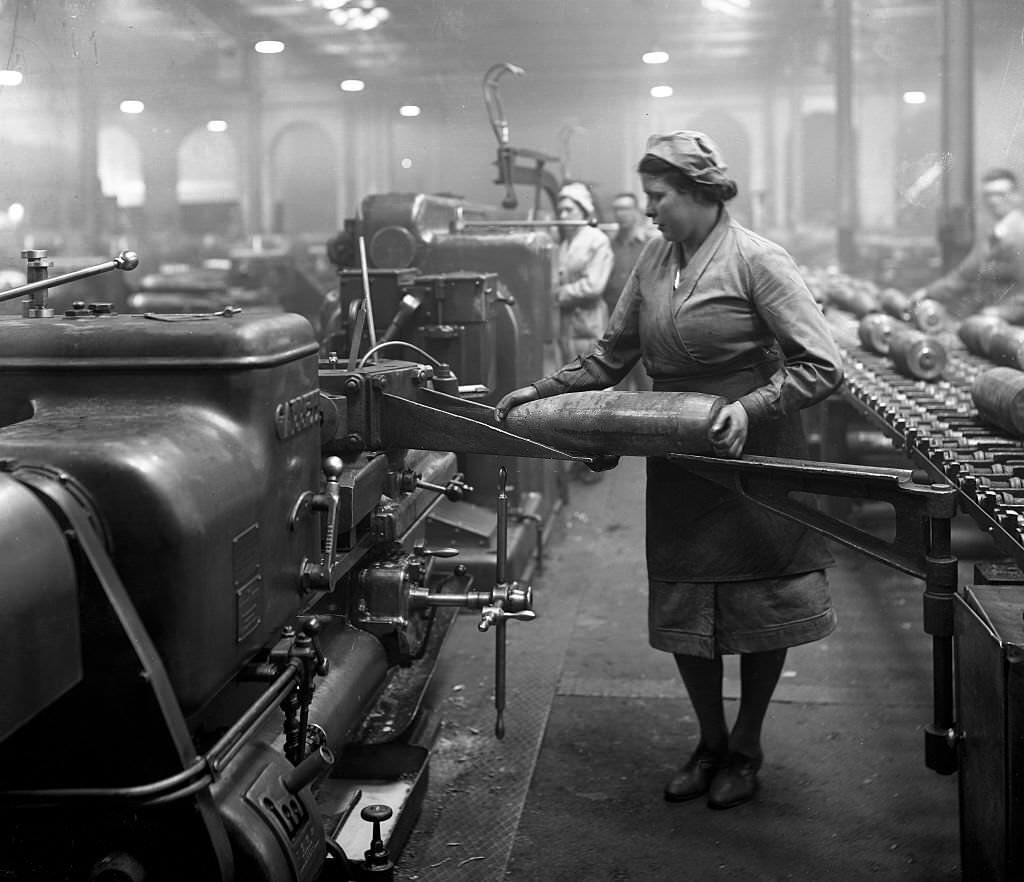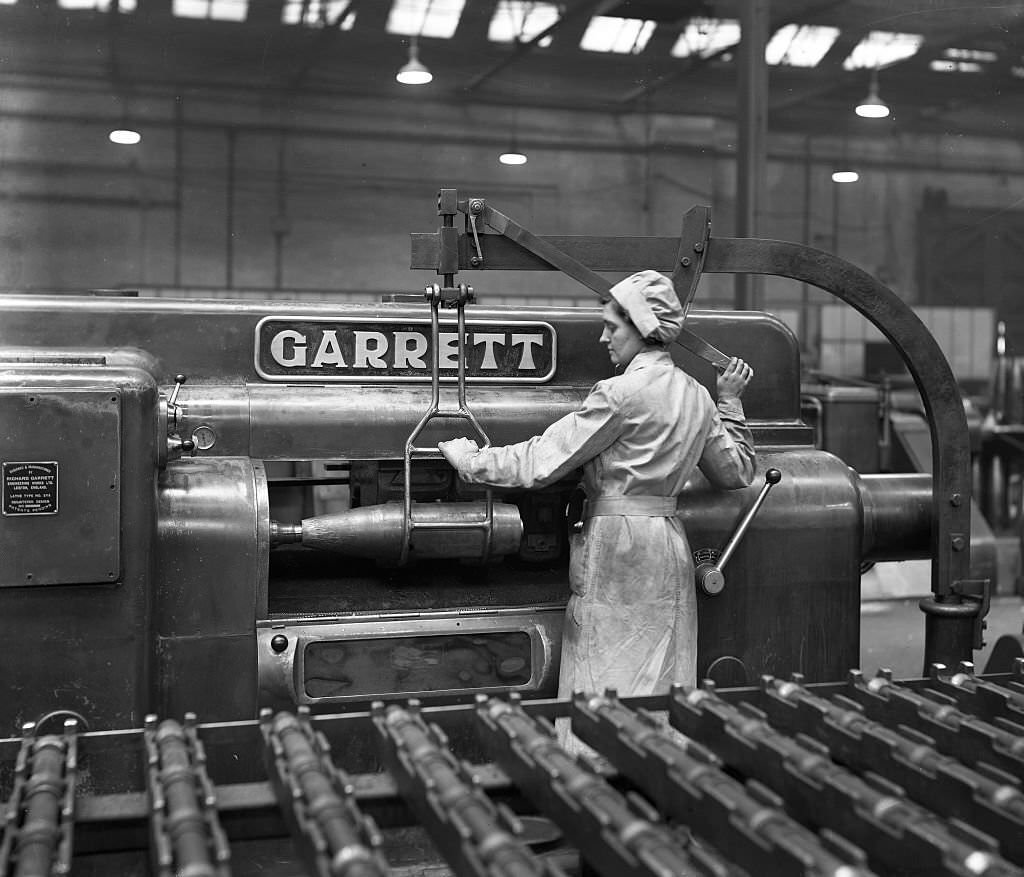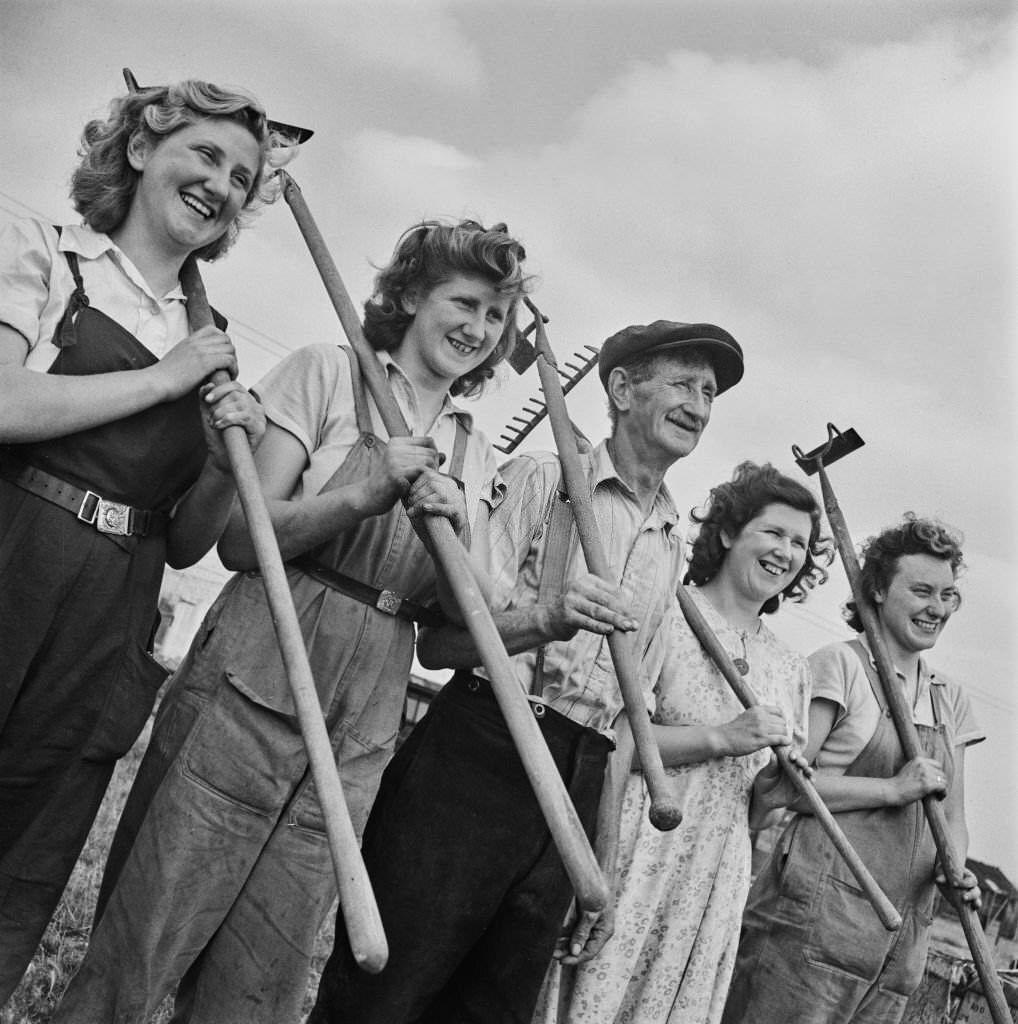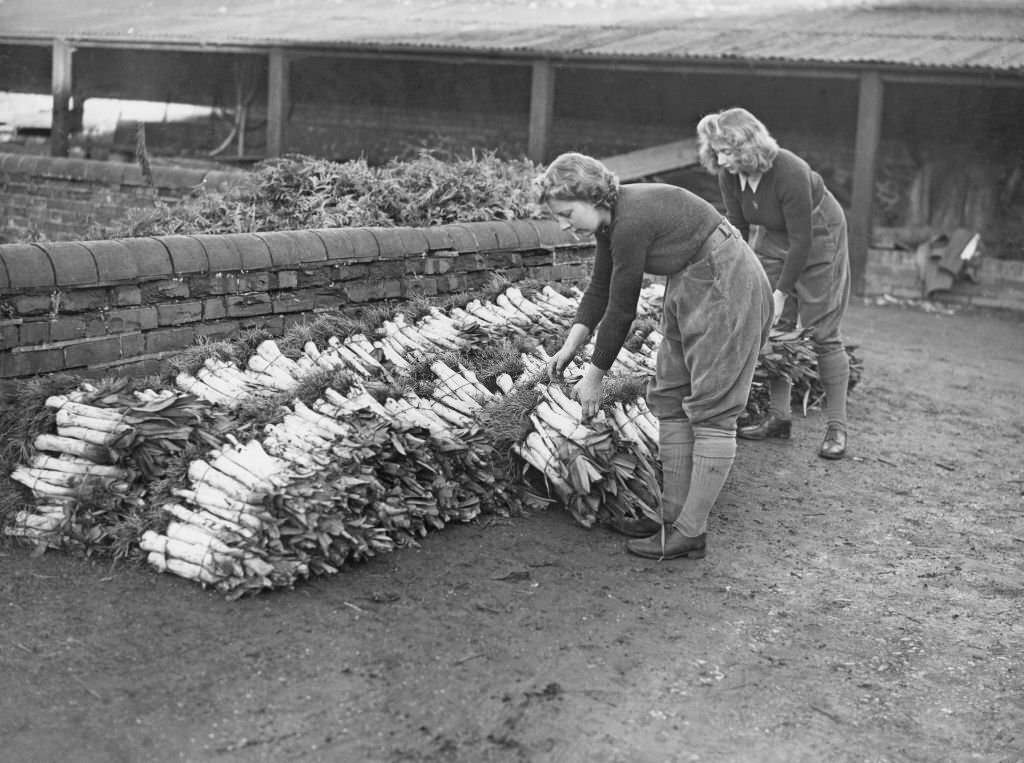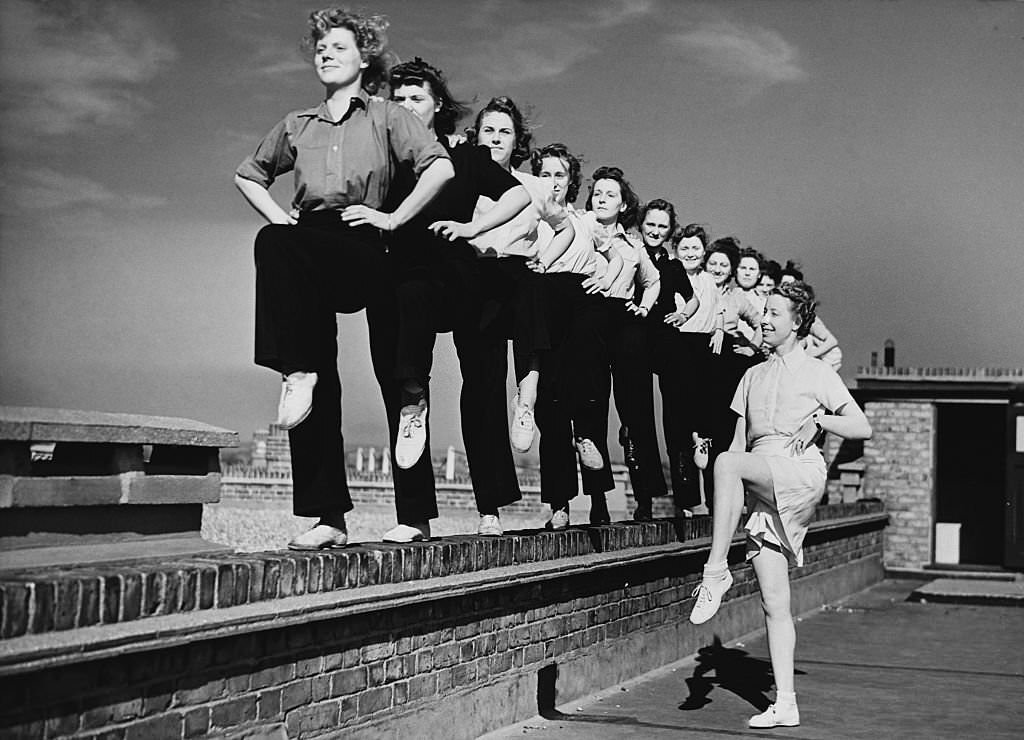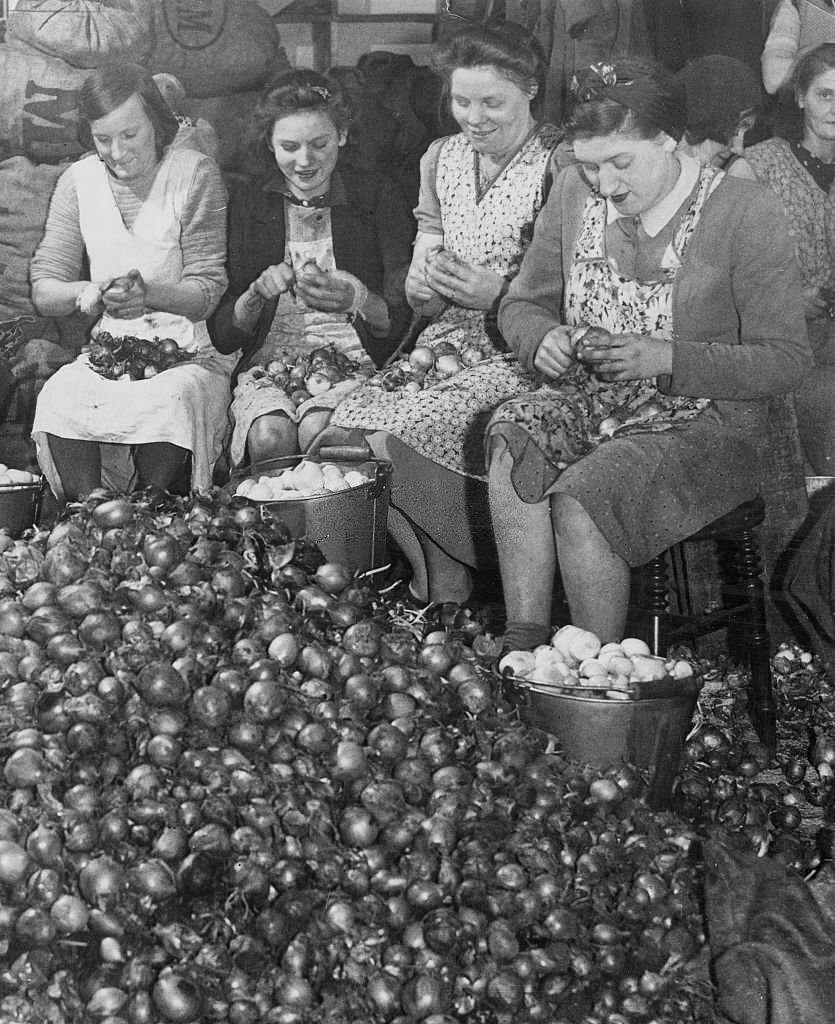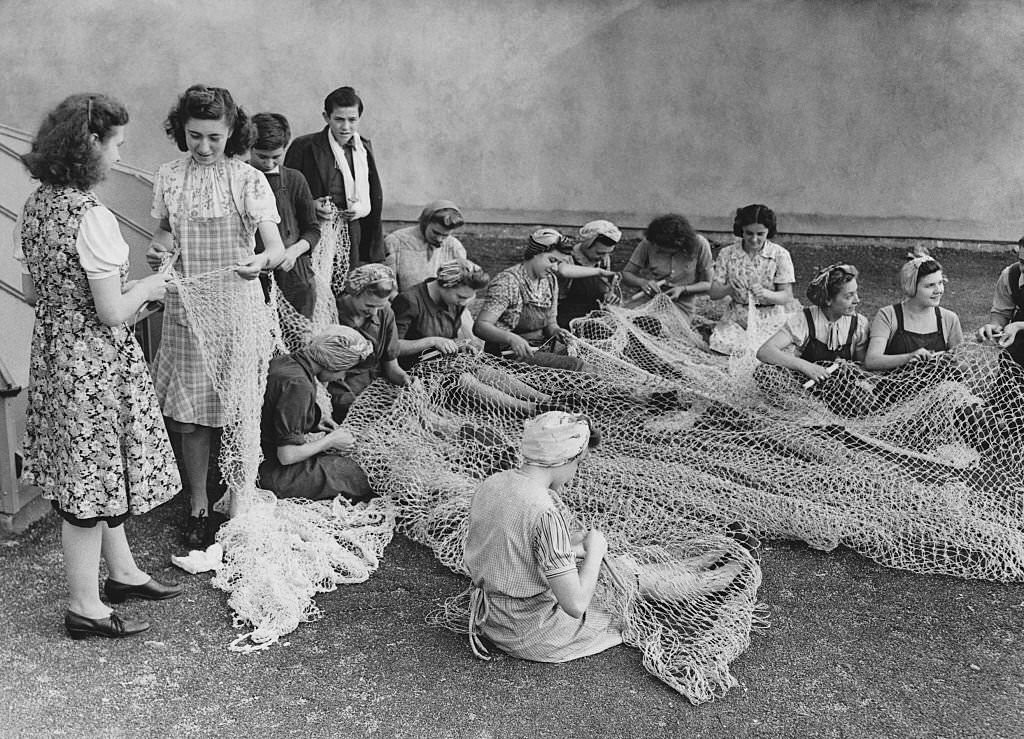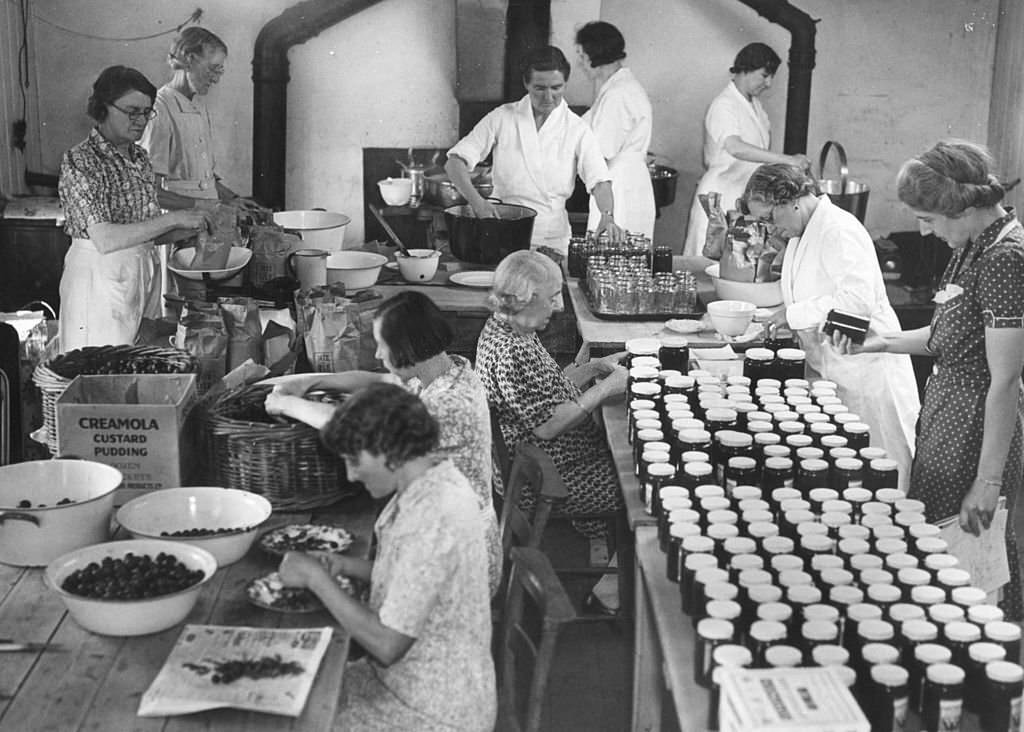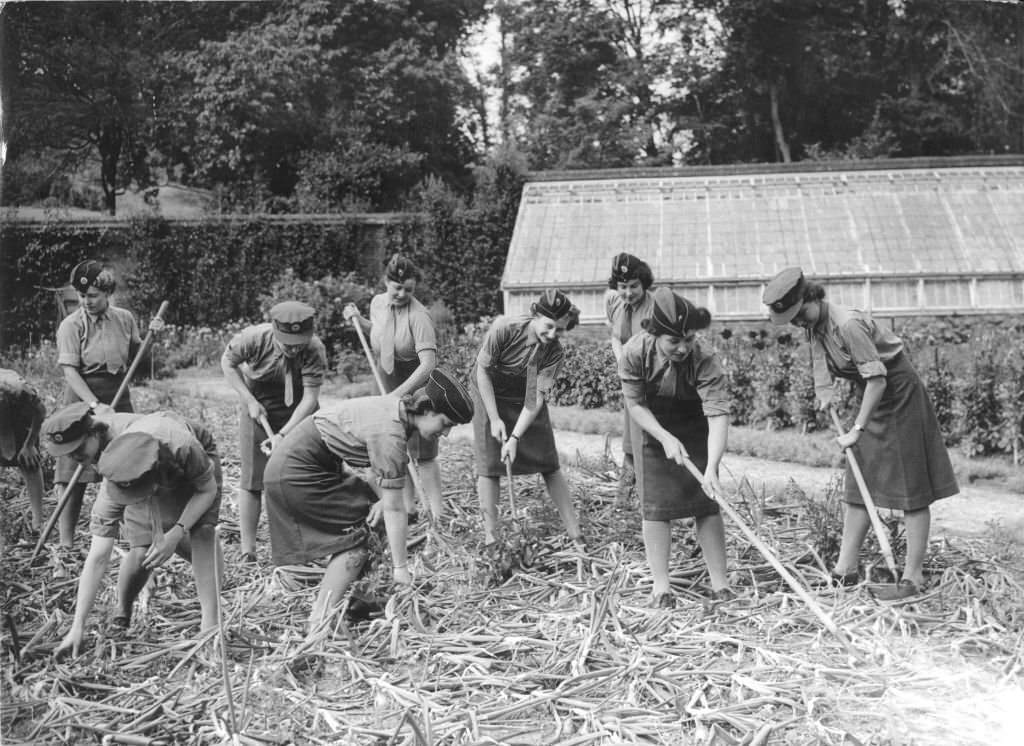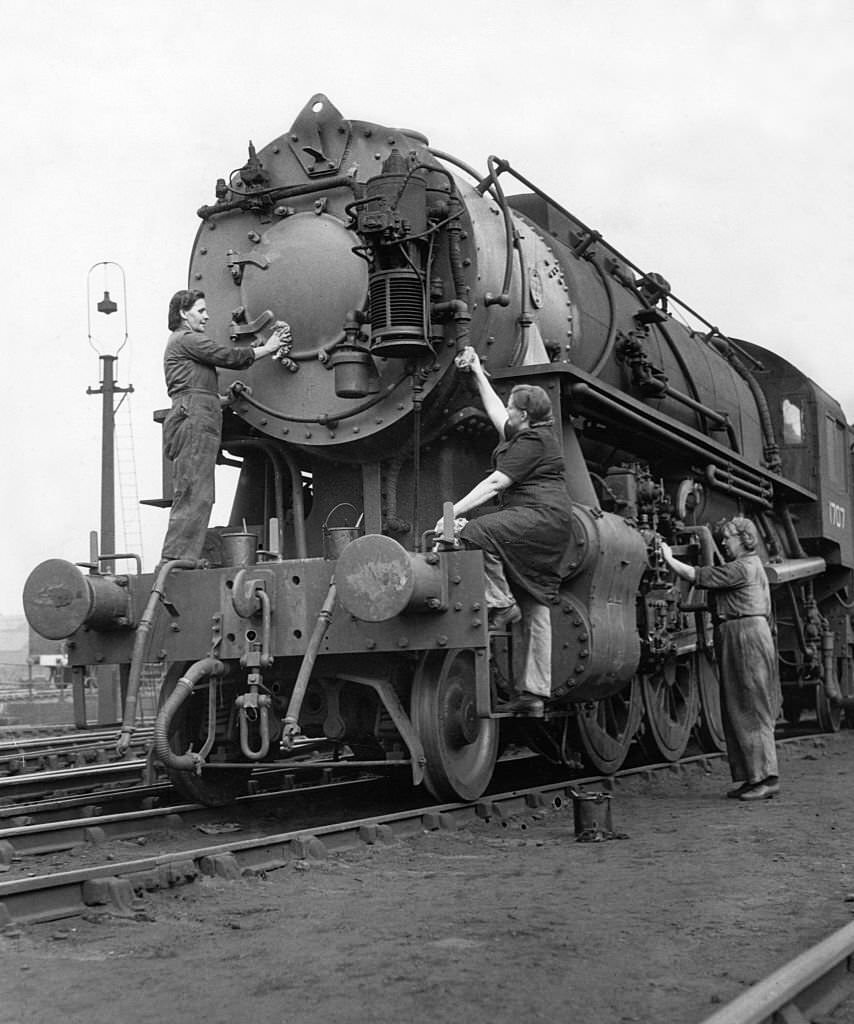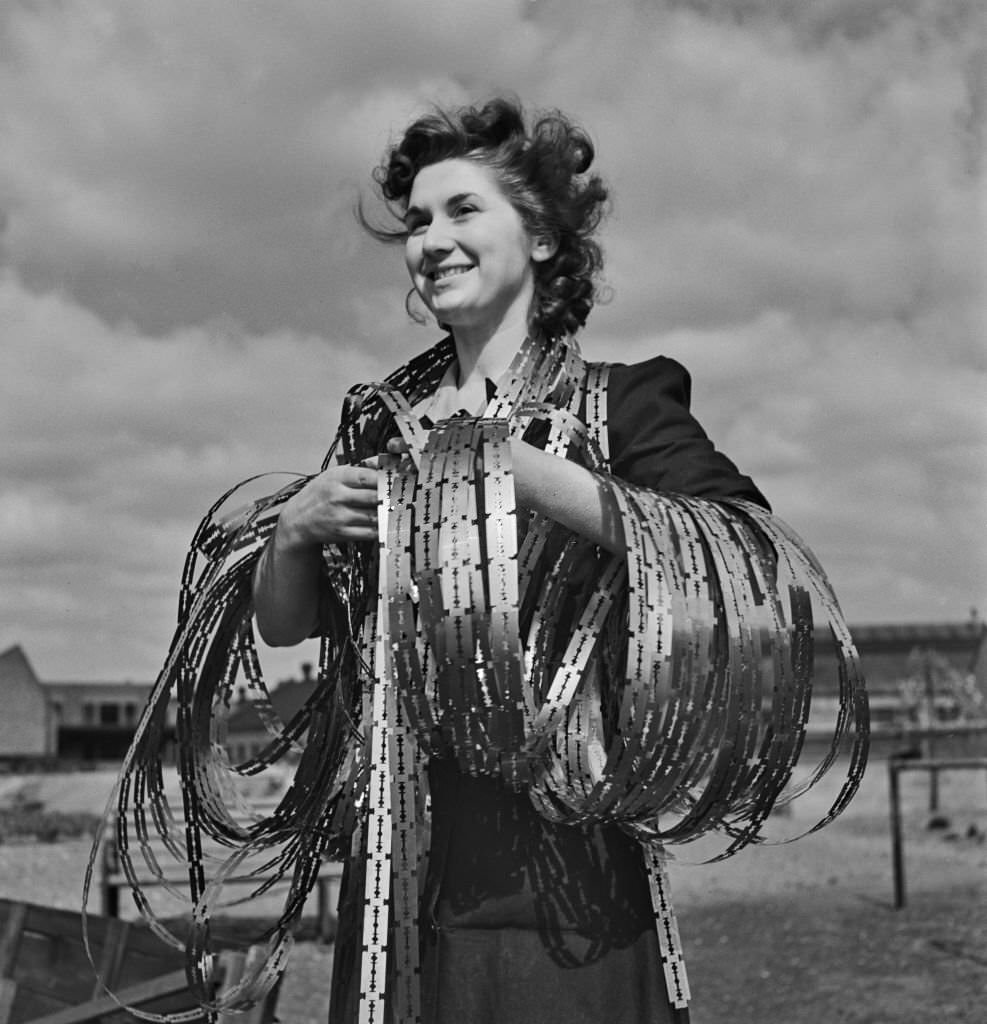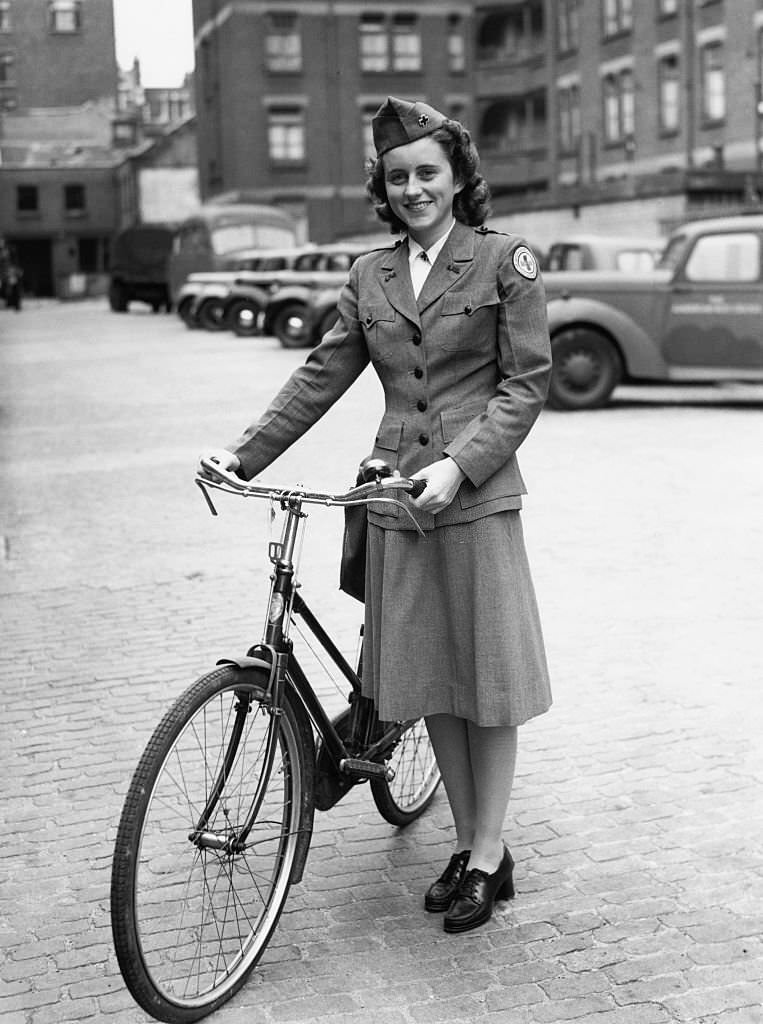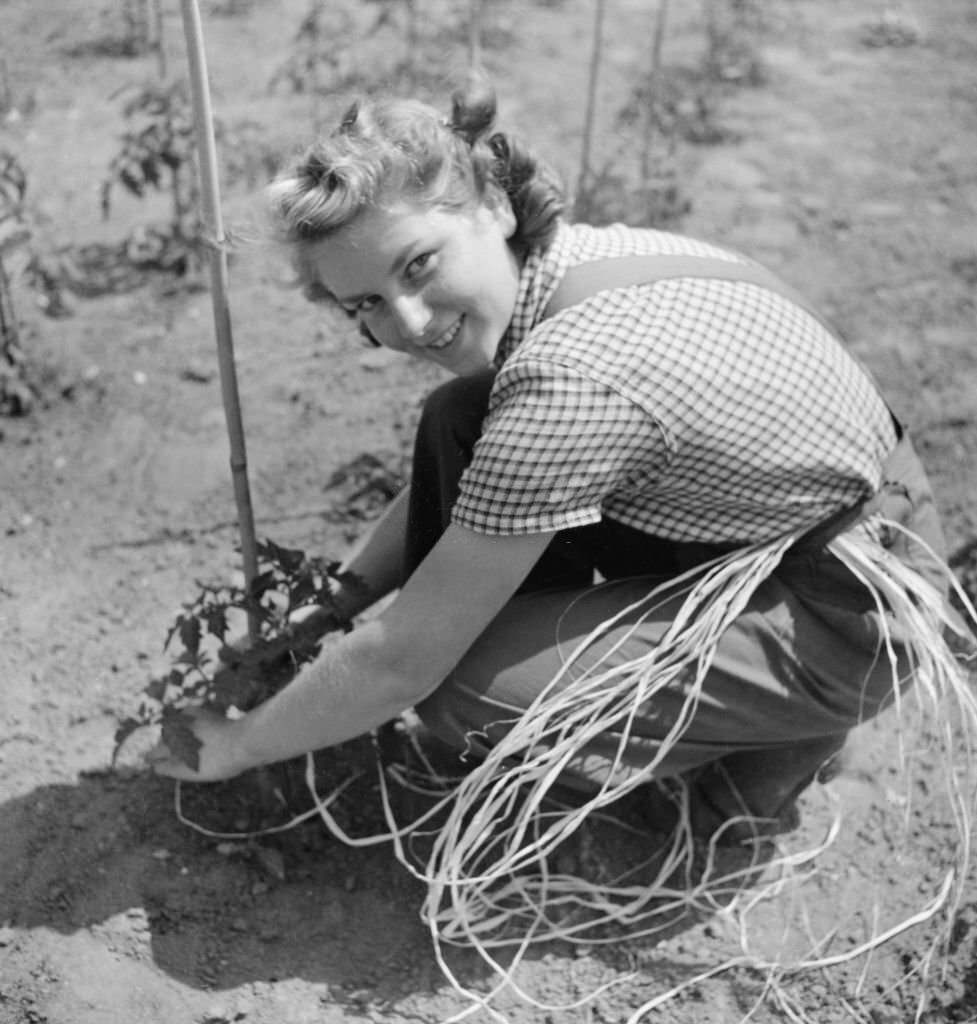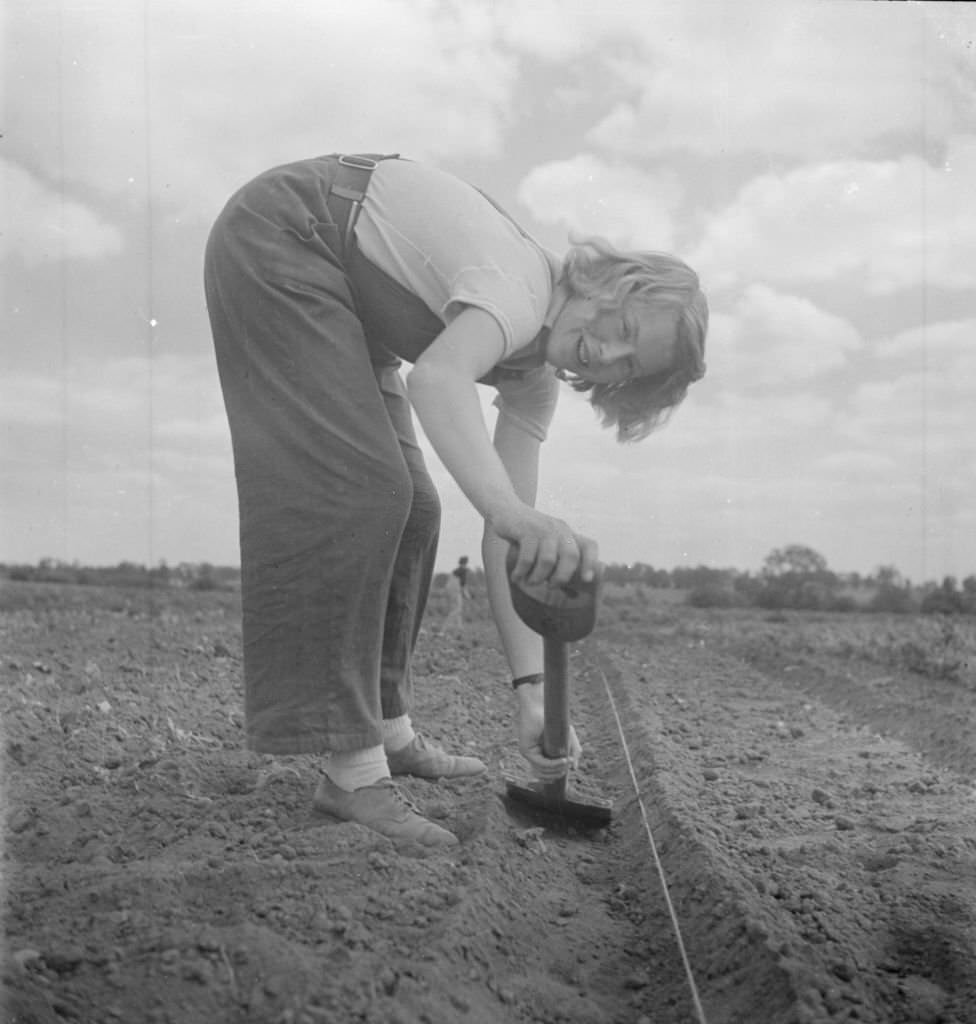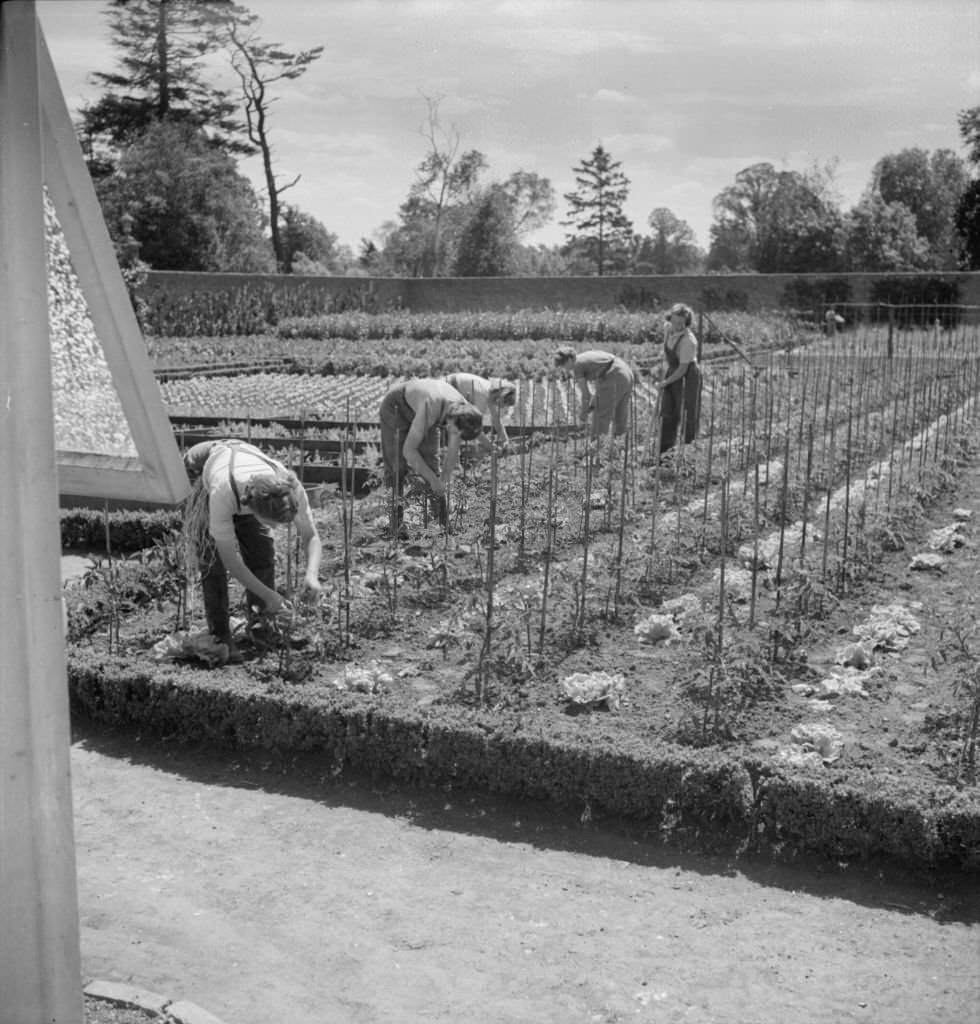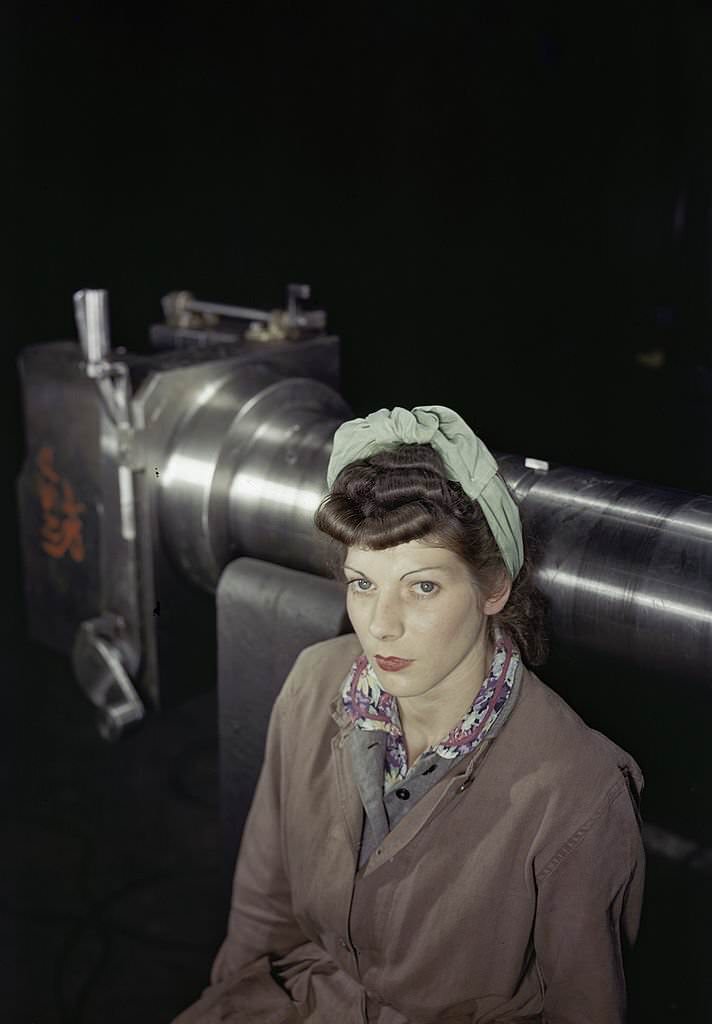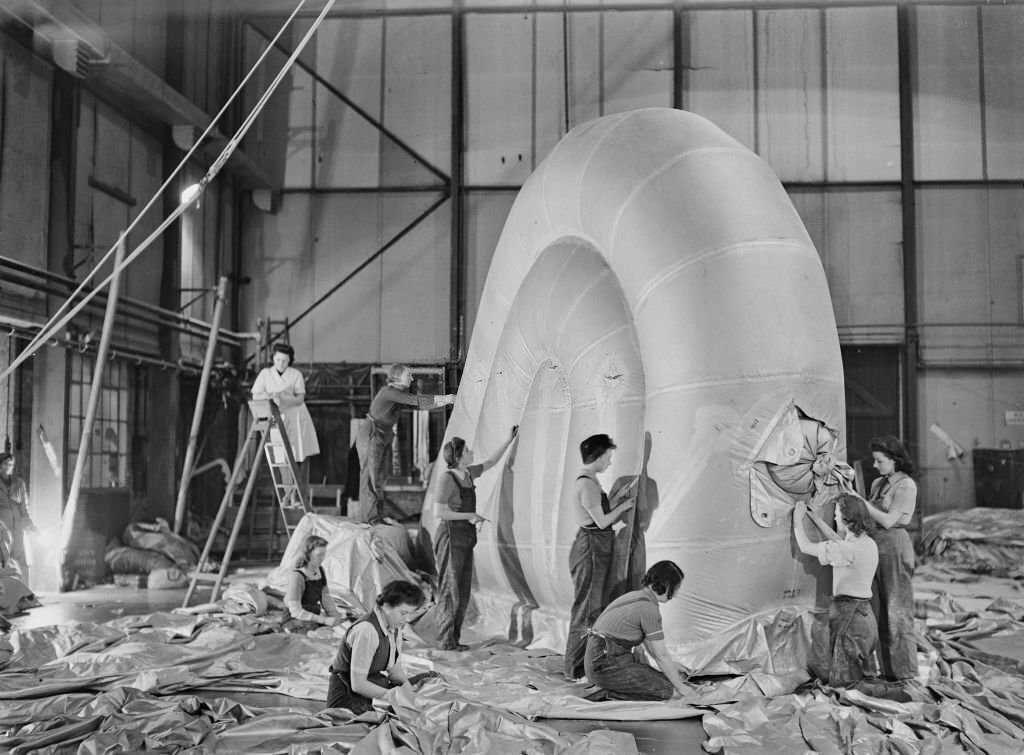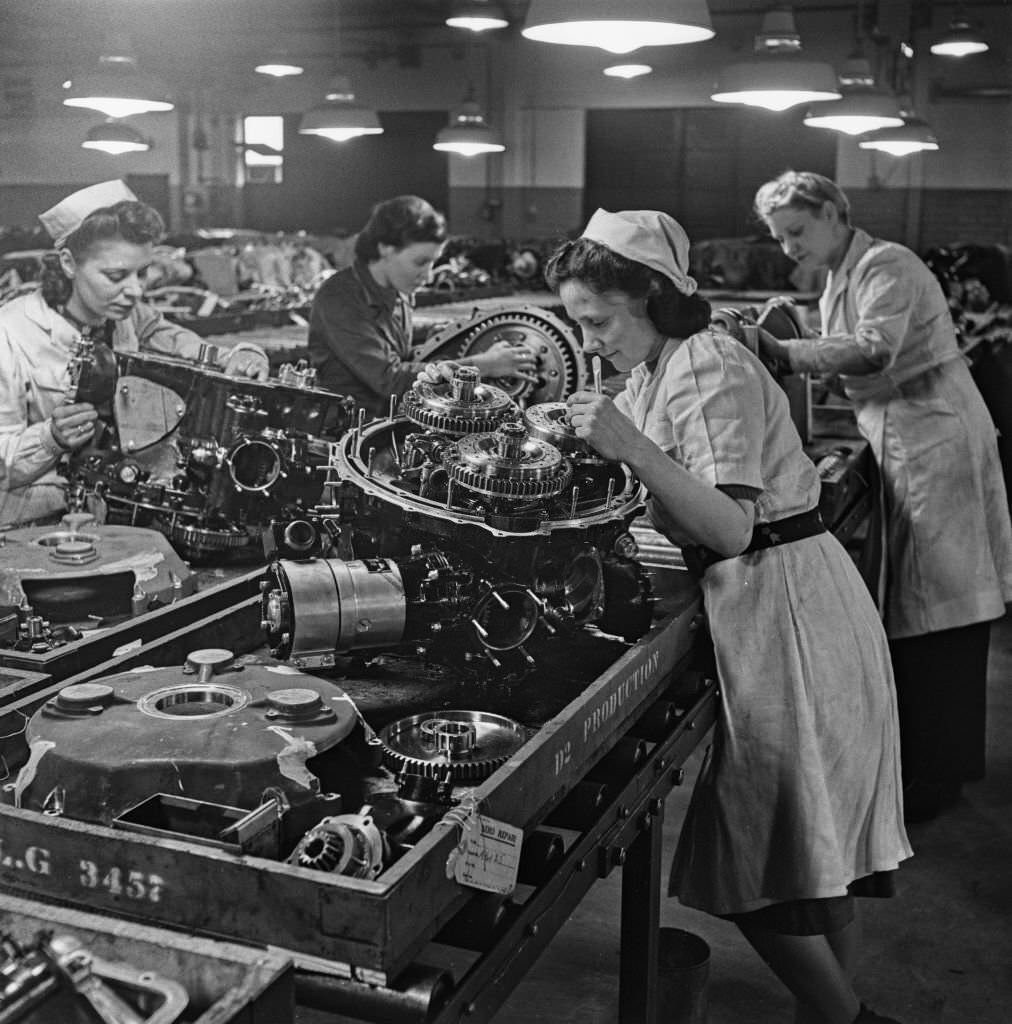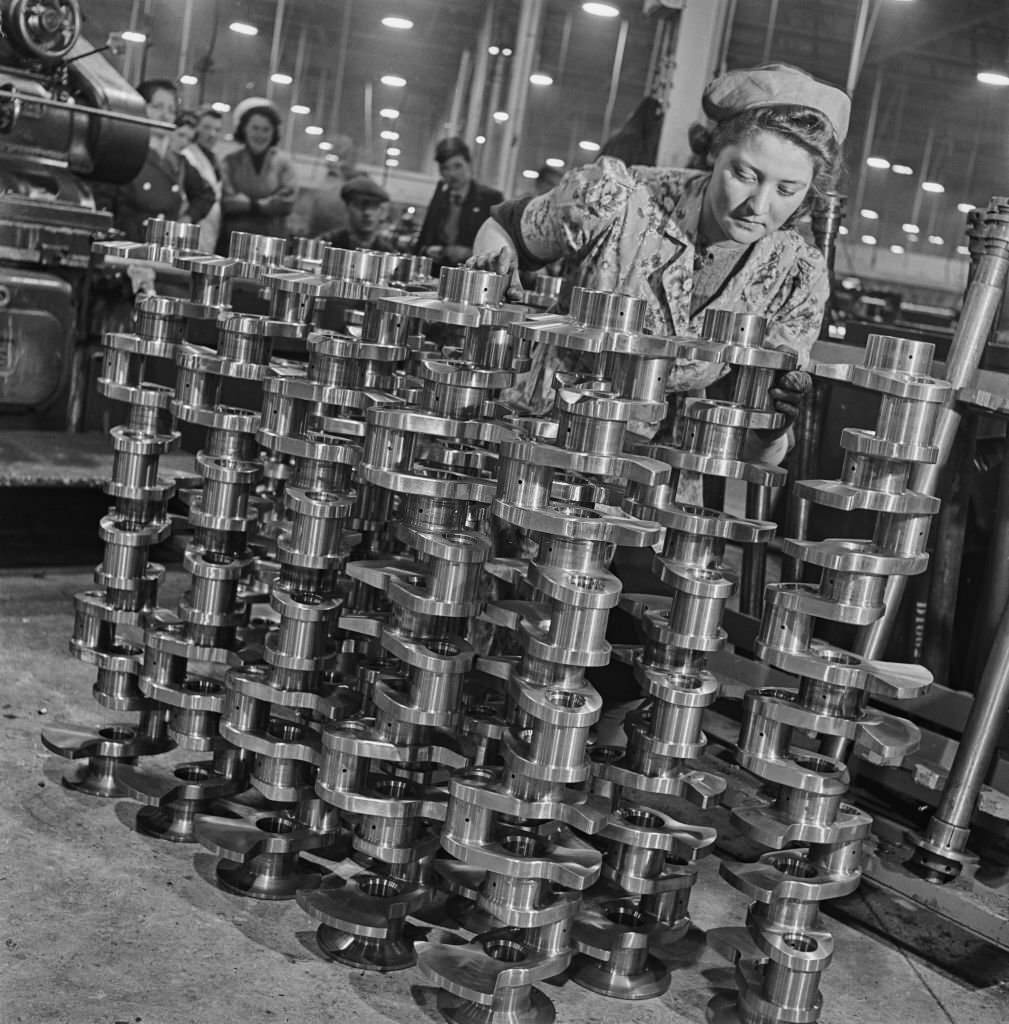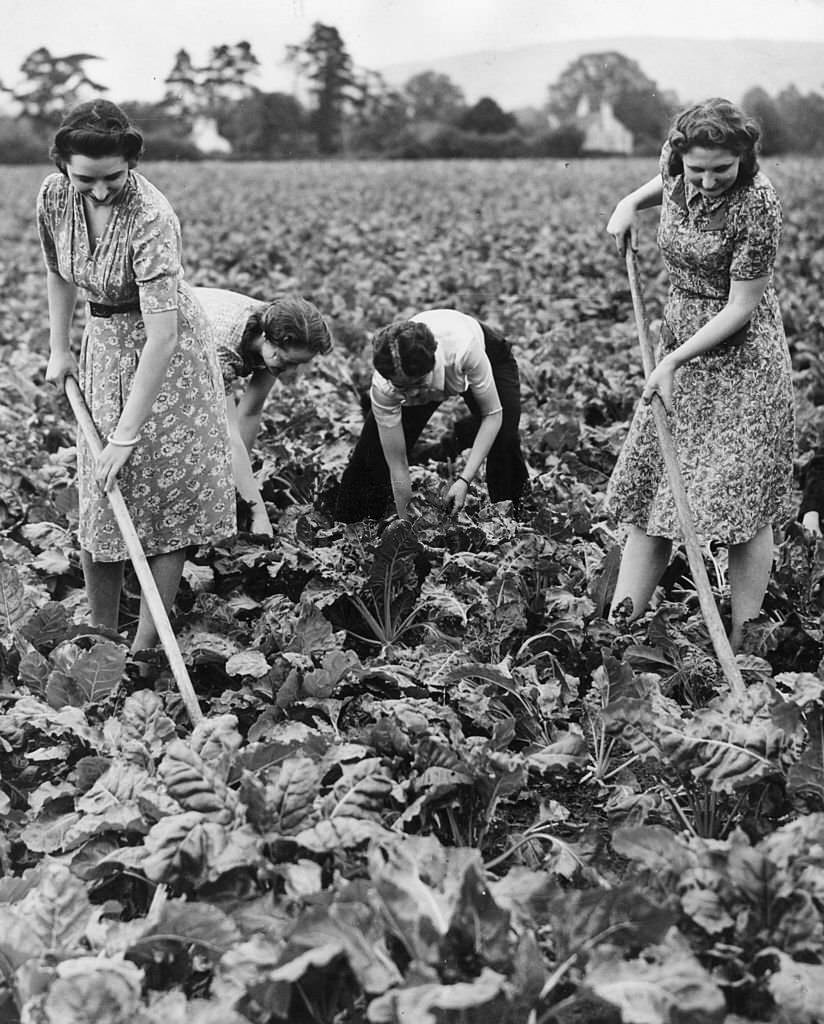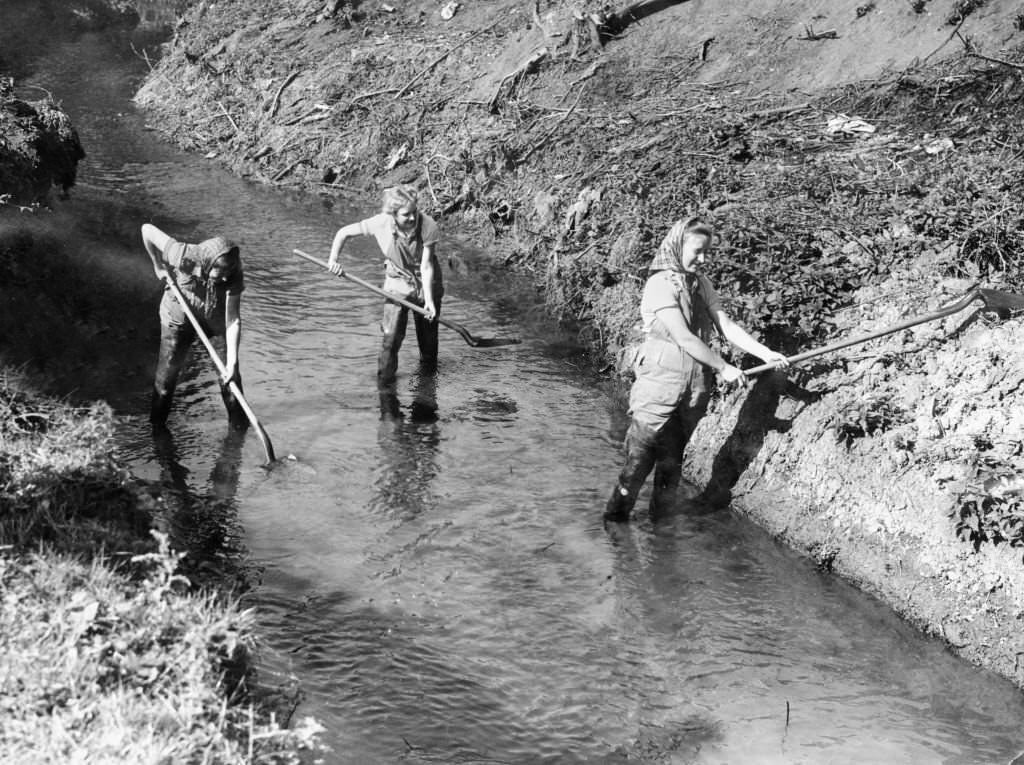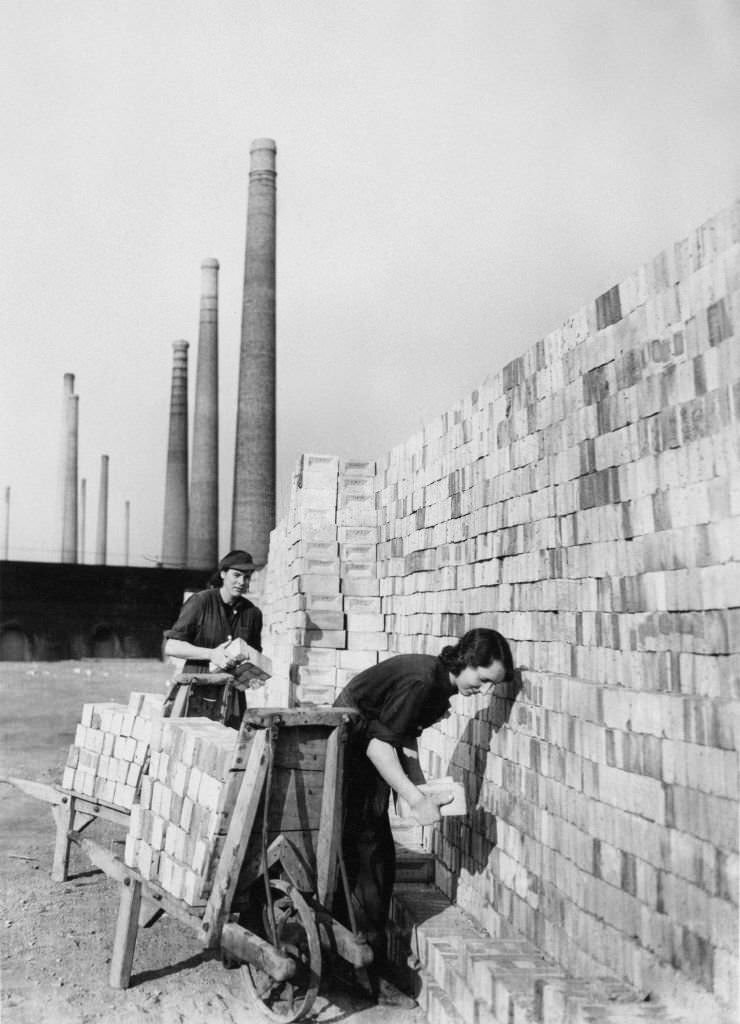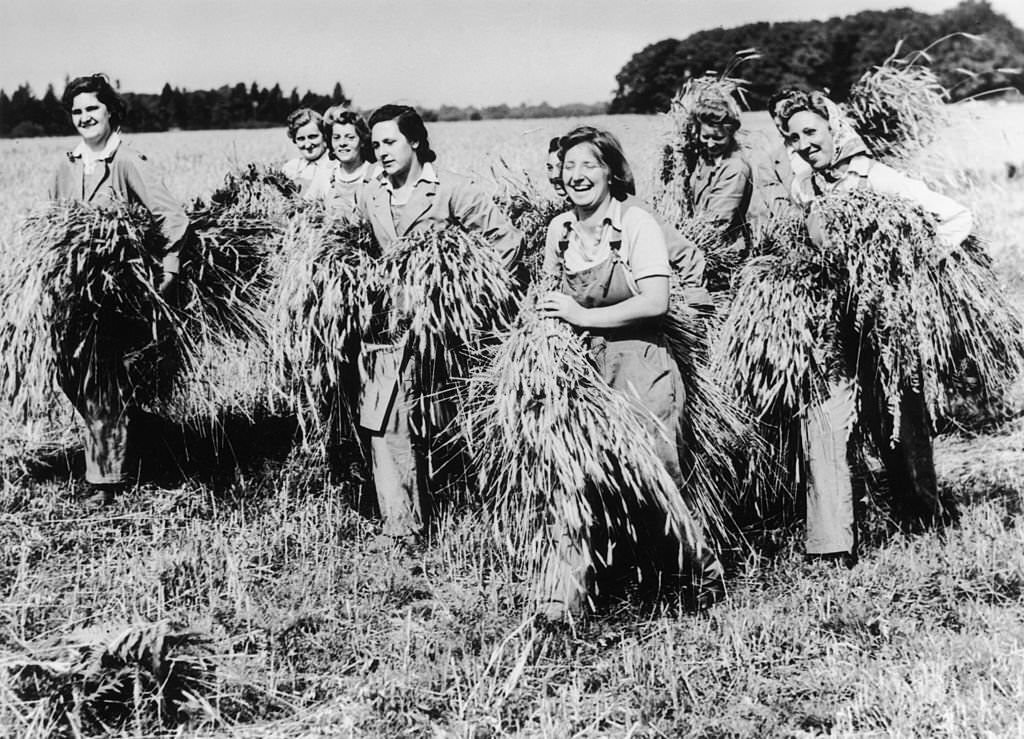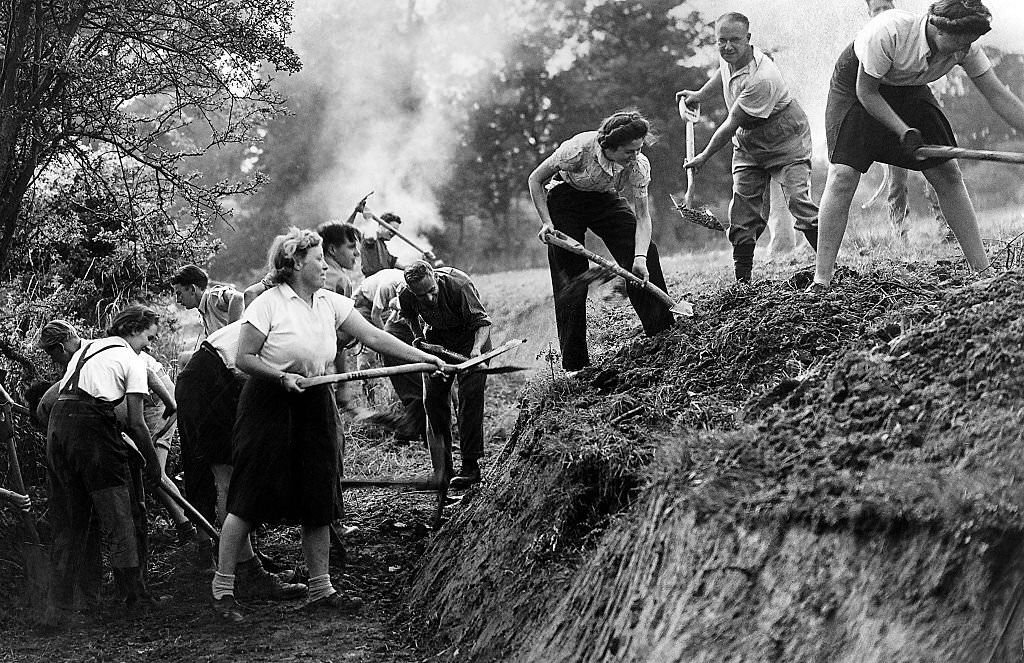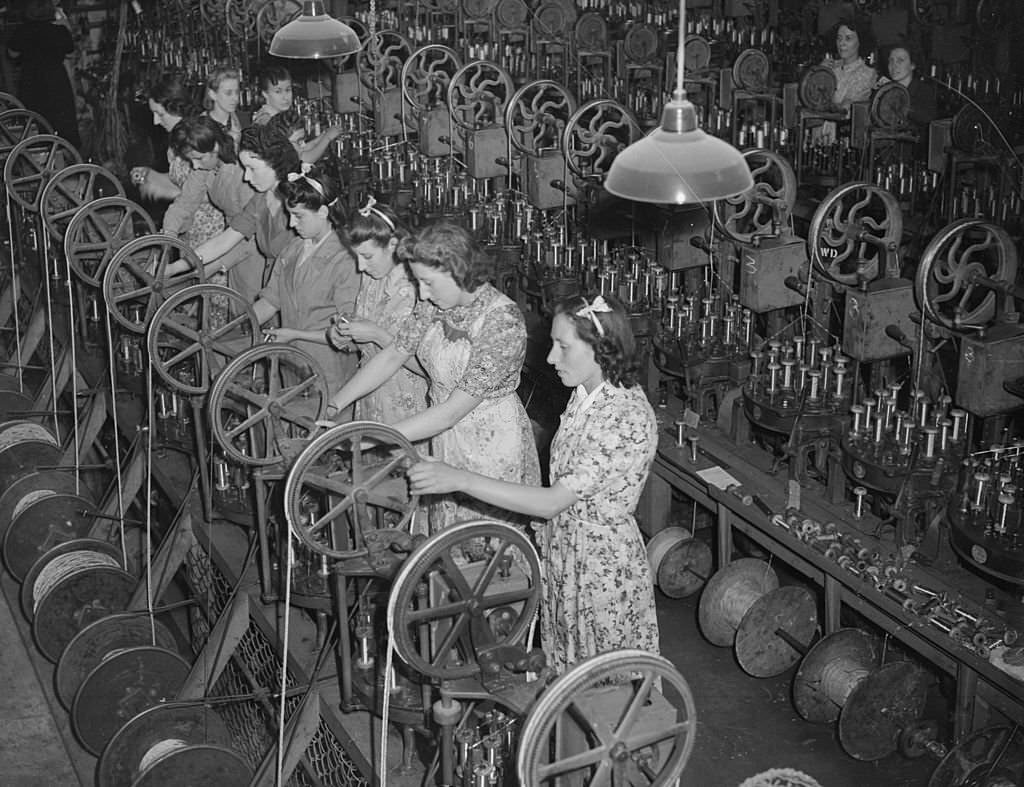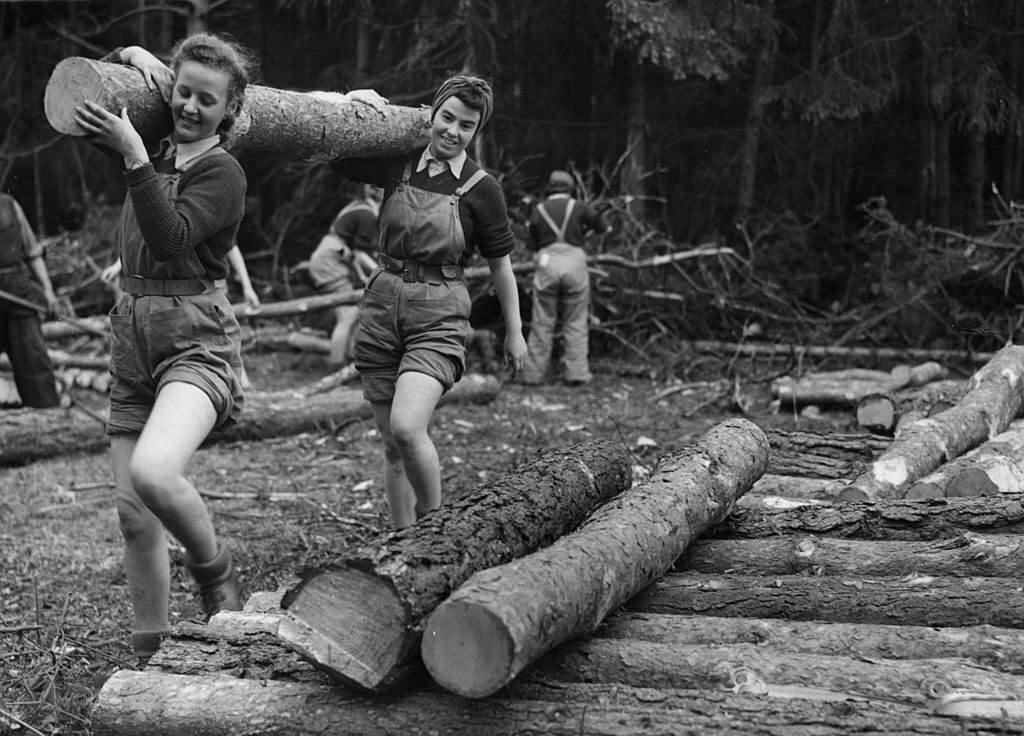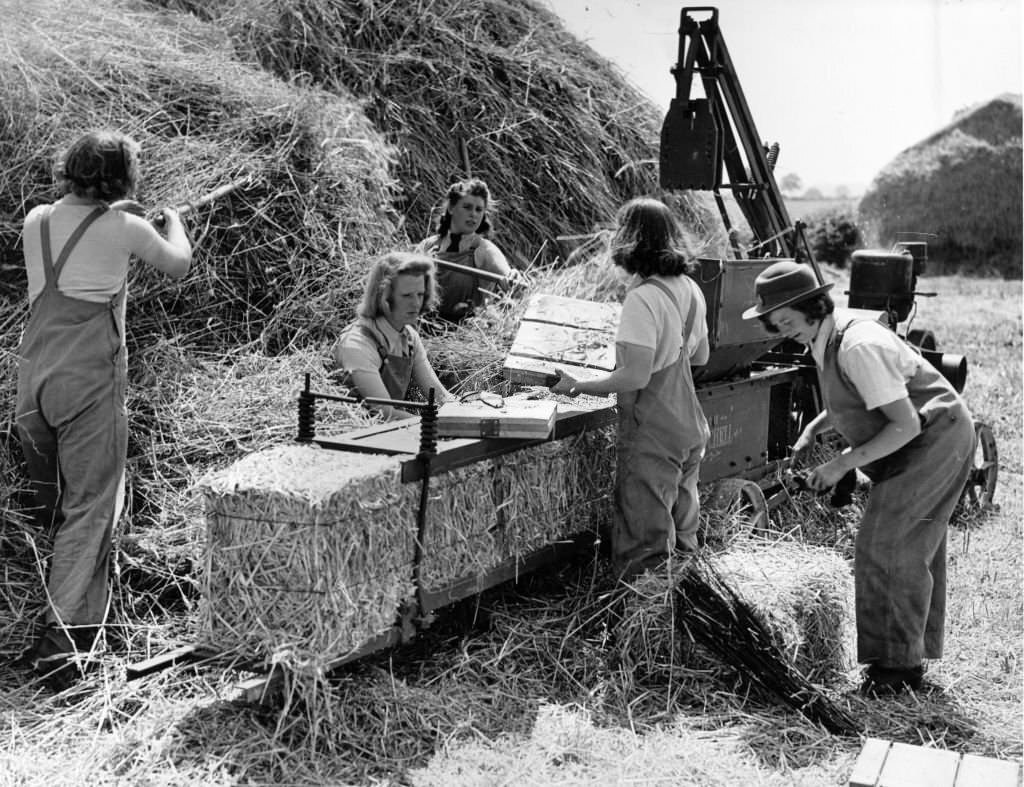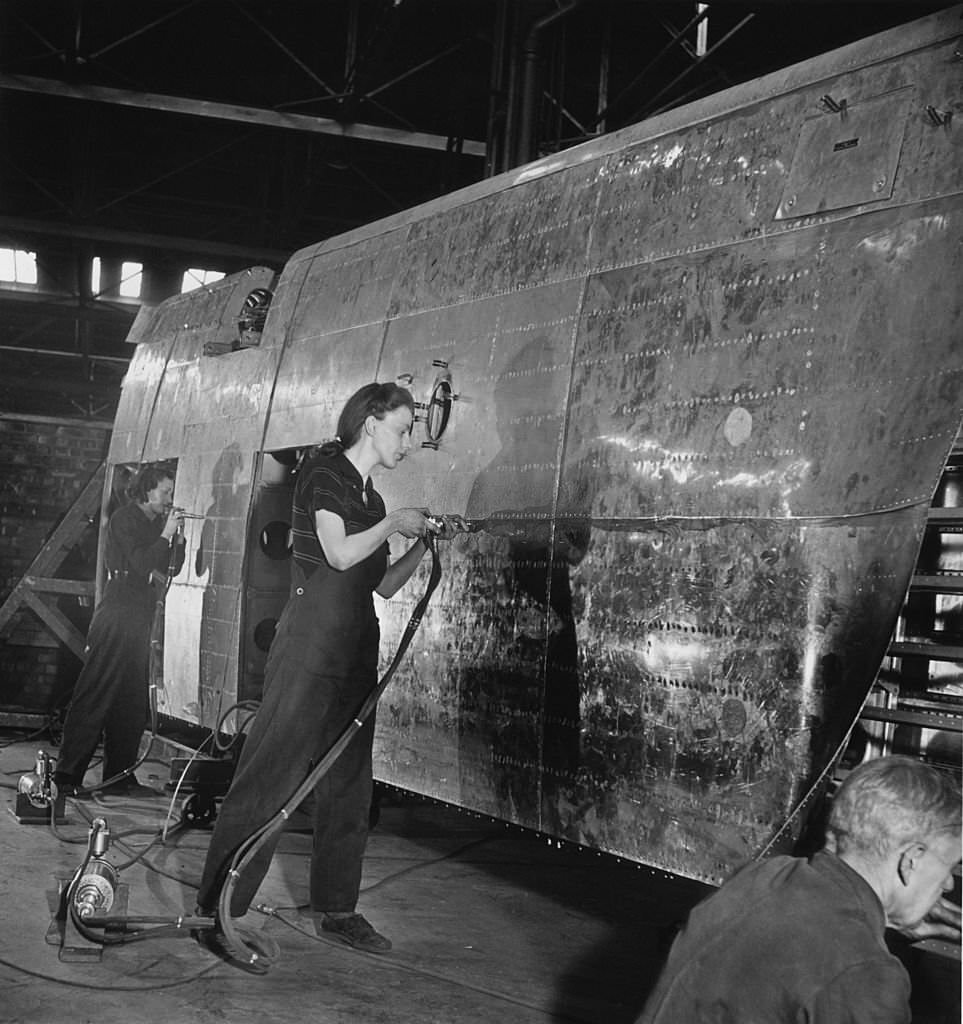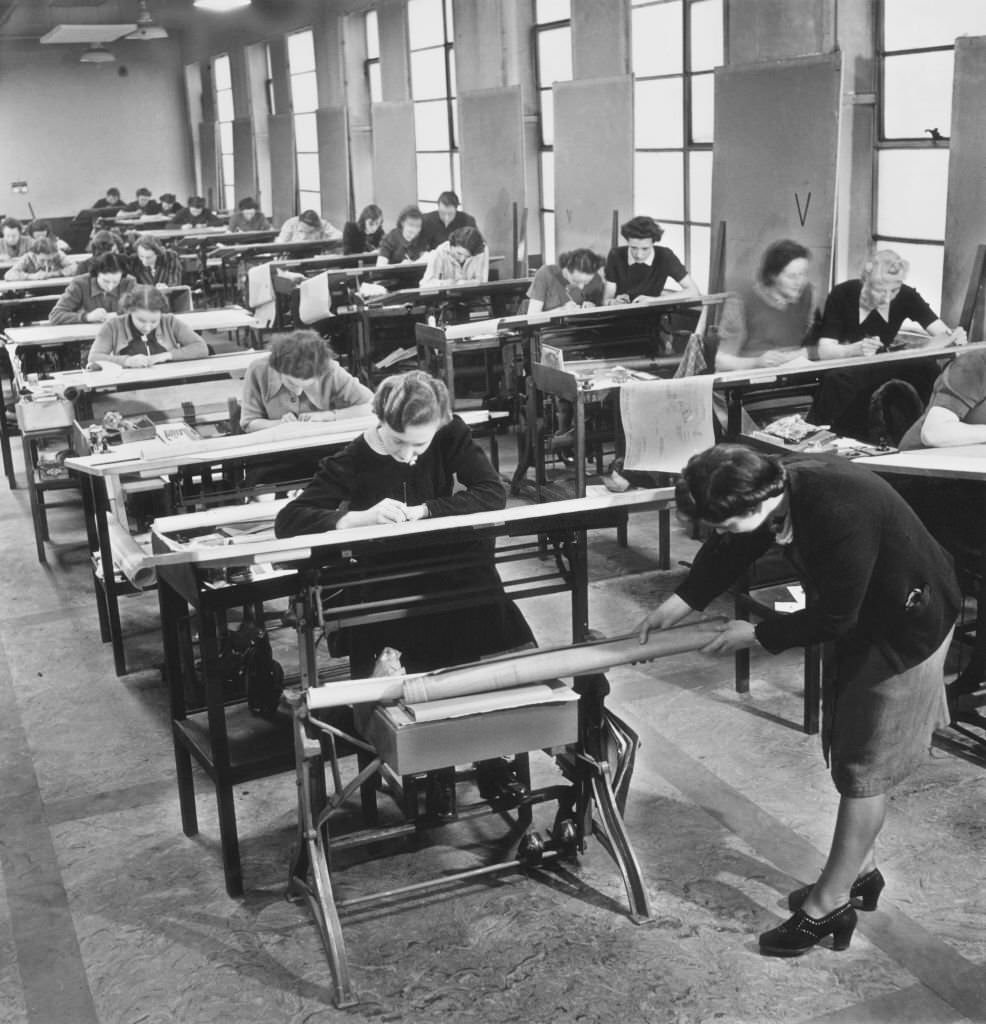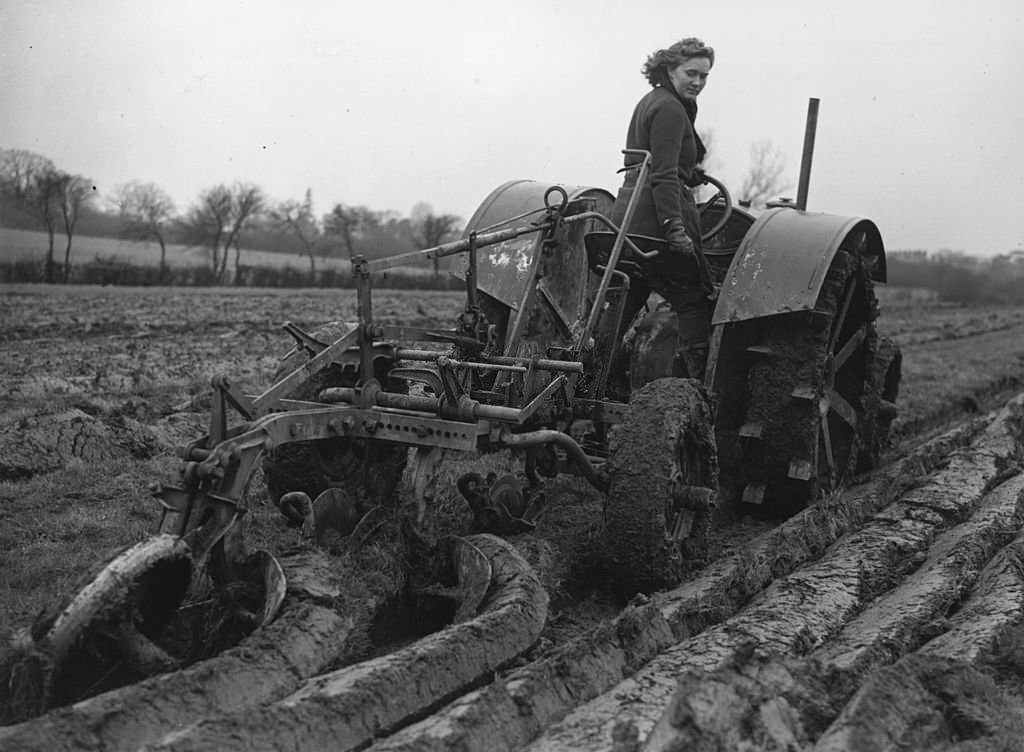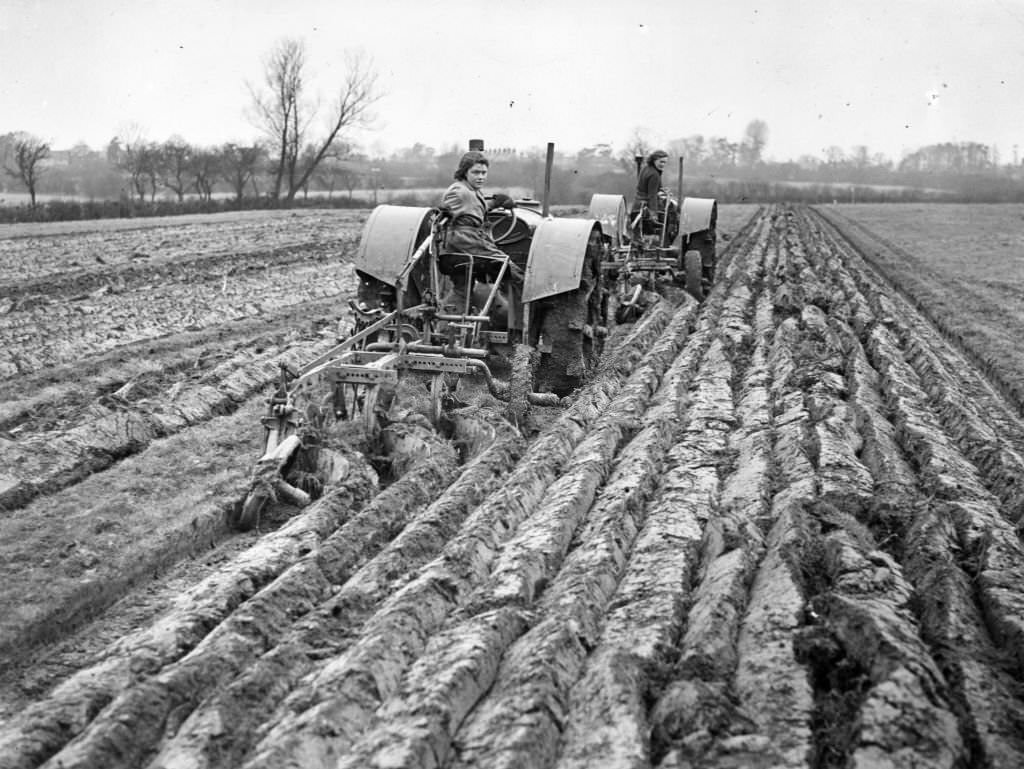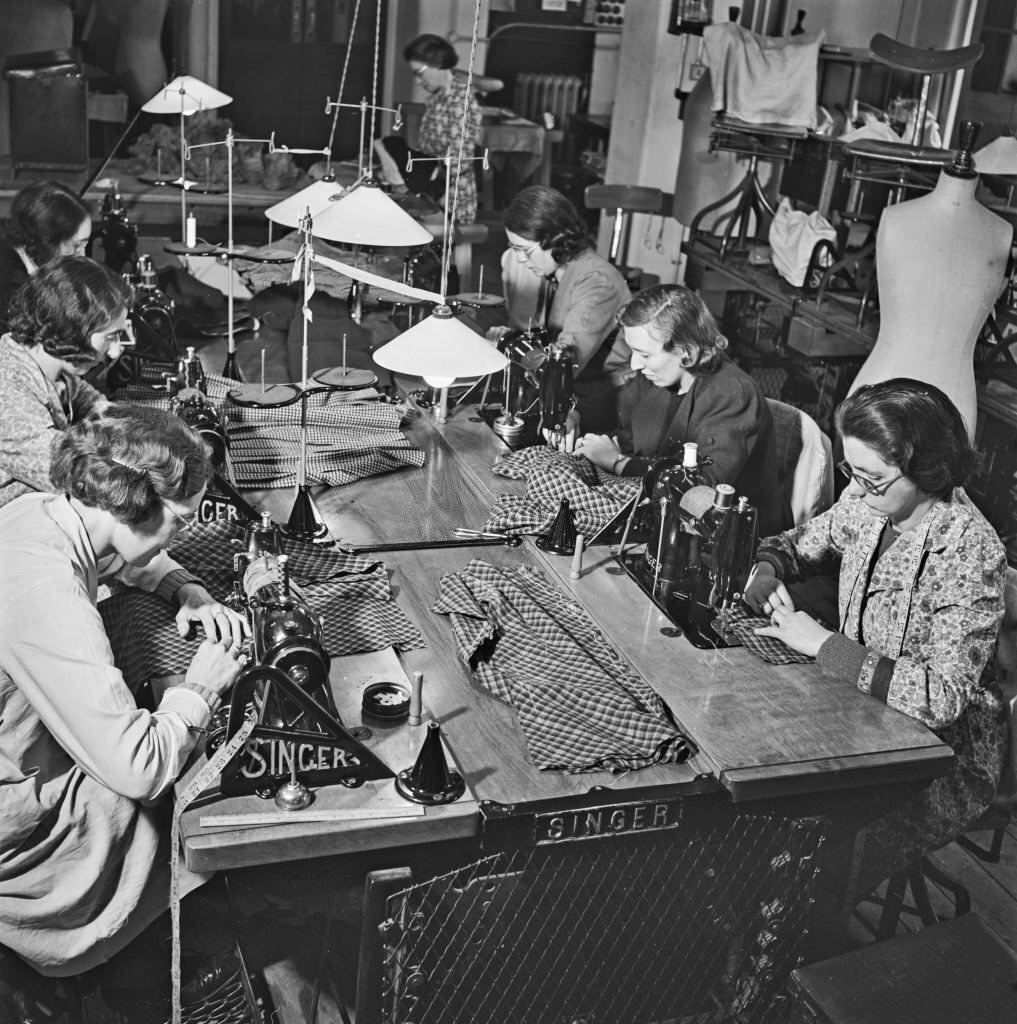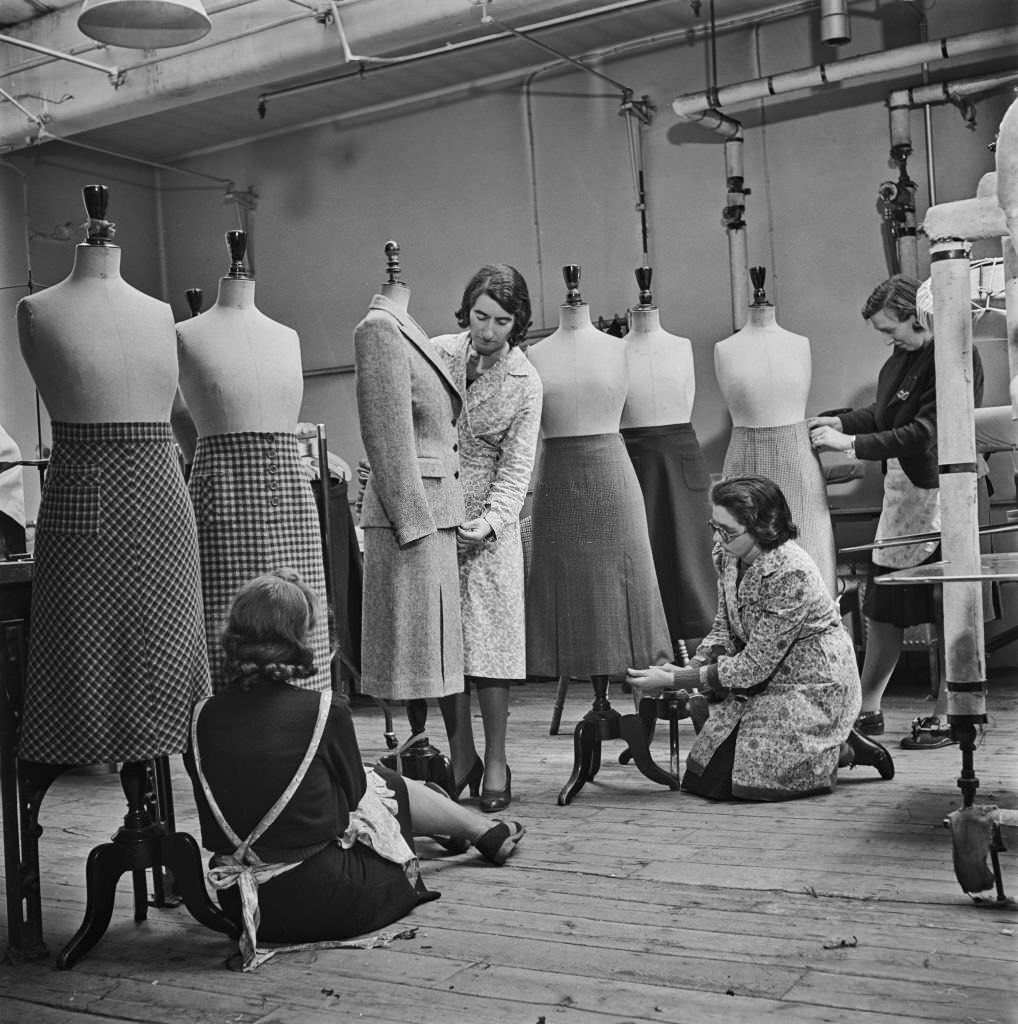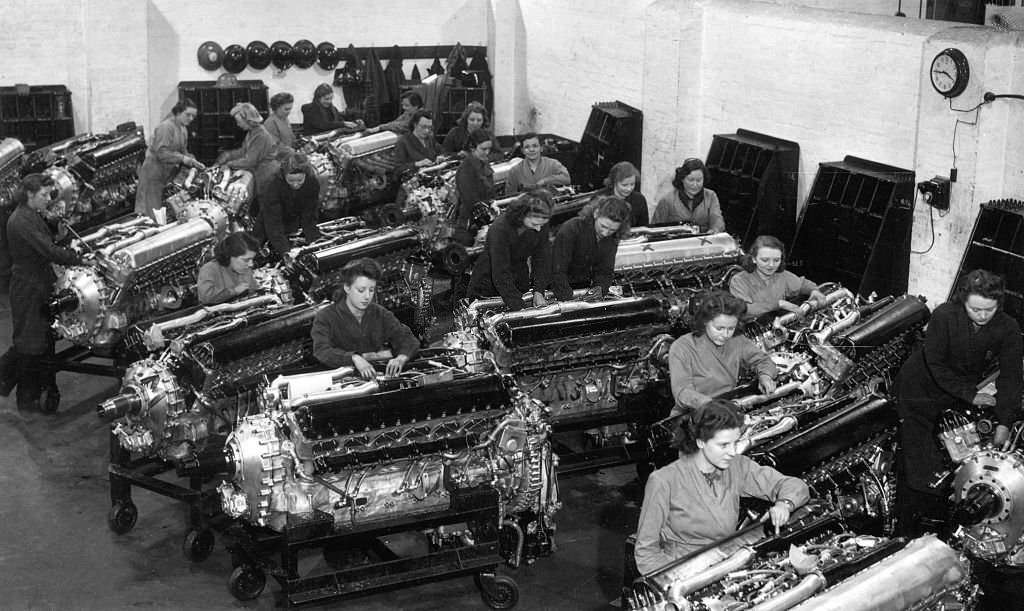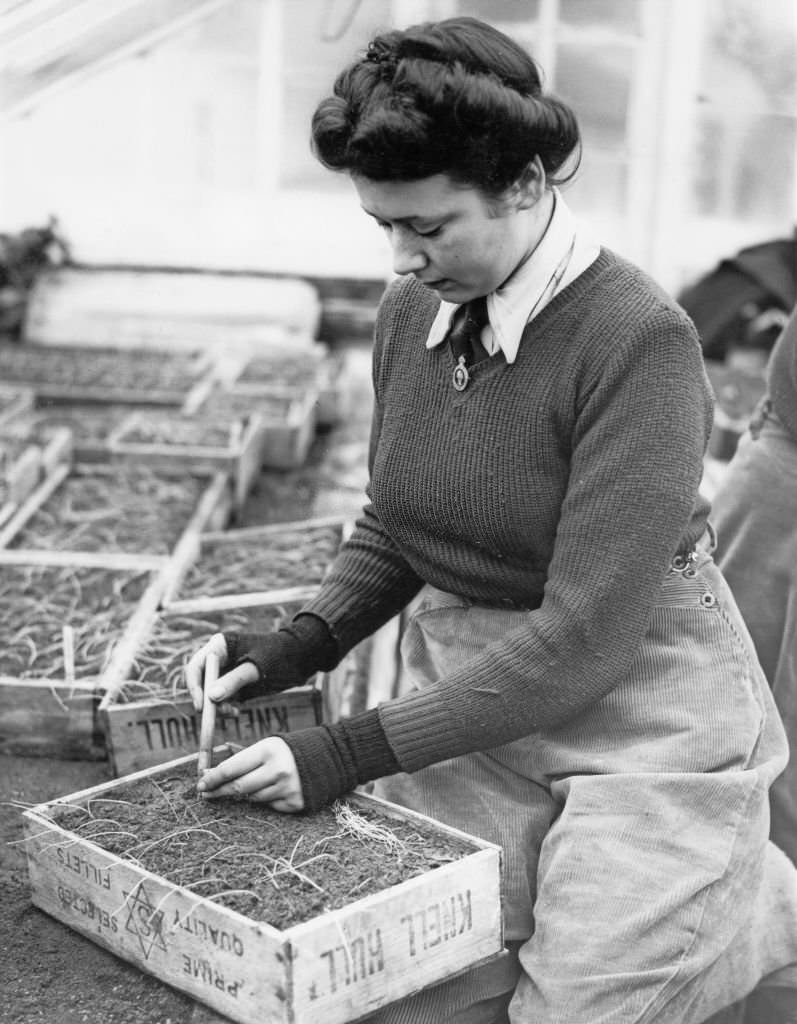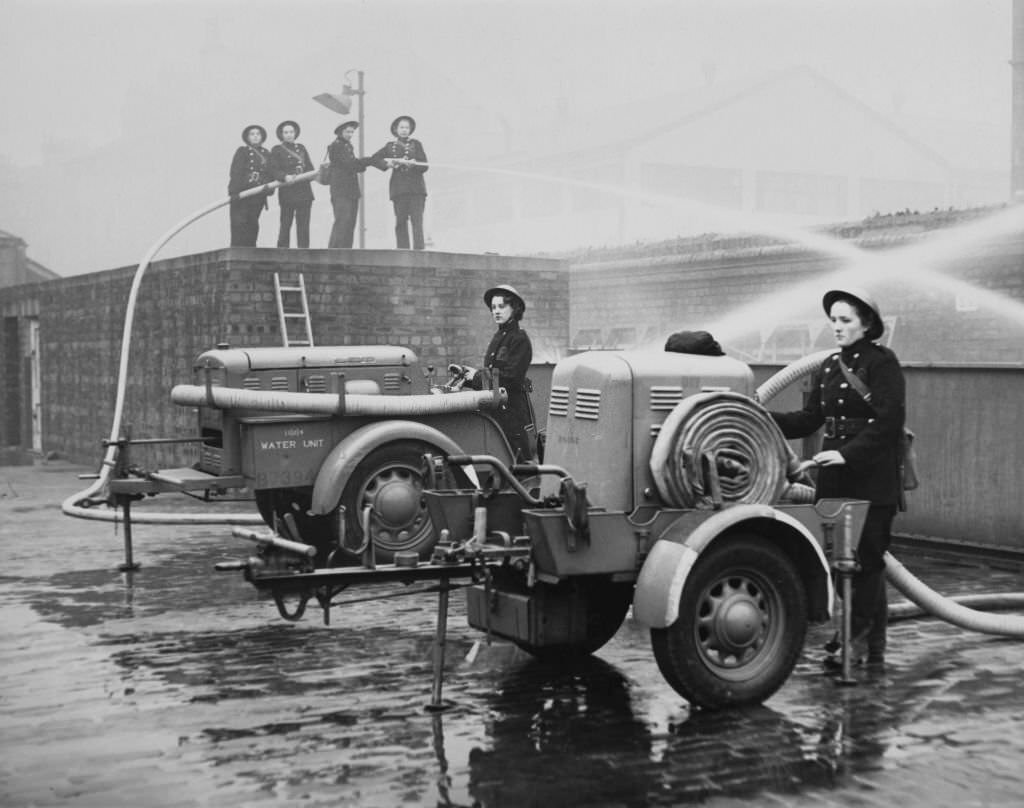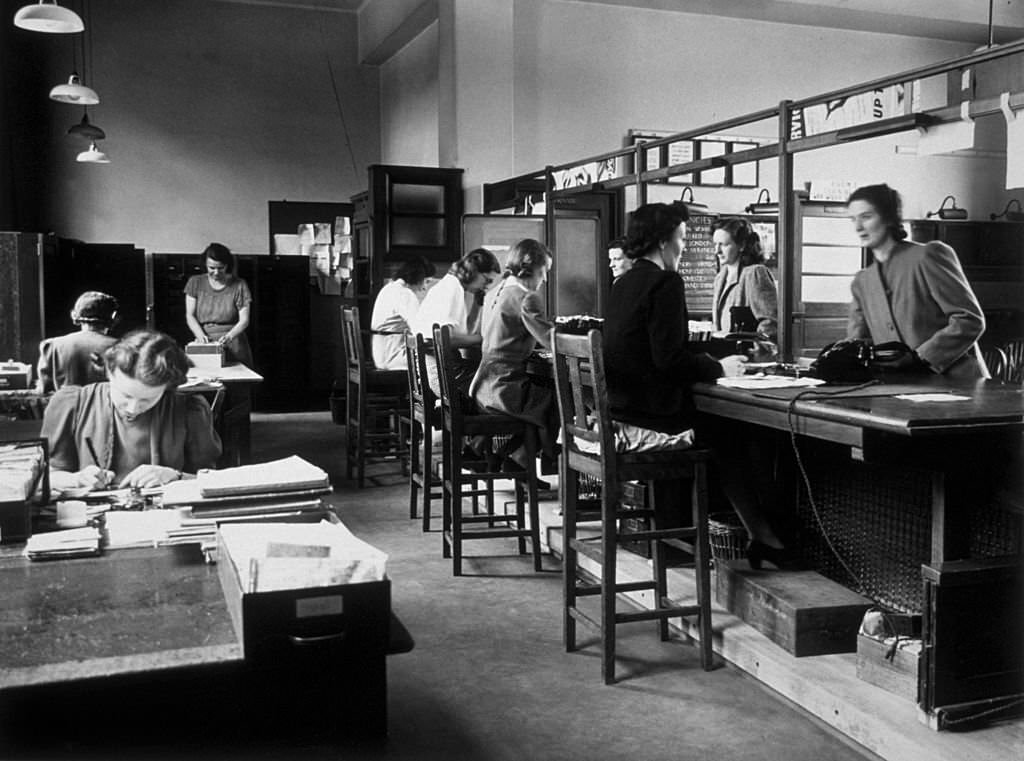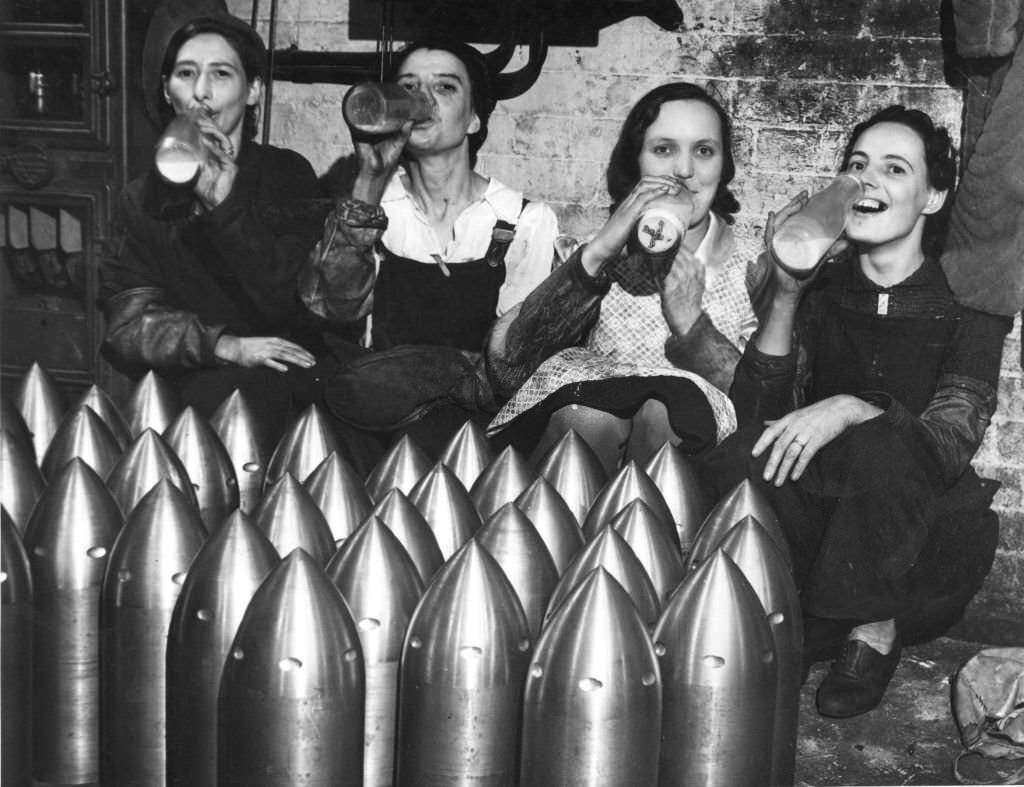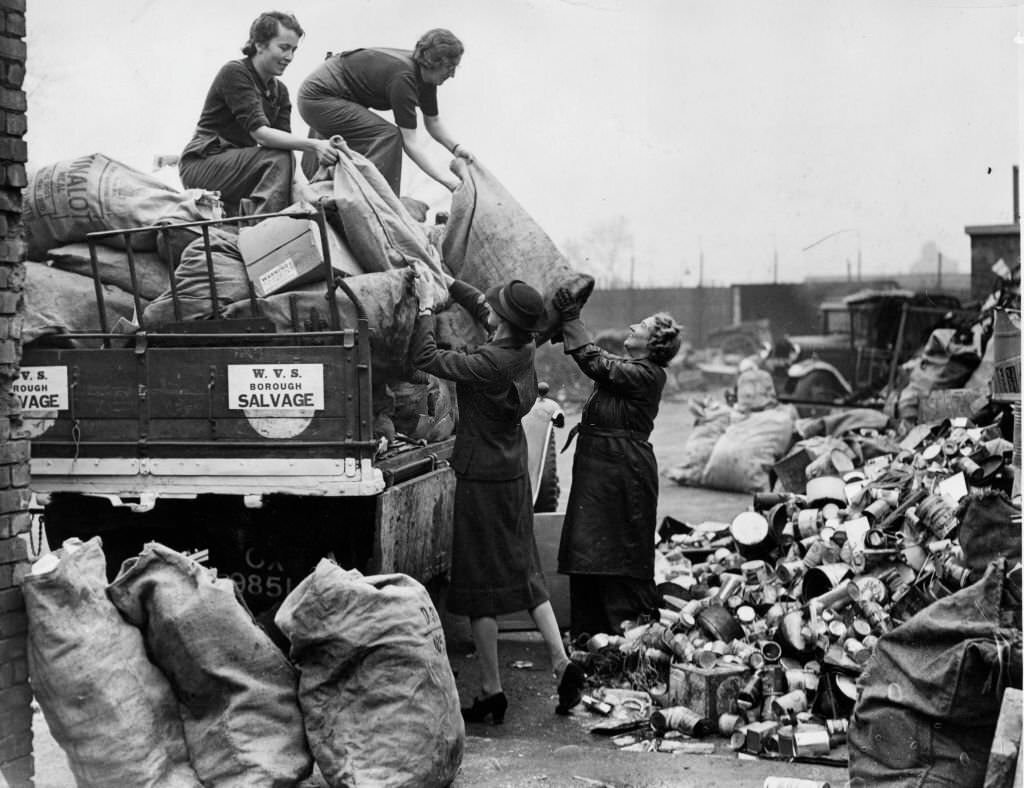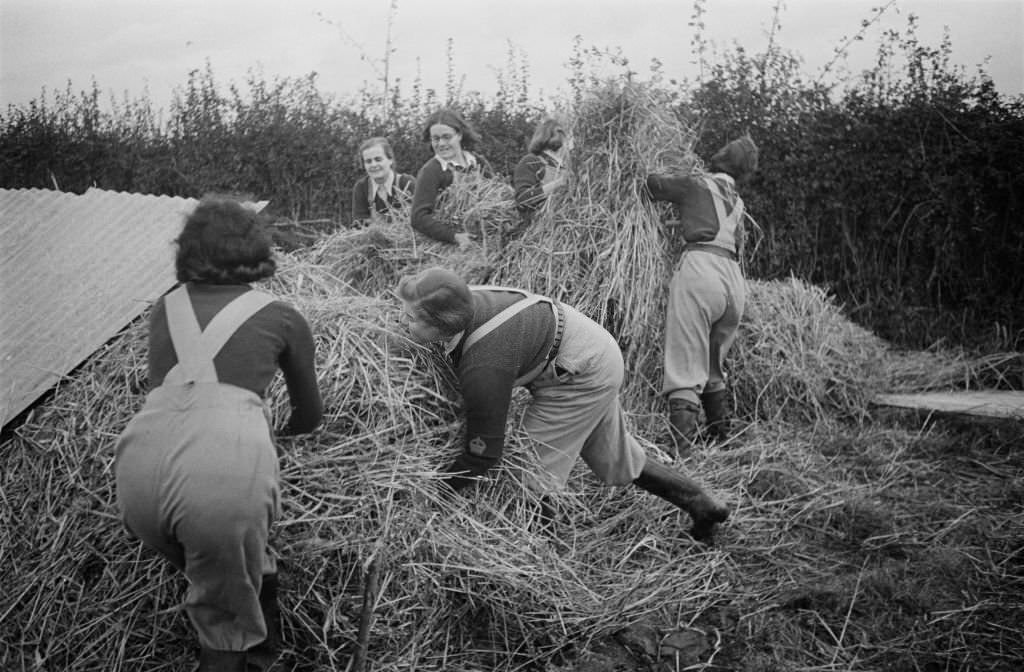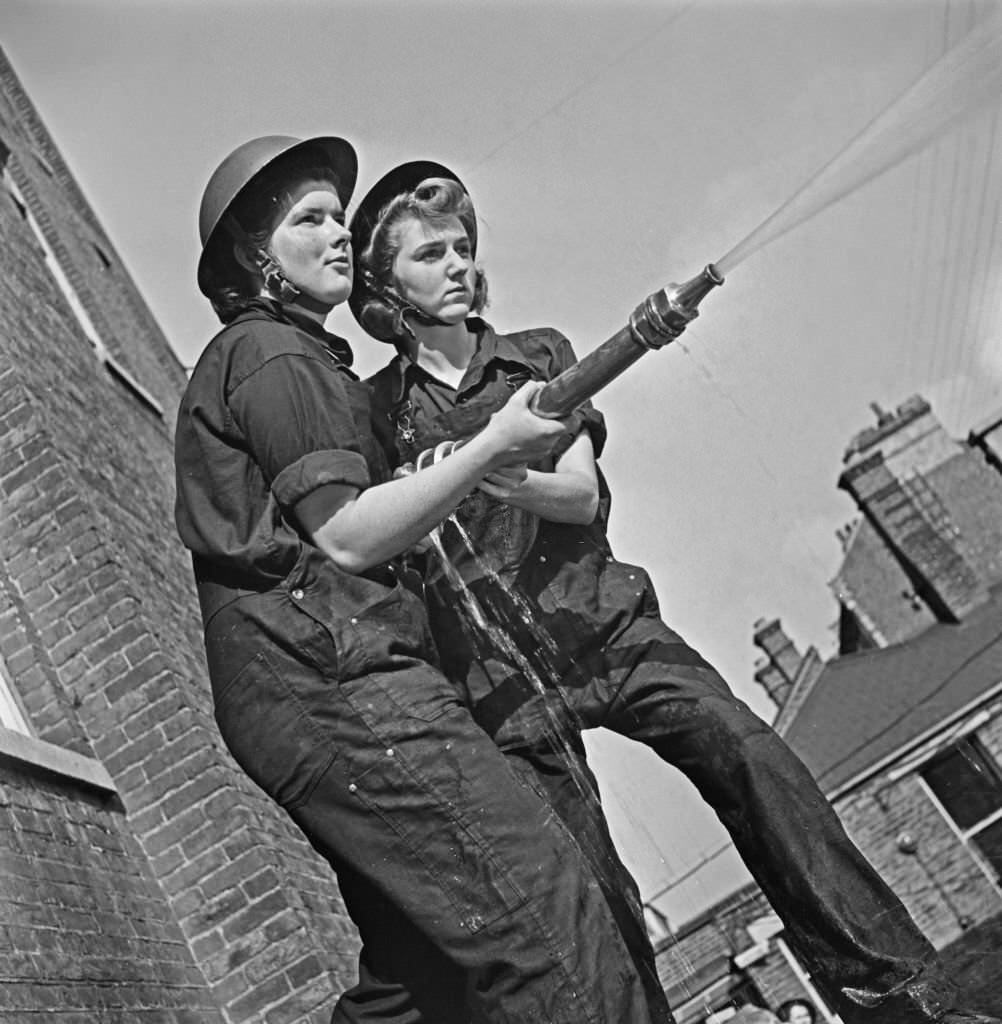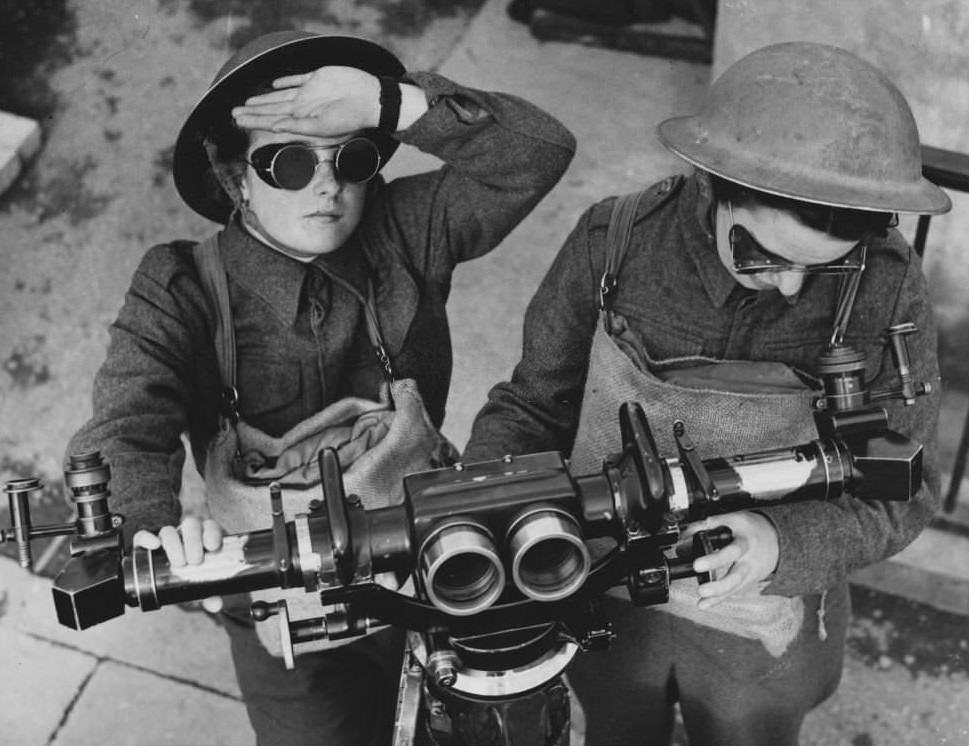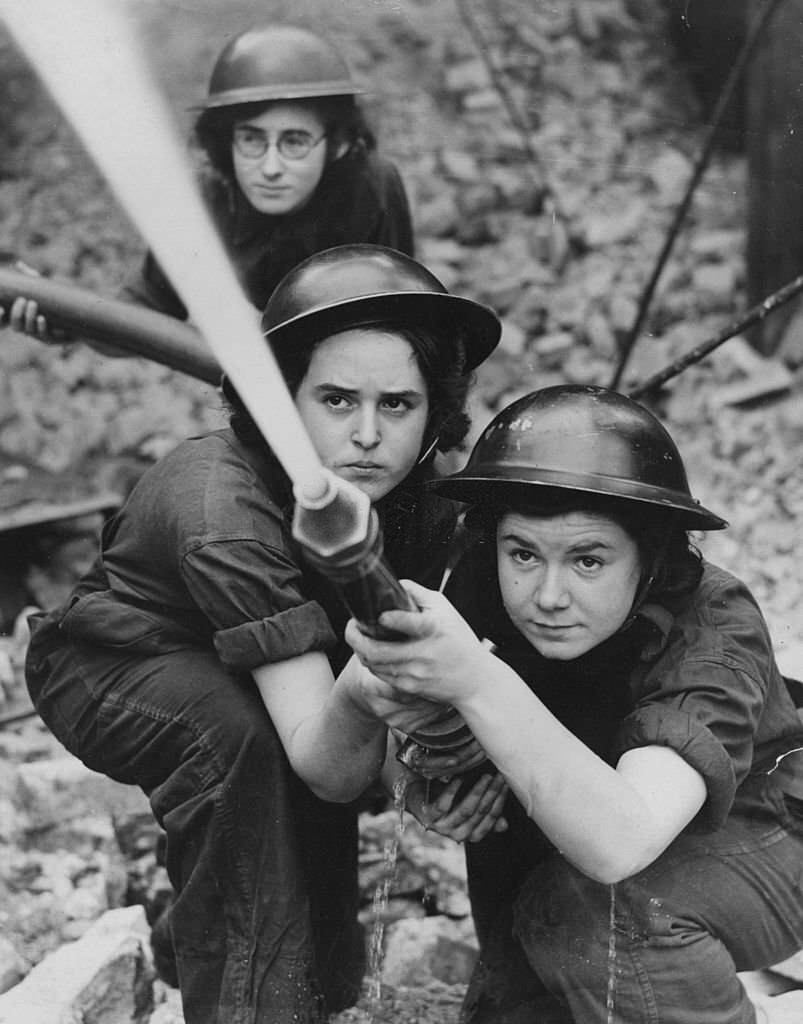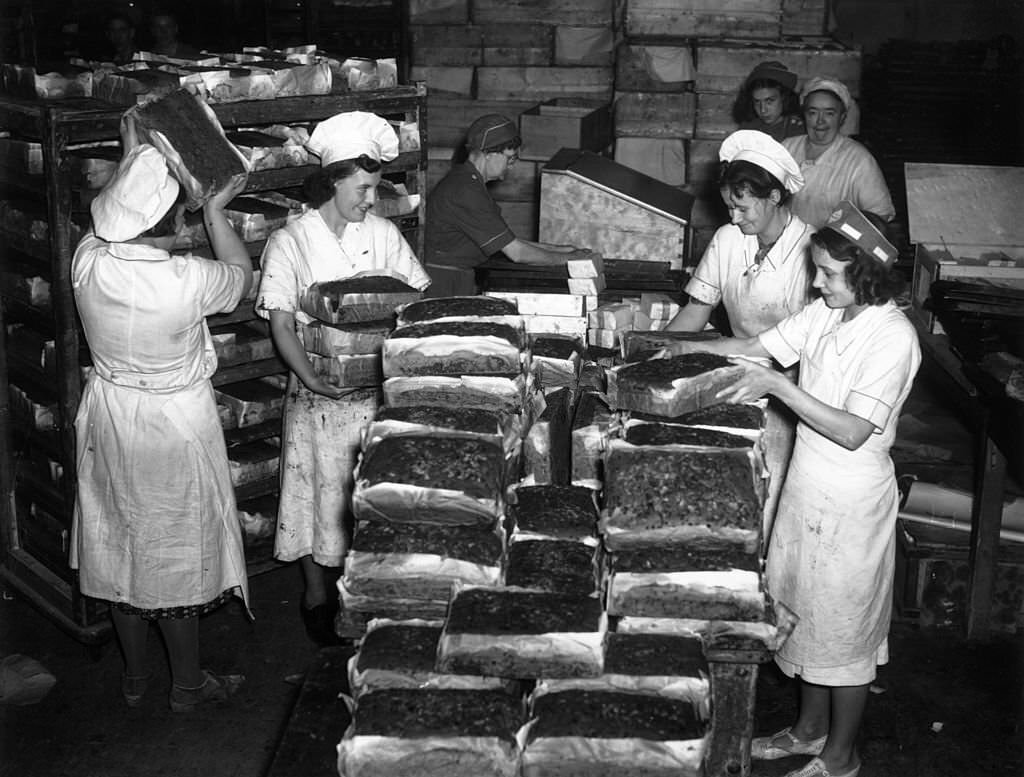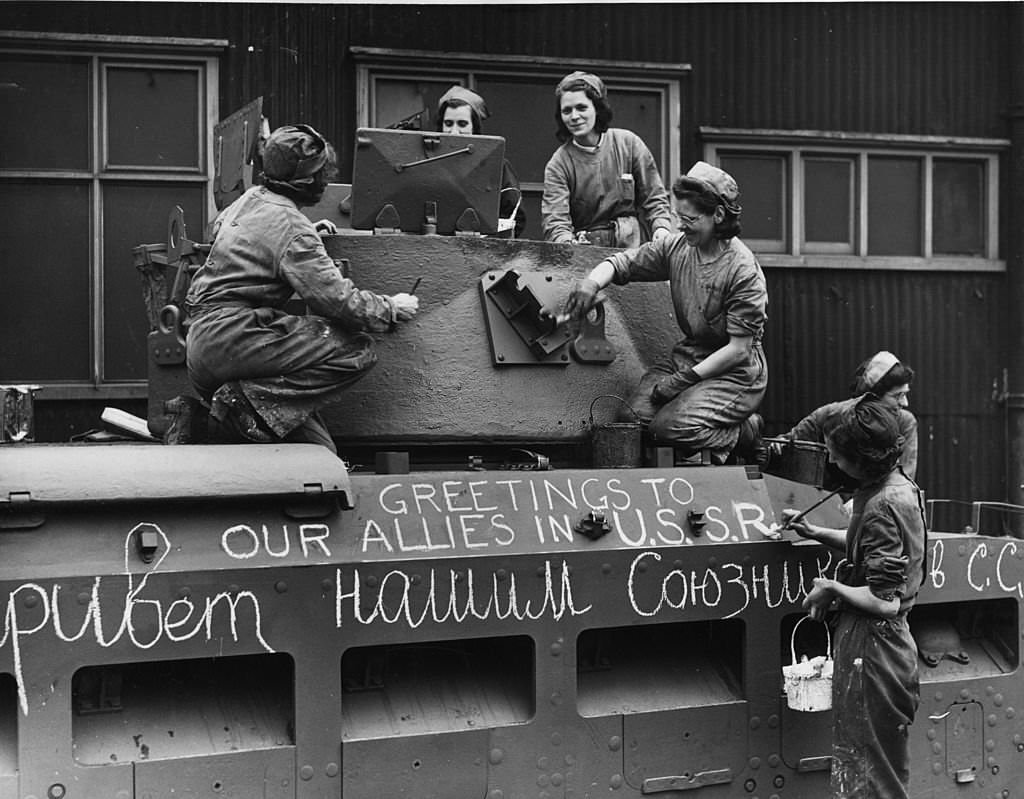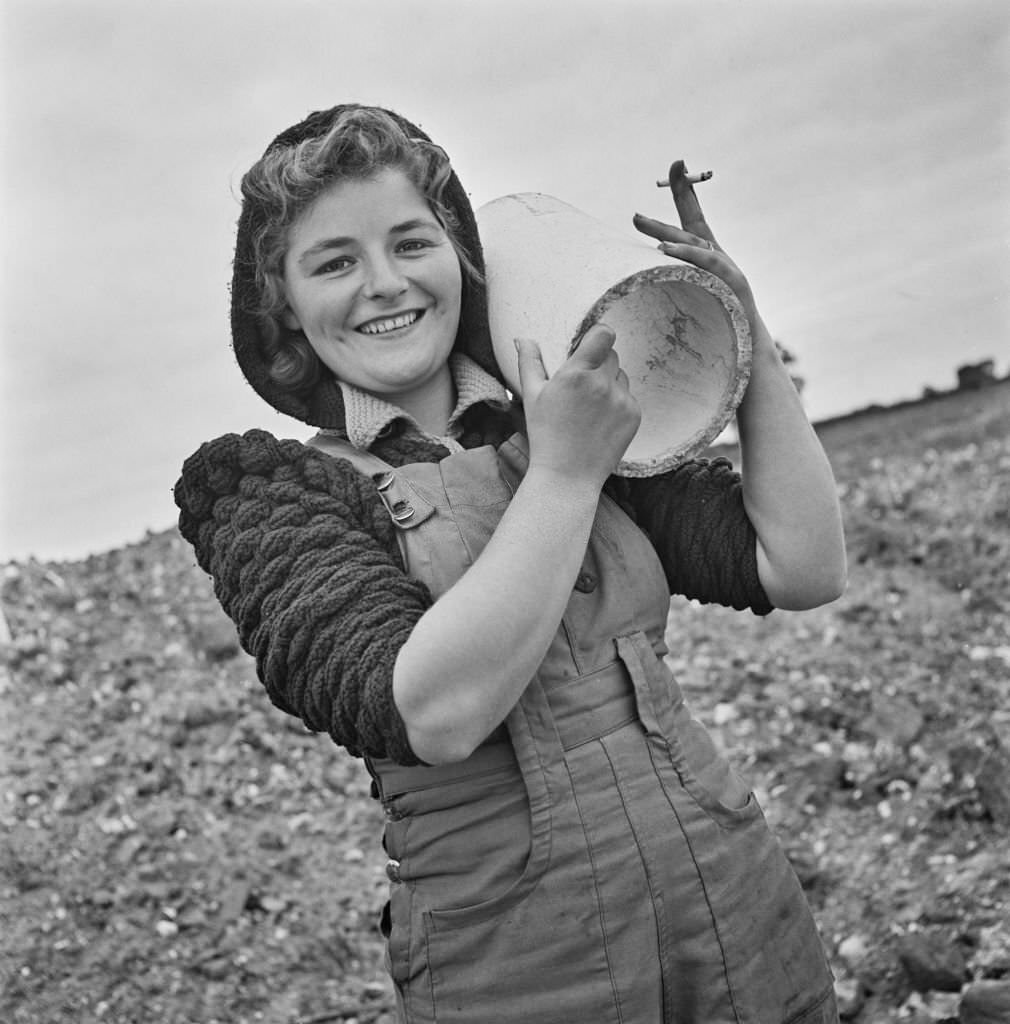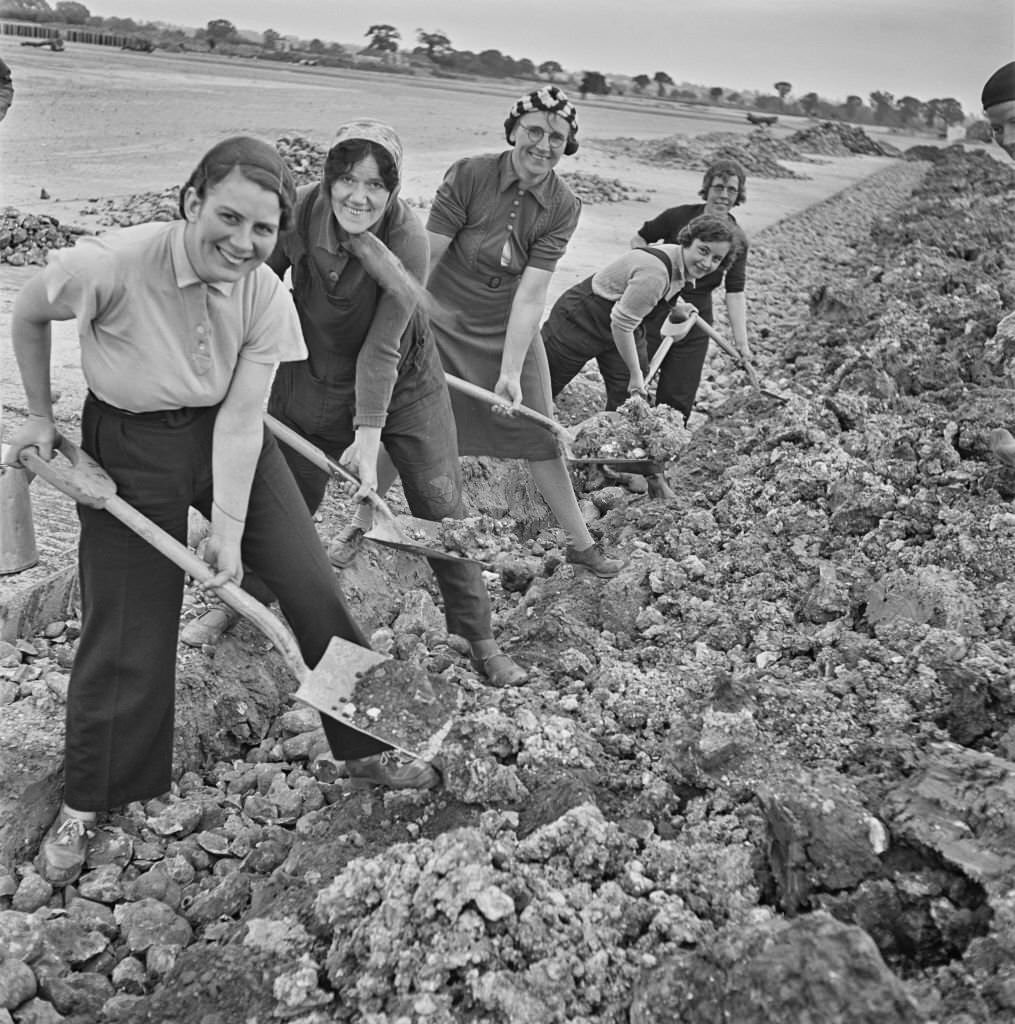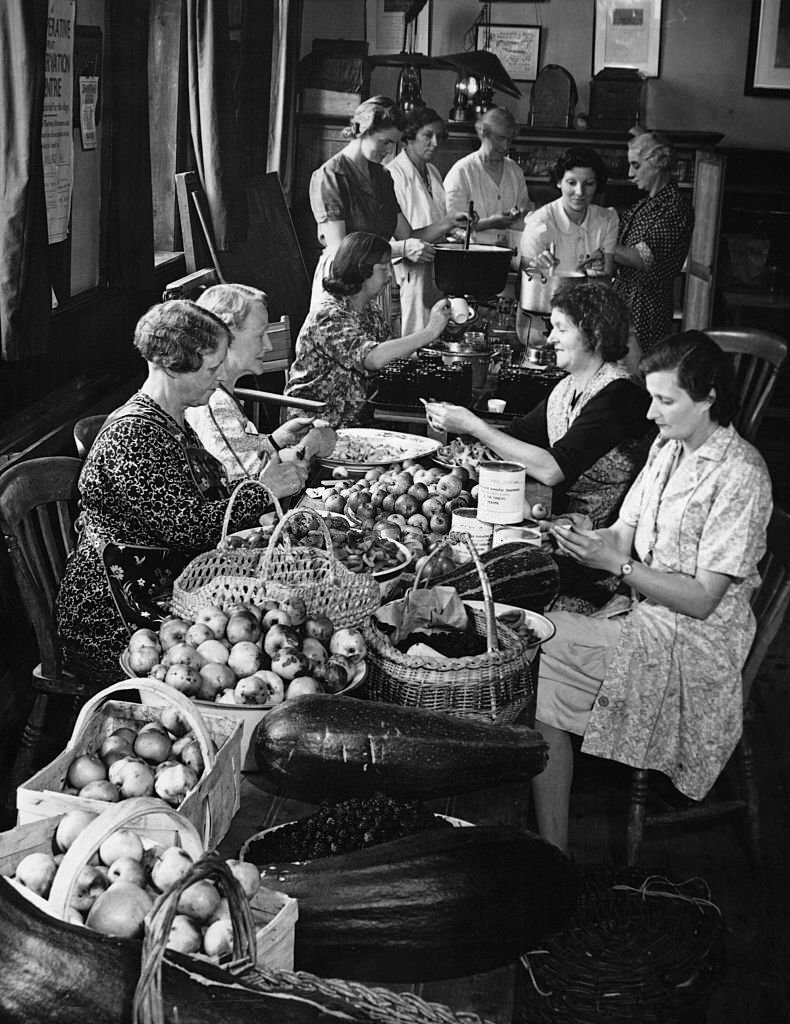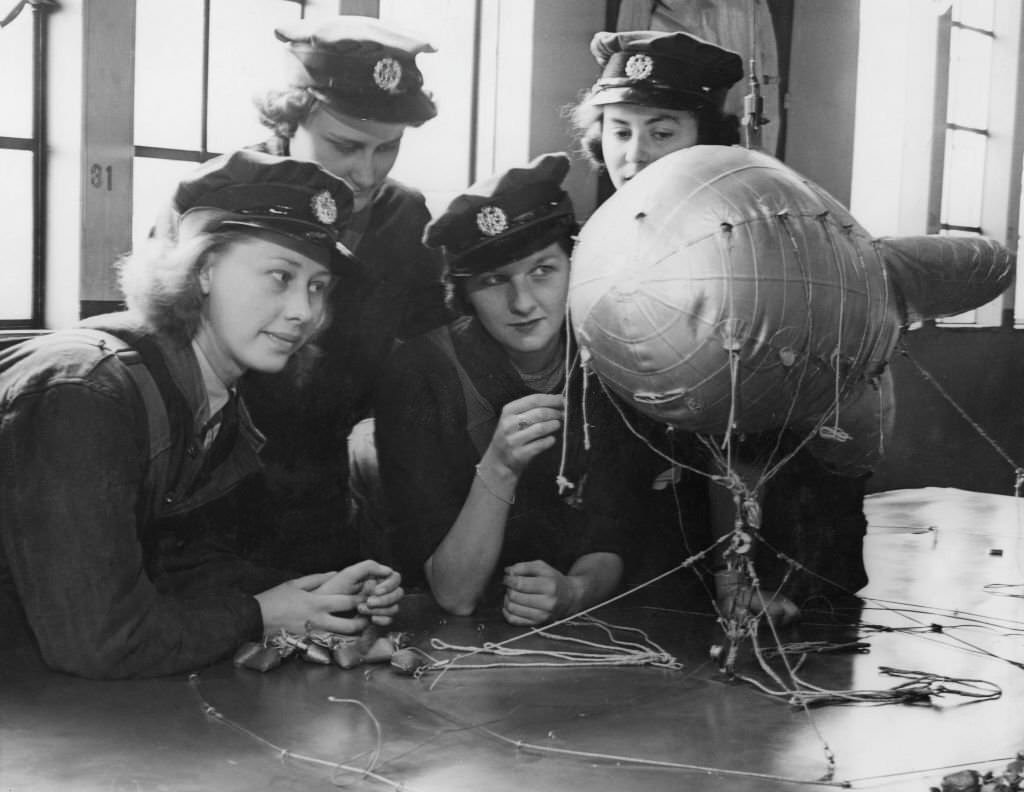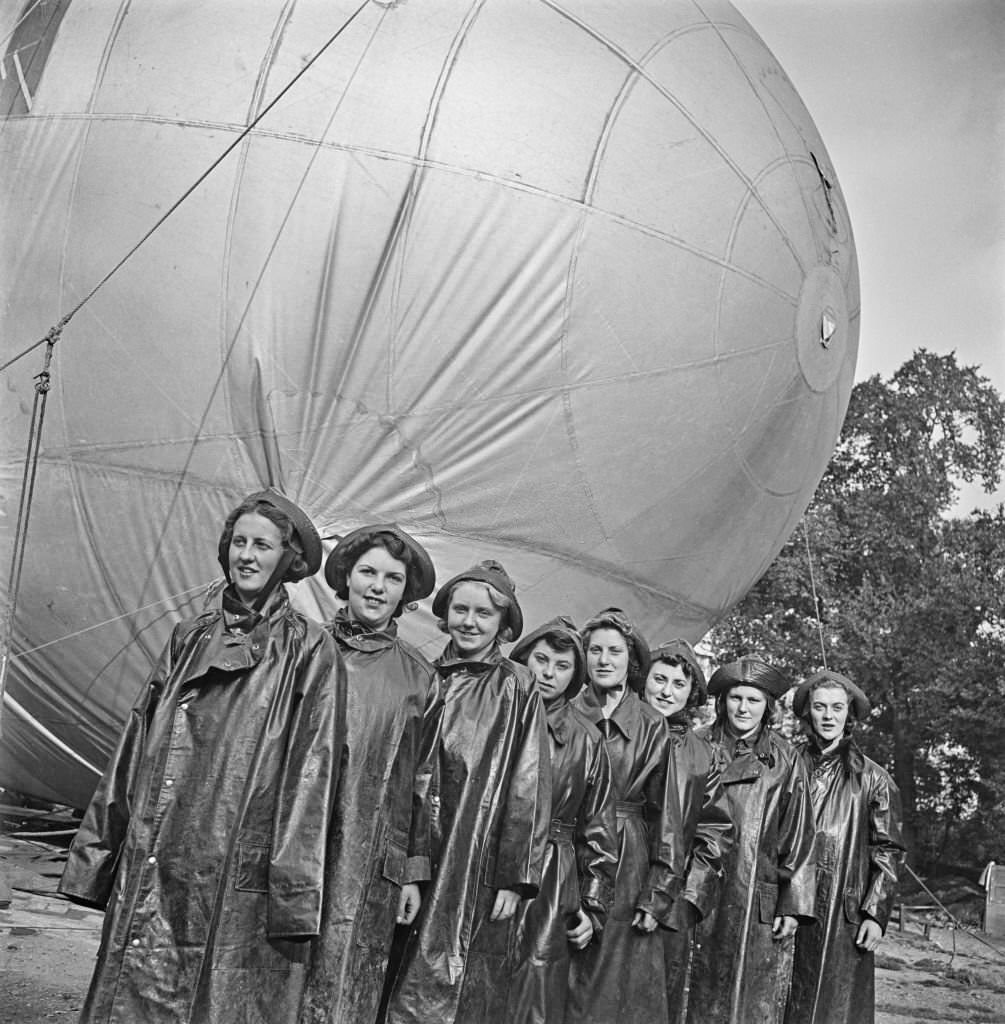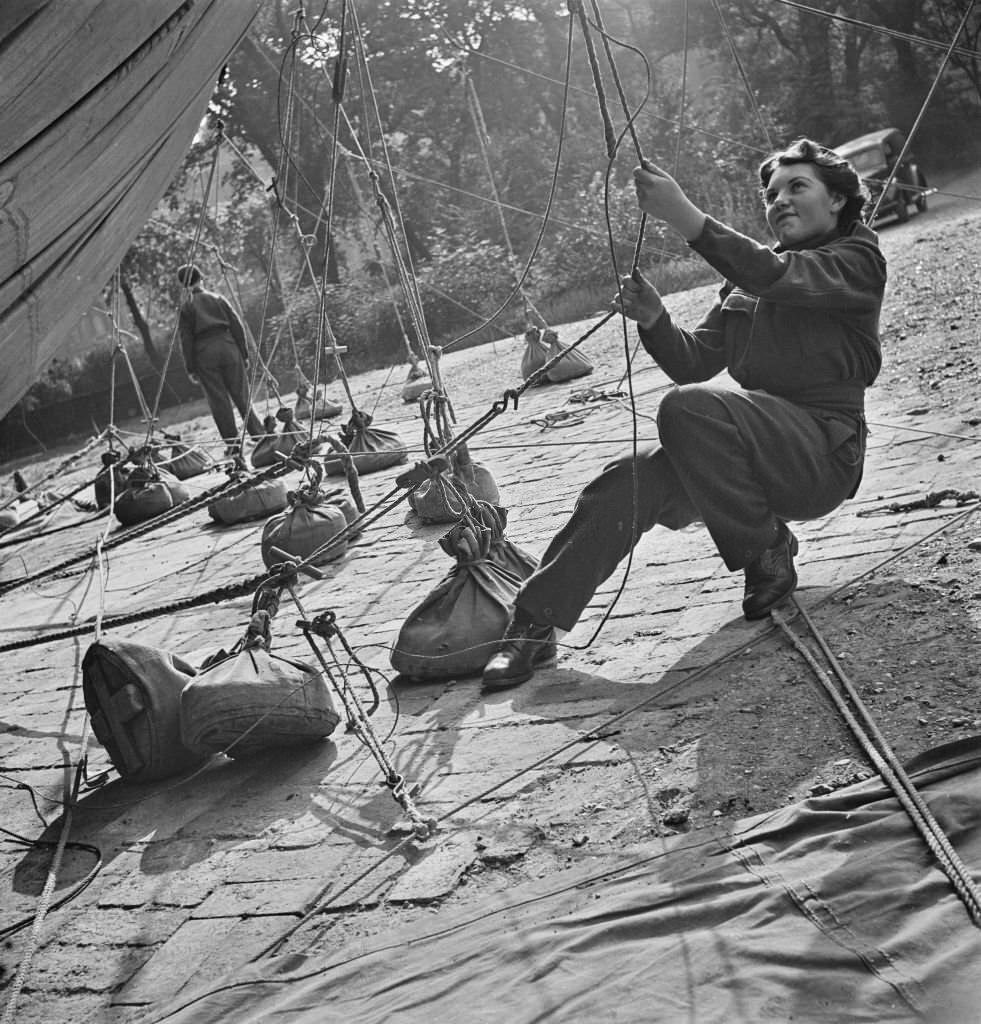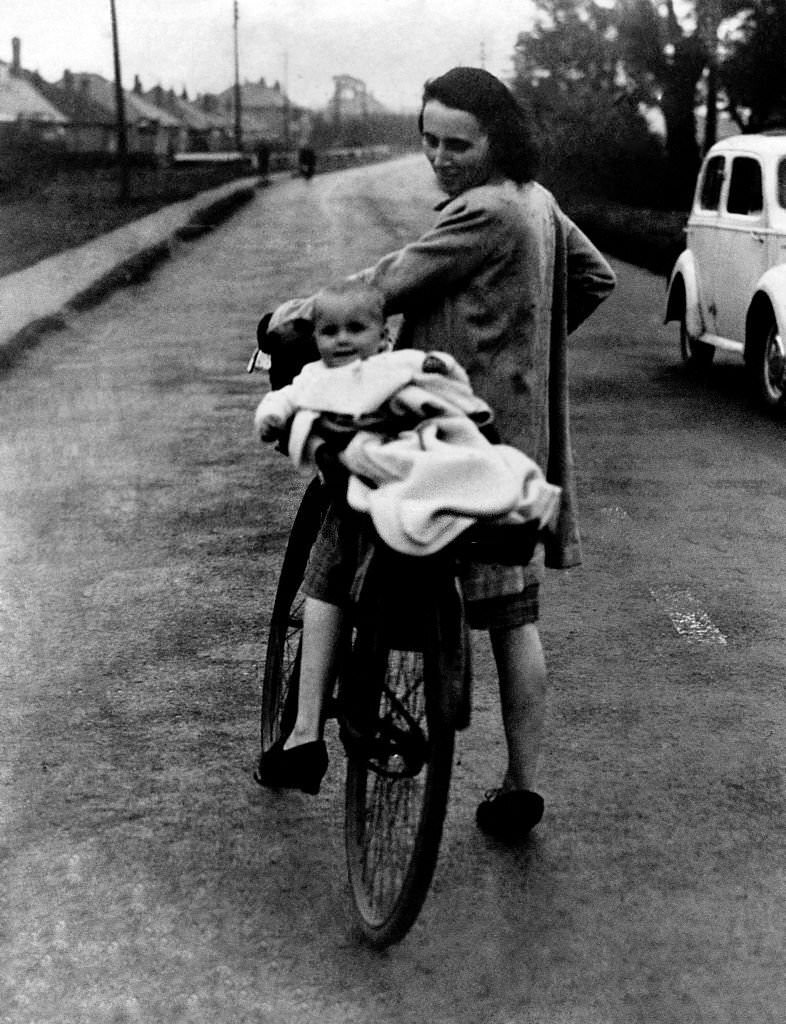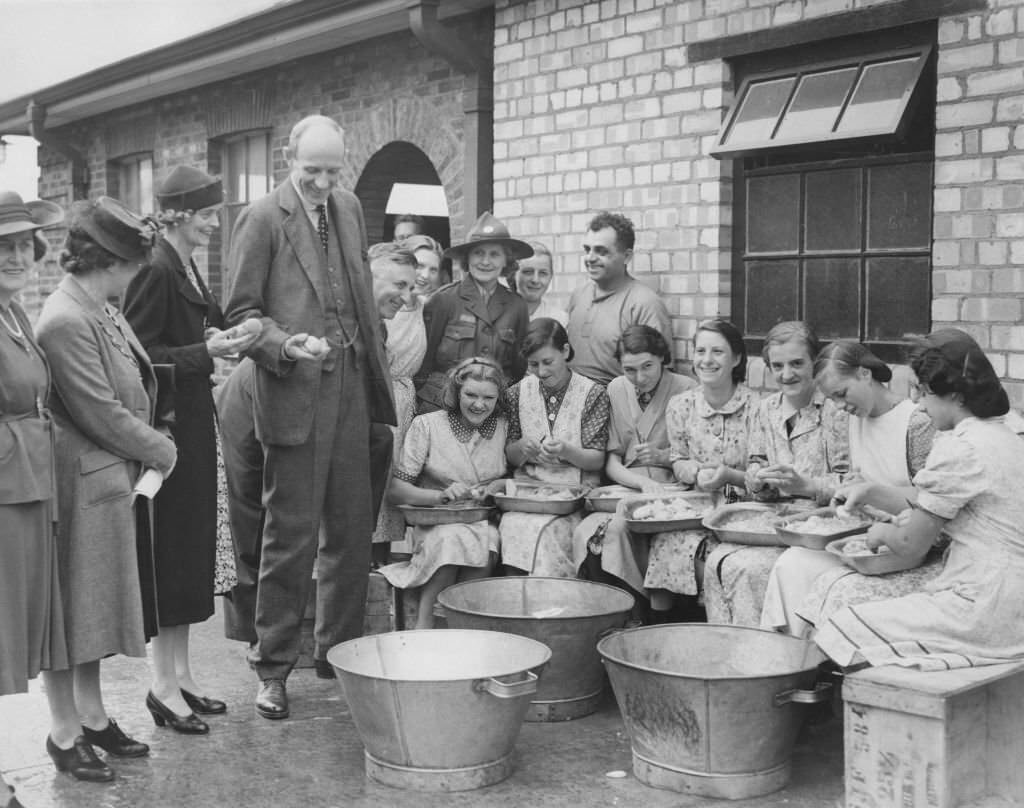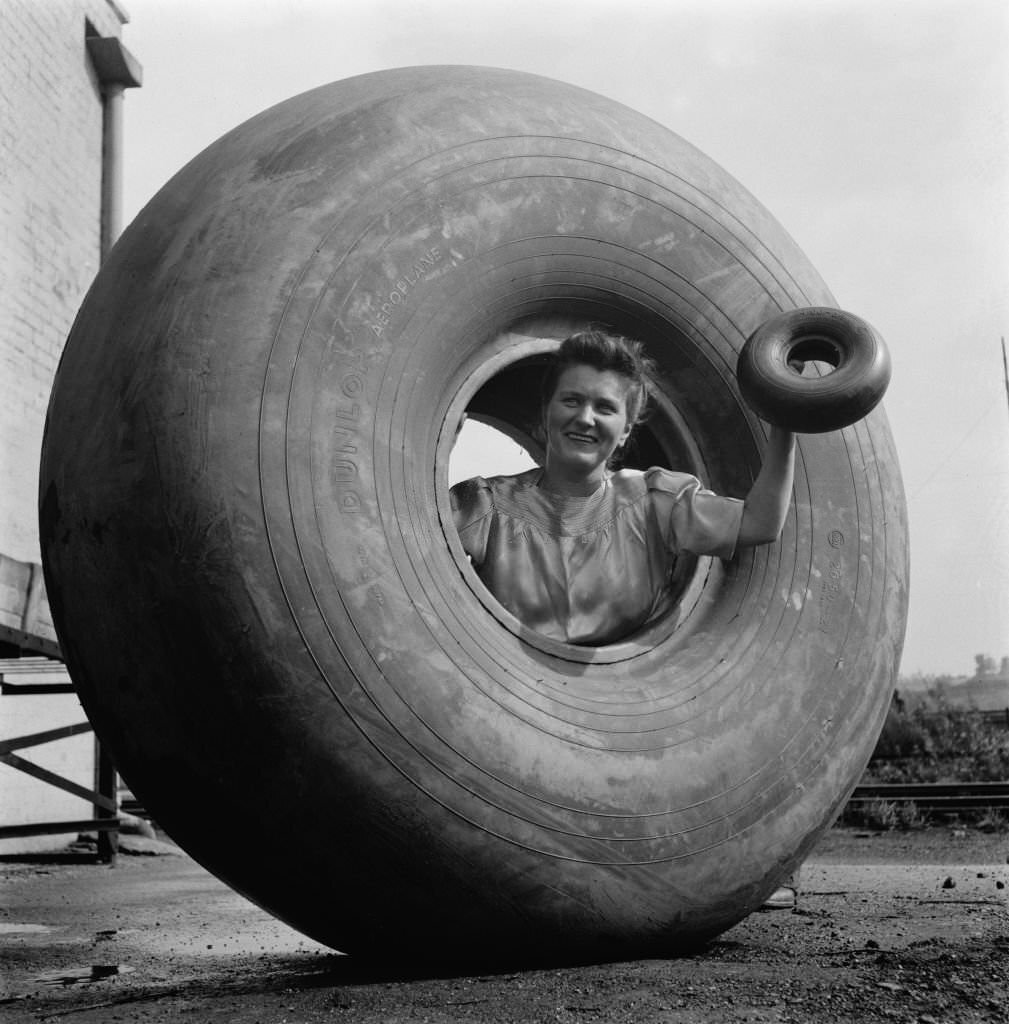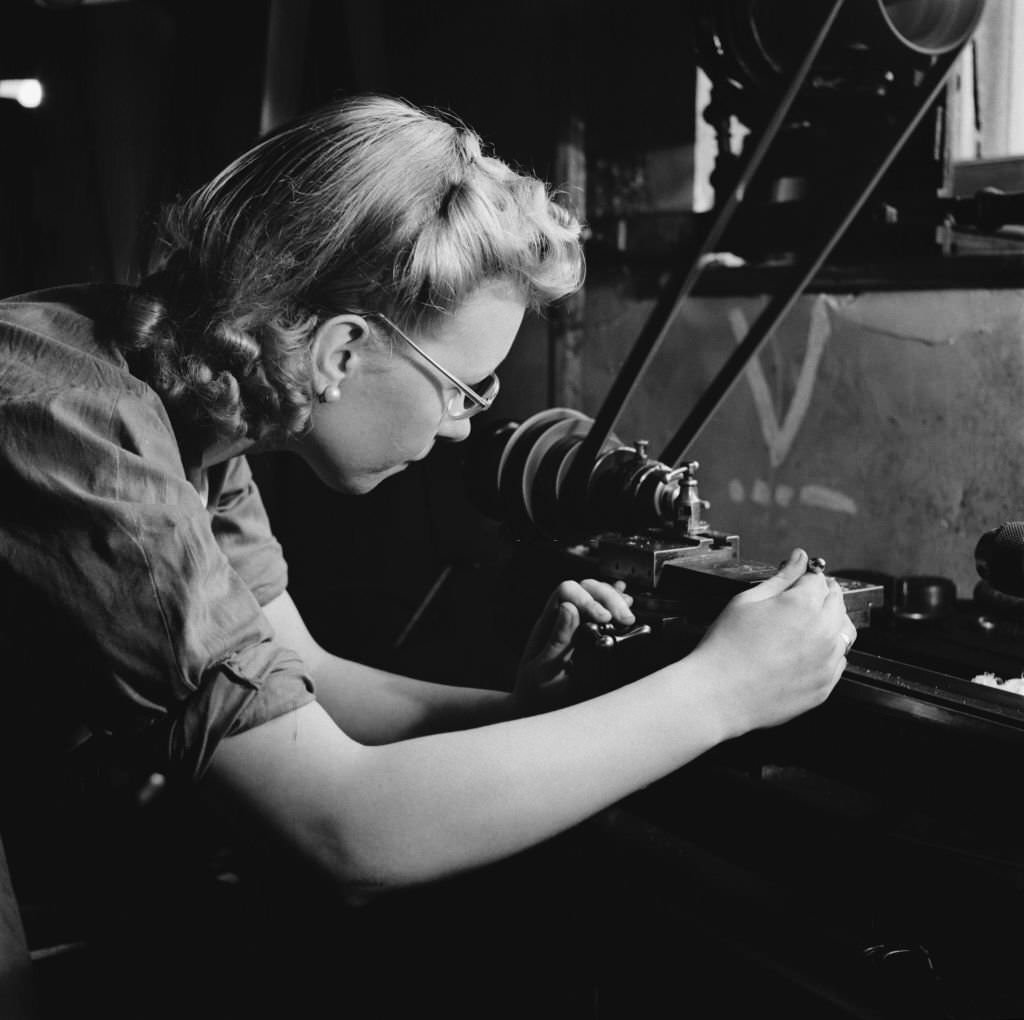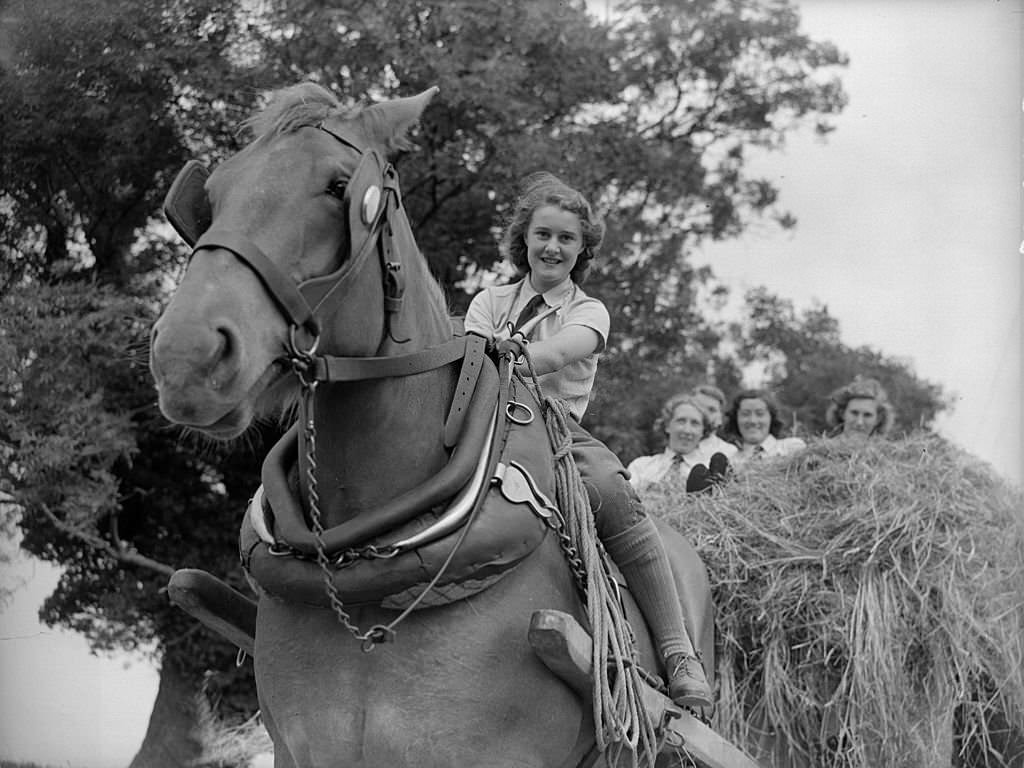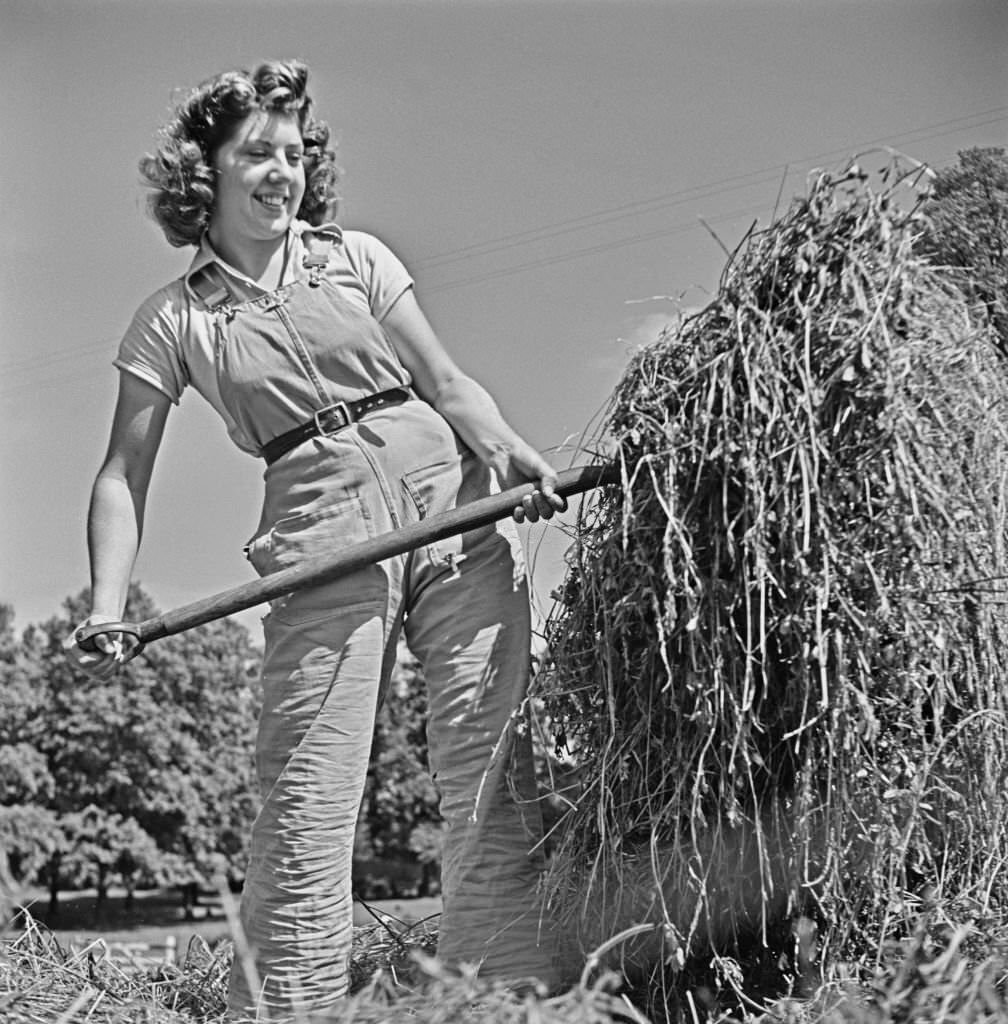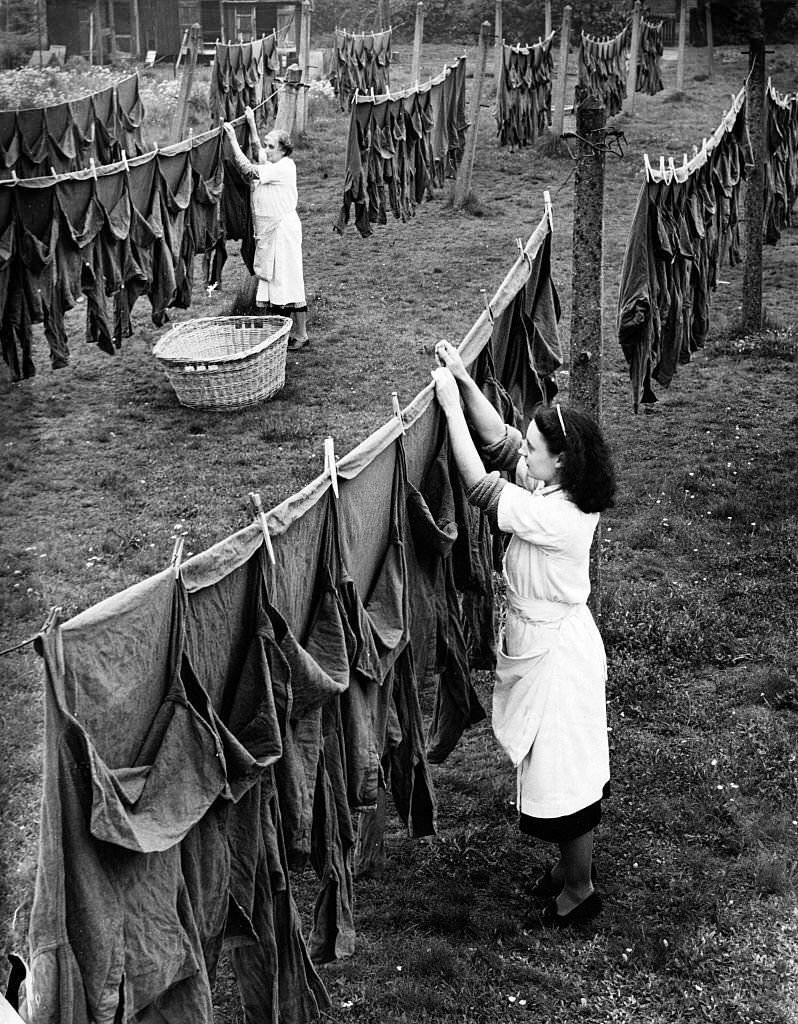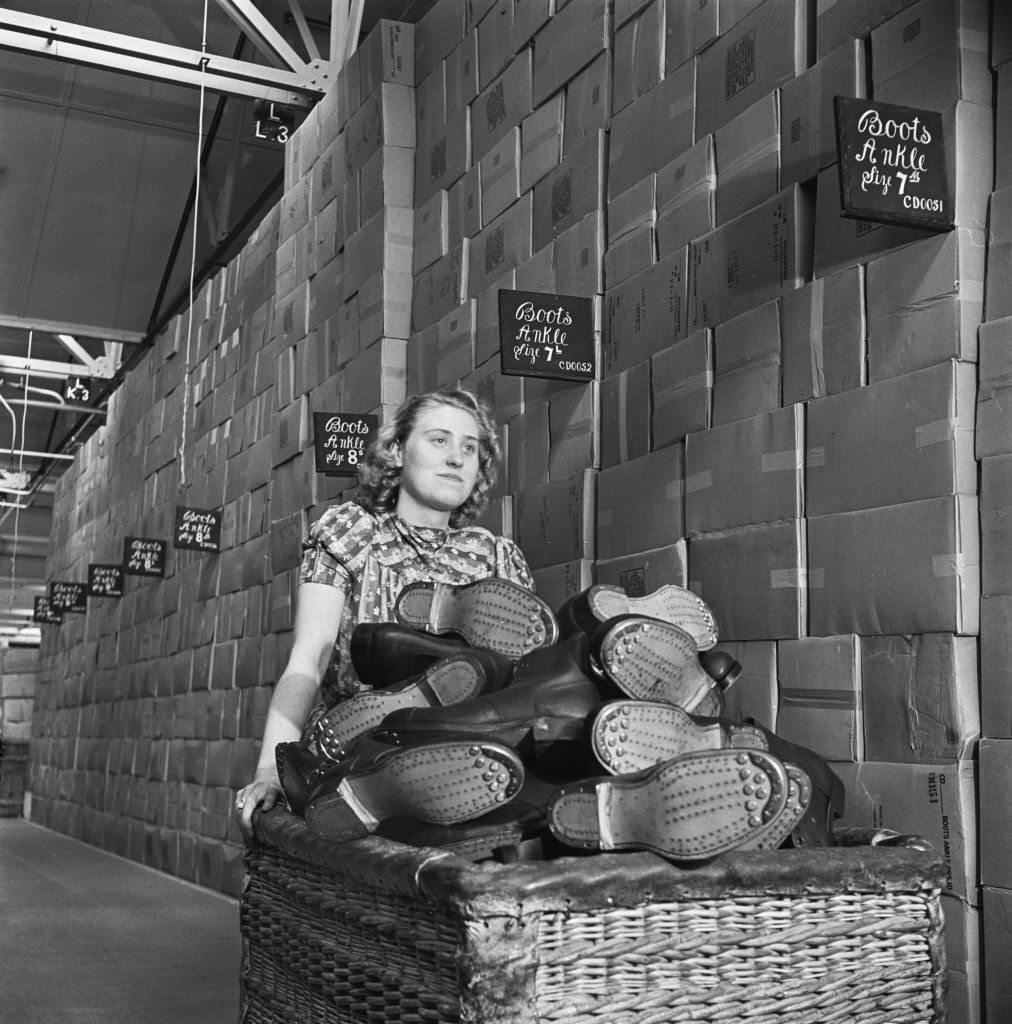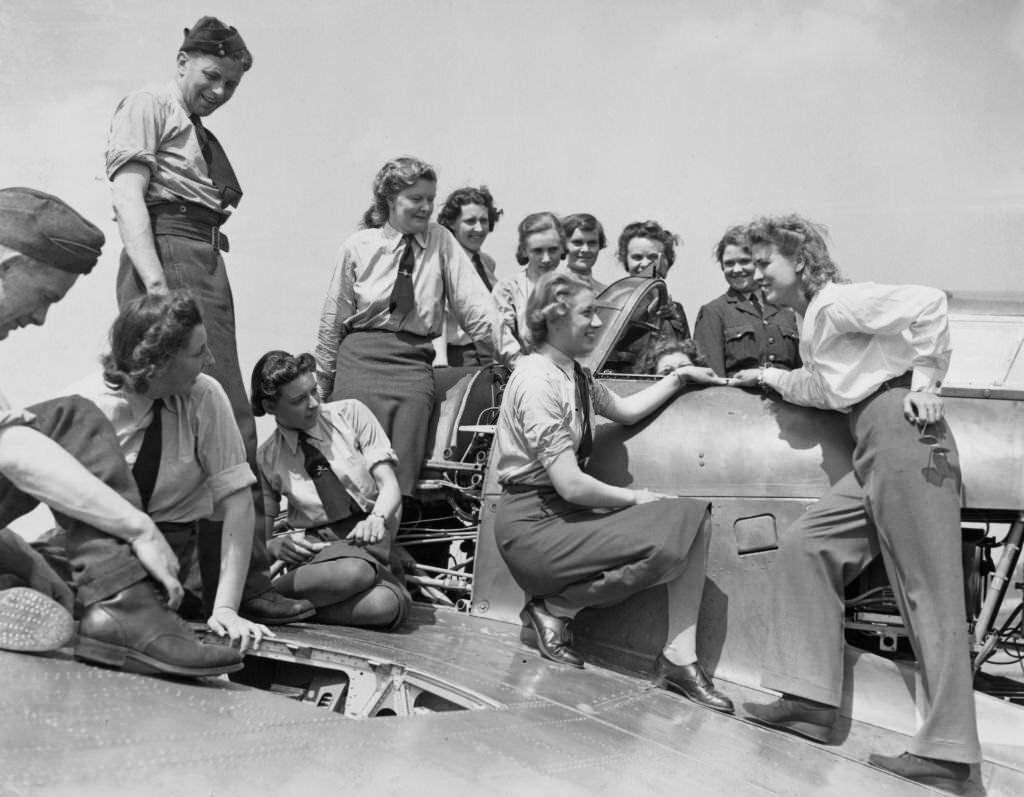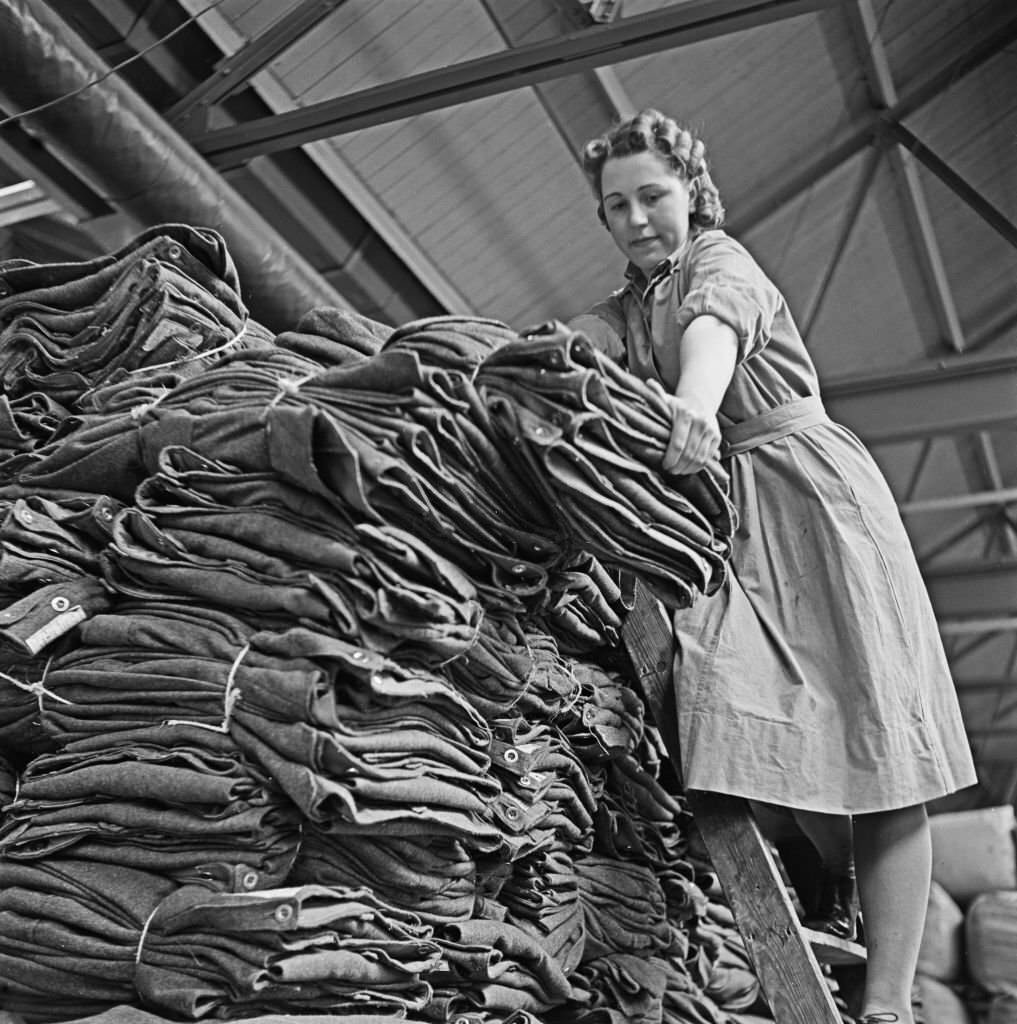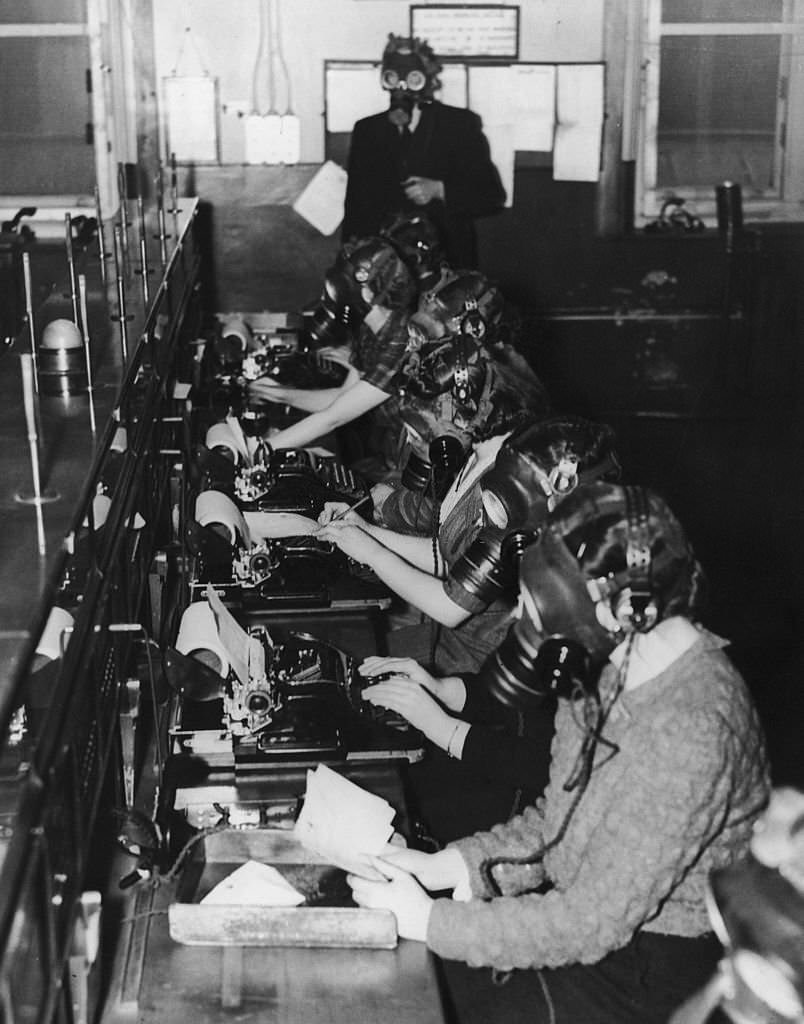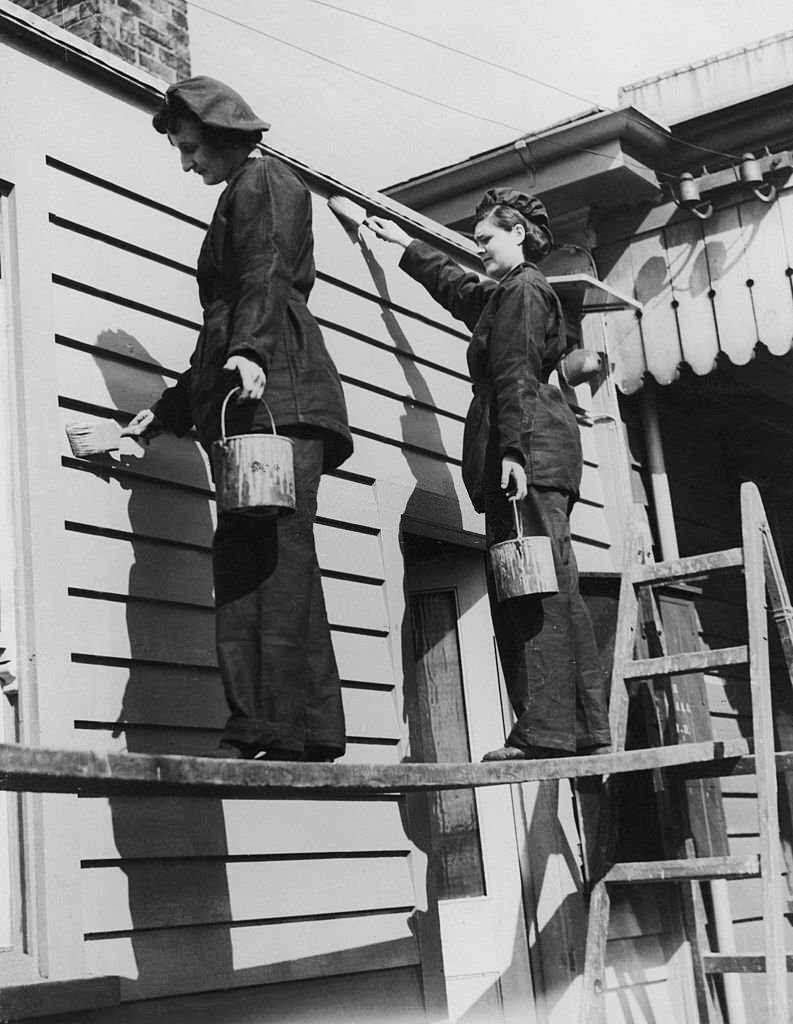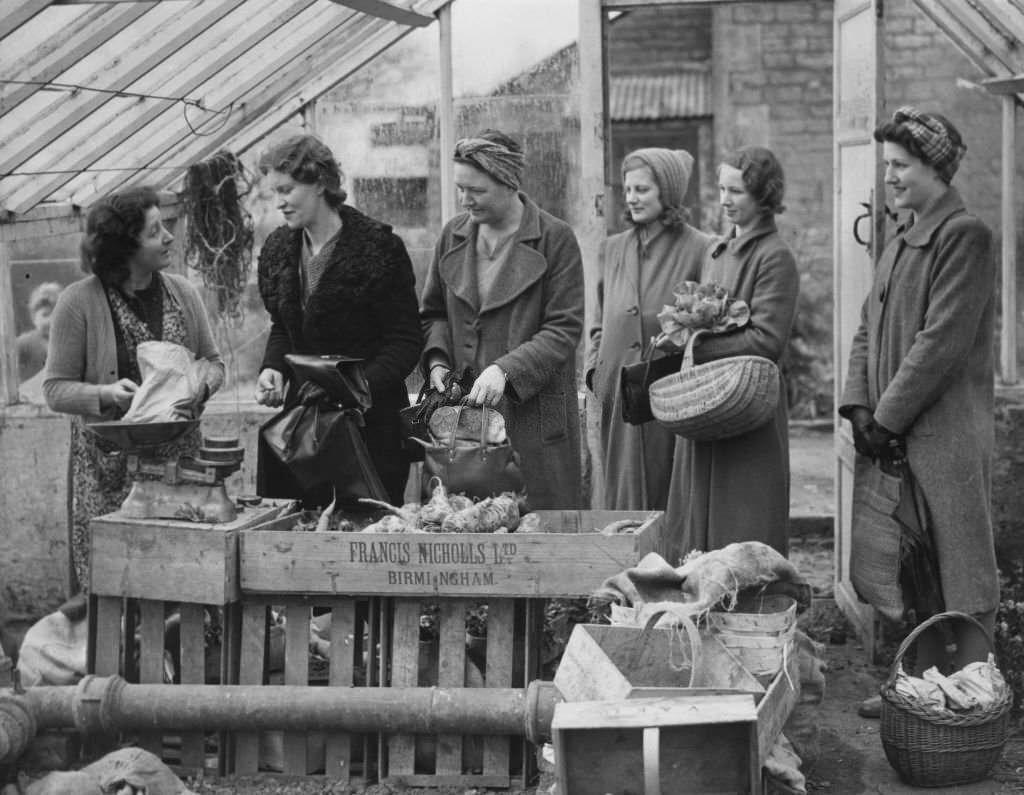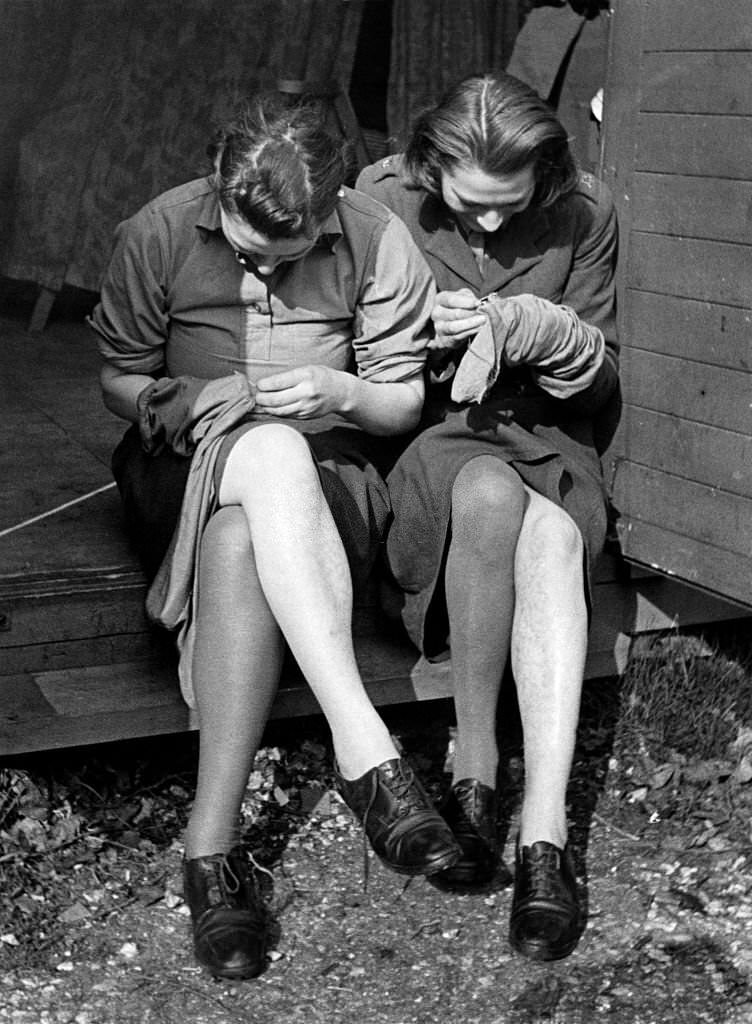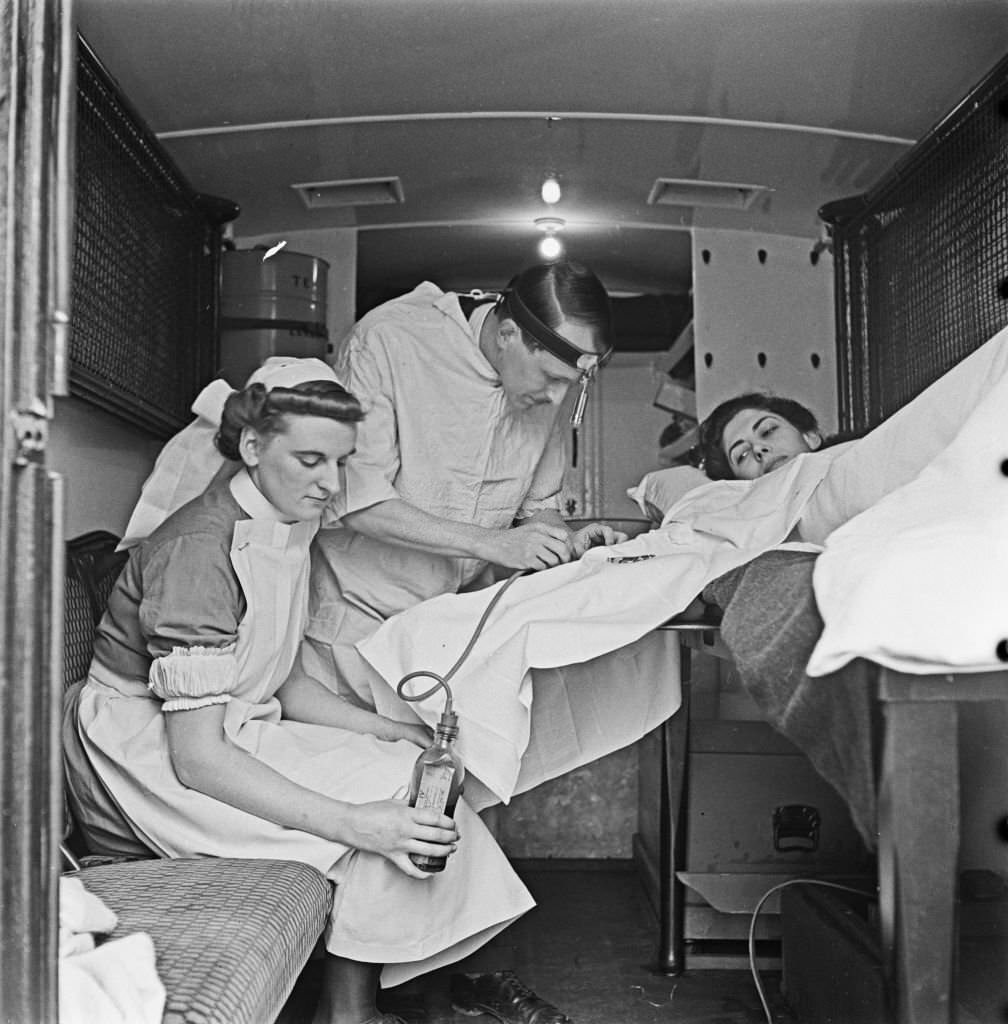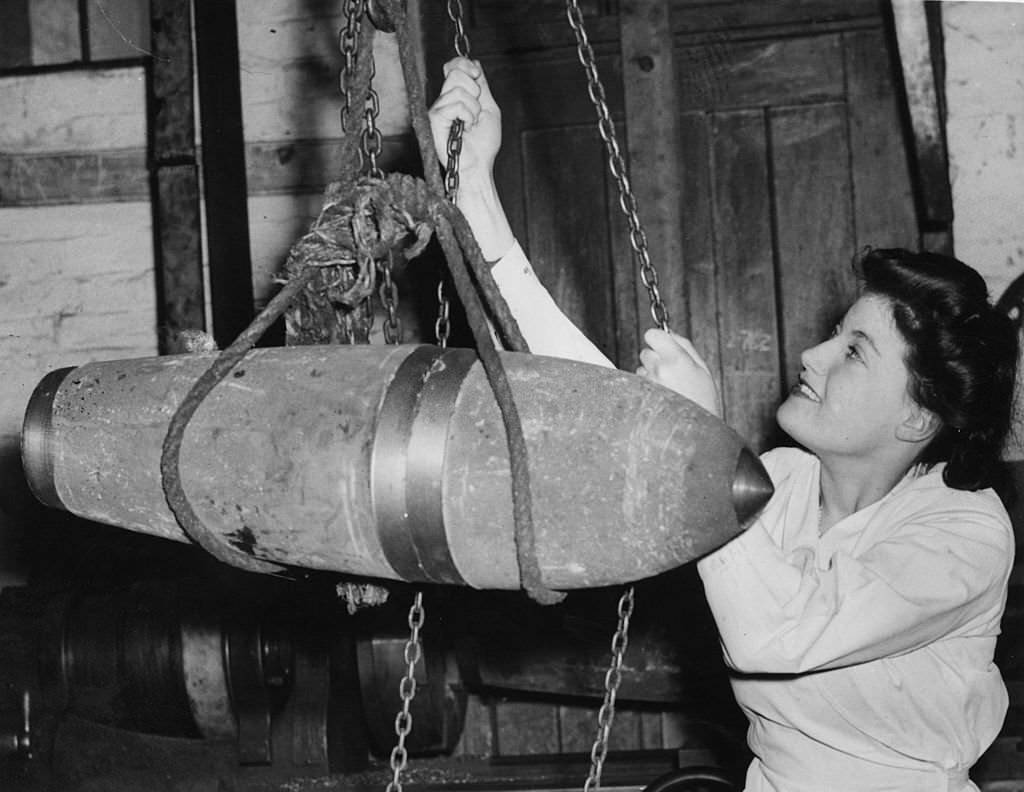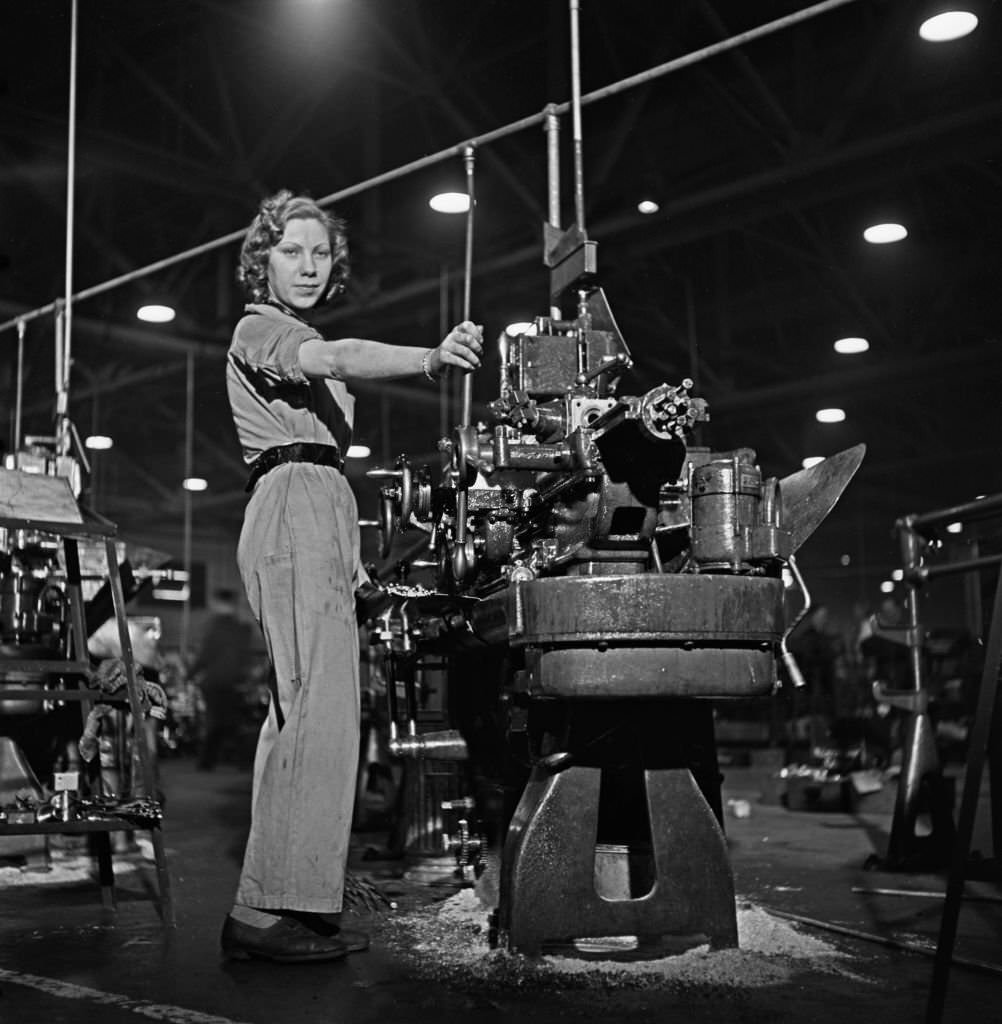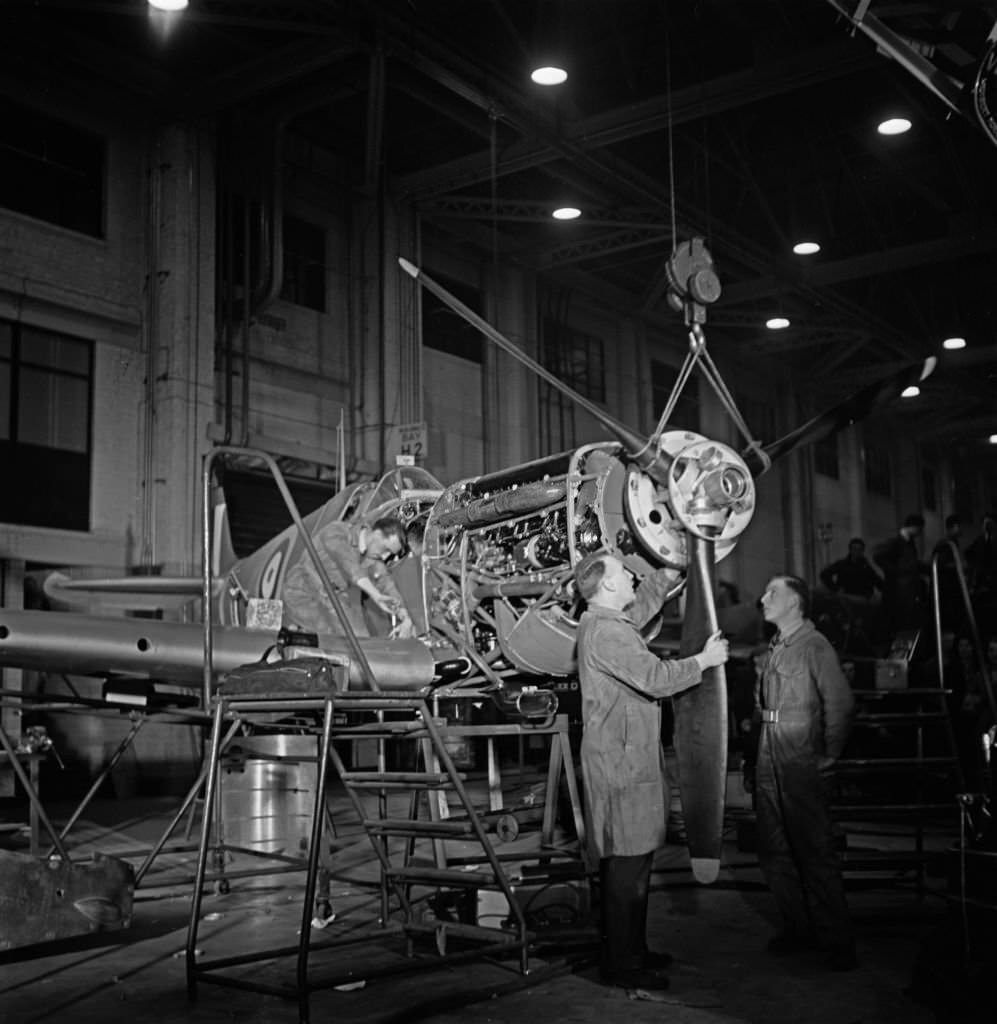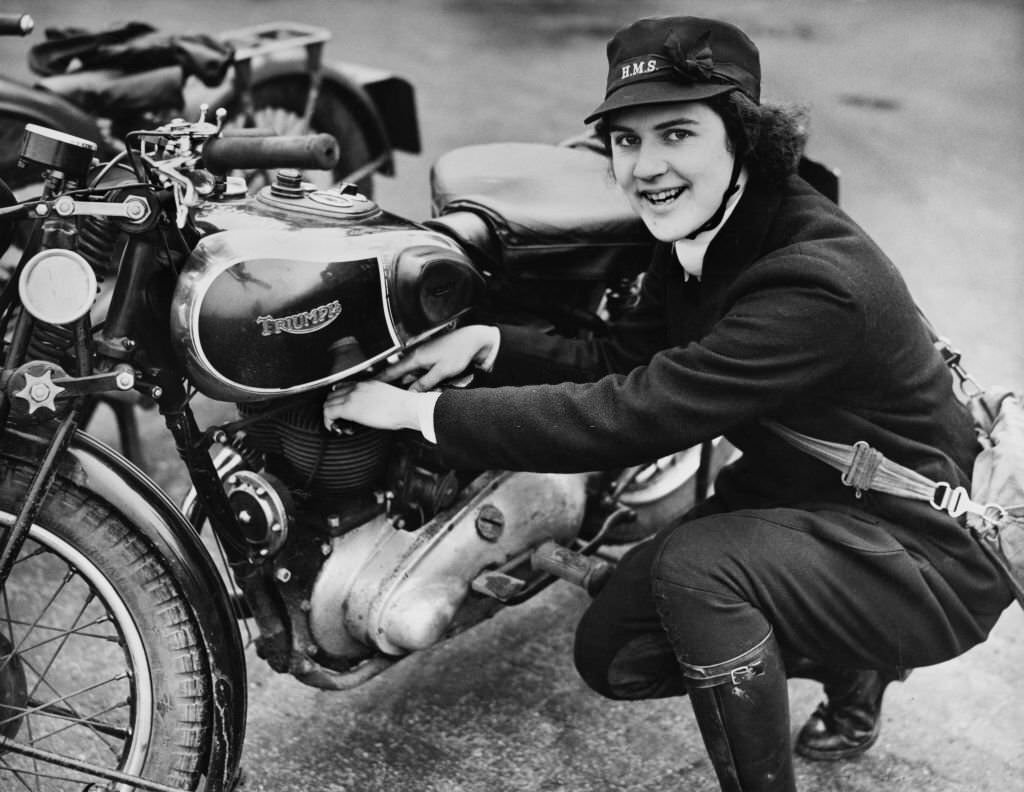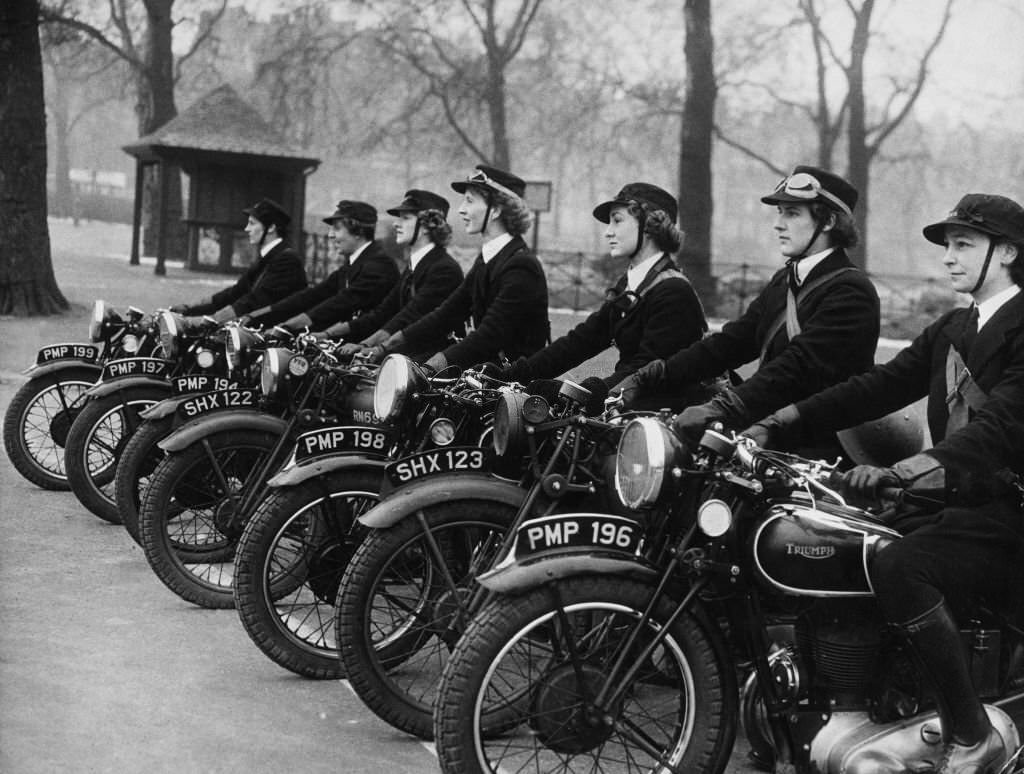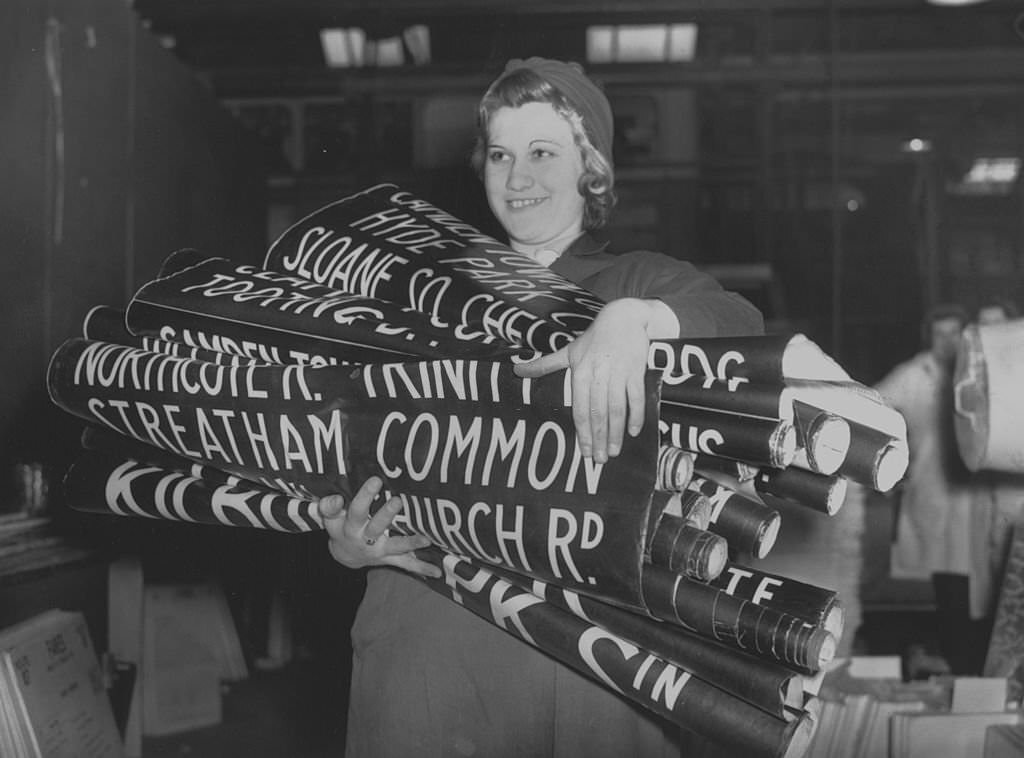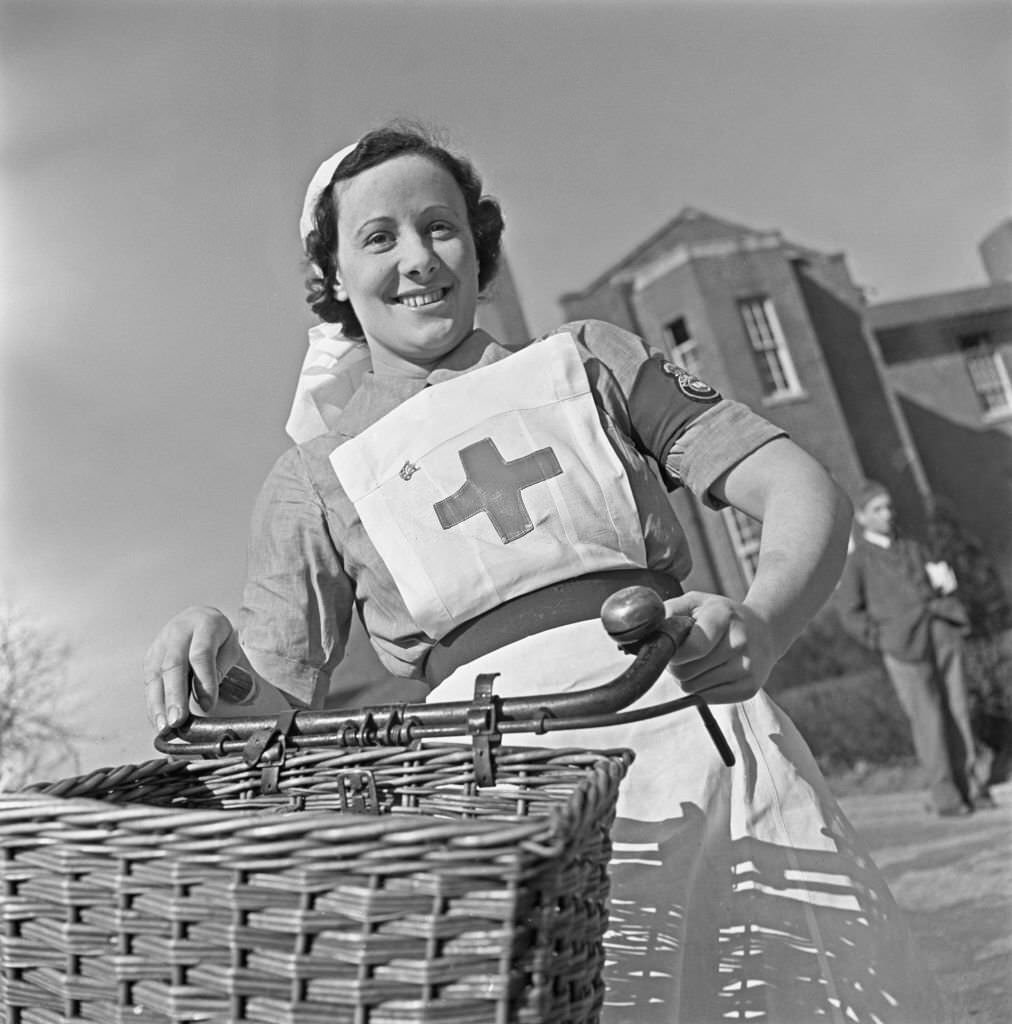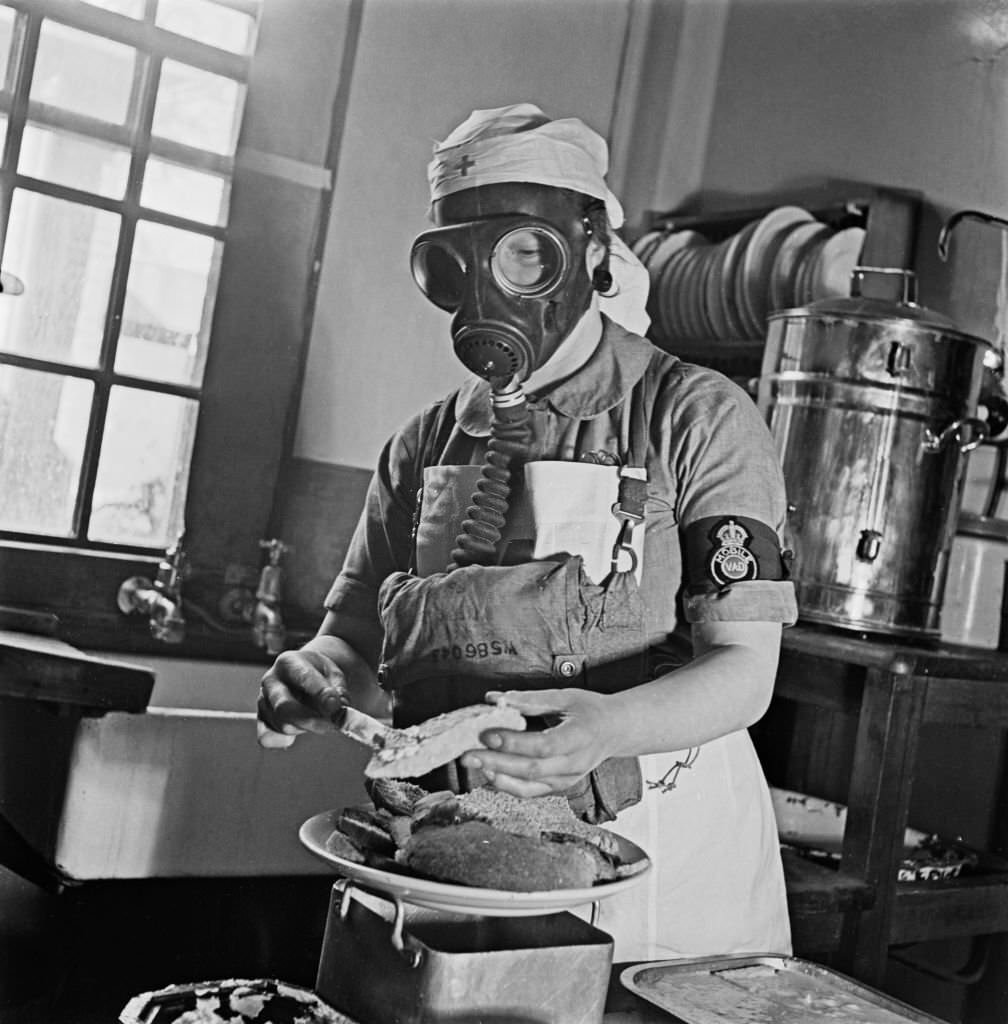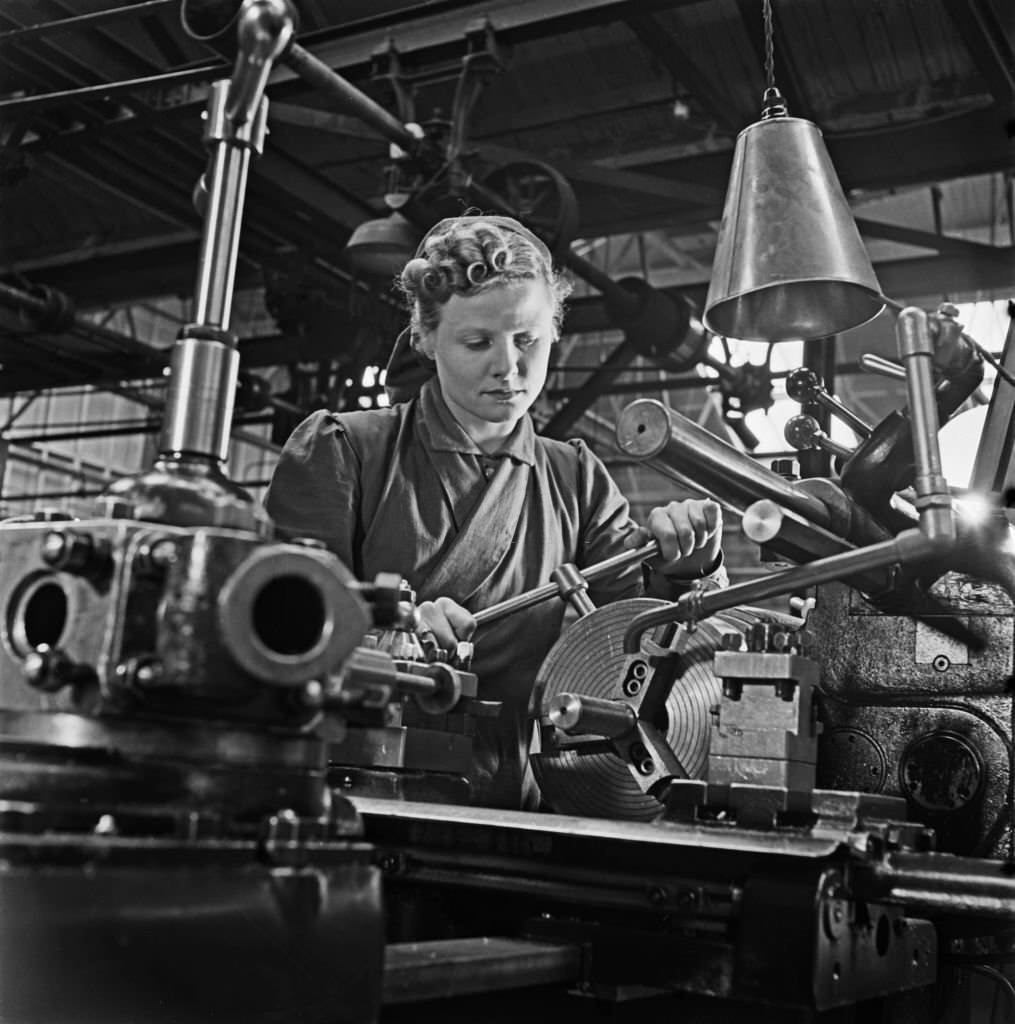Historically, women have worked outside the home, but never with the impact or numbers they did during World War II. Before the war, many women who did work belonged to the lower classes, often minorities. The attitudes towards women in the workforce varied considerably. Many believed they should only have jobs men didn’t want, while others thought they should give up their jobs so unemployed men could find work. Still, others believed that women from the middle class or above should never lower themselves to work.
Over 7,000,000 British women worked in munitions factories during World War II, making weapons like shells and bullets. Britain women also worked hard during World War I. From 1941 onward, women worked as mechanics, engineers, munitions workers, air raid wardens, bus drivers, and fire engine drivers. While most military works was well paid, it often required a lot of overtime, often up to seven days a week. Workers were also at serious risk of accidents when working with dangerous machinery or highly explosive materials. Some workers handled toxic chemicals daily. The canary girls were nicknamed because their skin was yellow after handling sulphur. Land girls were women who worked on farms. They had to live on the farms where they were sent to work.
The war began with only single women between the ages of 20 and 30 being called up, but by mid-1943, almost 90% of single women and 80% of married women were employed in factories, on the land, or in the armed forces. British Prime Minister Churchill recruited around 60 women for the Special Operations Executive (SOE) “to set Europe ablaze”. A ‘secret army’ of resistance fighters was formed behind enemy lines using parachutes or fishing boats to help prepare the way for the Allied invasion. After the war, the trade unions again worried about the impact on men’s wages as they would work in these jobs once again. Nevertheless, the government’s top priority was recruiting workers for the war effort and the service industries. Women were allowed equal pay for work performed ‘without assistance or supervision when they performed the same job as men. Employers effectively circumvented the issue of equal pay, and women’s income remained, on average, 53% higher than that of the men they replaced. Unskilled and semi-skilled jobs were excluded from the equal pay negotiation process because they were designated ‘women’s careers.
Here are some historical photos of British women working during World War II.
#1 Store clerks recover hats from a display window at a fashionable shop in the center of London.
#2 Female staff at an Arms Factory somewhere in Britain, prepare for work in the factory changing area.
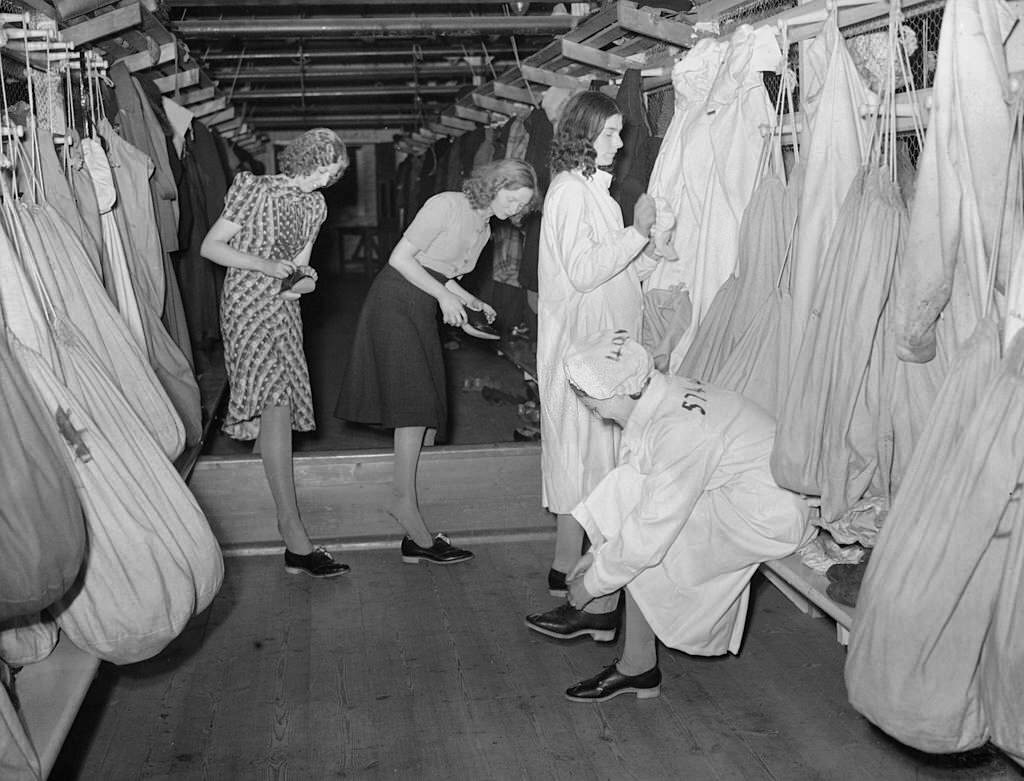
A low barrier in the floor differentiates between the 'outside world' and that of the factory. Outdoor coats, hats and shoes are left on one side of the area and the women put on special shoes, overalls and mop caps on the other side of the barrier. Here we see several women in the process of stepping over the barrier, whilst another fastens her shoes, 1940
#3 Fashion of Red Cross Nurses front English Parliament at London.
#4 Women war workers, one at a sewing machine, in a factory.
#5 Women at work at the Central Hospital Supply Service.
#6 Lady Reading using a sewing machine at the Women’s Voluntary Services headquarters during world War II.
#7 A woman using a micropeter in the manufacture of tank guns at a Royal Ordnance factory during the Second World War.
#8 British munitions workers sent at short notice from their shell filling factory in the North-East to meet an urgent demand for labour in the North-Midlands.
#9 A woman war worker adjusting the tracks on a tank.
#10 Women workers hang out tin hats which have just been spray painted, to dry, 1940.
#11 Members of the Women’s Land Army (WLA) sort and pack apples into sacks for cider making on 21st November 1939 at the Monmouthshire Institute of Agriculture at Usk in Monmouthshire, South Wales, UK.
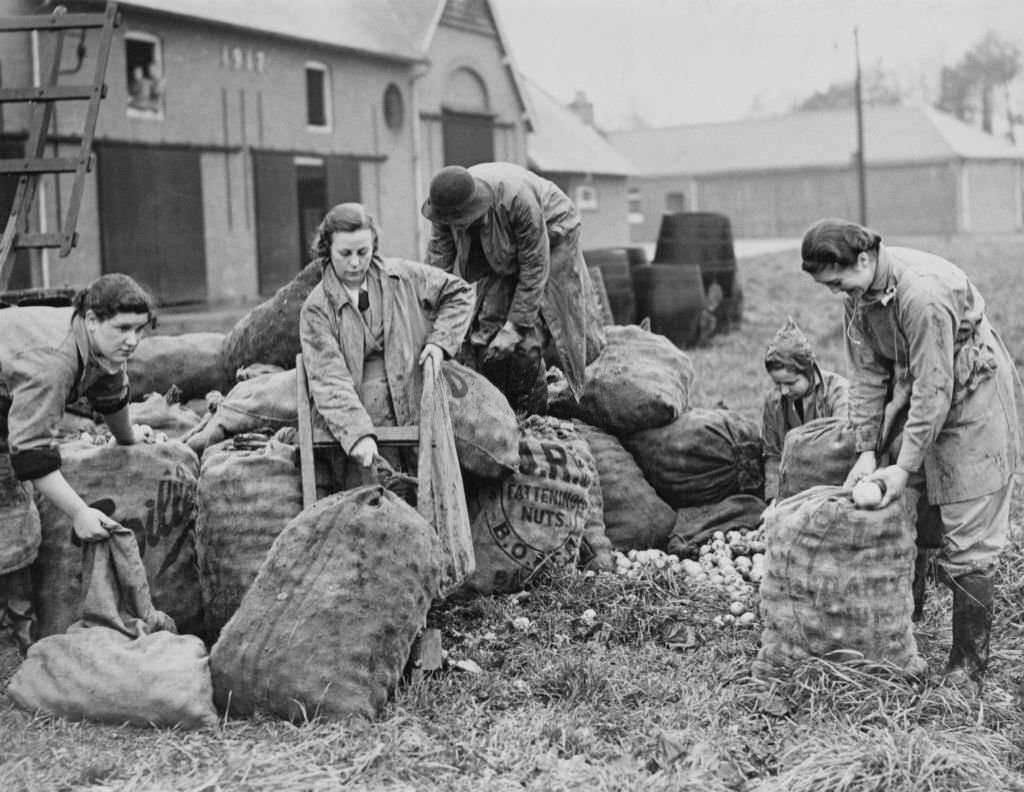
The Women's Land Army was established to meet the demand for agricultural labour caused by the absence of male farm workers on active service and the need to boost domestic food production in the face of the reduction in imports due to Germany's attacks on shipping. Over 80,000 women volunteered for the Women's Land Army.
#12 Women ambulance drivers at Blackburn doing their daily physical training exercises, 1931
#13 Workers in one of the largest optical instrument making factories in Britain, where binoculars, telescopes, photographic lenses and other scientific devices are made for the armed forces.
#14 A member of the Women’s Auxiliary Air Force working in the motor transport section greases the giant wheels of a lorry in Lancashire, 1939
#15 Members of the Women’s Land Army (WLA) at work harvesting bushels of straw and hay for animal forage at a WLA training farm on 27th October 1939 in Monmouthshire, South Wales, United Kingdom.
#16 Women at the Food Executive Office in London prepare ration books from the National Registration returns.
#17 Members of the Mechanised Transport Corps in their dormitory where they sleep with their clothes when on duty, 1940
#18 Inspecting wellingtons of Auxiliary Fire Service in Manchester, England, 1939.
#19 Members of the Women’s Land Army (WLA) stacking and protecting potatoes from frost with layers of straw during the potato harvest on 28th September 1939 on farmland in Monmouthshire, South Wales, United Kingdom.
#20 Commandant of the Women’s Mechanised Transport Training Corps (MTTC), Mrs G M Cook gives instructions to four female MTTC stretcher bearers beside an ambulance in London on 28th September 1939.
#21 Young members of the Women’s Land Army set out for a day’s work on a farm in Cheshire, 1939
#22 Women in a civil defence unit paint white squares along the kerb to facilitate night-time driving in London, 1939
#23 Many trains in Britain, called “casualty evacuation trains,” have been converted to mobile hospitals during World War II.
#24 Women Workers in a Munitions Factory, 1939
#25 British factory workers do light bench work on various components at a small arms factory during World War II.
#26 Women in Industry in Britain during the Second World War, Women welders making stirrup pump handles during the Second World War, 1939.
#27 A Women’s Auxiliary Air Force band with Drum Major, Senior Sergeant Manley, 1939
#28 The recruiting office for the Women’s Auxiliary Air Force, 1939
#29 Ambulance workers paint the street kerbs white in order to assist them to drive at night from their London depot, 1939
#30 A typical message chalked on bombs at munitions factories throughout Britain, 1939
#31 Three children and a young woman being fitted for gas masks, 1939
#32 Women with pitchforks clear the straw from a field in Wolverhampton, West Midlands, during World War II.
#33 Three women of the ATS light up together. ATS regulations forbid smoking when soldiers are wearing their hats, 1939
#34 A member of the Mechanised Transport Training Corps changes a wheel at an ARP post in Lambeth, south London.
#35 Nuns receiving fire drill instruction in the UK during World War II, 1939
#36 World War II. Harvesters driven by women in England, 1939
#37 British “Hello-girls” ready to “carry on” In case of an air-raid, England will expect every telephone operator to do her duty, 1939
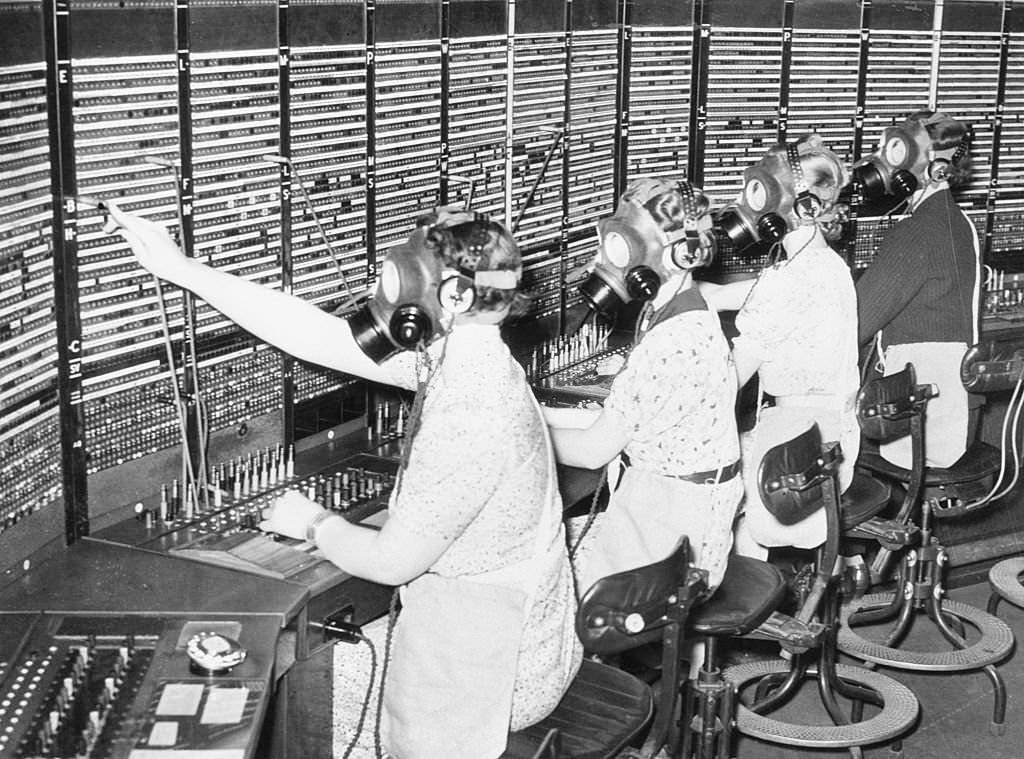
These operators at the switchboard in the inlaid trunk exchange are shown during a special training course in which they handle all calls while wearing specially-developed gas masks which are equipped with microhone devices. Dependability of the telephone system is an important factor in air raid defense and poison gas control.
#38 A group of workers at the Seibe Gorman factory in London modelling the company’s gas masks which are being produced in preparation for gas attacks, 1938.
#39 Women serving children meals in communal kitchens.
#40 Women enlisting for war work.
#41 The Duchess pf Westminster With Nurses
#42 Miss Parker, a member of the Auxiliary Territorial Service, on duty as an enemy aircraft spotter near London, 1943.
#43 British Women Wear Ww II Army Uniforms
#44 Three cleaners, nicknamed the Three Musketeers, who are employed to clean and maintain locomotives at the London and North Eastern Railway yard, Northern England, June 1941.
#45 A woman heating a rivet on a ship under construction. Women have entered previously male job fields in England during wartime, specifically shipbuilding.
#46 Land army girls helping a charcoal burner in the West Country, 1940.
#47 Members of the A.T.S (Auxiliary Territorial Service) pour tea at the canteen of the Vehicle Reserve Depot, July 1943.
#48 Women’s Auxiliary Air Force (WAAF) – Female mechanics in training. A group of women in overalls study the construction of a radial dial engine.
#49 Women’s Auxiliary Air Force (WAAF) – A nurse takes a bottle from a medicine cabinet.
#50 British Womens Auxiliary Air Force. Women repairing plane fabric. Female auxiliary division of Royal Air Force.
#51 British Womens Auxiliary Air Force. Woman repairing electical engine speed indicators. Female auxiliary division of Royal Air Force. British postcard series, No. 11.
#52 World War two Home front in Britain: Fordson tractor with members of British Women’s Land Army, 1940s.
#53 Women Road Painters, 1941. Women doing men’s jobs, painting the kerb white so it can be seen during the blackout in World War Two.
#54 Ford Factory Women Workers during World War II.
#55 A member of the WRNS (Women’s Royal Naval Service), the women’s branch of the Royal Navy, changing the tyre of a car during her tour of duty on the ‘HMS Daedalus’ during World War II, UK, March 1941.
#56 Women at work cleaning the inside of a London Underground train during World War II, 20th February 1941.
#57 A group of women war workers on parade at a London Underground depot before starting work cleaning carriages, 17th February 1941.
#58 Women marking the pattern of uniforms onto material with chalk in preparation for the cutting stage of the process. Nine hundred miles of khaki serge produces 5,000,000 battle suits and 6,000,000 pairs of trousers.
#59 January 1941: Women factory workers during World War II.
#60 A small baby doll causes some amusement amongst the nurses as they taken a few minutes off in their comfortable rest room at the St. Charles’s Training Centre in London, England, World War II, December 1941.
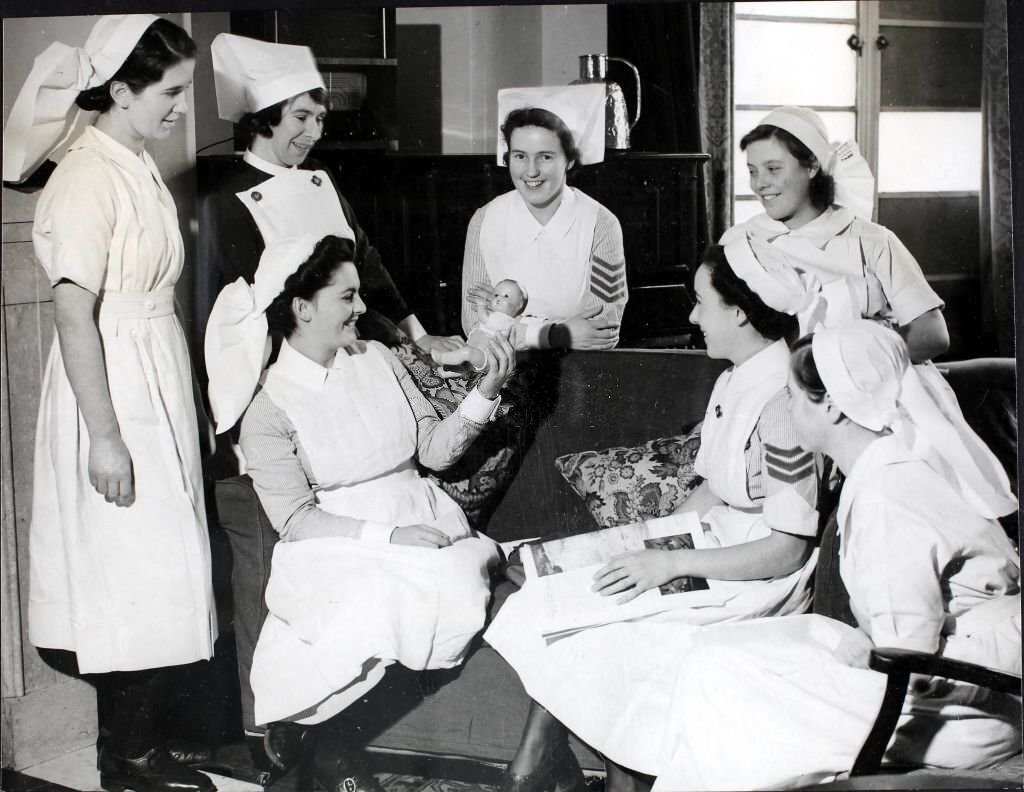
Britain needs at least 10,000 nurses to bring hospital staff up to adequate strength; the profession has been included in a short list of essential national services from which women may not be taken for work in other spheres and the Ministry of Health is co-operating with the Ministry of Labour to stimulate recruiting for this all important sphere of work.
#61 Members of the Women’s Royal Naval Service, nicknamed Wrens, train in marksmanship at a rifle range during WWII.
#62 A woman factory worker makes canisters filled with smoke known as the “Wessex” Daylight Smoke Signals for use as distress flares on ships, 1941.
#63 Women workers in a munitions factory drinking milk during their break, 1941.
#64 Munition workers at a RAF munition factory fit the components to bombs.
#65 Great Britain, Members of the Womens Land Army receiving instruction on varied forms of farm work in Somerset at the Agriculture Institute.
#66 One of many women taking up farming jobs during the war. Miss Marshall collects eggs from chickens in Worcestershire, 1941.
#67 British women being trained at a munitions factory during World War II.
#68 A woman hoisting a shell at a munitions factory during World War II.
#69 A woman war worker operating industrial machinery, 1941
#70 Land girls enjoying their midday meal beside a Kent wheat field, 1941
#71 Women prepare care packages of chocolate, tobacco, cigarette papers, toothpaste, razor blades, and soaps for British troops, all gifts from the South Australian Fighting Forces Comfort Fund.
#72 Women, many wearing headscarves, use files to deburr metal held in vices in a metalworking class at the Westminster Institute in London during World War II, 28th November 1940.
#73 Staff at work at a major London telephone exchange wearing tin helmets during an alert.
#74 Members of the Women’s Land Army (WLA) at work forking sugar beet harvest ready for transportation to a sugar processing plant on 14th October 1940 on farmland in Lincolnshire, England.
#75 Women from the Duchy of Cornwall Estate in South London knit socks with wool bought from the proceeds of their children’s salvage efforts.
#76 The first women bus conductors all wearing their uniforms and holding equipment as they walk to their buses at a London transport depot during World War Two
#77 A village ‘jam depot’ organised by the Women’s Institute on behalf of the government to use up all excess home grown fruit, 1941
#78 Women workers stack ammunition shells at a factory in Woolwich, London, 1940
#79 Two new members of the Women’s Land Army (WLA), later to become the Women’s Timber Corps, pictured operating a sharpening stone to sharpen axes in a wood in England during World War II on 2nd January 1940.
#80 British Army’s Women’s Transport Service (FANY) being instructed in the working of an internal combustion engine during a mechanics class by a section leader at an army establishment in England in January 1940.
#81 London Women With Their Notebooks, on which are listed and deducted their Food Rations, in a Bakery on Petticoat Lane On July 21, 1946.
#82 Members of the Women Land Army (WLA) at work on a farm in Hertfordshire, England after the Second World War, June 1946.
#83 Two women at work in a basket factory making specially designed panniers for Britain’s invasion armies.
#84 Princess Elizabeth (now Queen Elizabeth II) driving an ambulance during her wartime service in the A.T.S. (Auxiliary Territorial Service), 10th April 1945.
#85 Testing beacon light bulbs at the Lemington Glass Works Ltd, Lemington, Newcastle upon Tyne, Tyne and Wear. 25th January 1945.
#86 Works photograph of female employee transferring a 6 inch shell from the bench to a bore fuse hole machine, Female employee transferring a 6 inch shell from the bench to a bore fuse hole machine.
#87 female employee loading a 6in. shell onto the finish turning machine
#88 Land Settlement Association Tenants, 1944
#89 Women’s Land Army
#90 Women firefighters exercise on the roof of their headquarters in Walthamstow, 1944.
#91 Women workers peeling thousands of onions that will eventually be pickled in jars destined for household dinner tables, 1944
#92 Women Mending Fishing Nets, 1943
#93 Preparing jam in Kent to preserve as much fruit as possible for the winter. Over 5,000 lbs of jam has already been made by the Women’s Institute in Mereworth, Kent, 1944
#94 Women of the South Eastern Command of the ATS (Auxiliary Territorial Services) help local English farmers weed their onions, 1943
#95 An American locomotive, one of the first batch to arrive in the United Kingdom for many years, being cleaned by women.
#96 A female employee posed with strips of freshly stamped out steel razor blades yet to be being hardened, sharpened and cut at a Gillette razor blade factory in England during World War II on 12th April 1943.
#97 Recycling for the War Effort, 1943
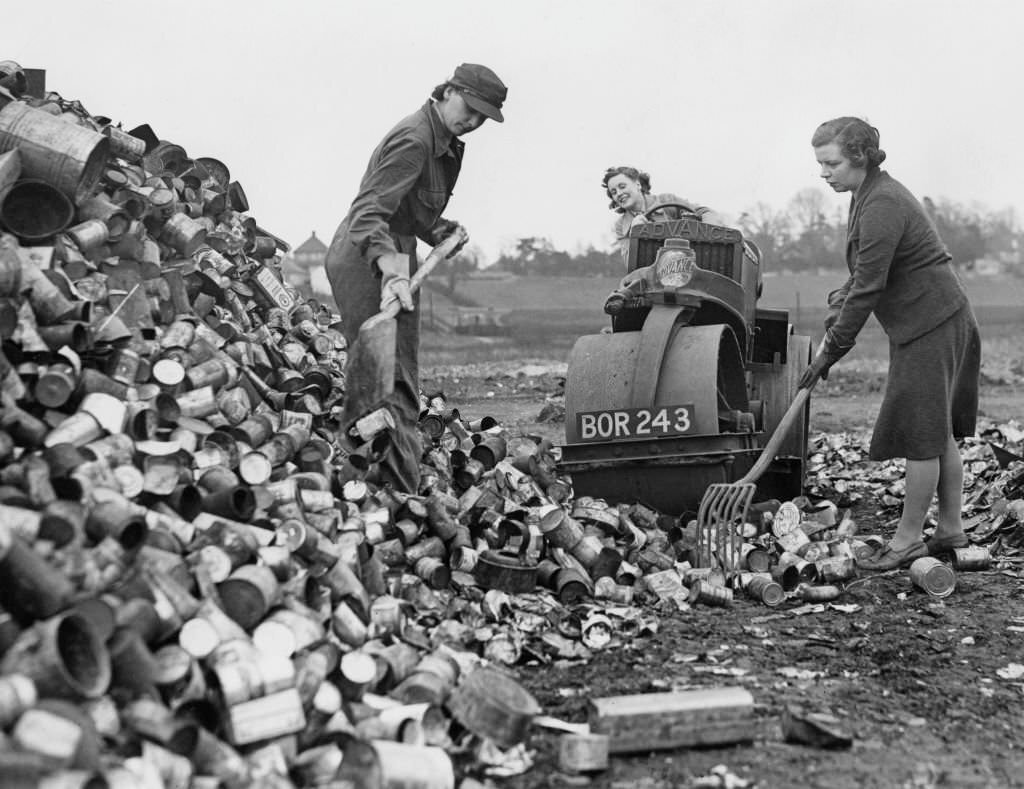
Female employees from the Ministry of Works use a Wallis & Steevens 'Advance' brand diesel engined road roller to crush and flatten scrap tin cans to be used in the National Salvage Campaign for the recycling of metal materials for the war effort on 2nd April 1943 at a Council scrapyard in Hertfordshire, England.
#98 Women’s Timber Corps (WTC)
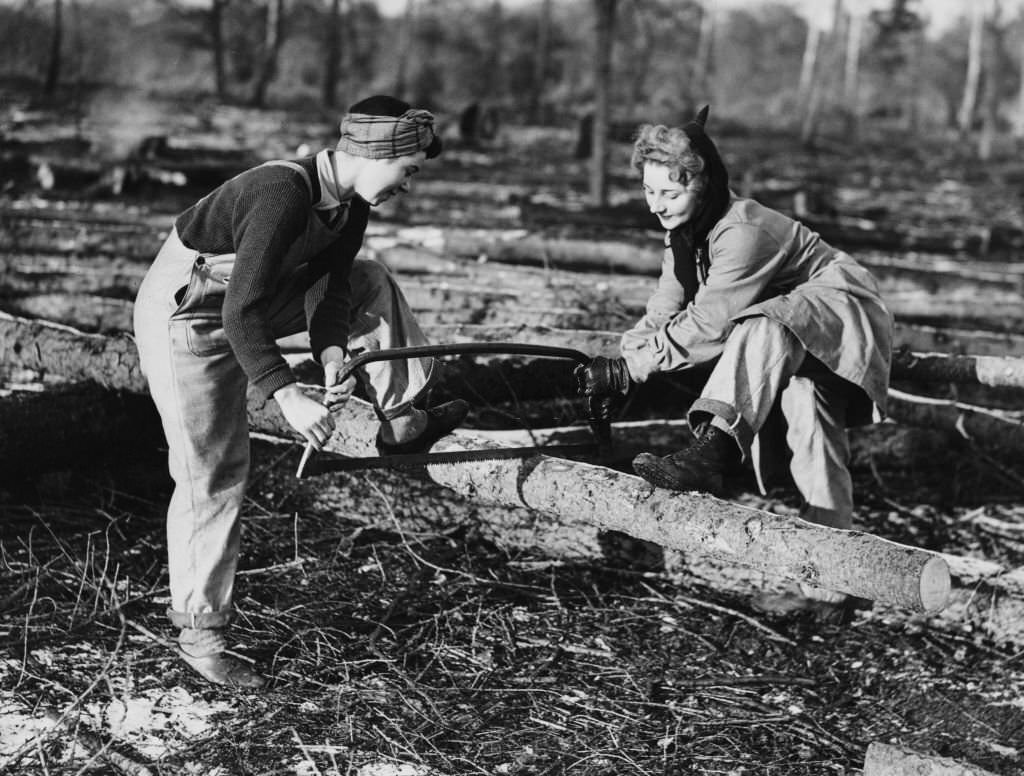
D Haywood and P Phillips, members of the Women's Timber Corps (WTC) of the Women's Land Army at work sawing logs during a training course on 8th January 1943 at Bury St. Edmonds in Suffolk, United Kingdom. The Women's Timber Corps was a separate branch of the Women's Land Army and was formed in 1942 initially due to the German occupation of Norway causing a shortage of imported timber. Known as Lumber Jills, nearly 13,000 women volunteered for the Women's Timber Corps during World War II.
#99 Balloon Fabric Workers, 1943
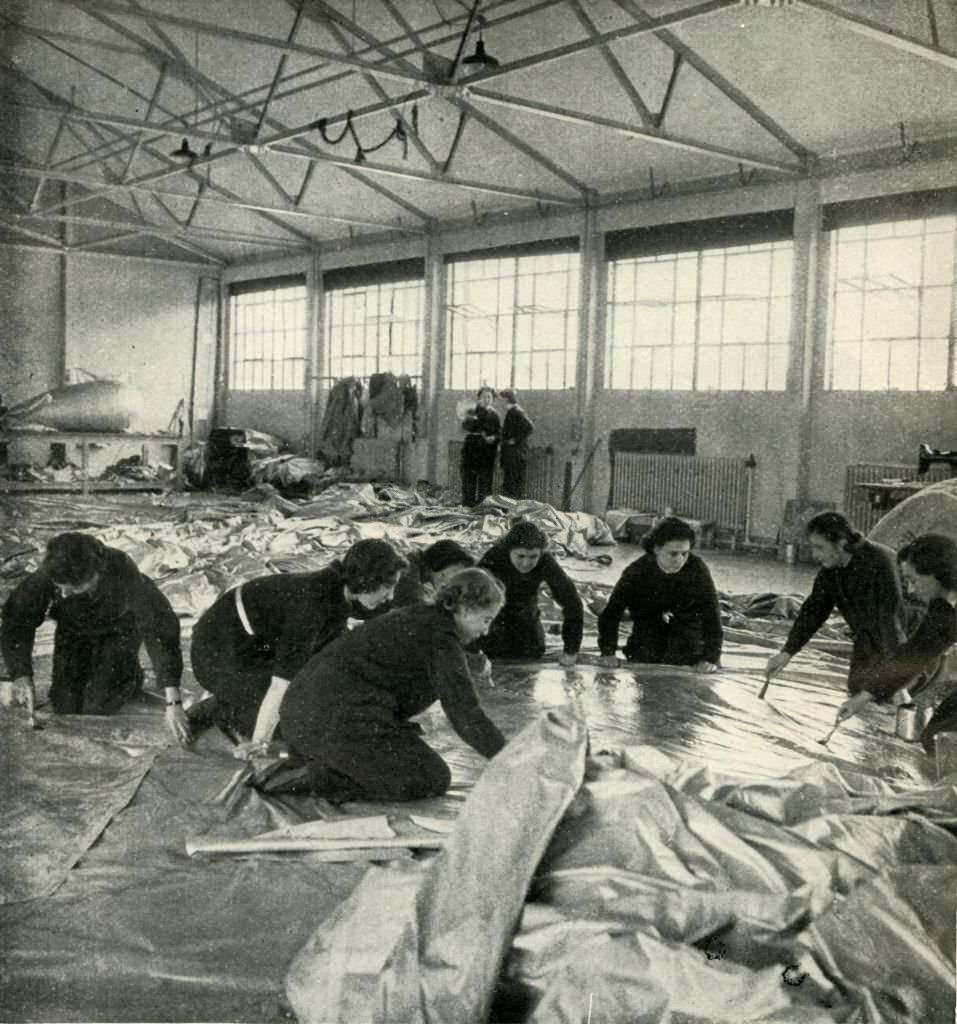
The Women's Auxiliary Air Force (WAAF), whose members were referred to as 'WAAFs', was the female auxiliary of the British Royal Air Force during World War II. Its members did not serve as aircrew, but although they did not participate in active combat, they were exposed to the same dangers as any on the home front working at military installations. Among their duties were: crewing of barrage balloons, catering, meteorology, radar, aircraft maintenance, transport, communications duties including wireless telephonic and telegraphic operation. At its peak strength, in 1943, the number of WAAFs (members of the force) exceeded 180,000, with over 2,000 women enlisting per week.
#100 World War Two Rationing in Britain During the World War II
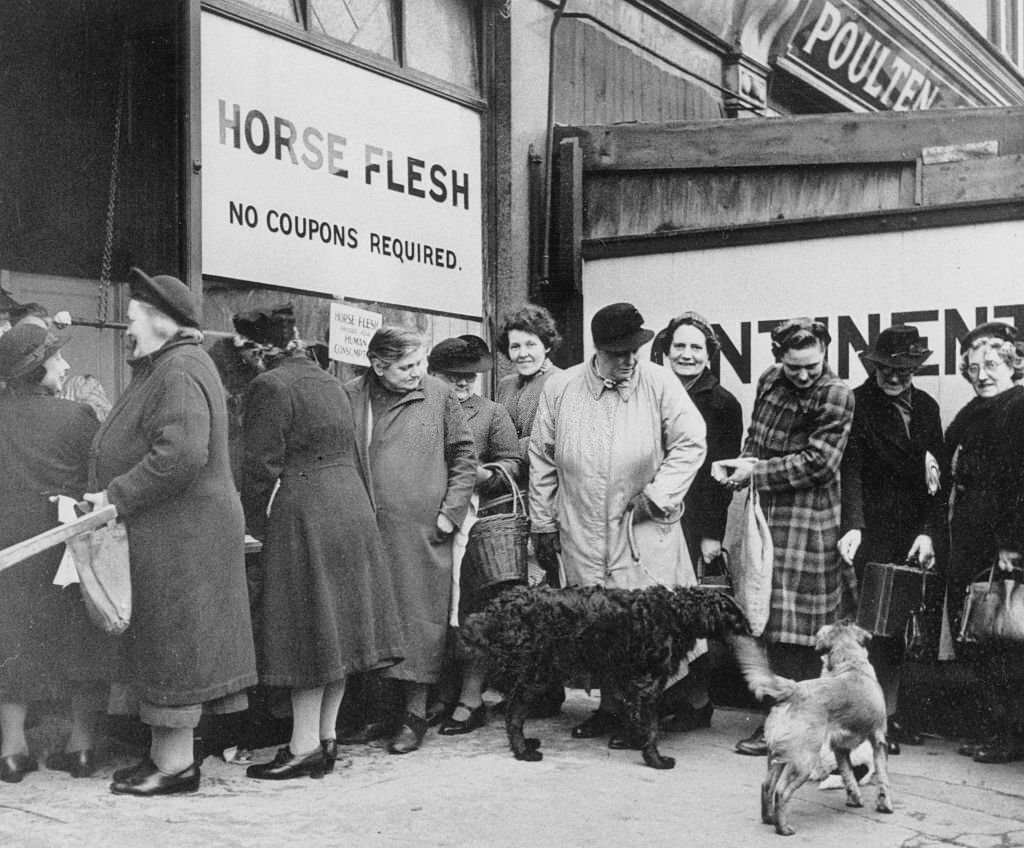
Supplies started to become short and some items impossible to obtain, especially imported goods such as tea, bananas, oranges, and grapes. It was to be six or seven years before any of those fruits were seen again. Then butter, lard, sweets, cakes, flour and sugar became hard to get too, followed by meat and fish. Our Picture Shows: Women queuing for horse meat, which was not on ration during the war.
#101 Kathleen Kennedy later Kathleen Cavendish, Marchioness of Hartington, whilst working for the American Red Cross in London, 1943.
#102 Cecil Beaton Photographs: Women’s Horticultural College, Waterperry House, Oxfordshire, 1943
#103 Cecil Beaton Photographs: Women’s Horticultural College, Waterperry House, Oxfordshire, 1943
#104 Cecil Beaton Photographs: Women’s Horticultural College, Waterperry House, Oxfordshire, 1943
#105 Miss M Greatorex machines spring cases for 17-pounder guns, 1943.
#106 Female workers, including a number wearing dungaree overalls, construct and assemble the fin of a barrage balloon in a factory hanger in England during World War II on 2nd December 1942.
#107 Female factory workers assemble parts, possibly the reduction gear, for Rolls-Royce Merlin V-12 piston aero engines at the Hillington Rolls-Royce aero engine factory in Glasgow, Scotland on 30th November 1942.
#108 A female factory worker polishes completed crankshafts for fitting in Rolls-Royce Merlin V-12 piston aero engines at the Hillington Rolls-Royce aero engine factory in Glasgow, Scotland on 30th November 1942.
#109 Shop assistants from Boots the Chemist hoeing and weeding a field of mangold (mangel).
#110 Wartime Meat Pie Delivery.
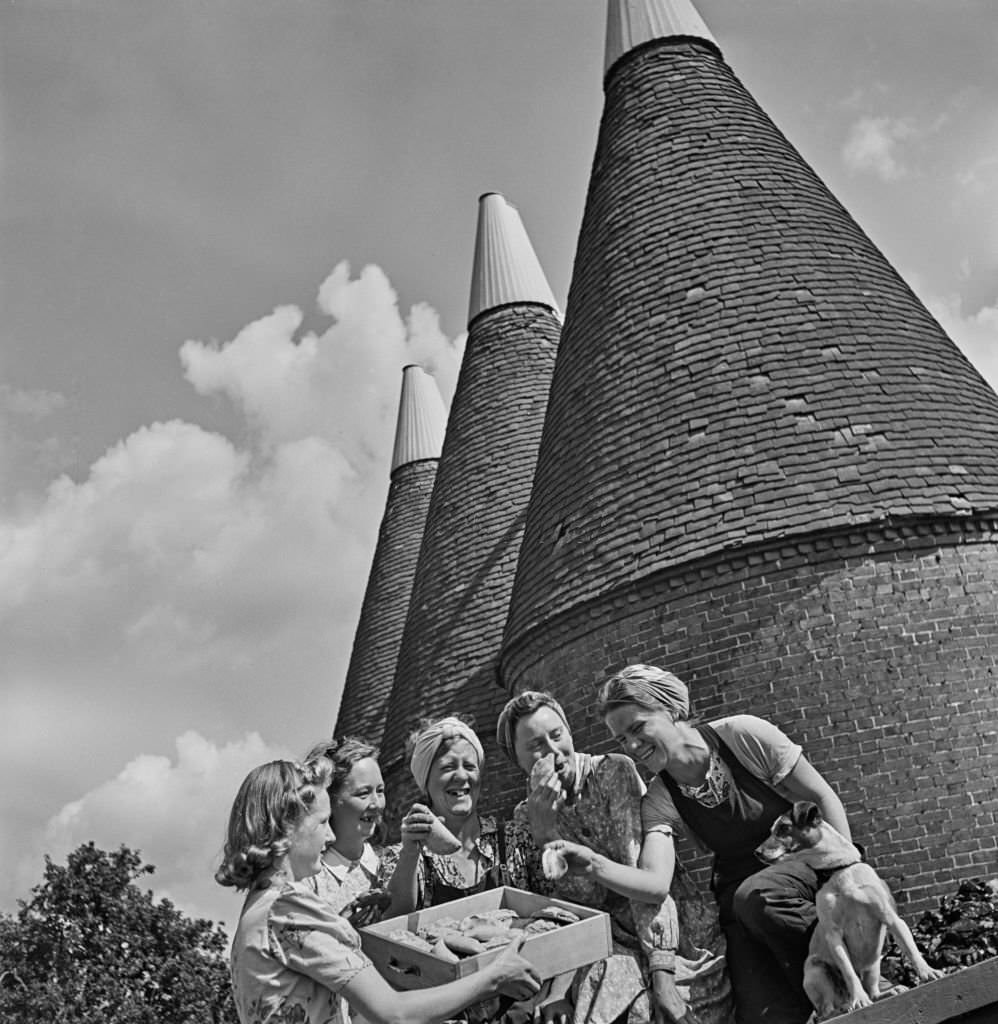
Miss Mary Smith, a Women's Voluntary Service (WVS) member, hands out meat pasties to four Women's Land Army (WLA) agricultural workers at Bank Farm near Tonbridge in Kent, England during World War II on 12th September 1942. The Ministry of Food has recetly made available a special allowance of meat for distribution to country districts to be made in to pies for consumption by workers busy harvesting in the field.
#111 Recruits of the Women’s Land Army prepare for ploughing at Hanley Brook, Upton On Severn, Worcestershire during the Second World War, 11th September 1942.
#112 Smoke stack chimneys of the London Brick Company form the backdrop to two women war workers stacking new bricks for the construction industry and the war effort on 1st September 1942 at Stewartby in Bedfordshire, United Kingdom.
#113 Women gathering in the rye harvest in East Suffolk, since the wartime announcement that the crop may now be used in Britain’s bread, 11th August 1942.
#114 A “Ditching” party of Women of the Volunteer Land Corps at work digging a deep drainage ditch in the fields at Cheshunt
#115 The seven Mills sisters work side by side at a munitions factory in Enfield during World War II. From left to right, they are Kitty, Beryl, Irene, Marjorie, Doris, Phyllis and Violet, 1942
#116 Two members of the Women’s Timber Corps do their bit for the war effort by carrying a felled log through the lumber camp at Bury St Edmunds, Suffolk.
#117 Women of the Women’s Land Army using a baling machine to bale hay on a farm in West Suffolk, 1942
#118 Three members of the Women’s Land Army (WLA) at work ploughing furrows in the earth behind a tractor on 16th May 1942 at Hewens Wood farm in Bradfield, Berkshire, United Kingdom.
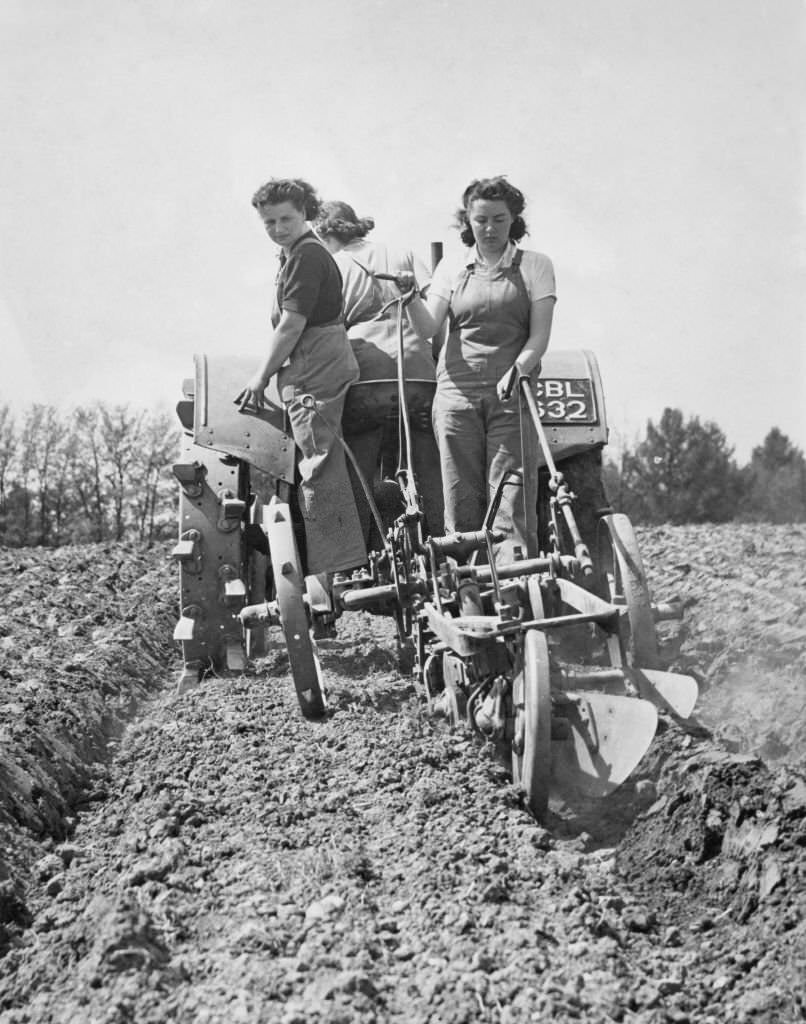
The Women's Land Army was established to meet the demand for agricultural labour caused by the absence of male farm workers on active service and the need to boost domestic food production in the face of the reduction in imports due to Germany's attacks on shipping. Over 80,000 women volunteered for the Women's Land Army.


